

Our 3 months in South America Itinerary
Our first big trip together, besides a couple of weekends away, was to South America. We planned our 3 month South America travel route together, something I’d been wanting to do for years but was saving until after graduation.
If you’re hoping to spend some time backpacking South America, I’ve put together our South America itinerary for 3 months below.
It was such a fun backpacking South America route and I can remember it so vividly; a sign of a great trip I think!
We travelled South America as a couple – our first backpacking trip – and now we’re married so I think things worked out pretty well, wouldn’t you agree?
We visited Peru, Bolivia, Brazil, Argentina, Uruguay, Paraguay (well, we got the stamp!), Ecuador and the Galapagos Islands . We had an amazing time and have since then taken other big trips together including a 3-month cross-USA road trip route in our self-converted campervan, and have moved to Canada.
Our South America travels are perfect for first-time backpackers to South America hoping to see the main bucket list South America sites but also do some unique activities too.
Whilst I wouldn’t change much of our South American itinerary, I’d look to add Colombia to the end of our trip. Before we went to South America I’d not heard much about this country (& what I had heard wasn’t exactly positive).
However, once we landed in Peru many of the backpackers we met told us how much fun they’d had there. Just an excuse for us to go back, hey?
Table of Contents

Our South America Travel Route – A 3-month South American Itinerary
When you start planning your South America trip and looking up how long it takes to get between places, you’ll quickly notice just how MASSIVE South America is. After all, it is a continent and each of the countries within that continent is pretty big!
Deciding on where to go, which country to start in, and how to get from place to place can be a tricky task. You’re probably going to want to do everything but in most cases, time and money (let’s be real) won’t allow for absolutely everything.
That’s the situation we were in. Though we’d graduated and were doing some part-time jobs to save up for our trip, our overall budget was pretty modest. It was also the first time either of us had done such a long trip. My longest before then was a month spent visiting Australia’s East Coast.
This South America travel blog post will help you decide where to go and how to get there, what to do and give you an idea of how much money you’ll need. If you’ve still got questions, feel free to leave them in the comments at the end and I’ll get back to you!
Have you got travel insurance? I’ve been using SafetyWing for a while and it’s incredibly easy, affordable and overall hassle-free! Make sure you check them out before your trip (or after, you can subscribe even if the trip has already started!). They offer subscription-based travel insurance which is great for digital nomads. It allows you to claim medical expenses, and you can add travel coverage to cover your for lost or stolen belongings or additional expenses due to delayed travel.
3 month South America itinerary
This South America backpacking route starts in Lima, Peru. Peru was our favourite country in our whole South America trip. The food was great, the people were friendly, the country has everything from beaches to mountains, rainforest to deserts AND it was one of the cheaper countries too.
We’ll then head from Peru down into Bolivia, across to Brazil, into Argentina and down to Uruguay then back into Argentina, across to Peru and north to Ecuador and the Galapagos Islands.
I’ve linked to other South America travel guides where relevant so you can find more information about some of the most popular destinations to visit in South America.
A South America map of our travel route and the places we visited. Click the image to view the interactive map which you can save to your phone!

Here are the places we visited in Peru and some links to more detailed posts about them. Make sure to add these activities to your Peru bucket list for your South America travel route!
Lima is the capital of Peru and sits on the coast. It’s full of beautiful buildings and has plenty of museums to explore too so that you can get to know more about the fascinating ancient history of Peru.
The best area to stay in Lima is Miraflores which is the more touristy area, but also the safest and one with the most restaurants and things to do.
Some of the best things to do in Lima, Peru are:
- Swim with Sea Lions in the Pacific Ocean
- Take a Peruvian food tour
- Experience the Lima Magic Lights Circuit & the Catacombs
A few hours down the coast from Lima is Paracas. Paracas is often called ‘the poor man’s Galapagos’ as it’s a great place to do some nature watching.
It’s home to blue-footed boobies (a type of bird) and many more animals that are best viewed by taking a boat ride out to the islands.
The boat rides out to the islands are the best things to do in Paracas by far. If you’re not planning on visiting the Galapagos I’d recommend taking a boat tour.
Boot a boat tour in Paracas.
Not a city or really even much of a town, but a VERY fun place to spend a day or two. Huacachina is super popular with backpackers in South America due to the sand dunes which surround the little oasis that is Huacachina.
Here you can go sandboarding , or take a dune buggy ride both of which I recommend!
Book a sunset sandboarding and dune buggy tour
You may have heard of the Nazca lines before, if you’re taking PeruHop you’ll stop off here and have the chance to climb a tower to view these mysterious lines from above.
However, the only true way to see them is by taking a flight above them which is pretty expensive for backpackers. Having said that it’s definitely the only way to really see them, the tower doesn’t offer you much in the way of views of the Nazca Lines.
Book a Nazca Lines flight
Honestly, I’d save your money for something else and wouldn’t make a special trip to stop here unless you were nearby.
Arequipa is a city with beautiful architecture and a place to stop off at if you wish to visit the Colca Canyon.
Colca Canyon
One of the world’s deepest canyons, the Colca Canyon is a well-known trekking destination. It’s a habitat for the giant Andean condor which is the largest flying bird in the world!
Book a Colca Canyon trip
Cusco is one of the most popular stops for travellers to South America as it’s the gateway to Machu Picchu. This town is at 3,339m above sea level so it’s a good idea to spend the best part of a week here to acclimatise to the altitude before heading off to Machu Picchu.
If you didn’t book a trekking South America tour in advance you may be able to find a last-minute opening by walking around the tourist companies.
Otherwise, you can take trips to the Lost City, or head up to Sacsayhuaman (pronounced “sexy woman”) another Inca city within walkable distance from Cusco centre.
Another cool thing to do in Cusco is a day trip to Rainbow Mountain . This wasn’t an option when we visited back in 2014, but it’s now one of the best things to do in Cusco.
Book a trip to Rainbow Mountain here.
The Humantay Lake trip is also really special. You’ll head out to a beautiful alpine lake similar to those found in Canada in terms of colour!
Visit Humantay Lake on this guided tour.
Machu Picchu & Aguas Calientes
Whether you hike or get the bus or train, Machu Picchu is an absolute MUST-see in Peru. This famous Lost City of the Incas is absolutely stunning.
It’s one of those places that lives up to your expectations, even when your expectations are ridiculously high. We took the Salkantay trek to get there.
However, you can also take day trips to Machu Picchu from Cusco with return transport if you don’t want, or don’t have the time, to hike.
Read more about how to get to Machu Picchu.
Lake Titicaca & Puno
From Cusco, we headed to Lake Titicaca and the town of Puno. There’s not a whole lot to see in Puno, it’s basically where people stay the night before getting an early bus to Bolivia or north into Peru.
Lake Titicaca , however, is worth seeing. This high-altitude lake is home to a community that makes their houses and the islands they live on out of reeds.
Find out more about Lake Titicaca.
Once we flew from Buenos Aires back to Lima, we headed north up the coast to Mancora. This beach town was entirely unexpected by us during our backpacking South America trip.
I never realised Peru has such beautiful beaches! Pocitas Beach just outside the town was our favourite.
While this town has grown hugely in popularity, we loved spending a relaxing week at the beach, drinking Mancora milkshakes and relaxing.
Iquitos & the Amazon Rainforest
From Mancora, we took the long route to Iquitos in the Amazon rainforest (and went piranha fishing in the Amazon !). Most visitors to Iquitos fly there from Lima, but we floated down the Amazon river on a cargo ship and this is perhaps one of the most memorable experiences of our entire trip.
The boat to Iquitos is one adventure I think about often (even though it’s been almost 10 years since then!)
Sure, it took a long time but it was such a cool thing to do.

Bolivia was our least favourite country during our backpack in South America. Probably because we both got very ill. But, it was by far the cheapest (a 3-course meal for £3!) and we still had some very cool experiences here.
Many people love exploring the wild landscapes of Bolivia and the colourful cities.
If you’re travelling from Peru, Copacabana is the first town you’ll get to as it’s right across the border. There’s not a whole lot to do here other than wait for the next bus out.
La Paz is one of the highest-altitude capital cities in the world and it’s a bustling city. There are tonnes of street markets (including the Witches’ Market) which are fun to explore.
It’s home to super cheap lunch menus (look for “menu del dia”) and nowadays there’s a cable car that will take you to the top of the mountain walls that surround the city.
You can also get tours from La Paz to cycle down Death Road . Less scary these days than it used to be, but still an exhilarating experience you’ll cycle down this notoriously dangerous road on (pretty old) mountain bikes.
There’s now a cable car in La Paz and this tour of the city includes a cable car trip which is such a unique way to view this incredible city.
Salar de Uyuni
The largest salt flat in the world, and one of the top places to visit for any Bolivia backpacker, the Salar de Uyuni is an amazing place.
The best way to visit is to book a tour. You can book one that drops you off in Northern Chile if that’s your next stop, or you can book a circular route.
Check out this guide to the best salt flats tours including how to see the salt flats at sunset!

From Bolivia, we worked our way across land via Santa Cruz in Bolivia to Corumba in Brazil to Campo Grande and the Pantals (a wetland home to jaguars and many, many species of wildlife) and then to the Brazilian coast and inwards again to Iguassu Falls.
The Pantanals
The Pantanals were an unexpected surprise. We hadn’t planned to go here but had a great few days chilling out and taking trips out to see wildlife.
Iguassu Falls
Amazing waterfalls and the meeting point of three countries (Argentina, Brazil and Paraguay).
Though we enjoyed visiting from the Brazilian side the most, it’s worth visiting from both the Brazilian and Argentinan sides to get the full experience.
On the Brazilian side, you can do a super fun (and wet) boat tour to get closer to the falls.
Book your ticket to Iguassu Falls with a boat ride here.
Also, if you’re looking to get another stamp in your passport, you can cross the bridge into Paraguay from the Brazilian side (just don’t do it after dark as it can be quite dangerous!).
We loved visiting Ilhabela. It was our first ever Airbnb experience and our hosts took us with them to their friends to watch Brazil play in the World Cup, to a local school fundraiser and for ice cream. It was such a nice way to get to know the island.
Ilha Grande
Ilha Grande is a small island (don’t let the name fool you), that’s home to beautiful beaches and forest. Take walks, swim and hang out in a hammock. There are no cars on the island here making it even more chilled out!
This beautiful town is extremely photogenic and has plenty of beaches and islands to explore.
You can also book a boat from here to Ilha Grande in advance of your trip.
A huge Brazilian city, Sao Paulo is full of skyscrapers and museums. There are also cool places like Batman Alley to explore too.
Take a tour with a local to see the main sights.
Rio de Janeiro
You’ve definitely heard of Rio before and you can’t go backpacking to South America without visiting Rio! Honestly, it’s a must on anyone’s 3 month South America itinerary route!
This party city has plenty to see and do including Christ the Redeemer ; the giant statue of Christ that looks over the city.
This 6-stop highlight tour of Rio is a great way to experience the city.

Though it was cold and very wet during our visit, I enjoyed exploring Uruguay a little. It was a country I’d never really heard much about but thoroughly enjoyed. To get to Argentina we took the ferry from Montevideo to Buenos Aires.
The capital of Uruguay, Montevideo , is home to over a 1/3 of the country’s population. This coastal city is home to the 10-mile Rambla, a walkway between the beach and the city, and some great food markets too.
Be sure to take a tour of Punte del Este while in Montevideo which is full of beauty and luxurious housing.
If you’re travelling around South America and looking for something different, check out Montevideo. It was a pleasant stop on our South America itinerary 3 months plan.
Tacuarembó – Cowboy camp
Another of our more unique backpacking experiences in South America was spending time on a cowboy ranch . We rode horses, saw armadillos and skunks and had a great time despite the pouring rain!
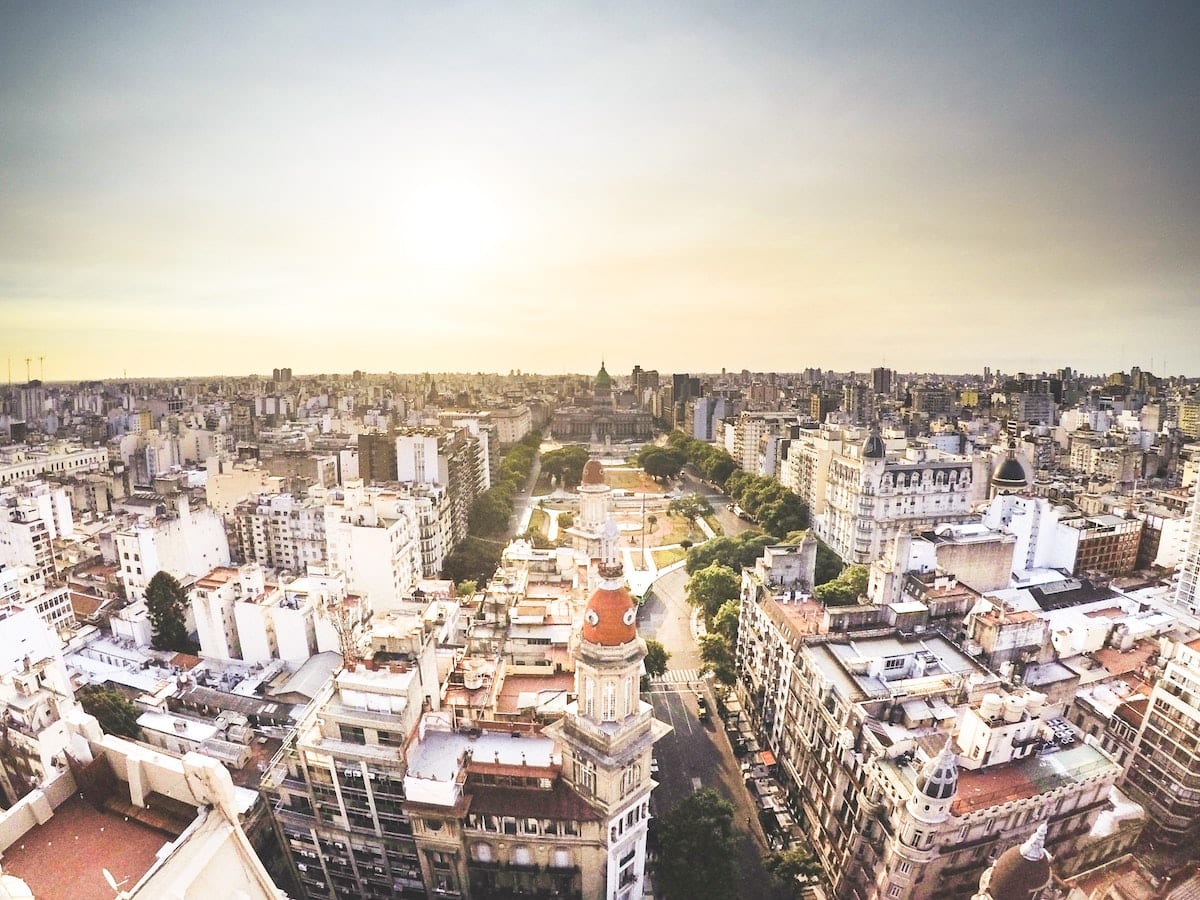
Our first steps in Argentina were at Iguassu Falls where we viewed the falls from the Argentinan side . This was one of the big things we wanted to tick off during our 3 month itinerary in South America.
We then skirted down the eastern side of the country all the way to Uruguay before crossing back into Argentina from Uruguay and spending a few days in Buenos Aires.
If you have more time, consider visiting Mendoza and Argentina wine country.
Buenos Aires
Buenos Aires is a beautiful city. Though it’s probably the most expensive one on this South American backpacker route, it’s still worth visiting.
It’s a great city to add to your South America trip itinerary.
Some of the best things to do in Buenos Aires include:
- Enjoying dinner with a tango show
- Taking a guided tour of the city

From Argentina, our South America trip planner saw us fly back to Lima, go north to Iquitos then fly to Quito.
We didn’t spend a huge amount of time in Ecuador; just a couple of days in Quito and then off to the Galapagos Islands where we stayed for a week.
I’ve listed a couple of other Ecuador destinations that are popular with backpackers and worth visiting if you have space in your South America 3 month itinerary.
The capital city of Ecuador, near Quito, is where you can find the equator at Mitad del Mundo , explore historic buildings and take the teleferico (cable car) up to the high point of the city.
Cotopaxi National Park, Ecuador
This beautiful national park is home to the 5,900 m high volcano, Cotopaxi. If you’re a keen hiker taking a tour of the volcano is well worth adding to your 3 months South America itinerary.
Baños
A popular backpacking town, Baños is famous for its beautiful natural surroundings, the swing on the edge of a cliff and for being a base for outdoor adventures!
Popular Ecuadorian riverside town that is full of beautiful colonial buildings and hipster cafes.
Galapagos Islands
When travelling south America, a visit to the Galapagos Islands is definitely bucket list material.
The Galapagos Islands aren’t cheap but you can still visit the Galapagos Islands on a budget. You don’t need to book a cruise (in fact I’d advise against it), to see the wildlife.
It’s truly everywhere, and day excursions will get you out into the sea for diving and snorkelling opportunities.
Ideas for a longer backpacking route in South America
There are obviously ways to shorten the route by just visiting one of two countries from the itinerary above while travelling in South America.
You could also lengthen the route by visiting countries like Columbia and Chile, or spending more time in Argentina and Ecuador.
When we travelled to South America, Columbia was only just becoming a popular destination for backpackers and I’d love to go back one year and see what it’s like.
I’d also love to go back and explore the numerous hiking routes of Patagonia on another trip travelling South America.

How much does it cost to backpack South America?
Our south america travel budget: £3500/£4000.
Our budget for this South America travel itinerary was roughly £3500 for 3 months travel in South America including flights to and from the UK and a couple of internal flights (Brazil to Peru, Peru to Galapagos Islands). It doesn’t include the cost of travel insurance, gear or vaccinations.
This is based on staying in cheap private rooms in hostels and hotels. Hotels in South America are often cheaper than hostels if you’re splitting the cost between two since you split the price of one room rather than paying for two beds. Ie. this was the cost to travel South America on a budget.
We also opted for overnight bus journeys since that saved on the cost of hotels and we’d have to pay for the transport anyway.
It also included the cost of activities such as our Salkantay trek, day excursions during our stay on the island of Santa Cruz in the Galapagos Islands and others.
However, we’re not big drinkers, and are more than happy to save on food; either cooking for ourselves or eating cheaply when eating out.
While we were travelling we stuck to a budget of about £35 a day ($45US). Some days we spent more, some days less, but overall it was around this amount a day.
How long to spend backpacking South America?
This itinerary for South America is based on spending three months on a South America travel route. We moved pretty quickly and fit a lot into a short amount of time but it was totally worth it.
If you have longer to spend (/more money to spend!) then anywhere between 4-6 months will allow you to see places more slowly and visit additional countries such as Colombia and Chile.
To plan or not to plan?
If this is your first big trip you maybe someone (like me) who’s tempted to plan EVERYTHING.
I’d advise you not to.
Hear me out. Some places you’re going to love and want to stay longer exploring. Other places you’re going to just not gel with and want to get away from as quickly as possible. If you’ve booked 1 night in the former and 4 nights in the latter you’re not going to be happy OR you’re going to lose money on non-refundable deposits.
Having said all that some things you’re just going to have to book, or should book to have a much more relaxing backpacking trip in South America.
Things we booked before travelling to South America
We booked our flights to Lima, Peru from the UK and then left from Quito in Ecuador (via Lima) back to the UK.
We also booked our Salkantay trek to Machu Picchu . The Inca Trail was already booked up (we booked at least 3 months in advance), but I’m actually so glad we took this trek instead!
We also won tickets in the lottery for World Cup football games in Brazil which meant we had to be in Brazil by a certain point.
And, since we knew we wanted to visit the Galapagos, we booked a flight from Argentina to Peru (to get us back on the west coast after Brazil) and to the Galapagos Islands, and back from Quito.
Our itinerary was a bit back and forth, but it worked for us.
Skyscanner is what I use to find cheap flights.
The best time to go to South America
If you live in the northern hemisphere, then remember that South America’s seasons are the opposite to what you’re used to. The northern countries are best visited May-September and the southern ones from October-April.
Our trip was from May to August.
Do I need travel vaccinations for South America travel destinations?
It’s likely you will need some South America travel vaccines. The requirements change from time to time so it’s worth checking at least 3 months before you go.
The Fit For Travel website by the NHS is full of useful advice.
When we travelled we made sure to get our Yellow Fever vaccination since countries such as Brazil said they’d check your certificate at the border.
We also got Malaria tablets to take with us since we were spending time in the Amazon Rainforest.
Additionally, if you’re worried about altitude, you may want to take Diamox, or a similar drug to help mitigate the effects you can get from altitude sickness. While I took this in the Himalayas, we didn’t take it during our trip to South America.
What visas do you need to backpack South America?
If you’re from the EU, chances are you won’t need to get any visa in advance. Most countries in South America will give you a 90-day visa upon entry.
Check each country’s government travel advice pages to see what the visa requirements are before you travel to South America.
How to get around South America?
With such a big continent, how will you know how to get around? Here are the methods we used!
Buses in South America
The best way to travel South America is to get buses from place to place.
You’ll likely be spending A LOT of time on overnight buses as you backpack South America. It’s by far the cheapest and easiest way to travel across the continent and you’ll be pleased to know that the buses in South America are actually pretty luxurious. I think the longest stint we did on back-to-back buses was 26 hours!
Depending on what class seat you book, you can enjoy fully-reclining seats, meal service (like aeroplane meals) and onboard entertainment! However, I would recommend packing a blanket or plenty of warm clothes as some of the buses, especially in Bolivia and other high altitude areas, do get VERY cold overnight.
In Peru, we used PeruHop which had just started as a company a few months before we used it. It’s a bit like the Oz Experience for road tripping on Australia’s east coast.
While it is a hop on hop off bus, typically you’re travelling with the same group of people for a week or so since people move places at roughly the same speed. If this is your first extended travelling experience, I’d recommend doing Peru Hop as they’ll organise hotels for you too but it’s not a bus tour in the sense that they’re then guiding you around each of the cities and stops you make. You also have the option to book your own accommodation.
When we travelled in South America back in 2014, Peru Hop only went from Lima to Cusco but I believe they’ve expanded their service to include many other stops (& other countries too).
Buses throughout South America tend to go from one big bus station in the town or city you’re in. This station will be pretty hectic with people shouting out the name of the town their bus company is going to next.
There’ll be several different bus companies going to the same place and their prices will vary. Sometimes not by much, but sometimes by a lot. Some buses will also take longer.
At first, this experience may be a little stressful, but you’ll get the hang of it! Oh, and don’t forget to haggle, chances are you can get the price down much lower than they’ll tell you to begin with.
If you want to be more prepared, you can book buses in advance, and get an idea of the prices of the tickets, by using Busbud
Flights in South America
While you can do some internal flights as we did, they’re more expensive and honestly travelling by bus between places is actually pretty fun. You’ll meet other travellers and get to see the scenery as you drive past it.
Getting around cities in South America
You’ll likely use these three forms of transport when getting around the larger cities in South America.
Collectivos
Collectivos are likely doing Uber Pool but without the Uber app. They’re typically a standard car that will drive faster, and make less stops than a bus.
They’ll only go when they’re full, so this may mean the driver won’t leave the station for a while until they’ve drummed up enough customers to fill the car. OR, they’ll drive slow through the city shouting out the destination hoping someone will hop in.
We only used these in areas where there were no buses going where we needed to go. This was mostly in northern Peru as we tried to navigate from Mancora to Iquitos .
While some of the larger cities in South America likely have Uber now (it didn’t exist when we travelled there!), more often you’ll be using local taxi companies. Once the drivers realise you’re a foreigner they’ll likely up the price that a local would pay.
For this reason, it’s a good idea to agree on a price before you get in the taxi. Sometimes they’ll insist on using the metre but the metre will be set to a higher rate or perhaps you insist on using the metre but then they turn it off and tell you it’s not working and just make up a (usually very high) price you now need to pay.
Smaller city buses
Cities also have smaller minivan-style buses that work much like a bus system anywhere in the world. We used these city buses in Lima to get between museums and around the city. The ticket is usually a flat fee so you just need to remember where to get off.
FAQs on South America Travelling
How to travel south america.
Travelling in South America is very popular with backpackers. While it may seem daunting most backpackers visit the same cities and attractions so you’ll meet plenty of people along the way. I think it’s a great destination for backpackers looking for adventure! The information above will help you plan how to travel South America.
How long to travel South America?
Three months is a great amount of time to experience South America. In this time you can do many of the bucket list things as well as explore several countries.
How to travel around South America?
The easiest and cheapest way to travel around South America is by bus. If this is your first backpacking trip I’d recommend using a company like Peru Hop. Otherwise, you can find plenty of domestic and international long-haul bus companies in South America. They’re usually pretty comfortable with reclining seats and meals served onboard too.
How to plan a trip for South America
You’re starting well by reading this blog post of our 3-month itinerary for South America. Make a list of the places you want to travel to, look up the things you want to do and get an idea of costs. See what fits within your budget and then book those flights!
About backpacking in South America
Often referred to as one of the most diverse continents on Earth, South America is home to hundreds of beautiful natural sites and history.
This continent is where you’ll find the 2nd highest mountain range in the world, the largest rainforest and the world’s driest desert.
No matter how long you have to visit South America, you’re sure to come across something that truly takes your breath away. Each country is unique and offers a different history, culture and natural sights. You’re set to have a fantastic time!
Backpacking in South America is favoured since it’s a pretty cheap place to travel when compared to North America or travelling in Europe in particular. Whilst not as cheap as South East Asia, you’ll still be okay with a relatively modest budget to cover your food, accommodation, travel and activities.
Our 3 months in South America, including the return flights there and back to the UK, cost us around £3500/$3800US in 2014. This included a couple of internal flights that could be avoided and we didn’t stay in shared hostel dorms much either.
There’s more information about a 3 months in South America budget below.
Last Updated on November 8, 2023 by Hannah
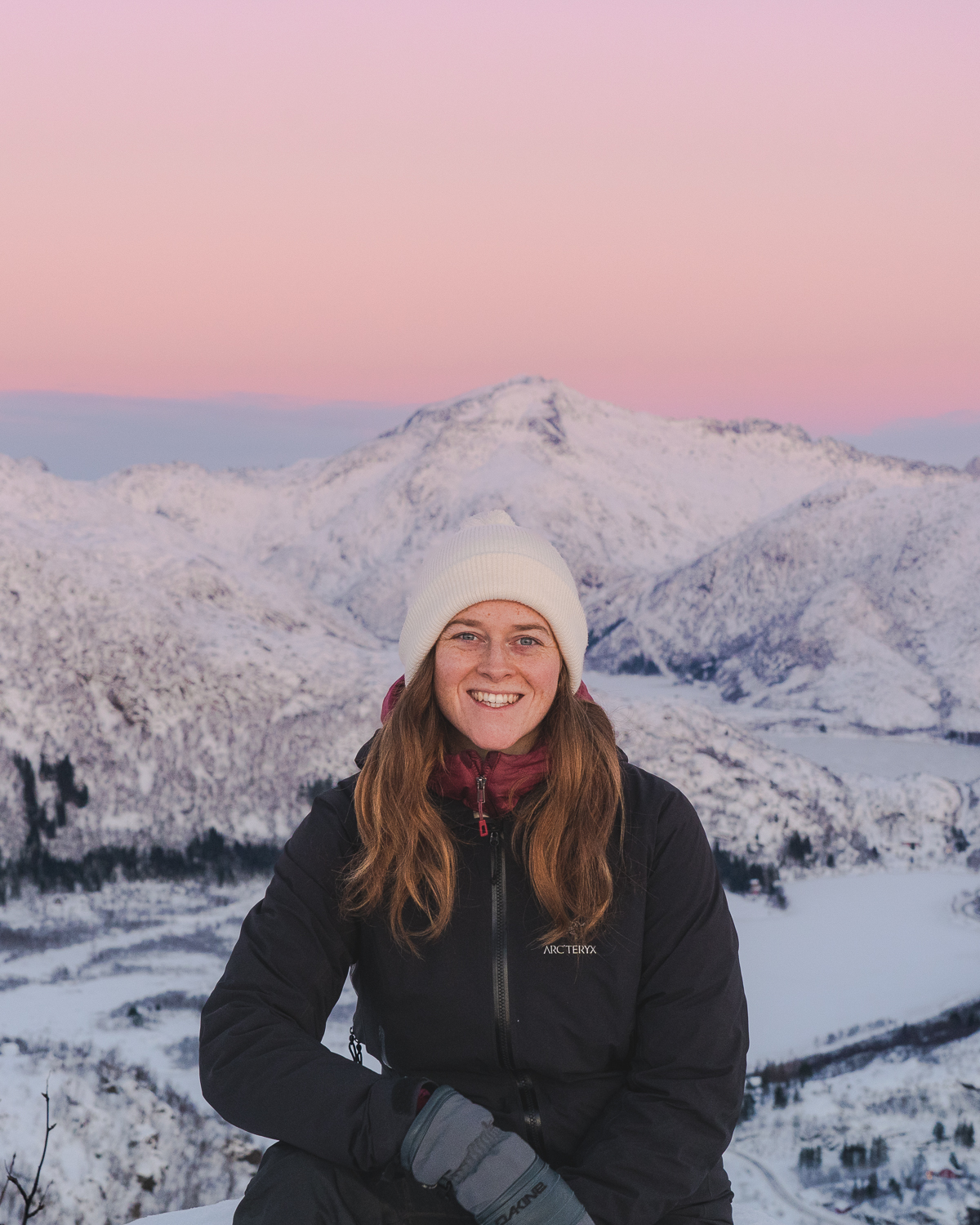
Hannah started That Adventurer after graduating back in 2013 and has documented all of her adventures since then. From backpacking South America to city breaks in Europe , a 3 month road trip across the USA in a self-converted van and 6 years living in Canada , you’ll find posts on all of this.
Hannah specialises in active travel and on That Adventurer you’ll find hiking, walking, biking, skiing and all sorts of active travel guides to allow you to see a destination in an adventurous way.
Now back in Europe, you’ll find new guides as Hannah and her husband spend the next year ‘digital nomading’ from Norway to Portugal, Switzerland to Scotland and places in between.
Leave a comment Cancel reply
You must be logged in to post a comment.
Hi! I will be heading to South America for 3/4 months next summer. Where did you start?! It looks like you fit a lot of places in!
We started in Lima then headed South, overland to Brazil, then to Iguassu, overland to Uruguay, ferry to Buenos Aires, flight back to Peru then North into the Amazon and over to the Galapagos.
We definitely fit a lot in, but there’s SO much to see. Our route was a bit weird to make sure we were in Brazil for the World Cup!
Would recommend visiting Columbia, we didn’t, but every one we met said it was a fantastic country. If you’ve got more questions you can always email me, I’d love to help anyway possible! x
Hi!! A friend and I are heading to South America for 5 months from July but we’ve got so many questions and are feeling a little out of place! Where did you start?? Your trip looks amazing! 🙂
Hey Jodi! Wow, 5 months? That’s going to be amazing! Do you have any idea of where you want to go?
I’d love to help you with any questions you may have! Just send me an email at [email protected] .
I started in Peru and went South to Bolivia, then overland to Brazil (rio, sao paulo and Ilhabela, Ilha grande), flew from Rio to Iguassu went by bus from Iguassu to Uruguay then boat from Uruguay to Argentina. From Argentina flew back to Peru and this time went North and into the Amazon. From the Amazon we flew to Ecuador and the Galapagos then back to England!
Look forward to hearing from you! x
Hey Hannah,
I have been thinking about visiting South America for a long time now – do you know how much you spent during your time in South America, so I can get an idea of a budget to work towards.
Roughly speaking it was probably £3,500 (excluding flights), maybe a bit less/bit more! But we did everything we wanted to including the Galapagos. We were there for 3 months, so I guess a budget would depend how long you want to go for too. If you’ve got any questions feel free to send me an email 🙂 [email protected] x
Hi I love this post so much! I graduate college in December so plan on treating myself to a trip around South America since I am a Spanish minor and it’s been a dream to see Machu Pichu and other places. When you say backpack do you mean you guys set up tent or just that you traveled around the countries? Did you at all have to rent a car to get to these places or were the buses enough to rely on? While I dont plan on going to Brazil and instead want to tack on Patagonia and possibly parts of southern Chile, I also do not have a set time line.
Hi Virginia, I just mean we travelled with a backpack rather than tent camped! Buses were definitely enough to get around. There are so many and they’ll go between all major cities. Long distance bus journeys in South America were actually quite nice. They generally have reclining seats (if you pay a bit more they’re fully reclining like a bed) and you can even get meal service on some of them – like being on a plane!
I too would love to go to Patagonia one day!
GREAT ITINERARY AND DETAILS!
Hi, love the post. Can I ask if your budget of 3500 was combined or was it each? Thanks
It was each

South America Backpacking Route (3 months)
Welcome to our 3 month South America backpacking route.
It is no secret that South America boasts one of the world’s vastest continents, and in our opinion, is one of the best for any type of adventure travel .
Home to mysterious cultures and ruins, breathtaking landscapes as well as vibrant cultures, it truly is one of those regions that has it all. In this guide, we’ll take a look at our customized 3 months South America itinerary.
Having spent countless years here ourselves, we’ll give you deeper insights from our own experiences throughout this awesome continent .

What's in this guide?
South America backpacking Route
Whilst we would love to say that 3 months is enough to cover the continent, we cannot lie to you. You would need a minimum of 6 months, and even then that’s really pushing things.
However, 3 months is still good for exploring a good chunk of this region . In this itinerary, we’ll be starting off in Colombia , and then exploring Ecuador, Peru, Bolivia, Chile and Argentina.
Getting around South America
This continent is quite a big one, and as such distances can be somewhat intimidating, to say the least.
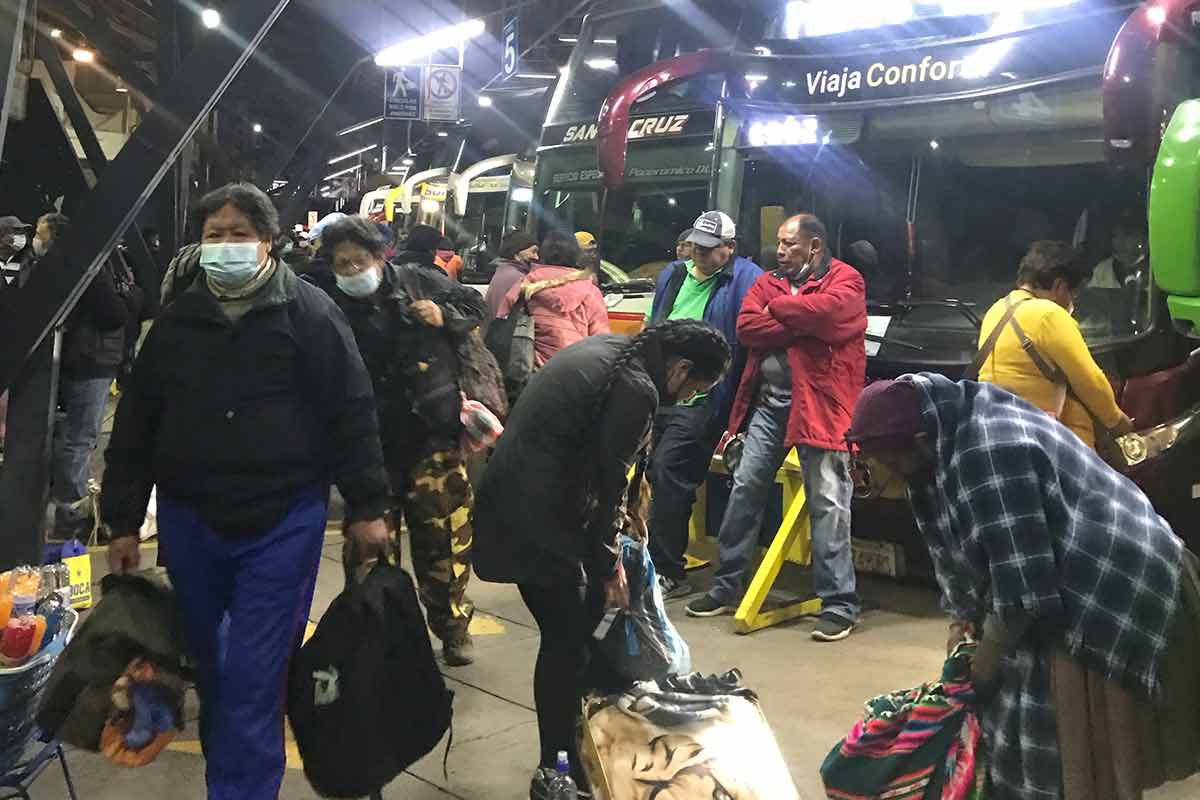
Buses are the most used method of transport by backpackers since they’re the cheapest (often with several different companies serving the same route).
In Ecuador , they can be quite short, usually between 3-6 hours. In larger countries like Chile, travel times by bus can often be as much as 20 hours!
The other alternative way of getting around South America is via flights. They’re usually more expensive, however, they cut travel distances into just a fraction (since you’ll be flying over difficult jungle and mountain terrains, rather than motoring through and around them).
We recommend flying around Chile, and also some parts of Peru too (we’ll mention where specifically below in the itinerary).
Things to know before traveling to South America
Before packing your bags and hopping on the next flight, it’s important to first cover some other important advice.
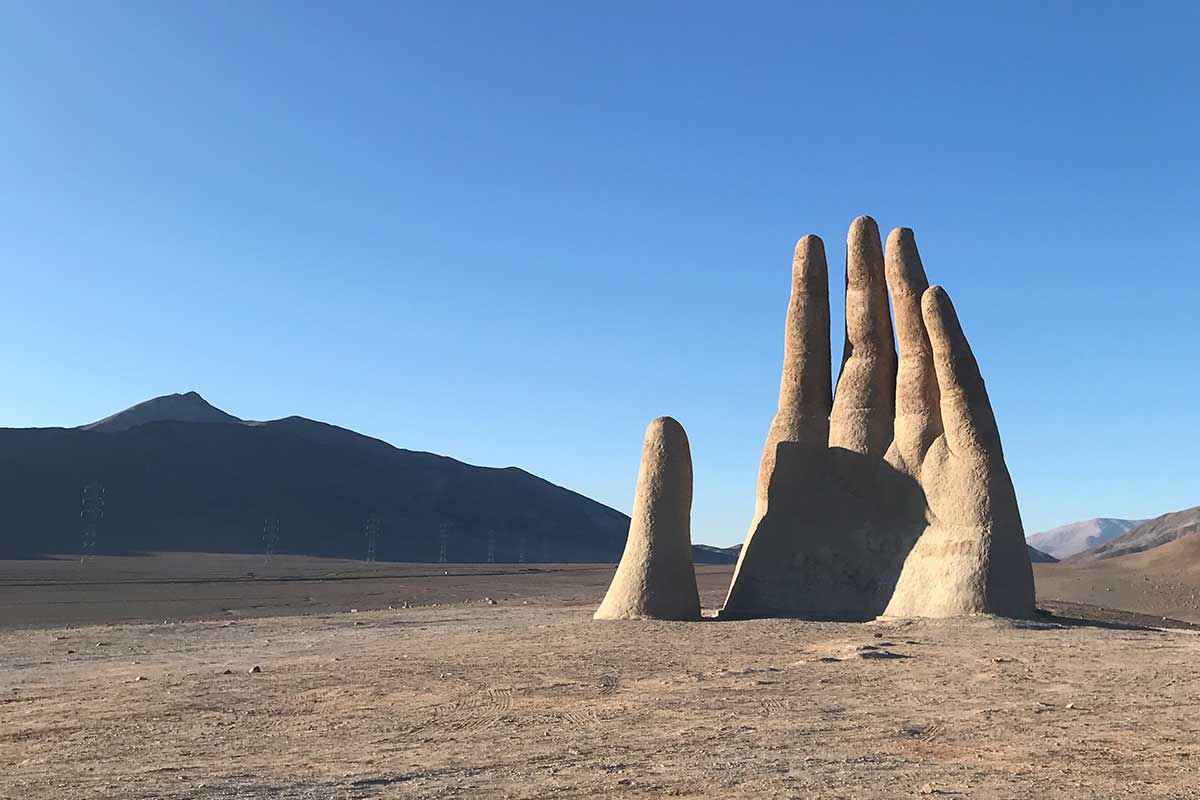
Not only will these tips help to keep you safe in South America, but you’ll also improve your overall experience whilst traveling.
- Aim for a Backpack of between 50-70L capacity.
- We recommend a daily budget of $20-30.
- Always use padlocks on bags when traveling between destinations.
- Pack your main backpack roughly 3/4 full.
- Avoid wearing Flashy Clothes and Accessories and carry an ultra safe money belt to avoid unnecessary displays of wealth.
- Check Visa requirements (they can vary per country and also where you’re from).
- Pick up some basic Spanish before you go.
- Be sure to research the differing Climates you’ll be facing (since there’s a huge variety in this massive continent).
Got travel insurance for South America?
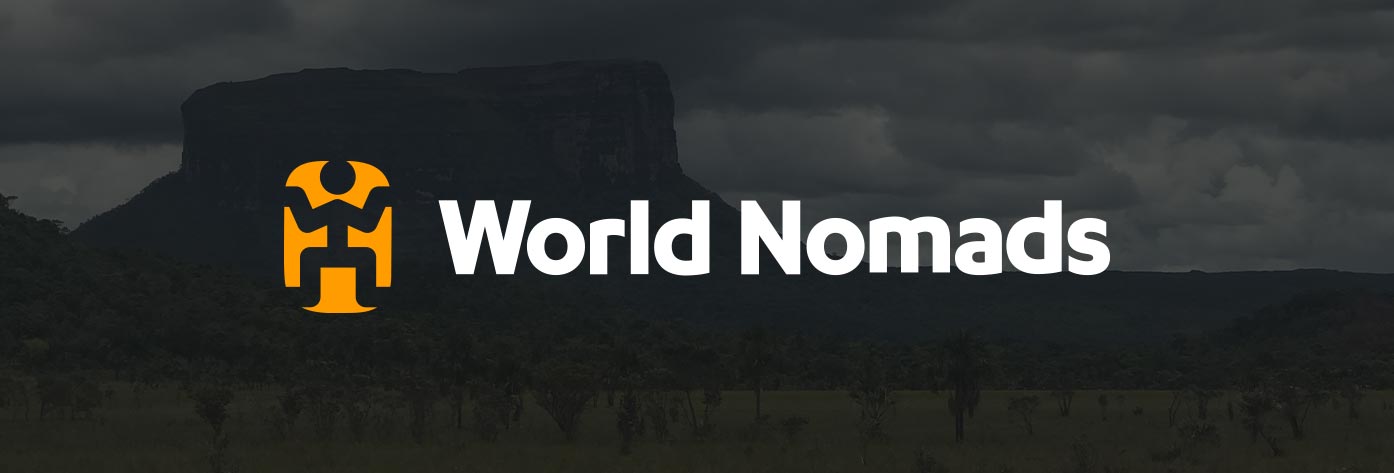
3 Months Backpacking South America Route
Now we’ve covered some important points to know before, it’s time to dive into our 3 month South America Backpacking Route!
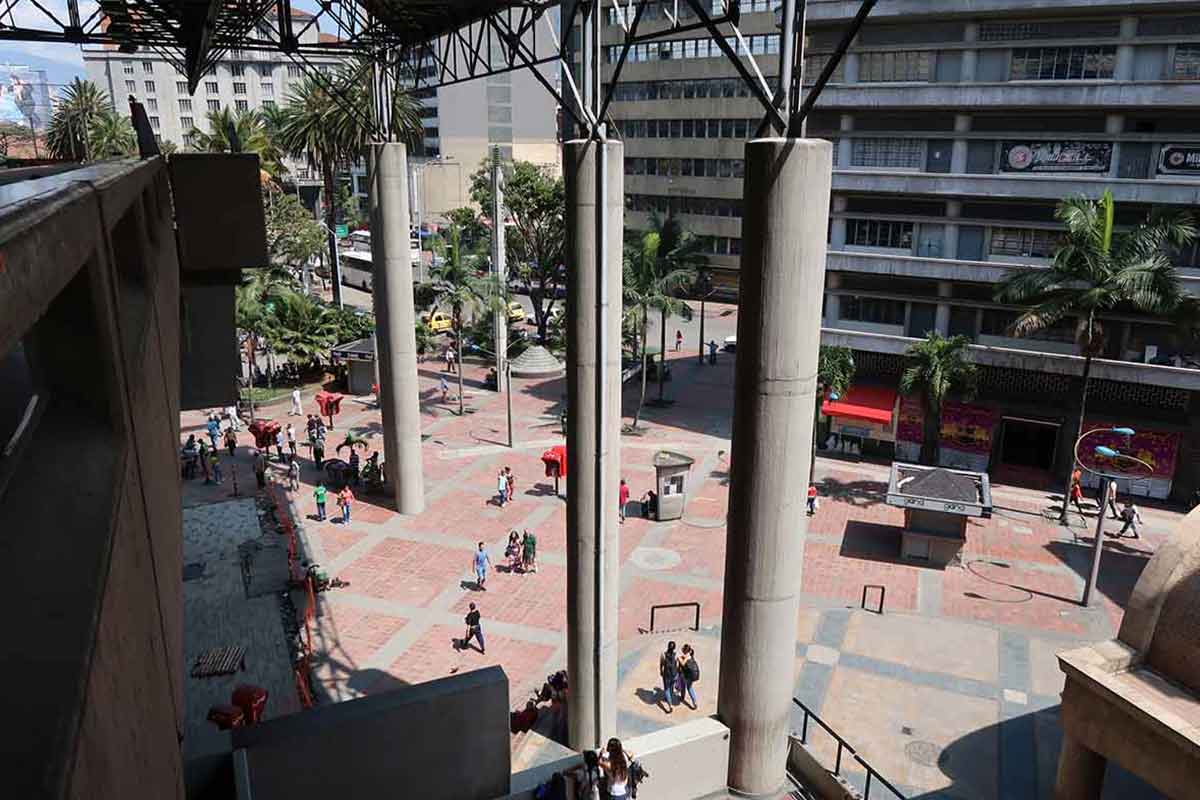
Colombia (14 Days)
The first stop on our great tour, Colombia is as spicy as it gets in this continent. You can easily fly into Bogotá from most continents around the world, which is the best place to start things off.
The capital is great for historical sightseeing, and you’ll want to climb up the mountain of Monserrate for the best views. After a few days in the capital, you can then take a short flight to the Caribbean coast, with Santa Marta the best hub for a stay.
Here you’ll find palm-fringed beaches perfect for some tanning and good times. You can also head on a multi-day trek into the mysterious Lost City , as well as to the remote region of The Guajira. We recommend staying in the Masaya Hostel when in Santa Marta.
From here you can head to Medellin to get to know more about the (real) past of Colombia, where you can even tour the former mansion of Pablo Escobar.
We recommend heading on this awesome tour , which includes breakfast and all transport. Onwards from Medellin, we’ll head to Cali for a more authentic experience in this diverse country. If you’re a keen Salsa dancer, then you must head to La Topa Tolondra!
Colombia Route Summary:
- Bogotá (2 Days)
- Santa Marta (5 Days)
- Medellin (4 Days)
- Cali (3 Days)
Other Special Mentions (Visit if you have more time):
- Isla San Andrés
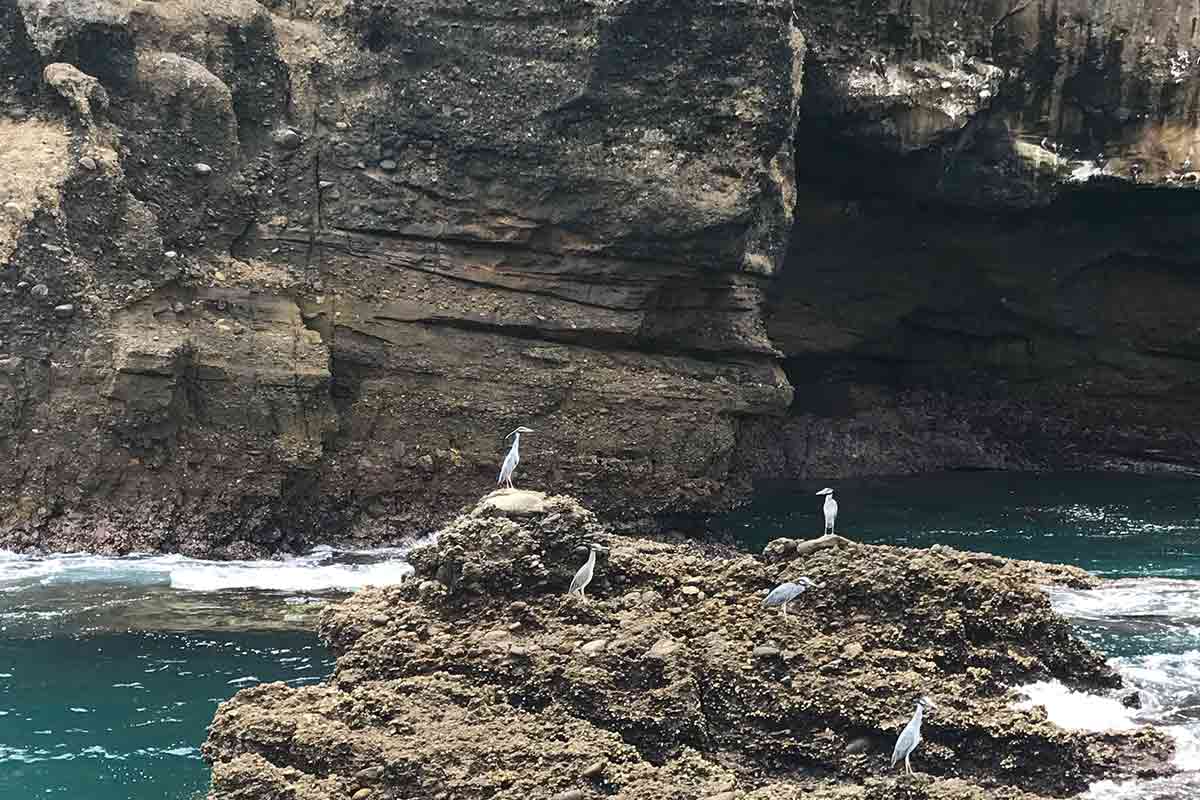
Ecuador (10 Days)
Ecuador is our next stop on our South American journey, and is the overall best all-rounder. Despite being one of the smallest, it’s home to pretty much everything you’d experience on your journeys in this continent.
We’ll first cross the border from Pasto, and then into the capital of Quito. This high altitude city is home to some really stunning architecture, and you can also hike the nearby volcano of Cotopaxi too.
From here we’ll then take a bus over to the town of Baños. A forever popular spot among backpackers, this town is great for adrenaline enthusiasts, where you can sit on a swing at “the end of the world”, and also visit the mesmerising waterfall of Pailón del Diablo .
After a few days of exploring this mountainous region, we’ll then head over to the buzzing beachside town of Montañita , which lies on Ecuador’s Pacific Coast.
This town is awesome for a more relaxed pace of life (where you must try surfing at least once), whilst at the same time being home to a truly incredible nightlife scene.
Whilst here you’ll want to visit the nearby towns of Ayampe and Puerto Lopez, the latter being the jumping off point to the Isla de la Plata (a national park home to rare birds and penguins). Our favourite hostel in Montañita has to be the infamous Selina , with this one located right on the beach.
Ecuador Route Summary:
- Quito (4 Days)
- Baños (3 Days)
- Montañita (3 Days)
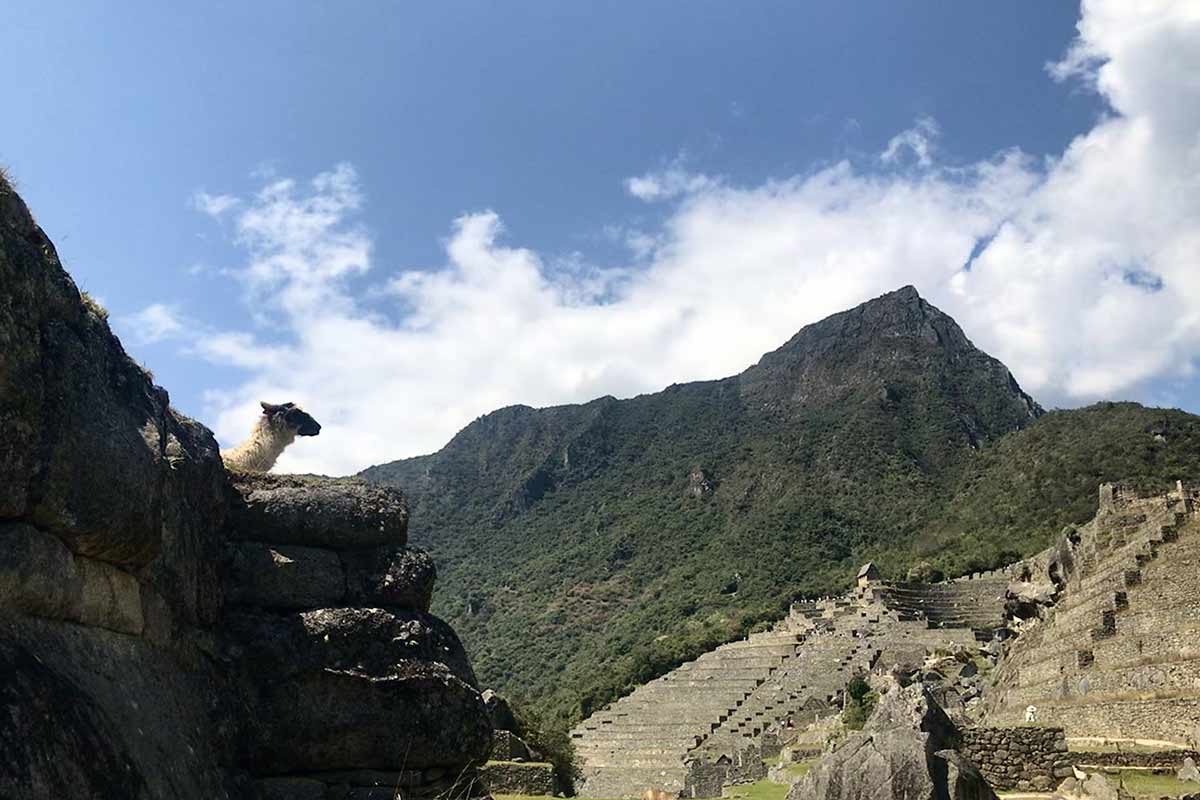
Peru (21 Days)
Now we head into the mysterious nation of Peru, home to many ancient ruins and also a variety of stunning landscapes. From Montañita we will head to nearby Guayaquil, and hop on a flight over to Lima (otherwise it’s 30 straight hours on a bus; George did this and doesn’t recommend it for those strict on time).
Lima is the cosmopolitan hub of Peru, and here you’ll find some really tasty dishes that are worth tucking into. You’ll want to explore the Costanera by bike, as well as visit Huaca Pucllana for your first taste of Inca ruins . From here we’ll fly over to Iquitos in the Amazon (there’s no other way we’re afraid!).
The most biodiverse region on the planet, Iquitos is a great jumping off point into the Amazon, where you can spot everything from pink dolphins to Jaguars along your jungle treks. We highly recommend this 3-Day Tour where you’ll explore the deep Amazon.
As well as swimming with Dolphins and fishing for Piranhas, you’ll also get to meet an indigenous tribe too After exploring Iquitos, we now head back to Lima, where we start heading south to the oasis haven of Huacachina . It’s the perfect place to go sandboarding, and we’ve found that two days is enough time here.
Our next stop is Arequipa , which is a beautiful city covered in white-washed buildings, with fiery volcanoes setting the backdrop . Whilst here you’ll want to explore the nearby Colca Canyon – which is the second deepest on earth!
After some off-road exploring, we now head to the legendary city of Cusco. We’ve planned 6 days here, given the sheer amount of things to and see.
These include visiting Machu Picchu (you can head here with this overnight tour ), exploring the Sacred Valley, hiking Rainbow Mountain as well as exploring the pretty city of Cusco itself.
Kokopelli is the best hostel for a stay here, and we’ll keep coming back for sure!
Lastly on our trip through Peru, we’ll make a stop off at Puno on the shores of Lake Titicaca for a day – where you can visit the seriously impressive floating Uros Islands before crossing over into Bolivia.
Peru Route Summary:
- Lima (3 Days)
- Iquitos (4 Days)
- Huacachina (2 Days)
- Arequipa (5 Days)
- Cusco (6 Days)
- Puno (1 Day)
- Chachapoyas
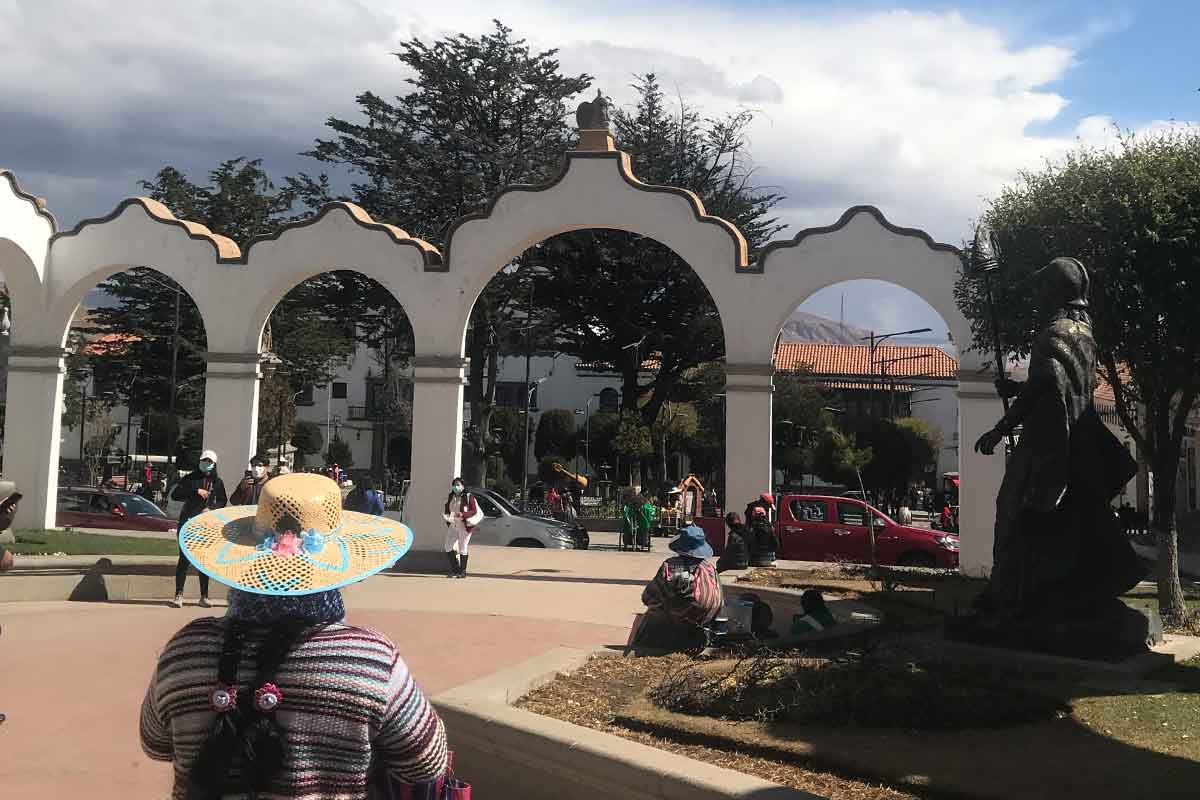
Bolivia (16 Days)
Crossing Lake Titicaca over into Copacabana, we recommend making a stop over at Isla del Sol if it’s possible (there’s some really awesome views here).
You’ll also be able to enjoy the small city of Copacabana too, before making our way to La Paz. The Bolivian capital (well, one of them at least), La Paz is a thriving city perfect for a backpacker .
Here you’ll want to base yourself in the Wild Rover Hostel , which is conveniently located in the historic centre. As well as soaring the skies in La Paz’s very own “gondola metro” (as I like to call it), you can also visit the Witches Market as well as cycle down El Yungas (known as the world’s most dangerous road – not for the faint of heart).
If you want to cycle this route, then you’ll need to go with a reputable company. We recommend this highly-rated tour , which includes all equipment as well as a tasty lunch too.
From La Paz we then fly to Sucre – our next stop – given the bus takes quite a while. This city is similar to Arequipa, in that it’s full of beautiful white architecture and colonial buildings .
A must visit whilst here is a visit to the Parque Cretácico, which is home to various dinosaur footprints. After strolling around this friendly city, we’ll then head to Potosí, which is famous for its Cerro Rico mine . Unfortunately it has a more gruesome past, however you can tour these mines (ranked as one of the world’s most dangerous) whilst providing supplies to the workers inside.
Be sure to take your time, given Potosí is located at a dizzying altitude of 4090m. Finally we head to nearby Uyuni, and onto this legendary 3 day tour which takes us into Chile. Words really can’t do this region justice, and along the way you’ll see these incredible salt flats, as well as red lagoons, pink flamingos and some of the clearest skies in your life (perfect for stargazing).
Bolivia Route Summary:
- Copacabana (2 Days)
- La Paz (6 Days)
- Sucre (3 Days)
- Potosí (2 Days)
- Uyuni (3 Days)
- Rurrenabaque
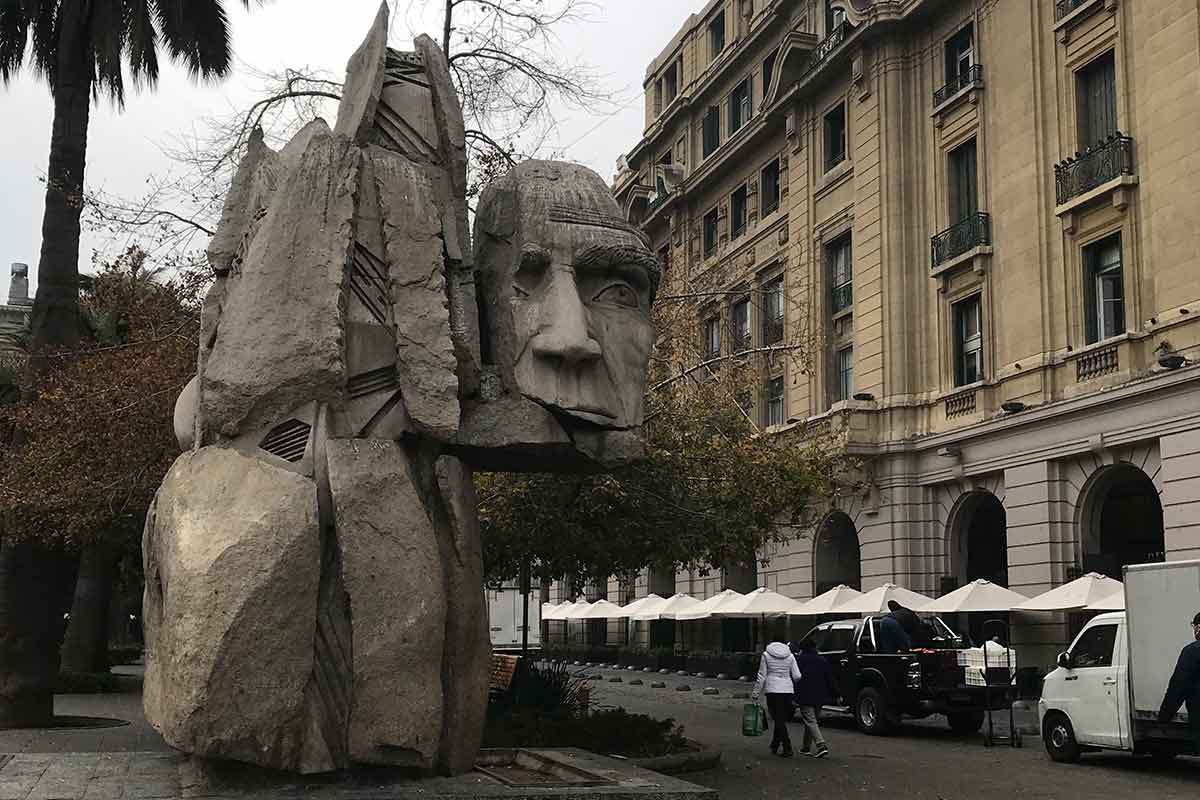
Chile (14 Days)
Having arrived into Chile after an unforgettable (and pretty tiring) journey across the Altiplano, we’ll now stay in the small desert town of San Pedro de Atacama. Home to the driest desert on earth , there’s some tours here that are really worth doing, such as to the Geysers del Tatio as well as to the Valle de la Luna.
From San Pedro you’ll then head to nearby Calama to catch a flight over to Santiago, our next stop in Chile. The capital is full of history and sites , however the first thing you’ll want to do here is to head up to the Mirador on top of Cerro San Cristóbal for the best views.
Nearby Valparaíso is also worth a visit with its artsy streets and hills (usually we’d recommend staying there, but given our time we’ll only make a day trip there instead).
When in Santiago, we recommend staying in the Plaza de Armas Hostel in the historic centre, which is close to all of the top sights. Our next stop from here is Pucón, which is in Chile’s Lake District. The Villarrica volcano is a must see here, and for hikes you’re going to want to layer up (minus temperatures are for sure to be expected!).
Given Pucón is also situated on a lake, it’s a great place for water sports, and it even has a beach too. To round up our stint though Chile, we’ll then be heading to Torres del Paine, which is in the heart of Patagonia .
This ultimate region encompasses spiralling peaks and unforgettable hiking trails, and rightfully makes any South American bucket list. You’ll want to spend quite a few days here to really breathe it all in.
Those in nearby Calafate can head on this awesome day tour where you’ll explore the very best spots of this stunning national park
Chile Route Summary:
- San Pedro de Atacama (3 Days)
- Santiago (4 Days)
- Pucón (3 Days)
- Torres del Paine (5 Days)
- Antofagasta
- Valparaíso (stay here rather than visit as a day trip).
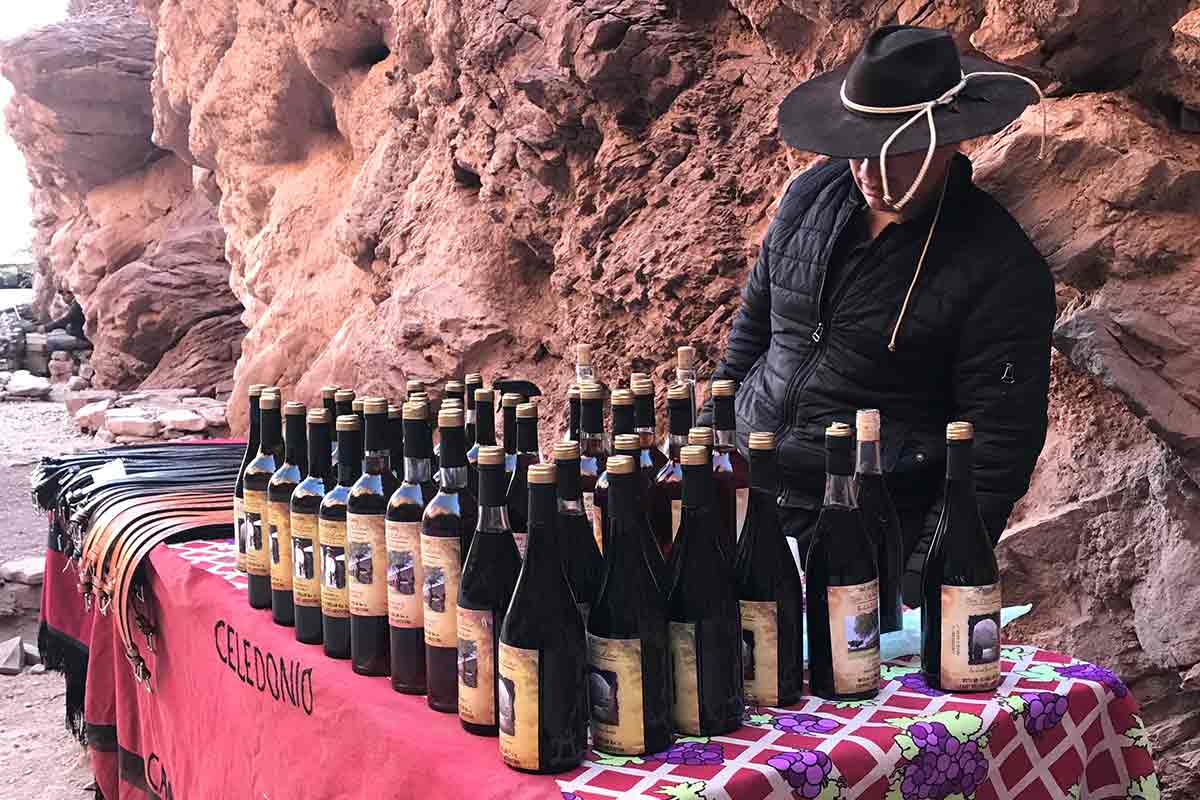
Argentina (21 Days)
Now we head into our last country on this South America travel route. As you many know, Argentina is a fiercely proud nation, which given everything here – it’s not hard to see why. We’ll first touch down in Ushuaia – the most southern point in all of South America .
This city is a glacial lovers’ paradise, and here you’ll feel like you’re in an entirely different continent than from that we’ve already explored. A must-visit here is the Isla de Martillo, which is home to an absolute tonne of penguins.
After a few days here, we’ll catch a short flight over to El Calafate. This city is most known for its proximity to the Perito Moreno Glacier , one of the largest and last of its kind in the world. We recommend this highly-rated tour of Perito Moreno , where you’ll get up and close with the glacier as well as having a cruise included too. It’s also a fantastic place for mountain hiking, where the nearby Parque Nacional Los Glaciares has many scenic routes.
From El Calafate we continue north again, and this time to Bariloche, which is known as the gateway into Argentina’s very own Lake District . This town is well known for its epic skiing, with the Catedral Alta being one of the most popular resorts. Exploring the nearby lakes is a must, as well as spending some time in the Parque Nacional Nahuel Huapi.
Now our time in Patagonia ends as we head north to Mendoza. This city is located right next to the Andes, and as a result of its unique conditions, produces some of the best wines in the world .
You’ll want to head to Maipu Valley to sample some of the very best, where you can join a bike tour to ride between them. You’ll also want to head to the Mirador of Aconcagua for views of the tallest peak in all of South America.
We recommend staying in the Panda Hostel , which is right in Mendoza’s centre. From here we’ll take one last flight over to Buenos Aires, which is our final destination. Known for its steak and football fanatics , the capital is also home to lots of interesting sites including La Recoleta, Museo Nacional de Bellas Artes as well as the neighbourhood of La Boca.
You can also catch a Milonga in the streets too (which is a local, impromptu tango show). Quite a way to finish up our itinerary, for us Buenos Aires is a perfect ending to the whirlwind of a 3 months that we’ve just had!
Argentina Route Summary:
- Ushuaia (4 Days)
- El Calafate (5 Days)
- Bariloche (4 Days)
- Mendoza (4 Days)
- Buenos Aires (4 Days)

South America Travel Route FAQs
Having covered the entire route, you’ll probably be more than convinced to go! However you may still have a few more questions, so below we’ll answer some of your most burning queries about this South American route.
How much money do you need for backpacking South America?
This really depends on you as the traveller, however we do have some advice that can give you a good head-start . A daily budget for the countries of Bolivia, Peru, Ecuador and Colombia can be between $20-30, whilst you’ll need around $30-35 per day for Chile and Argentina. Of course be sure to factor in extra budget for your flights, buses and extra activities you plan to do here. Check out the best hostels in South America to be able to save money on accommadation.
Is Argentina cheaper than Chile?
Chile is by far the most expensive country in South America. Argentina is usually a close second, but given the current economic climate (during the time this was written in 2022), you’ll find Argentina is pretty cheap to travel right now!
What are the cheapest countries in South America?
The overall cheapest country to visit on this South American Route is Bolivia. You can still live well on a daily budget of as low as $20 , given accommodation and buses in this nation are ridiculously cheap. Peru and Ecuador are just behind Bolivia in terms of costs.
Which South American country is the safest?
South america backpacking route.
And that’s all for our backpacking route through South America.
This incredible region is full of unforgettable experiences, which range from epic sceneries to mysterious cultures and beyond .
In this guide we’ve covered our 3 month route through South America, covering Colombia, Ecuador, Peru, Bolivia, Chile and Argentina.
Along with our backpacking South America guide, bookmark this page before and during your travels, so you’ll always have a handy reference available.
👉🏽 P.S. If you’ve found this guide helpful, buy us a coffee here to say thanks! Or, support us by downloading our South America Travel Bible to get our best content.
“ Dear traveler! Some links in this post contain affiliate links. Meaning, if you click through and make a purchase, book a hostel or sign up for a tour, we may earn a small commission at no additional cost to you . Your support means a lot and helps us to carry on traveling and maintaining the quality of this site for you.”
Similar Posts
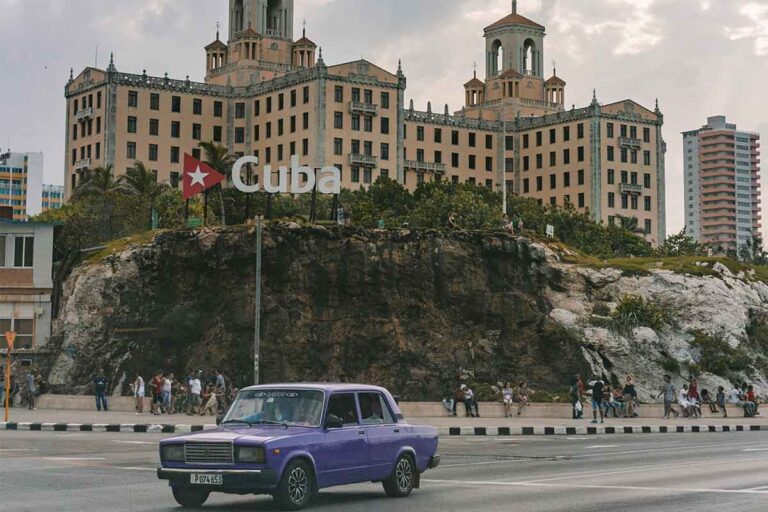
Backpacking Cuba Itinerary
Welcome to this backpacking Cuba itinerary. When people are browsing for new places to visit, they usually brush past Cuba because they think it’s too dangerous or there’s nothing there worth seeing. Both assumptions are wrong. In this Cuba travel itinerary, we will give you a glimpse of all the wonderful things you can do…
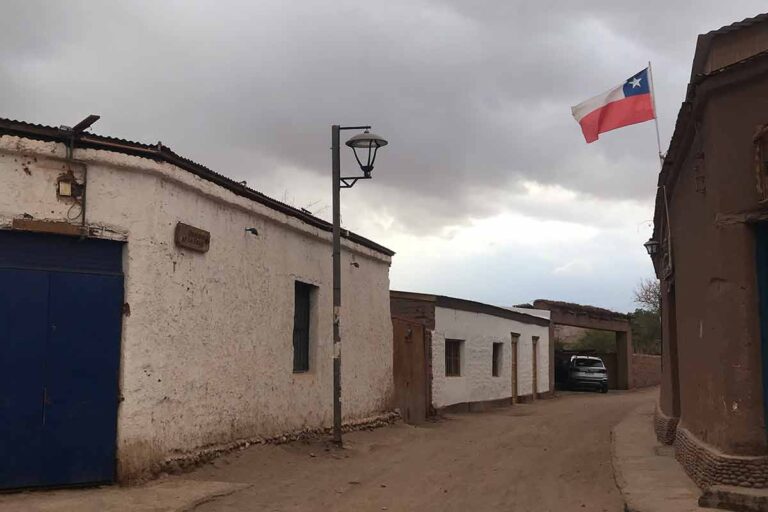
San Pedro de Atacama Guide
Welcome to our guide to San Pedro de Atacama. Located within the driest desert on earth, the town of San Pedro (short for San Pedro de Atacama) is one of the highlights of a trip to Chile. With its small town feel, you’ll feel part of the community within hours, with locals and travelers from…
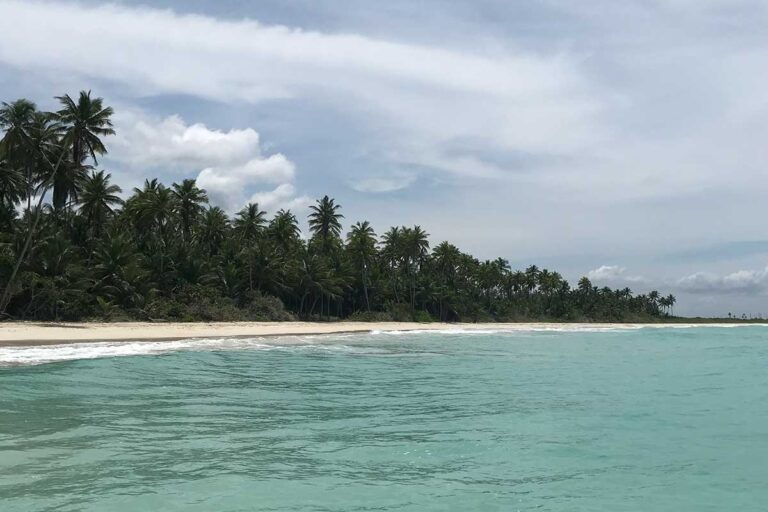
Traveling to Venezuela: My Experience
Tropical paradises, life-saving tequeños and corrupt police… When I first started planning my trip around Latin America on a map, everything was pretty smooth until my finger reached Venezuela. One of the most dangerous countries on earth, it didn’t seem quite a good idea to head here. However my hunger to see Angel Falls, the…

Is Cartagena Safe? 2024 Travel Guide
Welcome to our Cartagena safety guide. Known for its colorful architecture and festive scenes, Cartagena is by far one of the most popular cities you can visit in all of Colombia. However many wonder if it’s safe to stay in, and whether some areas are better than others (especially since Colombia as a whole still…
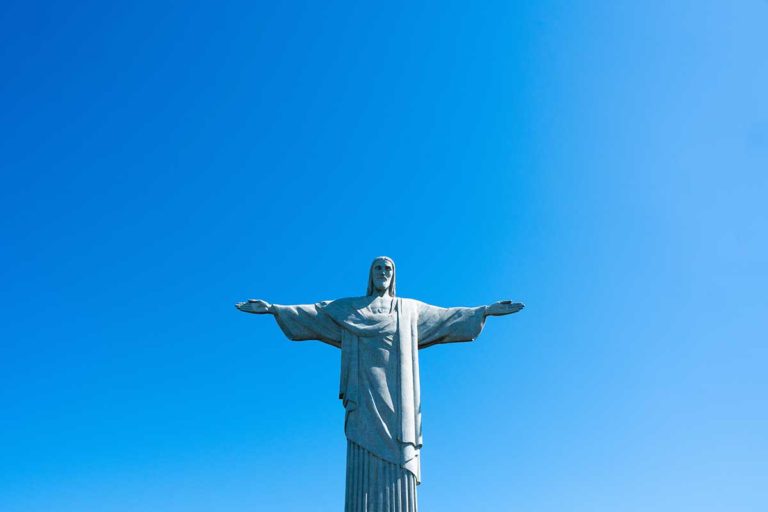
Backpacking Brazil Itinerary
Are you thinking of backpacking Brazil? Brazil is one of the most interesting countries South America has to offer. It’s filled with history, religion, culture, and, of course, sports! The country is surrounded by Amazon rainforests and tropical oceans, so it has plenty of outdoor adventure opportunities. It’s an exciting destination for tourists, which is…
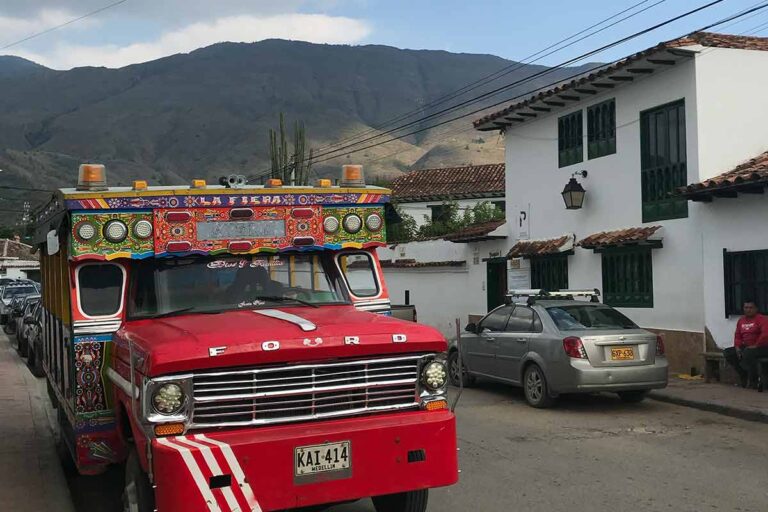
How To Avoid Altitude Sickness in Bogotá
The majority of travelers (us included) would be forgiven for believing that Colombia is just a low-lying coastal nation. However here the Andes mountains stretch right through this South American country, and cities like Bogotá actually have surprisingly high altitudes. This can make things a little more difficult than usual, and it’s important to know…

Destinations
South America Travel Itinerary: A Comprehensive Guide for 1-3 Months
- Date Updated: December 20, 2023
- By: Alicia Walter
This post may contain affiliate links. We receive a commission on purchases made through links on this page. This is at no additional cost to you & helps support our travels. Read more in our Disclaimer . Thank you!
South America has so much to offer, and even with this South America travel itinerary covering one to three months, you will still only be scratching the surface.

South America is a captivating continent with diverse landscapes, vibrant cultures, and breathtaking natural wonders. From the majestic Andes Mountains to the lush Amazon rainforest, there is no shortage of awe-inspiring destinations to explore. In this travel itinerary, we will guide you through the best places to visit during your one to three-month journey.
We spent nearly six months exploring South America and found more than one new favorite place. We are already planning a trip back to this incredible continent and hope these itineraries will help you plan your next trip, too!
We’ll cover the best South America travel itinerary for one to three months, tips for traveling South America as a couple, transportation in South America, cost of travel in South America, and more!
This post is all about the ideal South America travel itinerary for one, two, or three months of travel.
Planning Your Trip
Before embarking on your South American adventure, it’s essential to do some research and plan accordingly. Consider the best time to visit each country, as weather conditions can vary significantly across the continent. Remember, South America is in the southern hemisphere which means winter falls from June – September, and summer is from December – March, the opposite of the northern hemisphere. We would recommend the spring or fall seasons to avoid crowds and have the best opportunity for mild weather.
Don’t forget to check major holidays that may impact your travel. The majority of South America is Catholic, so the largest celebrations of the year revolve around Carnival and Easter. Travel is often more expensive during these holidays and sells out far in advance.
- Learn more about planning the perfect itinerary for any destination!
Don’t forget to get travel insurance for every trip to cover medical emergencies, cancellations, and even lost luggage! Check out SafetyWing for our go-to travel insurance !
South America Packing List
With an itinerary of one to three months, you’ll need to plan for various weather throughout your trip. You never know when a cold front or a massive rainstorm is going to blow through. Be sure to prepare the appropriate attire for each destination, from cities to deserts to beach towns and the jungle.
If you are planning on spending one to three months in South America, check out our complete South America packing list to ensure you don’t forget a thing!
- Shop our full South America Packing List!
South america transportation

When planning a one to three-month trip to South America, you’ll likely be traveling to more than just one destination.
Flights are a convenient way to cover long distances between countries or major cities, allowing you to save time and reach your destinations quickly. Domestic flights within South American countries are often affordable, helping you hop between different regions efficiently.
Although not as extensive as in other continents, trains can offer scenic journeys in certain countries like Peru and Ecuador. Buses are a popular choice for budget travelers (especially in Ecuador and Peru), offering an extensive network that connects cities and towns and is surprisingly comfortable. They are an excellent option for shorter distances, allowing you to immerse yourself in the local culture and enjoy the landscapes along the way.
Additionally, boat trips and cruises can provide unique experiences, especially in the Amazon River or the Galapagos Islands.
South America Trip Cost
Luckily, South America has a wide range of travel options from budget-conscious to mid-range (us!) to the ultimate luxury. Hostels are popular in South America and are a great option for budget travelers. They usually have private rooms (with private bathrooms) for a lower rate than some hotels – a good option for couples! And please, eat the street food! It’s amazingly good and cheap.
Since we traveled to South America for nearly six months, we took the average of one month and broke it down for you below. We spent XX per month for two people, changing cities every 3-7 days. That averages XX per day or XX per day per person. South America is far more affordable than European travel, even during peak season, and more expensive than a similar trip to Southeast Asia.
💰 Average cost per month in South America:
Avg per month:.
$XX for 2 people
Avg per day:
$XX per day for 2 people
Europe > South America > Southeast Asia
South America Travel Itinerary:

Now, let’s delve into the exciting part – the itineraries! We have prepared sample itineraries for different trip durations: one month, two months, and three months. These itineraries include a mix of popular tourist destinations and off-the-beaten-path gems, ensuring a well-rounded and unforgettable experience in South America.
1 Month Itinerary in South America
If you have one month to explore South America, here’s a suggested itinerary that will allow you to experience the highlights of Peru, Ecuador, and Colombia. This one-month itinerary will give you a taste of the diverse landscapes, rich history, and vibrant cultures that South America has to offer.
- Peru – 2 weeks
- Ecuador – 1 week
- Colombia – 1 week
Peru (2 weeks)

Start your journey in Peru, a country known for its rich history and breathtaking landscapes. There are often great deals for flights from the US to Lima . Check out Faredrop to find the best deals without all the work.
Spend your first few days in Lima, the capital city, exploring its vibrant neighborhoods and sampling delicious Peruvian cuisine . From Lima, head south to Cusco, the gateway to Machu Picchu. Immerse yourself in the ancient Incan culture as you visit the Sacred Valley and hike the famous Inca Trail , or enjoy the scenic train ride to reach the awe-inspiring Machu Picchu . Be sure to spend some time acclimating to the altitude in Cusco before visiting Machu Picchu.
After exploring Cusco and Machu Picchu, venture into the Amazon rainforest for a unique wildlife experience through the town of Iquitos. Take a boat ride along the Amazon River, hike through the dense jungle, and spot exotic wildlife such as monkeys, colorful birds, and elusive jaguars.
- Lima – 4 nights
- Cusco – 5 nights
- Machu Picchu – 2 nights
- Iquitos – 3 nights
Top Activities in Peru
Ecuador (1 week).

Next, fly to Ecuador, a country known for its incredible biodiversity and stunning landscapes. Start your Ecuadorian adventure in Quito , the capital city nestled high in the Andes Mountains. Explore the historic center a UNESCO World Heritage site, and take in panoramic views of the city from the TelefériQo cable car. Don’t forget to check off “straddle the equator” from your bucket list!
From Quito, head to the iconic Galapagos Islands , where you can snorkel with sea turtles, spot unique wildlife like marine iguanas and blue-footed boobies and witness the ongoing process of evolution in action.
- Quito – 2 nights
- Galapagos Islands – 5 nights
Top Activities in Ecuador
Colombia (1 week).

Finish your South American adventure in Colombia , a country known for its vibrant culture, stunning Caribbean beaches, and colorful cities. Start in Medellín and explore this town, once fraught with violence, now transformed into a vibrant, colorful neighborhood .
End your journey in Cartagena, a UNESCO World Heritage site and one of the most beautiful colonial cities in the Americas. Explore its charming streets, visit the imposing Castillo San Felipe de Barajas, and relax on the white sandy beaches of the nearby Rosario Islands .
- Medellín – 3 nights
- Cartagena – 4 nights
- Dive into our full Colombia itinerary!
Top Activities in Colombia
2 month itinerary in south america.
If you have two months to explore South America , you can embark on an incredible journey through diverse and captivating destinations. We’ll be building off our first itinerary for one month in South America by adding a week to Colombia so you can dive even deeper into the local culture and we’ll add two weeks in a new country, Brazil!
This two-month itinerary will allow you to experience the highlights of Peru, Ecuador, Colombia, and Brazil, offering a diverse range of landscapes, cultures, and experiences.
- Colombia – 2 weeks
- Brazil – 2 weeks
Colombia (1 more week - 2 weeks)

Since you’ll be traveling longer, I recommend slowing down your travel and adding a few more off-the-beaten-path stops to Colombia. From Medellín, you can rent a car (be sure to get an automatic, the hills are crazy!), and drive to both Guatapé and Jardín. In Guatapé, you can try street empanadas , see the most colorful homes, and climb an enormous rock . One of our favorite towns ever is Jardín. You can walk the whole town, enjoy the lively evening atmosphere in the square, and prop up your chair to sip on Colombian coffee or some magical chai tea.
- Bogotá – 3 nights
- Guatapé – 2 nights
- Jardín – 2 nights
- Cartagena – 5 nights
want a free Notion itinerary template?

Plan the perfect trip all in one place with this free Notion Travel Itinerary Template. Just enter your info below to join our weekly newsletter and get it sent straight to your inbox!
+ Brazil (2 weeks)

Wrap up your two-month adventure in Brazil, a country of immense natural beauty and vibrant energy. Spend two weeks exploring the iconic city of Rio de Janeiro, relaxing on the stunning beaches of Florianópolis, and experiencing the power of Iguazu Falls. Rio is spectacular; be sure to enjoy the beach at Copacabana, see another World Wonder – Christ the Redeemer , and take the cable car to the top of Sugarloaf Mountain .
- Rio de Janeiro – 5 nights
- Florianópolis – 6 nights
- Iguazu Falls – 3 nights
Top Activities in Brazil
3 month itinerary in south america.
If you have three months to explore South America, there is a ton you can see. You’ll want to add a few weeks to countries you are already visiting on your one or two-month itineraries to dive into the culture. And we’ll add a few more countries with even more diverse foods, sights, and people.
This three-month itinerary will allow you to experience the highlights of Peru, Ecuador, Colombia, Brazil, Argentina, and Chile, offering a diverse range of landscapes, cultures, and experiences.
- Peru – 3 weeks
- Argentina – 3 weeks
- Chile – 1 week
Peru (1 more week - 3 weeks)

Start your adventure in Peru, but this time we’ll add another week so you have time to explore Huacachina and Arequipa. Peru is such a diverse country and with this three-week itinerary, you’ll get the big city of Lima, the mountains in Cusco, the unforgettable Machu Picchu , a desert oasis in Huacachina , the colonial town of Arequipa, and the Amazon jungle from Iquitos.
- Lima – 5 nights
- Huacachina – 2 nights
- Arequipa – 4 nights

+ Argentina (3 weeks)

In Argentina, spend a week exploring the vibrant streets of Buenos Aires, known for its tango culture and historic architecture. You’ll also get to head out to the grasslands and enjoy a wellness retreat in cowboy country in San Antonio de Areco , just outside of Buenos Aires. Enjoy some southern hemisphere beach time in Cariló and then take a week to explore the magic of Patagonia .
- Buenos Aires – 7 nights
- San Antonio de Areco – 3 nights
- Cariló – 4 nights
- Patagonia – 7 nights
Top Activities in Argentina
+ chile (1 week).

Somehow, your three months in South America are almost up and last up we have one last country, Chile. This country has so much to offer but after three months of traveling around the continent, we recommend taking your last week to soak up all the magic of the vibrant city of Santiago .
- Santiago – 7 nights
Top Activities in Chile
This post was all about our recommended itineraries for one to three months on a south america travel itinerary. remember, this is just an outline to give you a general structure for the blog post. feel free to add or modify sections as needed to create a comprehensive travel itinerary for south america..
While you're here...
You can get great deals by booking through our links! We share our favorite ways to book our travels and we earn a small fee each time you make a purchase. This is at no extra cost to you and helps keep us on the road!
Book your next hotel stay
find great tours
car rentals for a road trip!
don't forget travel insurance
protect yourself online
Get visas for most countries
- Date: December 20, 2023
Related topics:
more posts to check out!

Most Affordable Way to Get from Tokyo to Osaka By Train

10 of the Best Restaurants in Tirana, Albania You HAVE to Try!

How to Travel from KL to Genting Highlands
Want a free long term packing list.

Know exactly what to bring on your long term travel adventure with this FREE Long Term Travel Packing List . Just enter your info below to join our weekly newsletter and get it sent straight to your inbox!
sign up for
Our Newsletter
Our site uses cookies. If you continue, you agree and accept the use of cookies. To find out more, read our Privacy Policy .
- Skip to main content
- Skip to primary sidebar
- Skip to footer
Dreamer at Heart |
The Best 3 Month South America Itinerary
Last Updated: July 4, 2022 By Alison Browne 31 Comments
This 3-month South America itinerary includes the countries of Peru, Bolivia, Chile and Colombia. I found all the stops on this South America itinerary intriguing for the curious and adventuresome traveller.
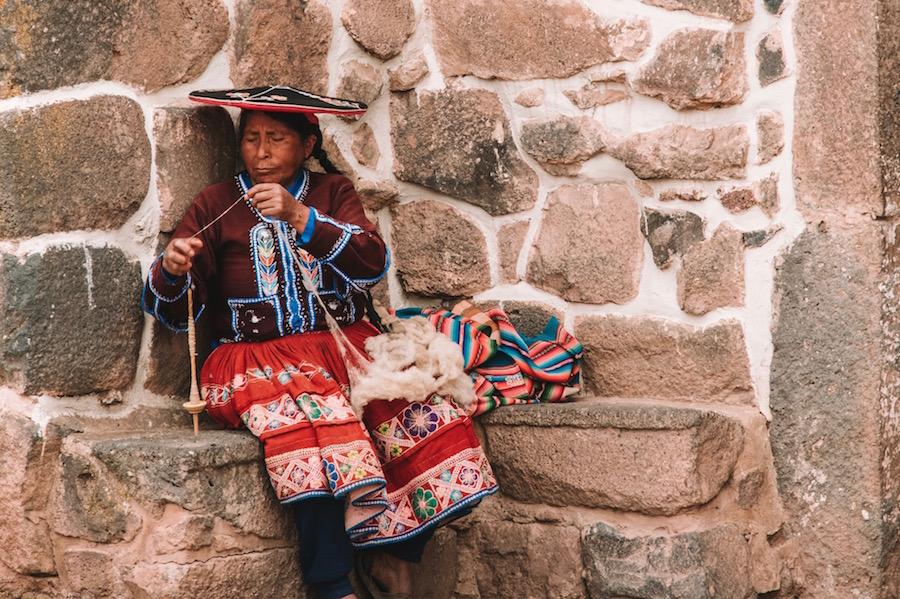
1. Considerations For Planning A 3 Month Itinerary In South America
When planning a 3-month itinerary to South America, it is important to consider:
- How long do you have?
- Do you speak any Spanish? What about Portuguese?
- Do you know which vaccinations you need?
- What is your budget?
- What is the weather like?
- How long does it take to travel between destinations?
- Are you travelling by bus?
- Are you taking any flights? If so do you have exit tickets booked?
- Where is your heart set on exploring?
Whatever type of trip you are looking for, South America will deliver. Remember to leave some room in your itinerary for spontaneity and flexibility.
Read More: Read my post on Proof of Onward Travel and check out Onward Ticket to avoid hassles at any border crossings, especially if you are a nomadic traveller without set entry and exit dates.
Read More: Check out my tips on planning your travels.
Read More: Are you a solo female traveller? Read my article on travel in Solo South America Is It Safe?
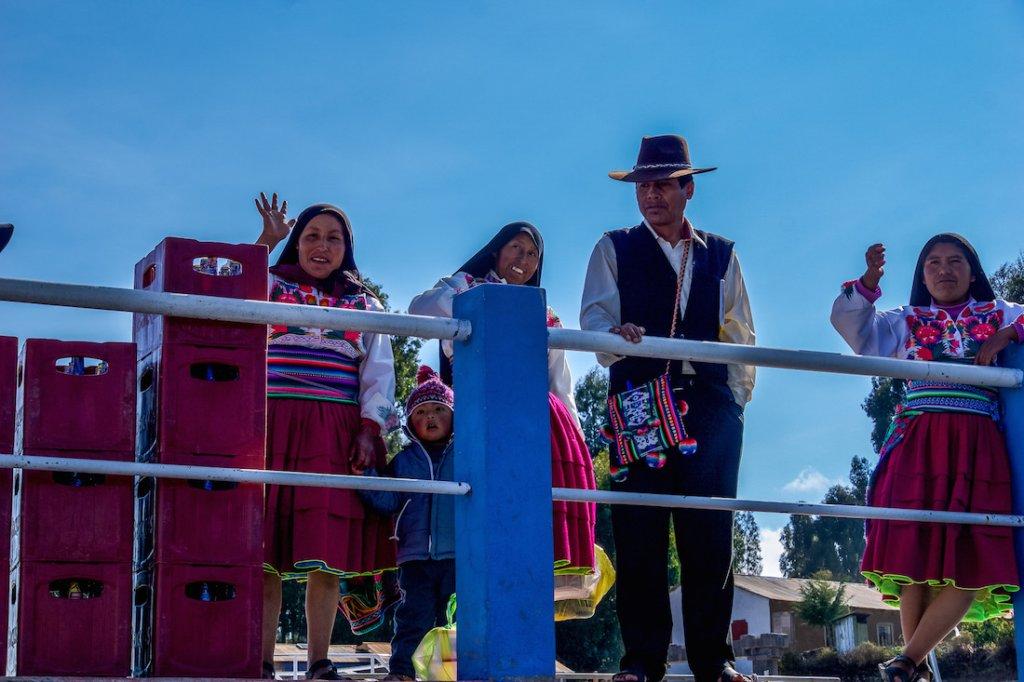
2. South America Itinerary 3 Months: Peru
Why I Started in Peru: The starting point of this 3 month South America itinerary was a weather-based decision. It was November and already the start of the rainy season. If I had started in Colombia and worked my way south, I would have been in southern Peru in the height of the wet season. Thus, Peru became the starting point.
I feel like every stop I made in Peru was a highlight on this 3 Month South America Itinerary.
Ollantaytambo, Peru
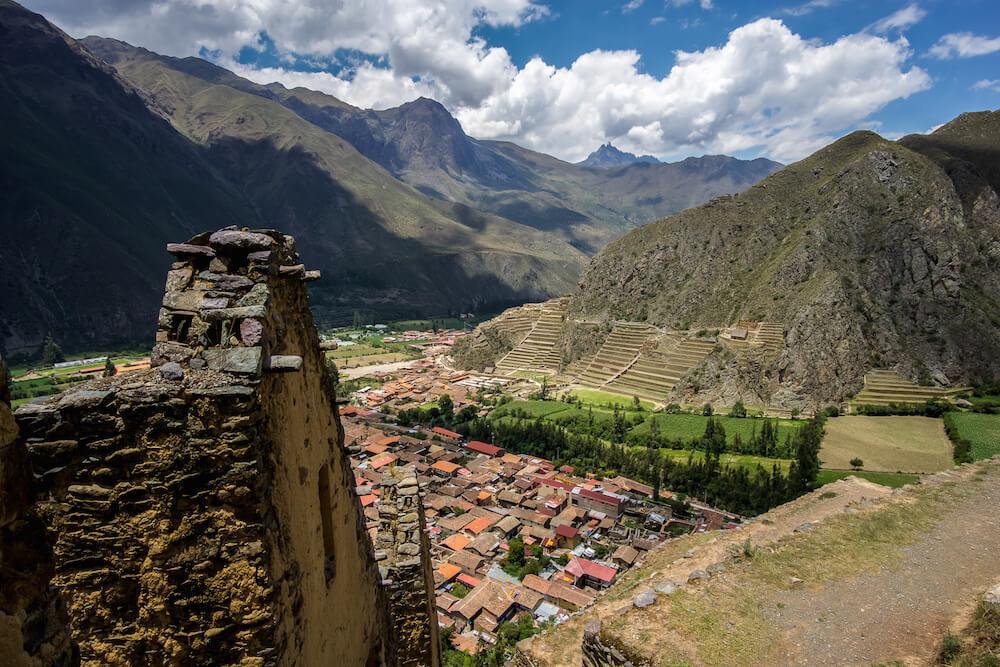
The altitude is lower in Ollantaytambo, Peru than in Cusco, so it is a good idea to head there first and acclimatize to the altitude and avoid altitude sickness.
Don’t make this mistake: On the way to Ollantaytambo, I stopped at several sights in the Sacred Valley Chinchero, Moray and the Maras Salt mines. It was a marvellous introduction to Peru except that the altitude at these sites is even higher than Cusco. By the time I arrived in Ollantaytambo I was suffering from altitude sickness.
Ollantaytambo is the perfect place to ease into solo travel in South America. It is a small, easy-to-navigate town, where irrigation canals babble with running water and two massive Inca archaeological sites tower over the town.
I used Ollantaytambo as a base to recover from altitude sickness, gain my confidence in South American solo travel and, of course, take the train to Agua Calientes, the gateway to Machu Picchu.
Read More: Ollantaytambo Peru | A Traveller’s Guide
Where to Stay in Ollantaytambo Peru
Book A Transfer from Cusco to Ollantaytambo
From Ollantaytambo : Book your Machu Picchu Vistadome Round trip Train Ticket and a tour of the Sacred Valley
Machu Picchu, Peru (A Definite Highlight on a South America Itinerary)
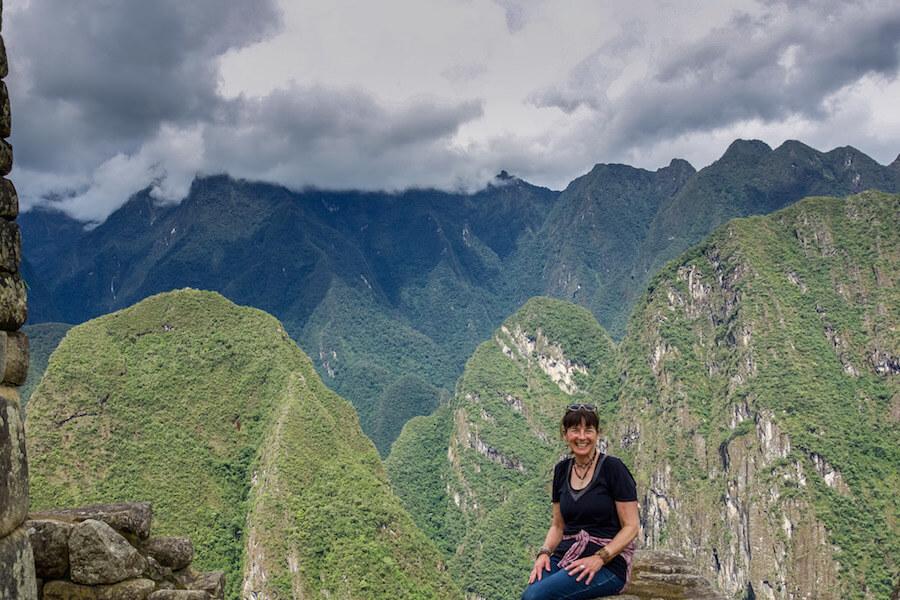
A South America travel route through Peru just has to include Machu Picchu and it is easy to get there from Ollantaytambo. Take PeruRail direct to Agua Calientes.
To stand in awe amidst the soaring Andes, shrouded in misty clouds and marvel at the humans who created this Inca citadel is a highlight of any South America itinerary.
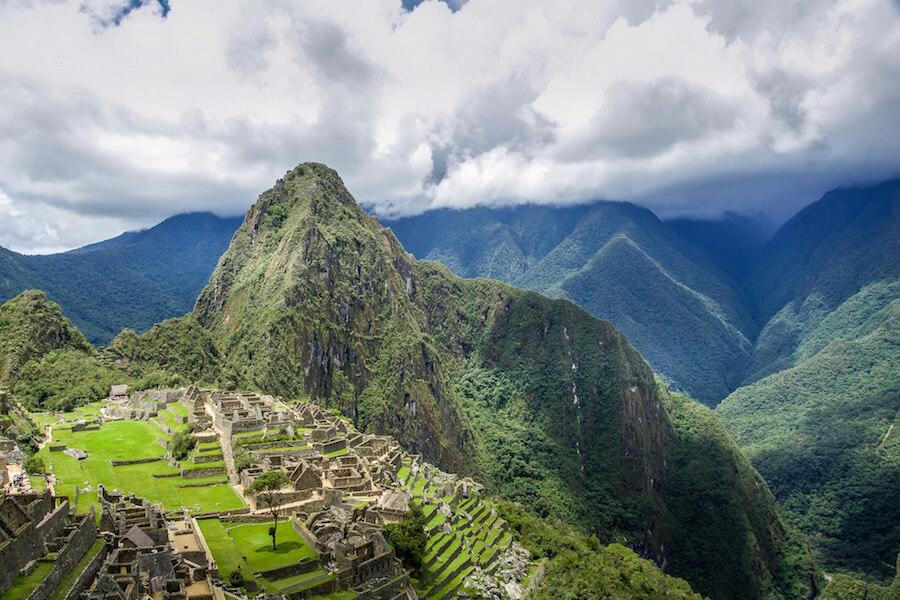
Despite the crowds, even in low season, and the rules (you can’t circle back or re-enter to take photos or have another look) soaking up the ruins of Machu Picchu and hanging with the llamas is a memorable experience.
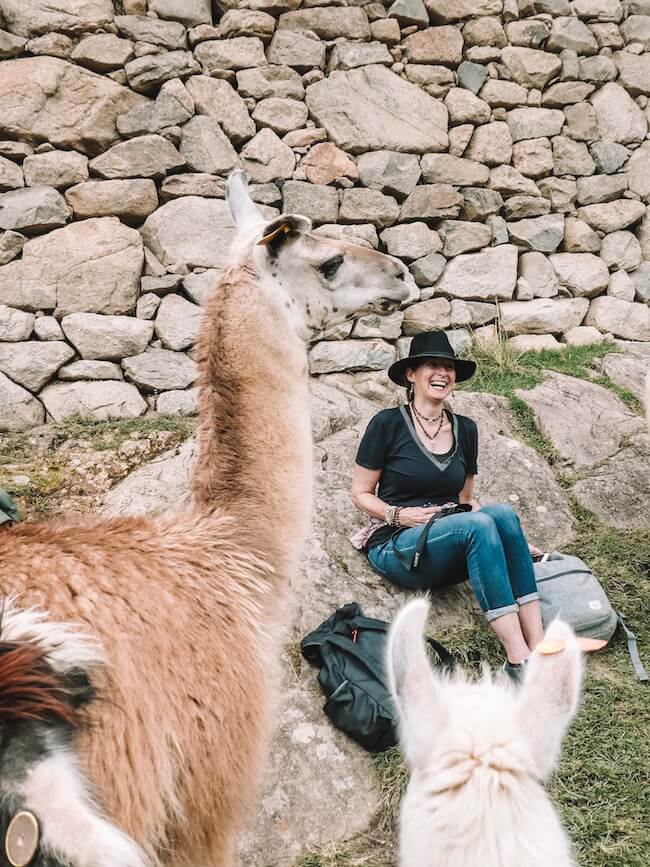
Pro Travel Tip s:
- Save time and avoid long lineups by booking your Machu Picchu entry ticket in advance.
- If you are also planning to hike to Huayna Picchu, you must book in advance as there are limited spots each day. Here is a joint entry to Machu Picchu and Huayna Picchu .
- Don’t forget to book your round-trip bus transfer from Aguas Calientes to Machu Picchu.
- You can also take a full-day guided tour to Machu Picchu from Cusco
- For the adventurers and hikers, book well in advance for treks such as the 8-day Salkantay Trek to Machu Picchu
Cusco, Peru
The lively city of Cusco, the Inca empire’s ancient capital, brims with steep cobbled streets, historic architecture and antique churches. Today the tourism trappings are overwhelming but somehow the delights of this centuries-old city shine through and it is a mandatory stop any backpacking to South America trip
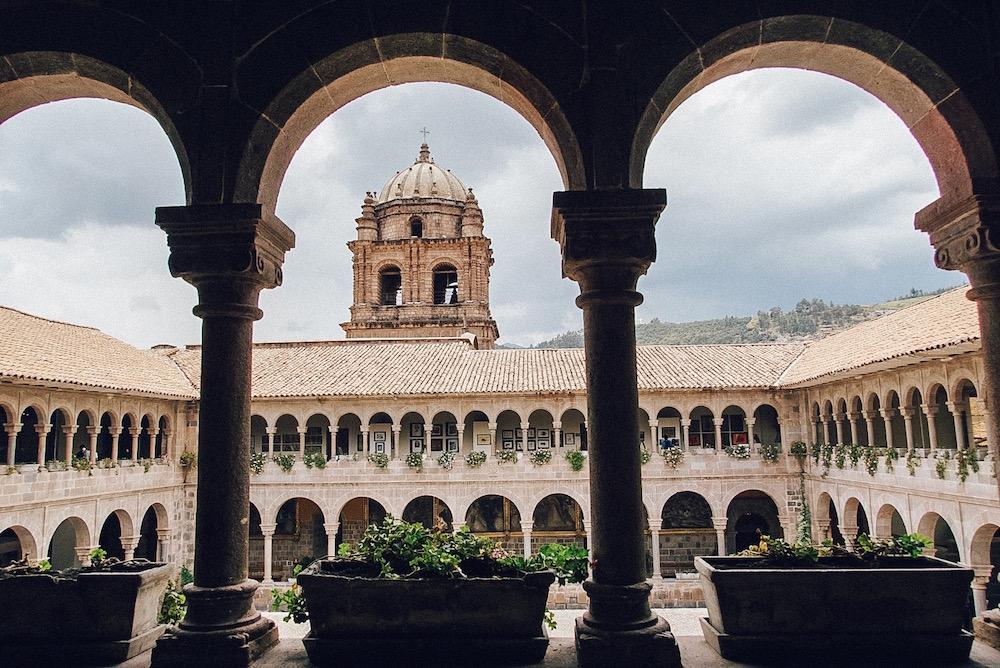
Built in the shape of a puma, this city will have you constantly out of breath between the hilly streets and the high altitude. It’s the perfect place to be an urban explorer but be prepared to be inundated with ladies offering massages (minimum 25 times a day), to pay for a photo with llamas and to roll your eyes at the McDonald’s in the main square, Plaza de Armas. Peel back the layers and discover the essence of ancient Cusco.
The 3 Month South America Itinerary: Where To Stay in Cusco Peru
Book a tour from Cusco to the Sacred Valley , if you haven’t been yet. I heard fabulous things about Humantay Lake but didn’t get there. Will you?
The Sacred Valley, Peru
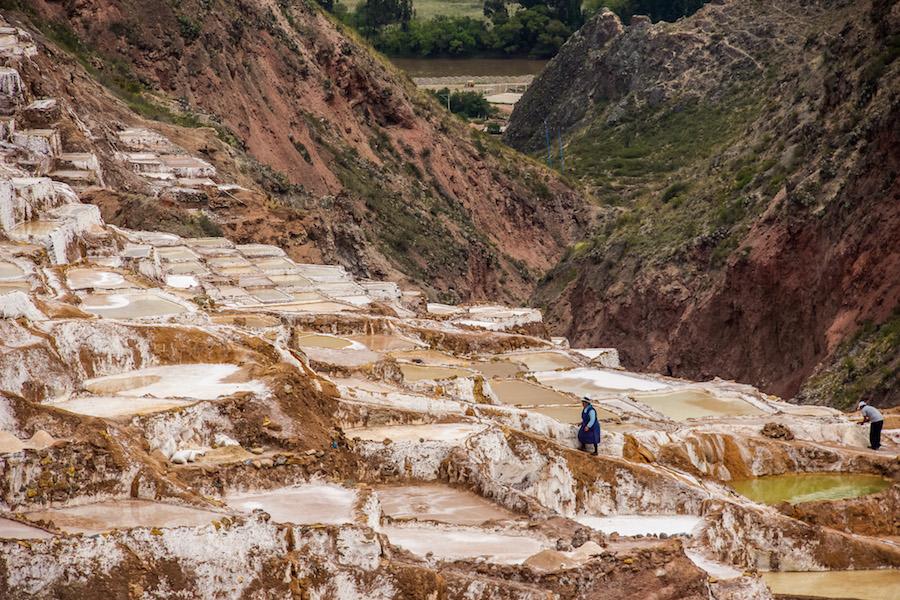
The Sacred Valley with the Rio Urubamba twisting and turning and the soaring Andes rising on either side is breathtaking. Full of sights worth visiting, purchase the “boleto touristico” (the tourist ticket) which gives a reduced entry fee to multiple sights. Pisac and Ollantaytambo sit in the Sacred Valley along with other Inca sites and villages. Don’t miss Chinchero, Moray and the Maras Salt mines.
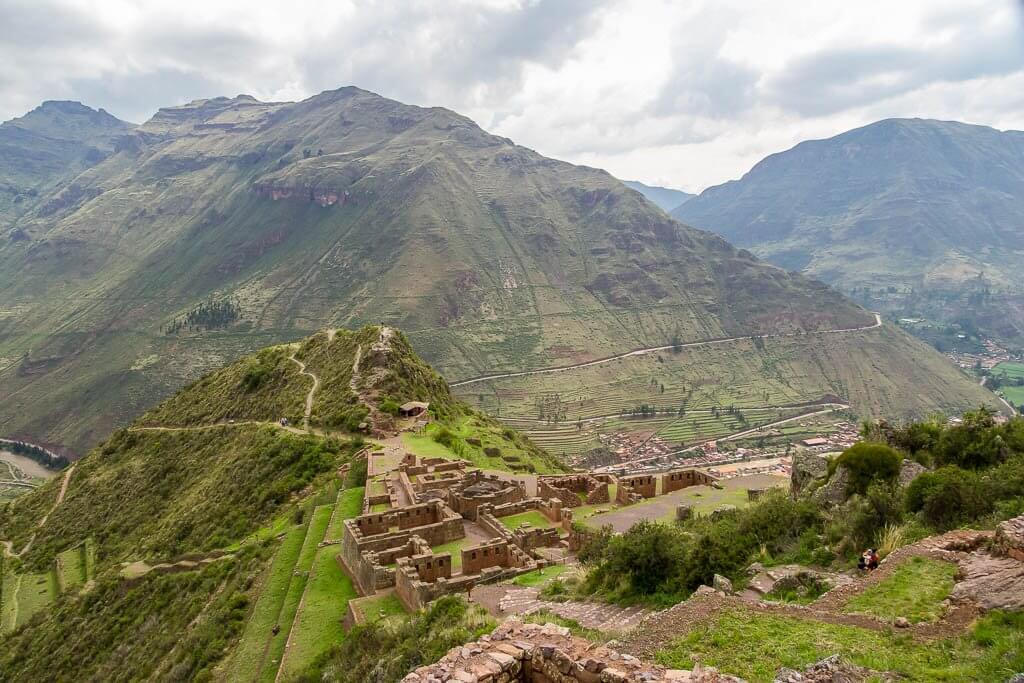
I travelled independently to Pisac from Cusco on the local buses and by collectivo. Read about the Pisac ruins and the bustling Pisac market. Or, if you are taking a tour of the Sacred Valley , make sure it includes Pisac!
Rainbow Mountain, Peru
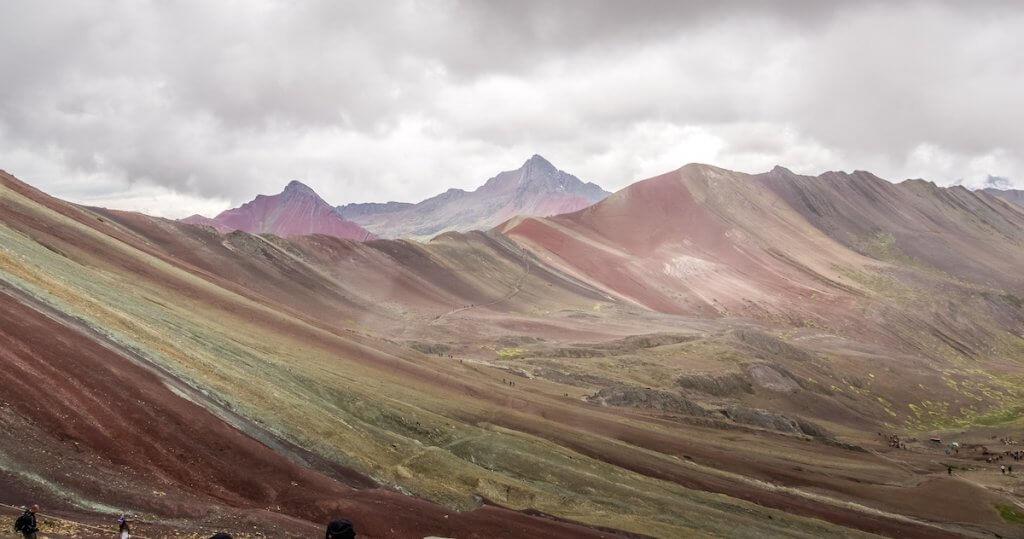
Rainbow Mountain, also known as Vinicuna, is a relatively new tourist destination and a must on a 3 month South America itinerary. If you like a little challenge and adventure, plan a trip to Rainbow Mountain! It’s a full-day trip from Cusco and the journey through the Andes is jaw-dropping. My nose was pressed to the window as we passed through minuscule Andean towns and watched llamas grazing on the hillsides. The blizzard on the hike down from the summit was unexpected!
Read up on everything you need to know before your hike to Rainbow Mountain.
Book your tour to Rainbow Mountain from Cusco
Lake Titicaca: the Islands of Uros, Amantani & Taquile
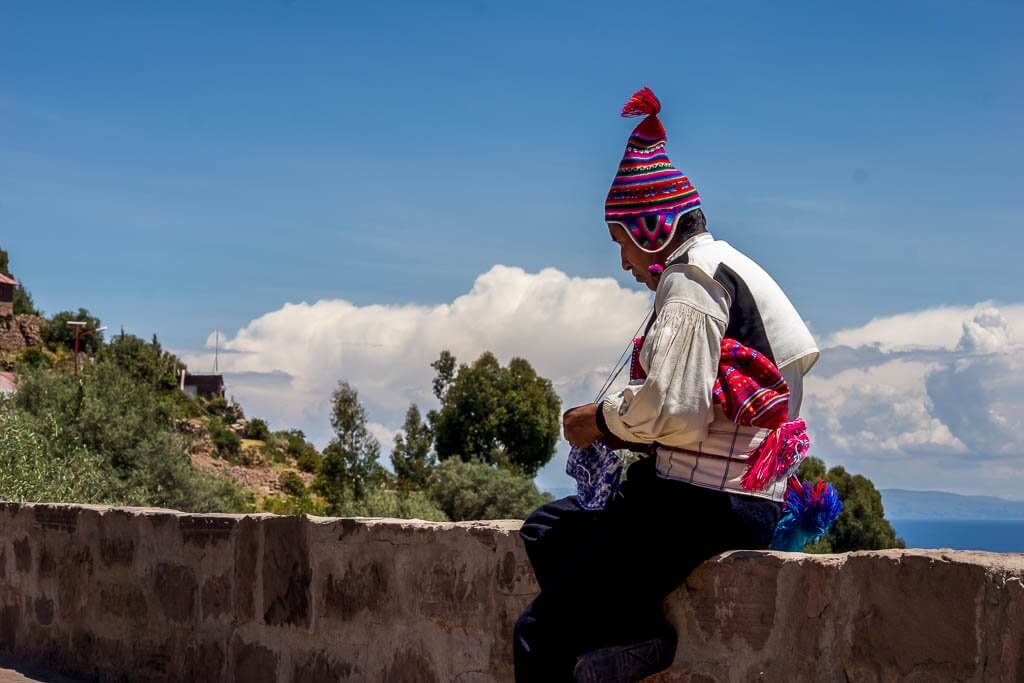
Lake Titicaca, the highest navigable lake in the world, is definitely worth adding to any South America itinerary. Head to Puno, and from there book either a day trip or an overnight homestay on one of the islands.
If you are looking to stay with a family, read this post on what to expect in a homestay on Amantani Island .
Uros, the closest island to Puno is worth a visit if you only have a short amount of time. Taquile is quite a long boat ride away but much less visited. Read about travelling to both of these islands: Islas Uros and Taquile: Step Back in Time.
Where To Stay in Puno .
Book A Tour: From Puno book a full-day tour to Uros Islands and Taquil e , or a half-day tour to the floating Uros Islands , or a 2-day trip to Uros, Amantani, and Taquile .
3. 3 Month South America Itinerary: Border Crossing Peru to Bolivia
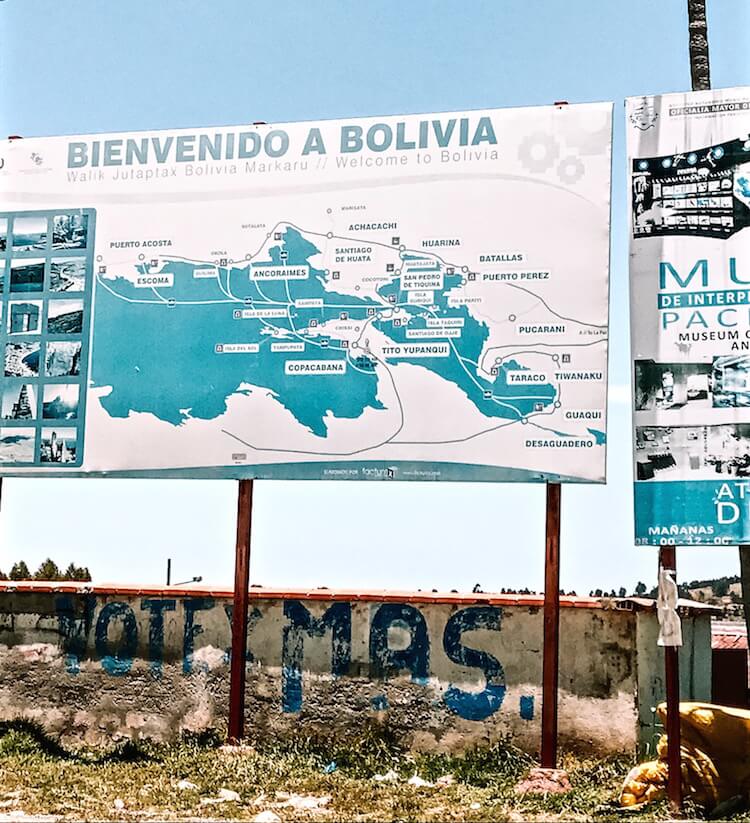
Getting from one destination to the next requires careful consideration on a South America travel route. I really wanted to cross the border solo by taking public buses but in the end, decided on Bolivia Hop. The organized bus service called Bolivia Hop picks up passengers in Puno, facilitates the border crossing from Peru into Bolivia and drops everyone off in La Paz.
Book Your Transfer from Puno to La Paz stopping at Copacabana and Isla del Sol.
4. South America Itinerary: Bolivia
Isla del sol, bolivia.
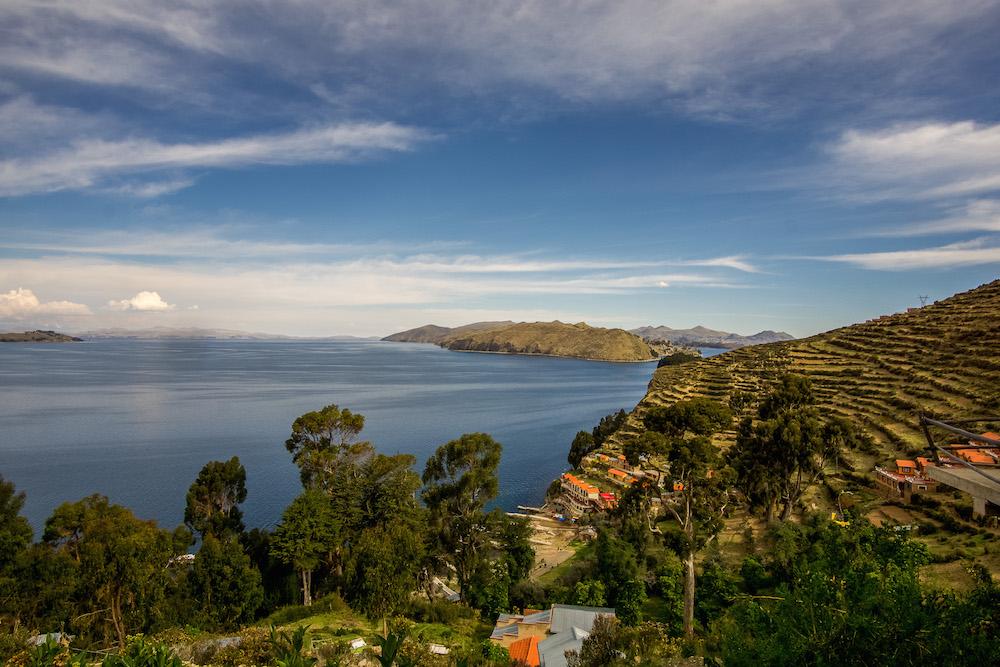
After visiting Lake Titicaca from the Peru side, Copacabana on the shores of Lake Titicaca was the first stop in Bolivia with Bolivia Hop. There was enough time in this little hippie town to scrounge up a bite to eat and take a boat to Isla del Sol, the birthplace of the sun. Inca ruins, tiny villages, terraced fields and witnessing rural life are all highlights as you hike from one side of the island to the other.
Pro Travel Tip: You can also take a tour to Lake Titicaca, Copacabana, and Isla del Sol from La Paz.
Sucre, Bolivia
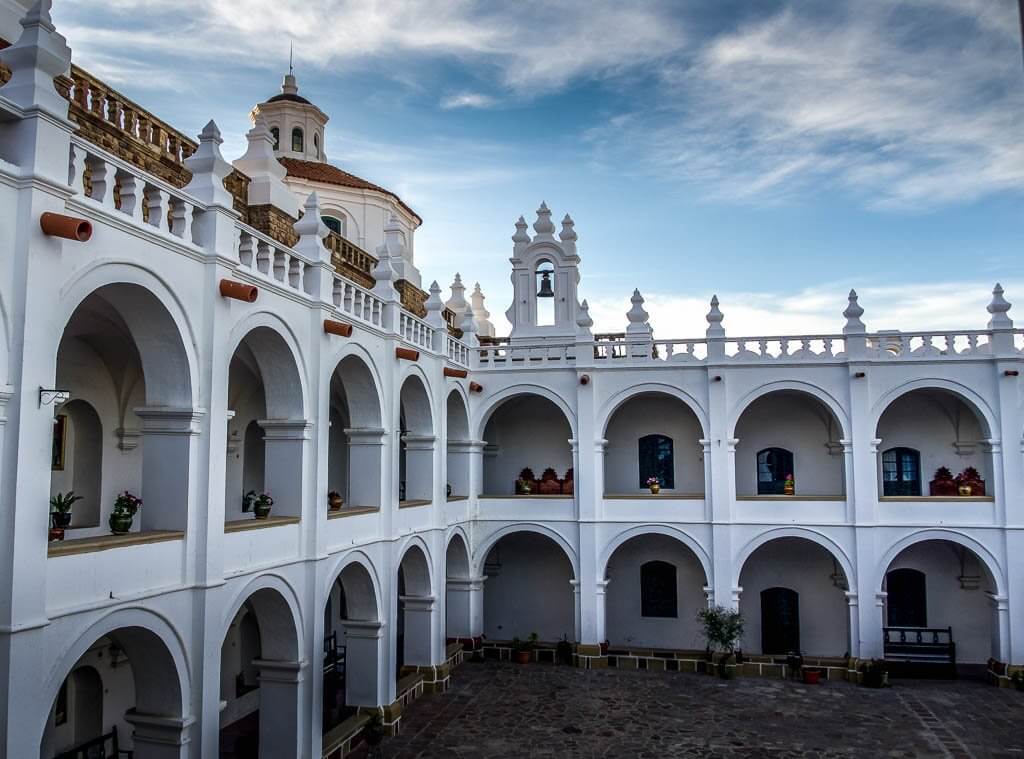
I flew from La Paz to Sucre, Bolivia to start Spanish school.
All through my travels in Central and South America, I have enrolled in Spanish language schools and lived with families to enhance the immersion experience.
Sucre was no different. Living in a family compound was a great chance to improve my Spanish, gain a different perspective on life in Bolivia and stay in one place for ten days on this 3 month South America itinerary.
The 3 Month South America Itinerary: Where To Stay in Sucre Bolivia
Uyuni, Bolivia
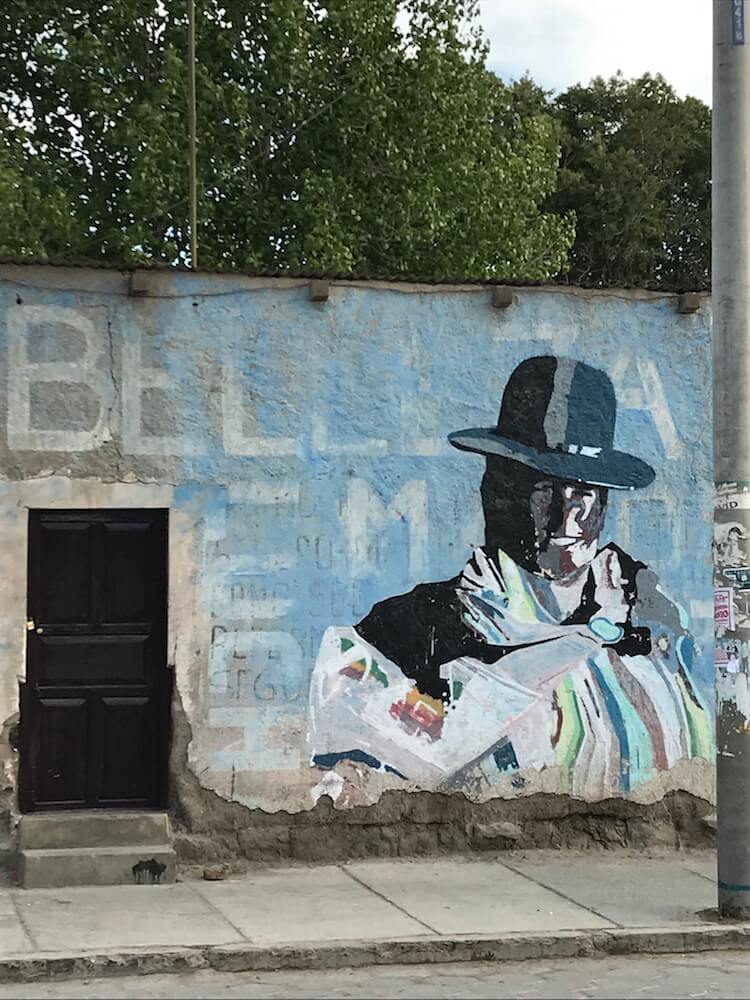
After researching how to book a tour across the Uyuni Salt Flats, I booked my tour in Sucre. There are plenty of tour operators in Uyuni and it is possible to book a tour with a tour operator in Uyuni once you arrive.
The local bus from Sucre to Uyuni is an 8-hour bus ride through very unfamiliar lunar type landscapes. There was absolutely nowhere to go to the bathroom, except a rock at the side of the road which was deemed a bathroom stop. I declined.
I was not overly impressed with Uyuni. I would not recommend lingering in Uyuni on your South America itinerary but simply use it as a starting point for the Salt Flats tour.
3 Month South America Itinerary: Where To Stay in Uyuni
Book your unique visit to the unforgettable Salt Flats from Uyuni. How will you go? On a 3-day Salt Flats and coloured lagoon tour, a Uyuni Salt Flats Luxury Tour or a sunset Salt Flats tour with wine tasting?
The Salar de Uyuni, Bolivia
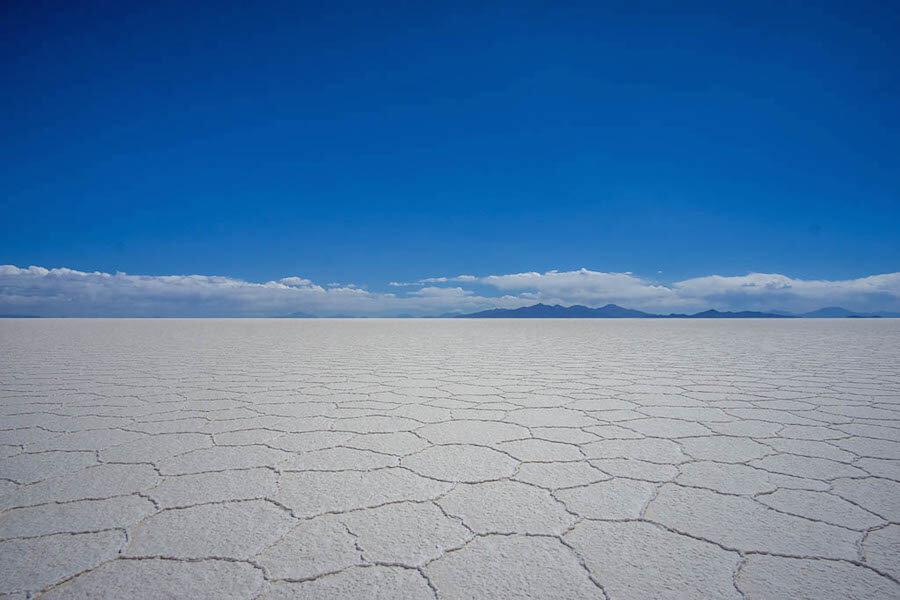
If you have time, this is a must on a South America itinerary. The largest salt flats in the world, the Uyuni Salt Flats, was a non-negotiable for me on this South America travel route. The unique landscape of infinite whiteness, the lack of perspective and standing on an ancient, ocean floor are unforgettable experiences.
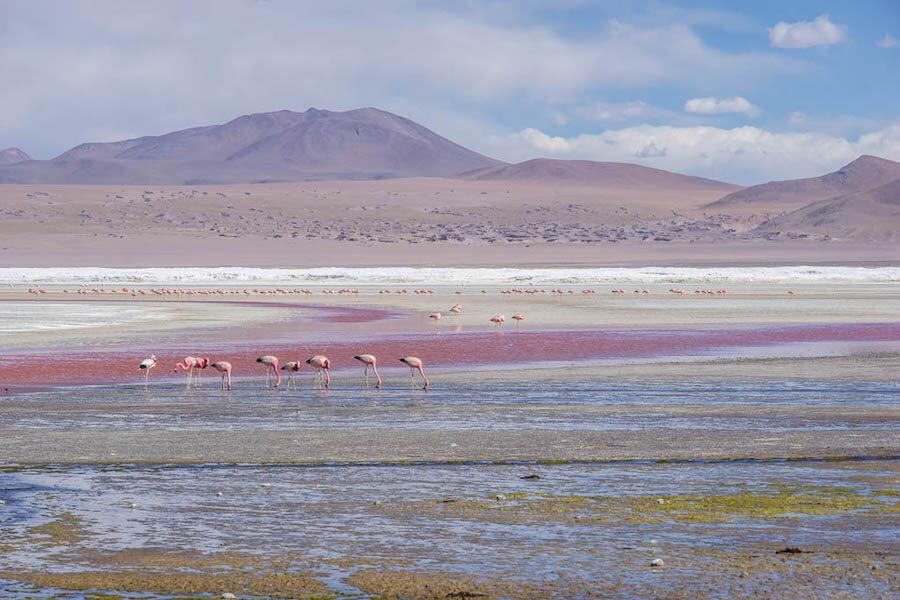
It is possible to do a day tour from Uyuni. Choosing a 3 day-2 night tour to cross the Salt Flats and the uninhabited desert and mountainous landscapes that cover the southwest corner of Bolivia is quite the adventure. Geysers, flamingoes, overnight in a salt hotel. Yes, these highlights are all part of the tour. Could backpacking in South America get any better?
Read everything you need to know before you venture on this unforgettable journey.
5. South America Travel Route: Border Crossing Bolivia to Chile
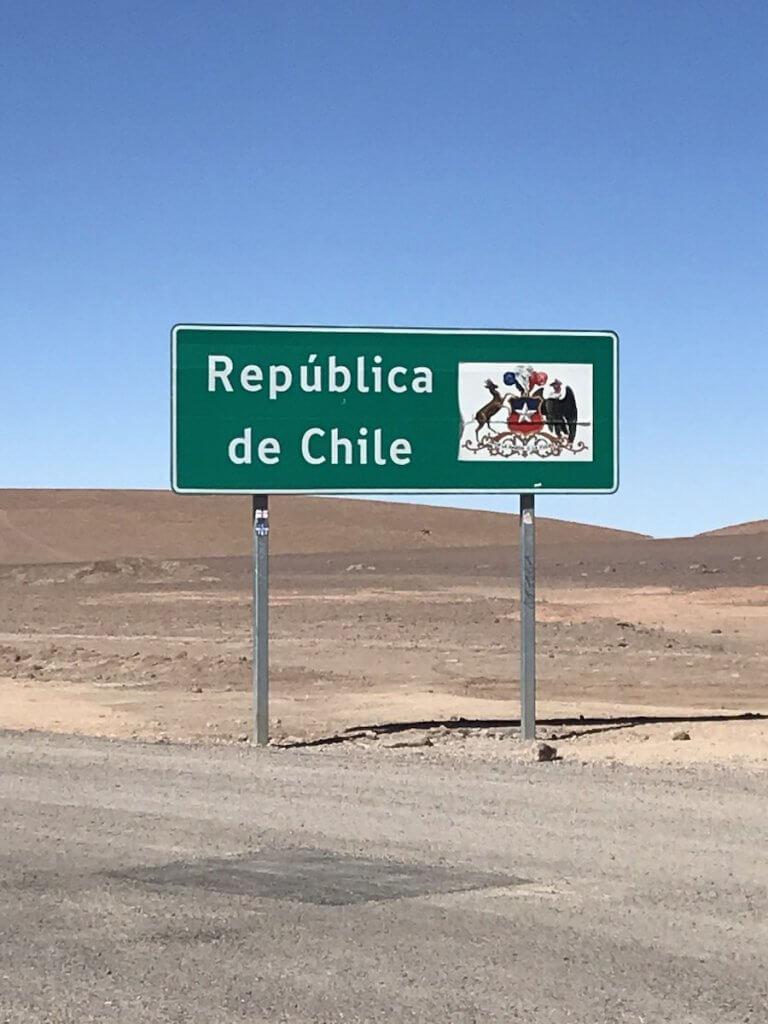
On this part of the 3 month South America itinerary, one has to decide to cross into Chile or return to Uyuni, Bolivia.
On the 3-day 2-night Uyuni Salt Flat Tour, there is an option to be dropped off at the Chilean border. There is a shuttle from Chile that picks you up in Bolivia, facilitates the border crossing into Chile and drives you to San Pedro de Atacama.
Some passengers decided en route that they were not up for the long drive back to Uyuni. The landscapes are outstanding but it is a long, rough ride. At the last minute, they were able to pay and join the group crossing the border.
6. 3 Month South America Itinerary: Chile
San pedro de atacama, chile.
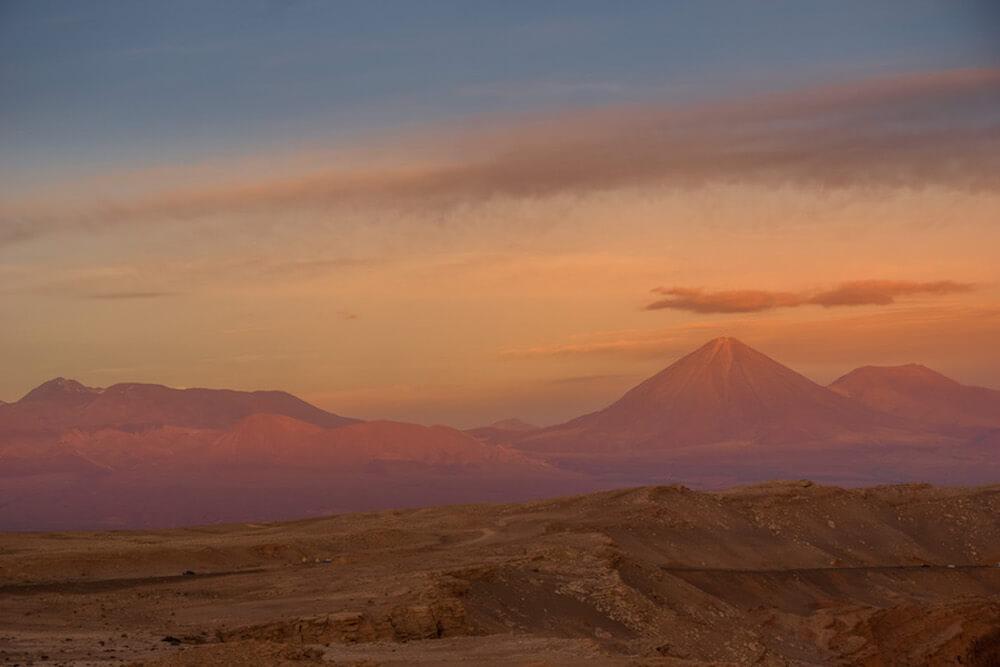
San Pedro de Atacama is a hub for exploring the Atacama Desert. The town is full of foreign tourists and Chileans exploring their own country. Despite the overabundance of tour operators, San Pedro is a chill and hip little town. Make sure it is on your 3-month itinerary in South America.
From San Pedro, there are incredible landscapes to explore, including one of the clearest night skies in the world. Read about the wondrous things to discover.
Where To Stay in San Pedro de Atacama
Book Your Tours: Don’t miss an astronomical tour or a hike to the Láscar Volcano Summit and definitely don’t miss the El Tatio Geysers !
El Tatio Geysers, Chile
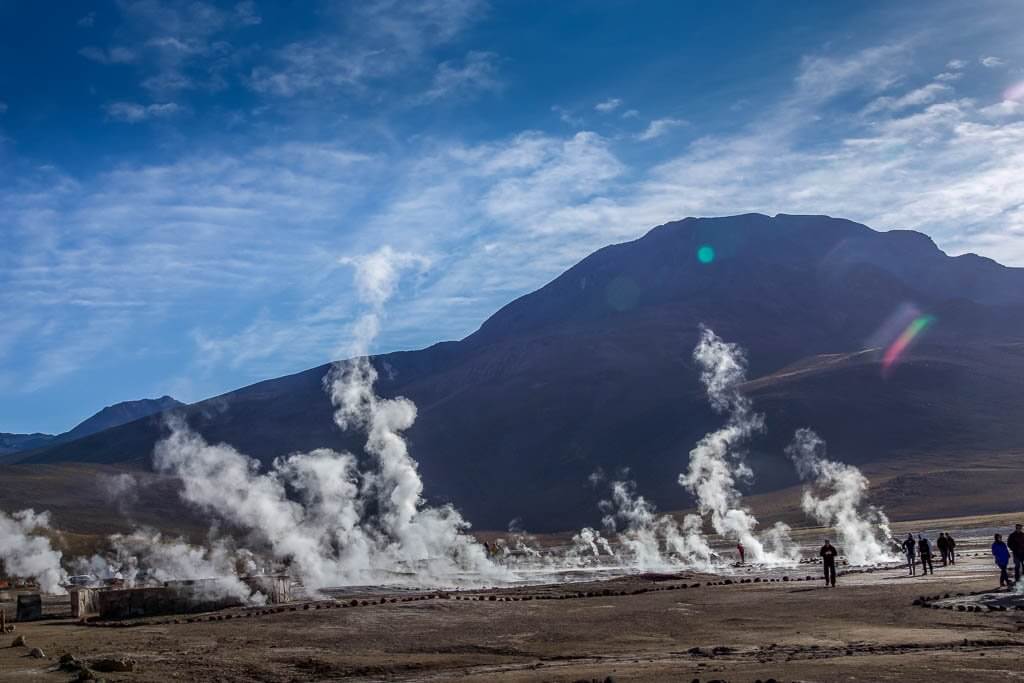
The El Tatio Geysers, the highest geyser field in the world, are a half-day trip from San Pedro de Atacama and well worth the early leaving time.
This post explains how to prepare for a visit to the highest geothermal field in the southern hemisphere.
Santiago, Chile
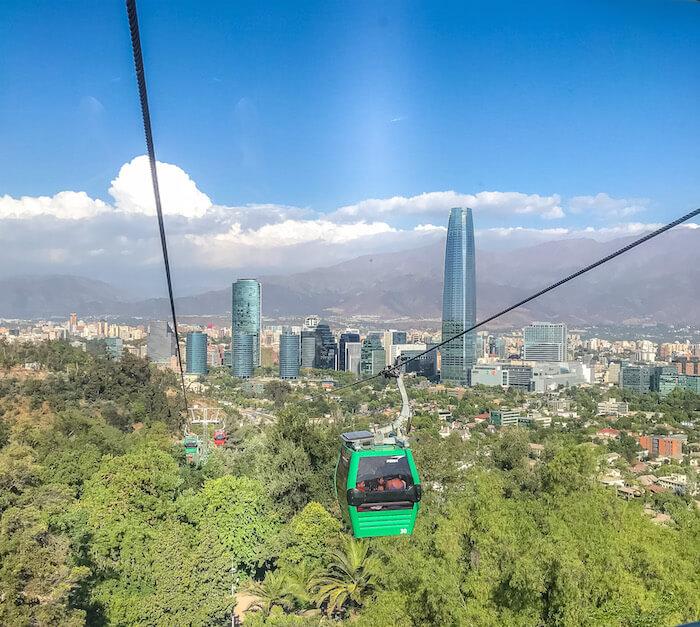
The price to travel by plane or by bus from San Pedro to Santiago were not significantly different. So I and opted for a flight to Santiago instead of a long bus ride.
Most people pass through Santiago at one point or another on their trip to Chile. Make sure you stay awhile and explore Chile’s capital city.
Read 15 Impressive Things to do in Santiago, Chile . Of course, there are more than 15 things to do in this vibrant city but these 15 will get you started.
The 3 Month South America Itinerary: Where to Stay in Santiago Chile
Book A Group Tour to Wine Country for the day or a private tour to Chilean wine country .
Valparaiso, Chile ( A Highlight of The 3 Month South America Itinerary)
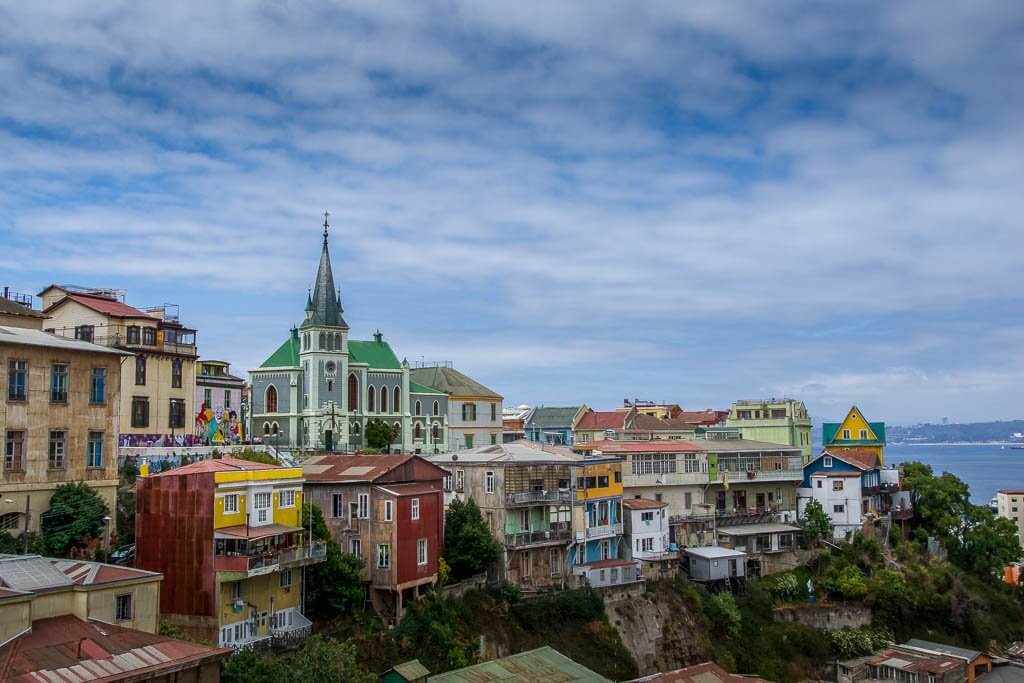
Valparaiso is full of stunning street art, historical monuments and funiculars that ease the climb up the steep streets. Valpo, as the locals call it, is a must-see destination. I would rank it as one of the best places to go in South America!
This Ultimate Guide to Valparaiso is a detailed guide on what to see and do in this port city.
Where to Stay in Valparaiso Chile
Pro Travel Tip: If you don’t have time to stay in Valparaiso, it is worth doing a day trip from Santiago .
7. 3 Month South America Itinerary: Border Crossing: Chile to Colombia
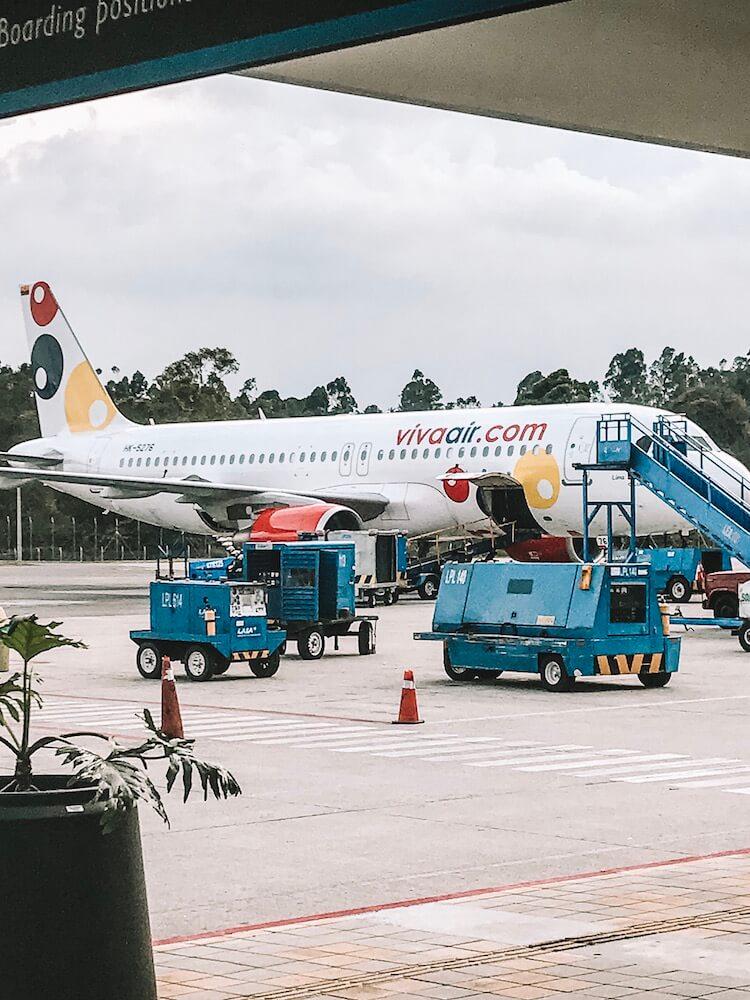
Chilling at the airport waiting for my flight, I was completely unprepared when asked by the airline for my proof of onward travel.
Read this post, Proof of Onward Travel: Don’t Make This Mistake , to avoid hassles and use a valid travel hack.
8.South America Itinerary: Colombia
Medellin, colombia.
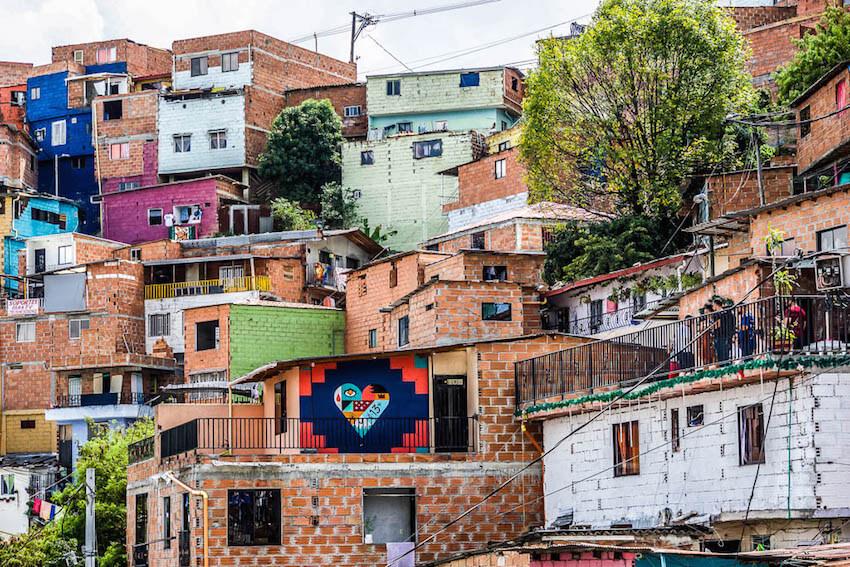
Medellin is known as a hub for digital nomads. It is also known as the former most dangerous city in the world. Comuna 13 was the most dangerous neighbourhood in the city.
Today the community is rebuilding and carving a new path. Find out more by reading this post: Comuna 13: Why it Should Be on Your Medellin Itinerary
The 3 Month South America Itinerary: Where to Stay in Medellin Colombia
Book your Comuna 13 Tour here and a tour of a Coffee Farm here
Guatapé, Colombia
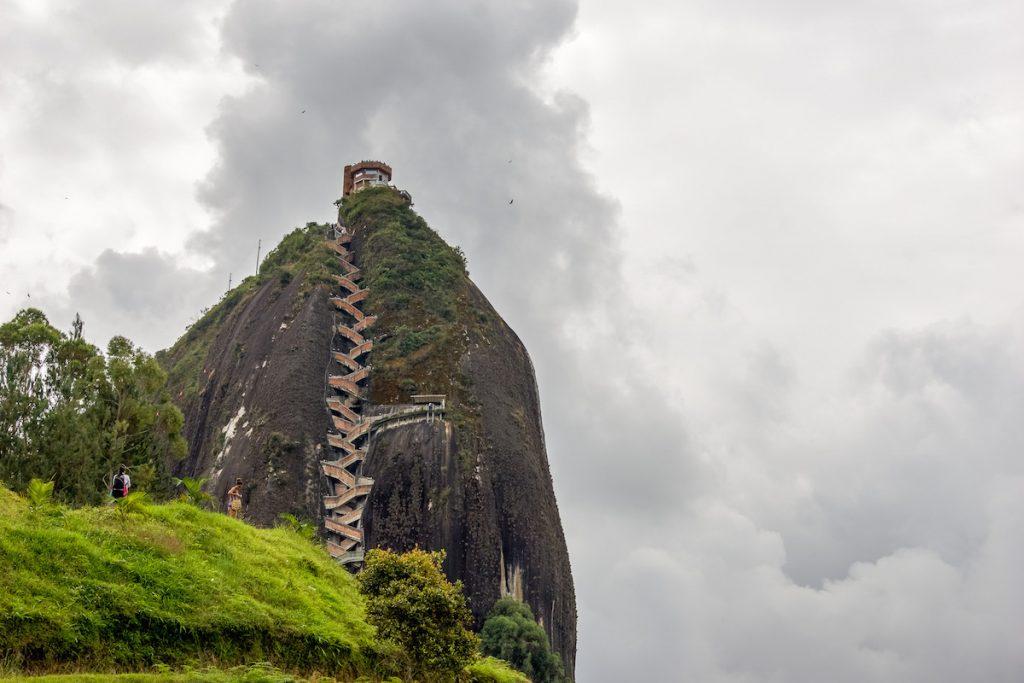
Day trips are a great way to explore a country further and on this 3 month South America itinerary, Guatapé proved that! Guatapé is the perfect day trip from Medellin. This town, full of colourfully painted houses and a lively main square, sits on the shore of a huge artificial lake.
Climb the nearby Piedra del Peñol which is just outside of Guatapé. The bus from Medellin will drop you at “La Piedra.” From Piedra del Peñol, there are plenty of tuk-tuks to take you to Guatapé.
If you are taking the 2-hour public bus to Guatapé, be sure to purchase your return bus ticket when you arrive.
Book Your Organized Tour from Medellin to Guatapé here.
Salento, Colombia
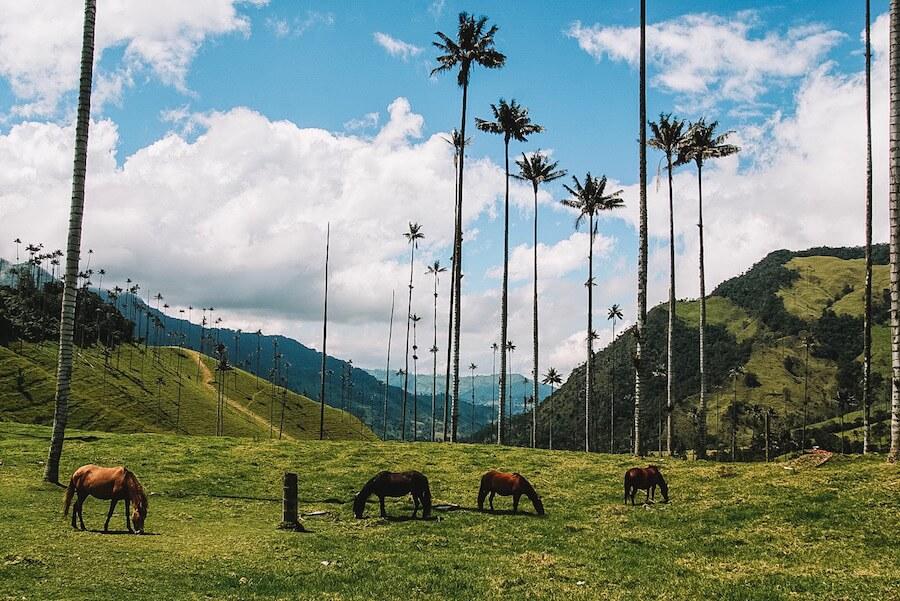
If you have time in Colombia, add Salento to your 3 month South America itinerary. Salento is the perfect place to visit a coffee farm and take a Willy’s jeep out to the Cocora Valley to hike amidst Colombia’s national tree, the wax palm.
Find out all the details right here: Salento Colombia: My Favourite Town in Colombia.
W here to Stay in Salento
The joyous trek through the Cocora Valley – book a guided trek here and a small group tour to a coffee farm here .
Jardin, Colombia (A favourite stop on the 3 Month South America Itinerary)
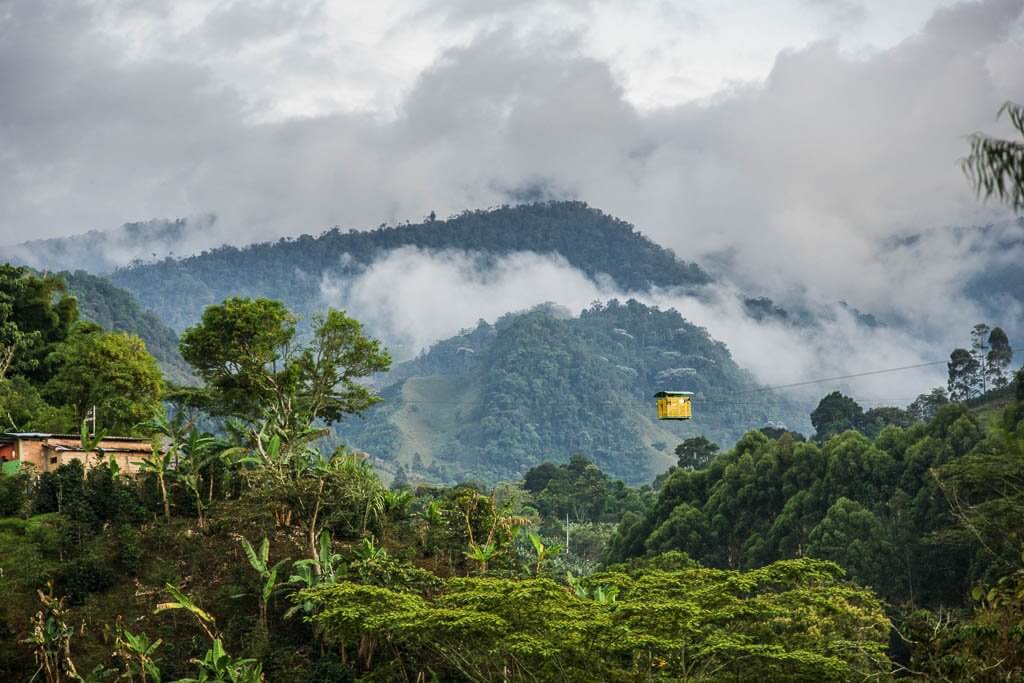
It is a journey to get to Jardin way up in the Andes Mountains and an unforgettable destination. If you like authentic villages, this one is for you. I say it is a “must-see” on your 3 month South America itinerary.
Here are the details: The 5 Reasons You Just Have to Visit Jardin
Where to Stay in Jardin Colombia
Book your horseback riding tour to a waterfall here .
Santa Marta & Minca, Colombia
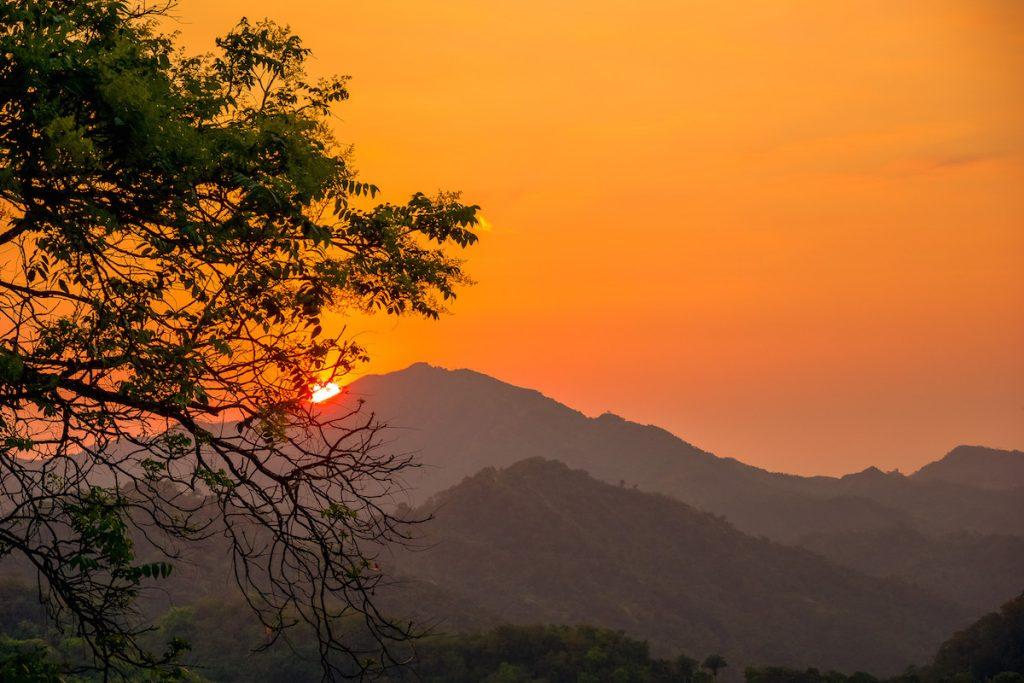
From Santa Marta take the bus to Minca. It’s 600 m up in the Sierra Nevada mountains. It’s cool (both rustically hip with cooler temperatures), has organic coffee farms, gorgeous birds and stunning views.
Most people travel through Santa Marta as it is the gateway to Tayrona National Park. It’s not really posted anywhere that Tayrona National Park is closed in February. Oops. So wish I had been able to take a day trip like this one .
The 3 Month South America Itinerary: Where To Stay in Santa Marta Colombia
Cartagena, Colombia
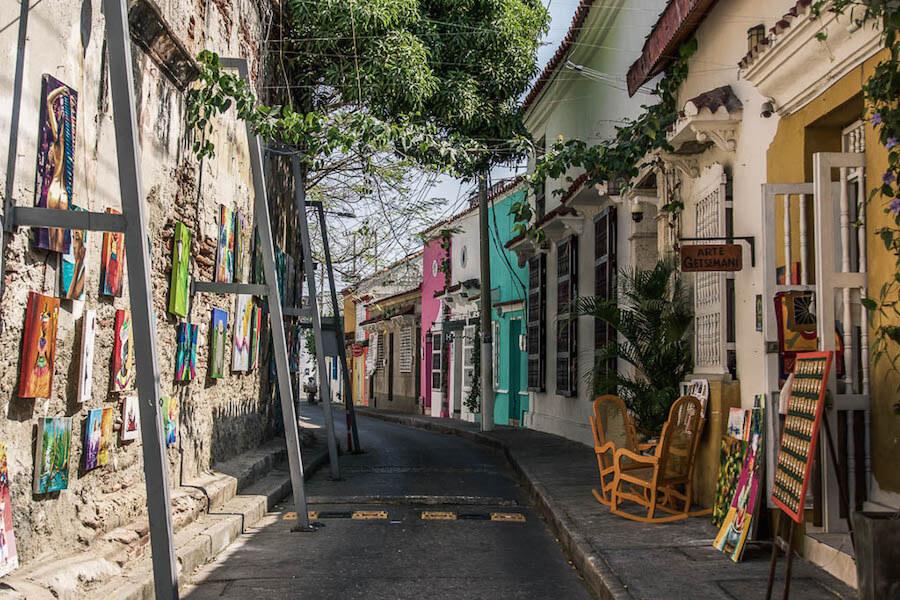
Another must-see on your South America itinerary is Cartagena. Cartagena is Colombia’s gem sitting on the Caribbean Sea. The UNESCO city is the perfect place to get lost amidst colourful façades on twisting cobblestone streets. Wandering the streets of Getsemani, camera in hand, was one of my favourite things to do in Cartagena.
Read this full guide on Things to do in Cartagena, Colombia: The Take it Slow Guide
Where to Stay in Cartagena Colombia
How about enjoying a Catamaran trip to the Rosario Islands ?
This 3 month South America itinerary checked all the boxes. I feel like all of my stops were highlights on this South America itinerary. Every stop was perfect for any curious and adventurous traveller. You’re going to fall in love with South America.
More Travel Info
If you’re travelling as a solo female traveller read my post: S olo Travel in South America | Is it Safe?
Need packing inspiration? I travelled for 3 months with changing temperatures (yes, Rainbow Mountain was cold at the top) and took a carry-on sized suitcase for all my belongings. Read how here: Wondering How to Pack Light? Tips from a Minimalist Traveller
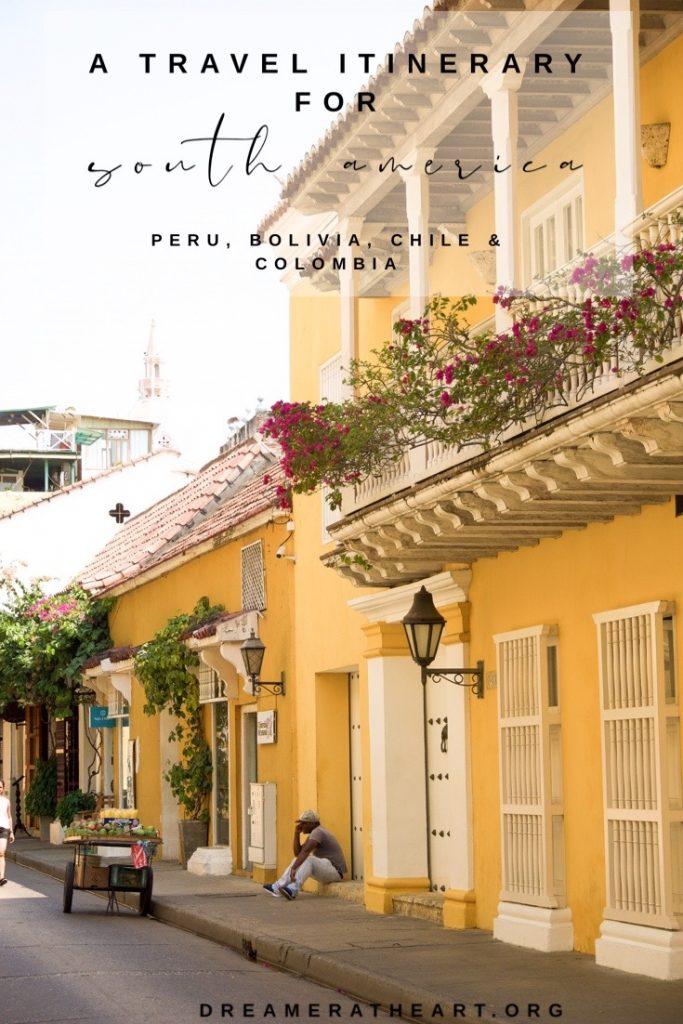
You might also like...
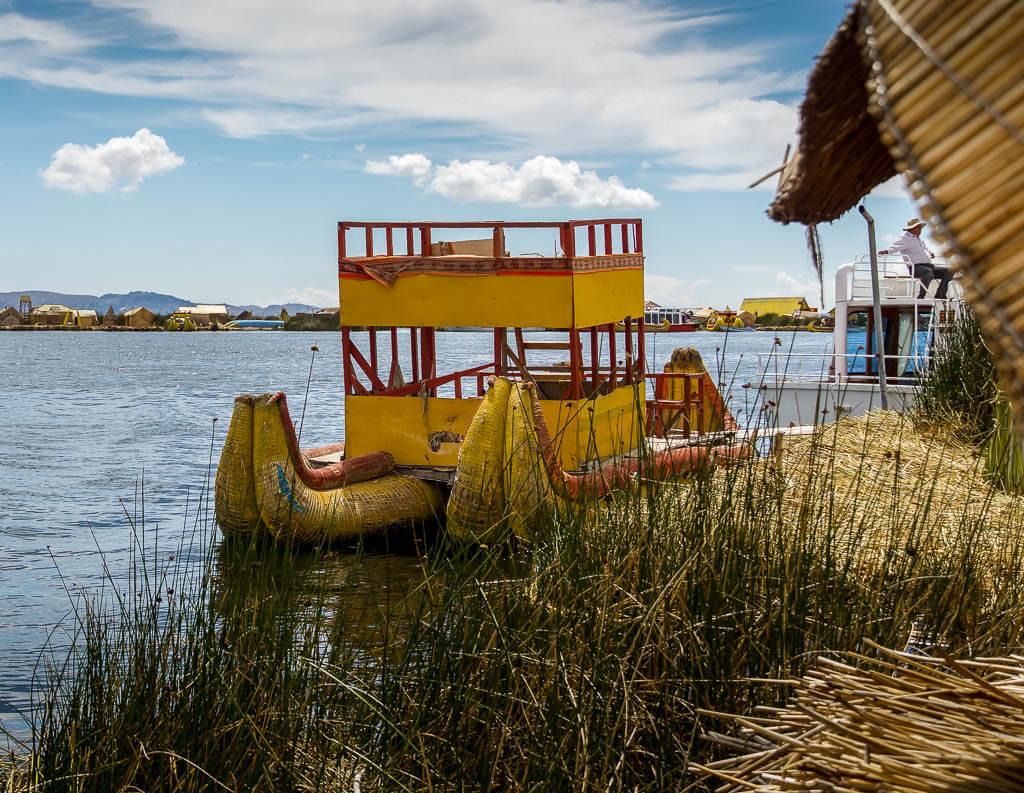
Alison Browne
Creator and Founder of Dreamer at Heart Alison, a Francophile from a young age, is following a long-held dream and has been living in Paris since 2020. Her passion for uncovering Paris and discovering the regions of France has resulted in an expertise about France that she loves to share in her articles. Also a solo traveller, Alison shares her experiences of solo travel to many corners of the world. Alison helps over 65000 readers a month plan their trips.
Reader Interactions
January 13, 2020 at 10:02 am
wow. what an amazing itinerary. So many must-see places!!
January 13, 2020 at 1:31 pm
South America is full of wonderful places to see. You could spend a lifetime exploring the continent!
January 15, 2020 at 4:42 pm
Wow, amazing photos! I wish i could go right now…
January 20, 2020 at 9:11 am
I’ll go with you! Where shall we start? I would happily go back to all 4 countries and explore further afield.
January 24, 2020 at 10:10 am
Where would you start?!
January 19, 2020 at 6:38 am
This is a totally timely blog post to find. We leave on Wednesday to travel around South America for 2 months. I love some of the sights you visited. Some spots are on our itinerary. And others like Bolivia will need to wait for another trip. It is clear from your blog post that our 2 months will just be a small taste test. We have some of our stops planned. But this will be good for some of the places we plan to wander on our own. I have pinned this and will use it as a reference guide along the way.
January 24, 2020 at 10:16 am
I hope you have a marvellous journey. I loved South America and my three months was indeed just a taste also. Where are you starting the trip?
January 19, 2020 at 12:14 pm
What an incredible journey you had! I am going to add it to my bucket list. I am working hard to get myself bilingual. Right now my Spanish is only okay.
January 24, 2020 at 10:17 am
Every bit of Spanish adds to the depth of the journey. I am a solid beginner and had many broken conversations with locals. Being bilingual would have been so great!
January 19, 2020 at 3:09 pm
Wonderful post! It’s amazing how similar our travels have been through Peru and, of course, Colombia, where we’re currently based in Medellín. You’ve given us lots of good info for our future travels to Chile and Bolivia. Thanks for this!
January 24, 2020 at 10:18 am
I wish I had known you last year when I was in Medellin for about 6 weeks. I hope you enjoy your future travels in Chile and Bolivia. I feel as though I just scraped the surface in both countries but it was enough of a taste to plan a return journey.
January 19, 2020 at 6:57 pm
the whole trip looks fantastic, but if I had to pick one country, Bolivia looks beautiful. Great post.
January 24, 2020 at 10:20 am
Yes, it really was an amazing trip! All of the countries were unique and spectacular! Bolivia’s landscapes were astonishing!
January 20, 2020 at 2:06 am
These countries in South America have been in my sights for sometime. Your journey and insightful information has fueled my desire.
Ah! That is great news! It is an amazing continent to explore!
January 20, 2020 at 11:31 am
Looks so stunning! South America looks like such a unique travel destination, Bolivia is one that is really catching my attention.
January 24, 2020 at 10:21 am
Bolivia is amazing. The trip across the Salar de Uyuni is unforgettable!
January 20, 2020 at 12:38 pm
I have always wanted to expand my Spanish. I never considered going to a Spanish Language School and homestay as an anchor for long term travelling. That could be the perfect bridge between time you’re out on the road and time that you want to be resting / stationary. As a writer, I could see how you could use that to catch up on the work you generated from your travels.
January 24, 2020 at 10:23 am
I love the homestays. They are quite intense though as all communication is done in the language you are learning. Also, there is plenty of homework to do for your Spanish classes. Plus you want to be exploring the location in which you are staying. So .. as per usual, finding the time to write is a struggle!!! But – I wouldn’t have it any other way. My homestays in Granada, Spain and Antigua Guatemala were also outstanding.
January 22, 2020 at 11:04 pm
Ooh, pinning this to re-read later! We’ve been talking about South America for our next big trip, and have been looking pretty seriously at Peru and Bolivia. All of this information is so helpful – thank you!
January 24, 2020 at 10:24 am
So glad the information is helpful. Peru and Bolivia are fabulous countries to explore.
January 23, 2020 at 3:28 am
What an amazing 3-month journey you had visiting all of these wonderful places and experiencing the people and their culture. You are an inspiration to this almost 50 traveler! What was your favourite? I am sure it would be so hard to choose. Bolivia and Peru would be mine.
January 24, 2020 at 10:25 am
Thank you, Renee. Each country was unique in its own way and my experiences were so varied. Hard to pick. Loved them all! Would return to each of them in a heart beat!
January 23, 2020 at 10:53 am
I am hoping to visit Colombia this year. I had it on my list for last year, but I was a bit worried about the protests going on. You mentioned some other locations in Colombia that I haven’t thought about and may have to consider them now 🙂
January 24, 2020 at 10:26 am
Colombia is full of travellers of all ages. It is a wonderful place to explore. Enjoy!
January 23, 2020 at 11:52 am
What a great post with a ton of info! Of all the countries you went to, Colombia is my favorite, but Bolivia is high on my travel wish list. Isla del Sol looks amazing, and of course I’d also like to see the salt flats while there. Your suggestion to consider the weather is a great one. I think there’s this common misconception that all of South America is more or less hot all year round, and that is simply not true. In fact, I think almost all the places I’ve been in South America have had comfortably mild temperatures!
January 24, 2020 at 10:27 am
Colombia is a wonderful country to explore. I did pull out that squashable down jacket on a few occasions!
January 24, 2020 at 4:56 am
What a great travel route! My husband and I were just talking about South American travel, particularly to Colombia. I would love to visit Chile and Peru, and also see Macchu Pichu in real life!
January 24, 2020 at 10:28 am
Seeing Machu Picchu was a highlight for sure! That’s one thing I love about travel. You can read about a place but when you are actually standing there, you can feel it and make your own impressions.
July 6, 2020 at 9:19 pm
You sure packed in a lot to see in 3 months! Wonderful post! Cheers!
July 13, 2020 at 10:15 am
Thank you- it was a wonderful journey. I would love to return and slow it all right down… spending months just living and exploring… (post Covid-19, of course).
Leave a Reply Cancel reply
Your email address will not be published. Required fields are marked *
Save my name, email, and website in this browser for the next time I comment.
Have Paris travel questions? France? Solo travel?
Contact me at
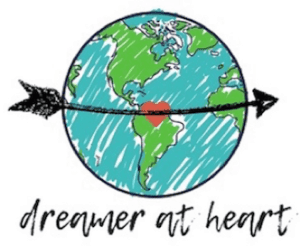
Dreamer at Heart is a participant in the Amazon Services LLC Associates Program, an affiliate advertising program designed to provide a means for sites to earn advertising fees by advertising and linking to Amazon.ca and affiliated sites. Amazon and the Amazon logo are trademarks of Amazon.com, Inc, or its affiliates.
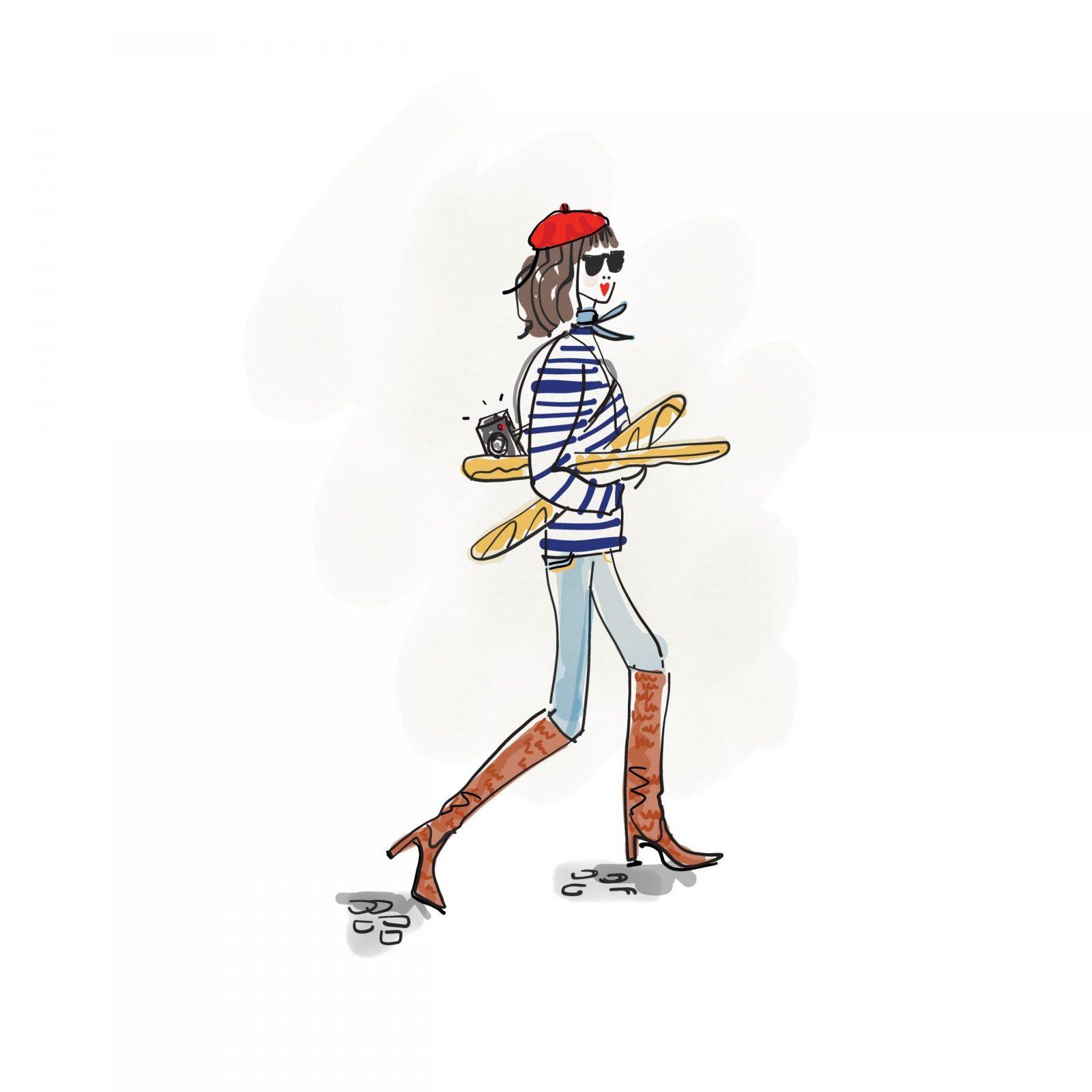
Přejít k obsahu | Přejít k hlavnímu menu | Přejít k vyhledávání

- Three months traveling through South America on a budget
- < Destinations
Destinations
By David Szmidt October 6, 2022
By David Szmidt | October 6, 2022
Last update: October 17, 2022
South America is one of the most amazing continents in the world, but if you’re thinking about going, you’ll need to do some planning. Budget, paperwork, when to go, what to pack, vaccinations, which countries to visit, and how to get around… we’ve got all this covered
This is Kiwi.com ’s guide to South America , and it’s in two parts. Firstly, we’ll look at some of the most common questions asked about backpacking around South America , and then we’re going to talk to someone who’s actually done a lot of the things you’ll want to do. Let’s explore!
How much money do you need to backpack around South America?
A typical budget is probably around €1,000 a month, but will, of course, vary depending on where you stay, which country you’re in, and what you decide to do. Use €1,000 as an estimate and adjust accordingly.
What are the best countries to visit in South America?
‘ Best ’ is, of course, very subjective. What do you want to do? Let’s take the five most popular countries and see why people go there.

Buenos Aires , the capital, is one of the most colorful and cultured cities in South America, with tango rhythms and passionate people. The scenery is spectacular as well, giving you a little bit of everything: rainforests in the subtropical north, the great plains that are home to the gauchos (Argentinian cowboys) and vineyards , and the mountains and ice fields of Patagonia.

The country with a reputation as the place for a party comes in second. No wonder, with cities like Rio de Janeiro and São Paulo to explore. Spend your days on the beach , your nights in the bars, and when you’re exhausted from city life, explore the jungles of the interior. The Amazon is one of the great natural wonders of the world, and ethical/ecotourism is a great way to see it for yourself.

A narrow strip along the edge of the continent, Chile includes the wonderful city of Santiago, from which you can explore further. Skiing in the Andes, exploring the almost martian landscape of the Atacama Desert, or heading to the end of the world in southern Patagonia, Chile is almost South America in a nutshell.

Many people visit Peru because it’s home to Machu Picchu , one of the most-visited sights in South America, but stay to explore the colorful towns and other places that hark back to the Incan civilization, such as the city of Cusco.
View this post on Instagram A post shared by Kiwi.com (@kiwicom247)
For years a bit of a no-go spot, Colombia is now immensely popular. Cities like Bogotá , the capital, and Medellín, attract visitors for their lively arts scenes and bouncing nightlife. There’s history in places like Cartagena, and beaches that rival any of those on the islands of the Caribbean.
When’s the best time to travel?
As with what you want to see, this will depend on what you define as ‘best’. The one key thing you have to remember if you’re coming from the northern hemisphere, the seasons are the opposite. However, it’s also, as mentioned, a vast continent, so if you’re planning to spend time in the north (Colombia, Venezuela, and so forth), try May to September. The very south — Chile, Argentina and the like — are best between October and April .
Things to book before traveling to South America
If you’re a planner, this sort of trip might not be for you! Of course, you’ll have places you’d like to go, but aside from flights onto the continent and back again, the best thing to do is decide when you’re there. Internal travel is pretty easy (and great value, and popular, as we’ll see), and while there are things that need booking (the Inca Trail or an Amazonian trek, for example), the best thing to do is use your judgment. After all, in most cities, there’s such a wide variety of places to stay that if you’re booked in advance for five nights somewhere that turns out to be a bit grim, that’ll either dampen your enthusiasm, or cost more again if you decide to move somewhere else.
Do you need a visa to travel to South America?
Visa requirements will depend on your nationality, naturally, but if you’re an EU citizen, it’s unlikely you’ll need one before you go. Most countries will grant tourists a 90-day travel visa upon entry, and this is also true for US , Australian, New Zealand , Canadian (and a whole bunch of other) travelers. You will need a passport that’s valid for at least six months from your entry date, but to be absolutely 100% sure, check each country’s individual guidelines before you go.
Do you need vaccinations for a trip to South America?
The coronavirus pandemic made vaccination restrictions one of the most-searched topics around, and people quickly realized that things could change very quickly. The same applies here. Check each individual country you’re planning to visit at least three months before you travel, but you’ll probably need a vaccination against yellow fever at the very least. Brazil, for one, will need a yellow fever vaccination certificate to grant you a tourist visa at the border.
You might also consider malaria tablets if you’re thinking of traveling into the rainforests, and if you’re heading into the mountains , there are also pills you can take to combat altitude sickness . This all depends on your itinerary of course, but it’s still good to keep in mind.
With the basic questions answered, we talked to Bára Vrzáková, an adventurous traveler who spent six weeks backpacking through Chile, about her experiences

“It’s not exactly the same, but what I experienced in Chile gave me a pretty good idea of what traveling in South America is about.” That’s true, and we don’t want to fall into the trap of thinking the whole continent is one homogenous place, but talking to Bára gives a vivid impression of many common aspects of such an adventure.
“Overall, prices were comparable to, say, a small town in Spain . A bit more [than the Czech Republic , where Bára is based], but not much. What did surprise me was the fact that you could pay by card pretty much everywhere — a couple of people I met in a rural area took me to a bar that was basically a wooden hut, but even there you could pay by card. Oh, and the beer is great in Chile! Maybe it’s something to do with German settlers coming there, I don’t know!”

Bára is a graphic designer, and one of the ways she funded her trip was by working on a farm. “It was like a farm with a restaurant attached. Or a restaurant with a farm attached, I don’t know which!” Having looked on workaway.info for something suitable, she found this project.
“It was in northwest Patagonia. You just find a project you like, message them, and see what happens. This particular project wanted people who could bring something extra, so I was doing the basics like picking and washing carrots, you know, but also doing graphic design. They wanted illustrations of the flora and fauna of the farm and surroundings, so when people walked around the farm and gardens , they’d see my illustrations and read a small explainer. Guests would know what flower or herb they were looking at and, therefore, what they were eating. In exchange, I got free accommodation and free food .”
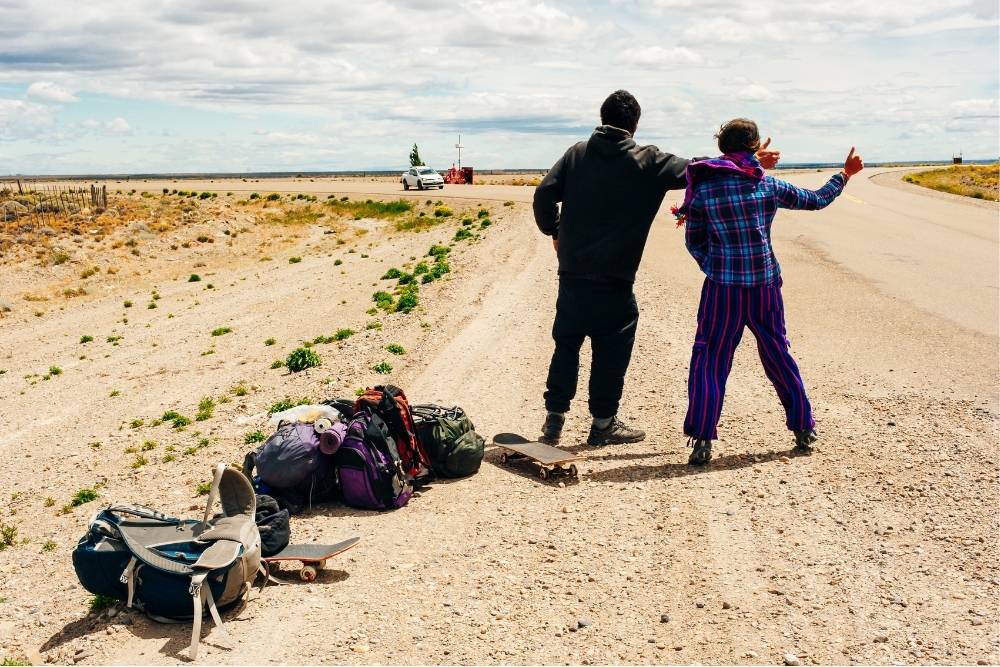
Exploring the region was easy as well. “ Buses are super comfortable, and probably the most common way to get anywhere, particularly long-distance overnight buses. On those long journeys, you get a blanket and a snack, which was a nice surprise. Everything is easily bookable online; I’d like parts of Europe to reach the comfort and ease of some parts of South America!
“Hitchhiking is common too, and seems generally safe in rural areas, if you’re traveling between small towns or villages. Stick your thumb out and either the first or second car will stop.
“People were generally just really nice. Even when I got a bit lost in Santiago, the absolute first person I asked for directions was happy to help. The second person even gave me their map!
“You do need to speak at least a little bit of Spanish, ‘survival Spanish’, let’s say. ‘Where is the…?’ ‘Can you take me to…?’ and so on, but communication is easy, and when people find out you’re a foreigner, they love to try and chat.”
@kiwi.com Do you agree?👽 #whytravel #alwaystravel #travellife #traveltiktok #travelblog #cheapflights #freetravel #budgettravel #cheaptravel #wehacktravel #wehackthesystem #kiwicomtravel ♬ original sound – Kiwi.com
It seems that one of the perks of traveling like this is that you meet a lot of like-minded people . “I’m still in touch with a couple of the people I met” says Bára, but she also told me that one of the disadvantages — if you see it that way — is that hostels are full of (generally European) tourists, all trying to do the same, to create their own adventure . Couchsurfing is still a big thing though, and she found this was one of the very best ways to meet the locals and discover things she’d never have found by herself.
A South American adventure just for you
@kiwi.com You’re on the right track, if you’ve been looking for cheap flights!😇 #cheapflights #freetravel #budgettravel #cheaptravel #wehacktravel #wehackthesystem #kiwicomtravel #HavaianasLivreDeCliches ♬ BORN FOR THIS – Foxxi
No matter what you choose to do, how you travel, or where you go, Kiwi.com is the place to be for low-cost travel on planes, trains and buses. Try using Nomad to plan a multi-city trip, set up a price alert to book when your flight drops to a price you like, or create itineraries that wouldn’t usually exist using self-transfer .
Kiwi.com’s travel hacks will help make your South American adventure even better.
Did you like this article? For more travel inspiration, visit Kiwi.com Stories .
Argentina Bogotá Brazil Chile Colombia Peru South America
Popular routes on Kiwi.com
- Cheap flights from Dubai to London
- Cheap flights from Vilnius to Tenerife
- Cheap flights from Nairobi to Eldoret
- Cheap flights from Tenerife to Vilnius
- Cheap flights from London to Prague
- Cheap flights from Barcelona to Tenerife
- Cheap flights from London to Athens
- Cheap flights from Cairo to Dubai
- Cheap flights from Berlin to Istanbul
- Cheap flights from Istanbul to Baku
- Cheap flights from London to Warsaw
- Cheap flights from London to Lisbon

World Travel Hackers: How to avoid paying at the airport for oversized baggage
Don’t you just hate it when airlines charge you extra simply for bringing cabin baggage? Our World Travel Hackers share their tricks for avoiding these fees, and they take on more budget travel challenges

World Travel Hackers: Exploring Bohol, the Philippines on just €20
Can ChatGPT work as a travel guide? Plus, see how Kiwi.com’s newest travel hack works, and how to explore Medellín, Paris, and Bohol on a budget

The 10 hardest marathons in the world
These 10 races are some of the toughest on the planet. Steep, hot, in thin air or other challenging conditions, these 26.2-mile runs show that not all marathons are created equal

Top fun facts about flags
Here are some interesting things you might not know about flags. Which flags are not rectangular? What is the study of flags called? What do the stars mean on some national flags, and which flag is the oldest? Find out here…

These are the airlines with the most legroom
Here are the best airlines to choose if you want the most legroom in economy. We look at the US, Europe, Asia and beyond to find the airline to choose for flying in comfort

10 of the most amazing natural phenomena from around the world
Check out this list of the most interesting and incredible things you can see in nature around the world. The best part about these 10 crazy natural wonders? You can see many of them for free!

David Szmidt
David is a lead writer for Kiwi.com, as well as a football-watcher, music-listener and beer-appreciater. @UtterBlether

Fly Inside Thailand on the Cheap

Weekend in Barcelona: How to See it All Without Spending it All

How to Choose a Greek Island to Come Back to For the Rest of Your Life

3 Months in South America: An Itinerary
Posted on Published: January 12, 2021 - Last updated: April 16, 2023
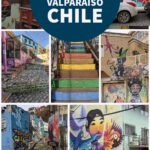
I left for three months of trying out a digital nomad lifestyle in South America days after finishing graduate school. It was a whirlwind season of life, in which I had the opportunity to spend extended time in Chile , Argentina , and Peru .
Here’s how I spent three months in South America without bumping up against yellow fever infection risks. Below is the list of cities/regions I visited, time spent there, and some of my favorite highlights.
Santigo, Chile
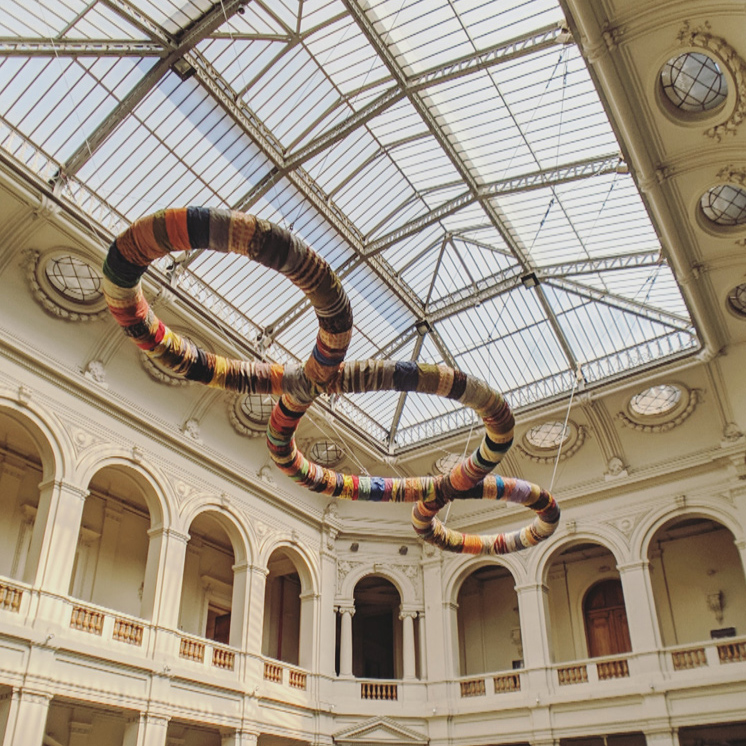
Time Spent: 5 days
Highlights: Bellavista neighborhood street art, national library, free art museums.
Punta Arenas, Chile
Time Spent: 1 day
Highlights: my air B&B host took me on a beachcombing, mushroom hunting, and berry picking adventure.
Puerto Natales, Chile
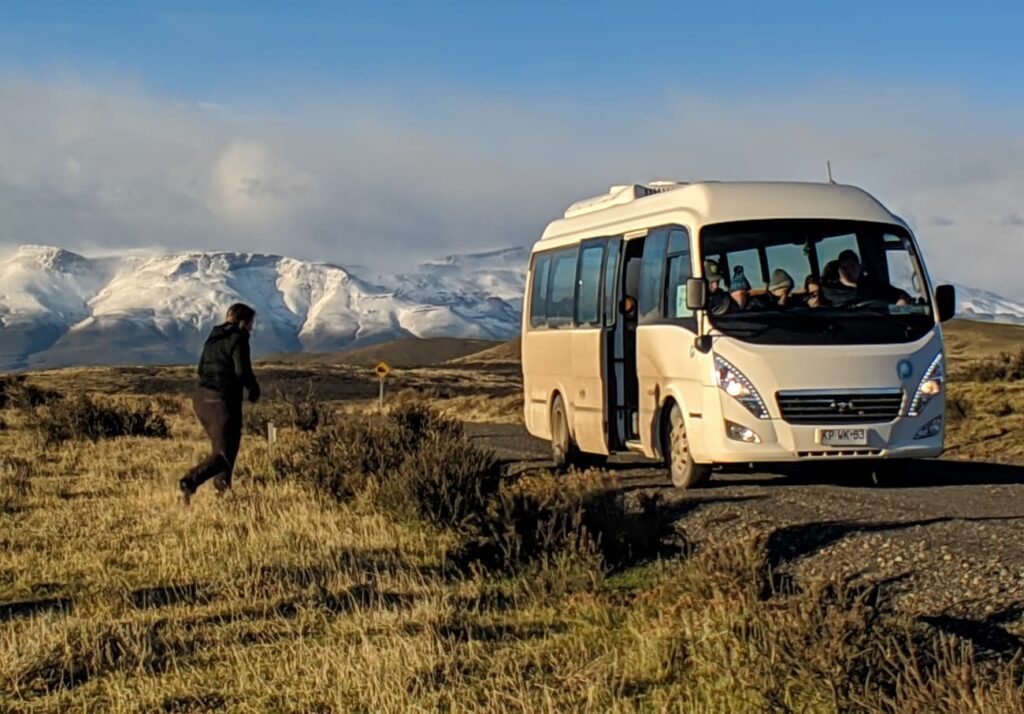
Time Spent: 2 days on the way to Argentina, 6 days coming back.
Puerto Natales was the star of my out and back adventure to Patagonian Argentina. On the way out I had booked a hostel but listened to my body when my anxiety started telling me a coed dorm room was not a place that I could rest well. Instead, I checked last minute hotel deals and landed in a four-star hotel at a hostel-private-room price. Puerto Natales is a city that swells massively with an influx of tourists every summer, and accordingly, during my visit in the fall (or “shoulder season”), there were many last-minute lodging options available at a fraction of the price they go for during the high season.
Highlights: this town is an outpost for Torres del Paine, and most visitors are either coming or going from the National Park. Although a day trip into the National Park was one of my highlights, I also found the rainy, blustery fall weather to be a perfect setting to write prolifically. On my return trip, I holed up in a magical Airbnb for a five-day writing retreat, some of the most productive work time of my trip.
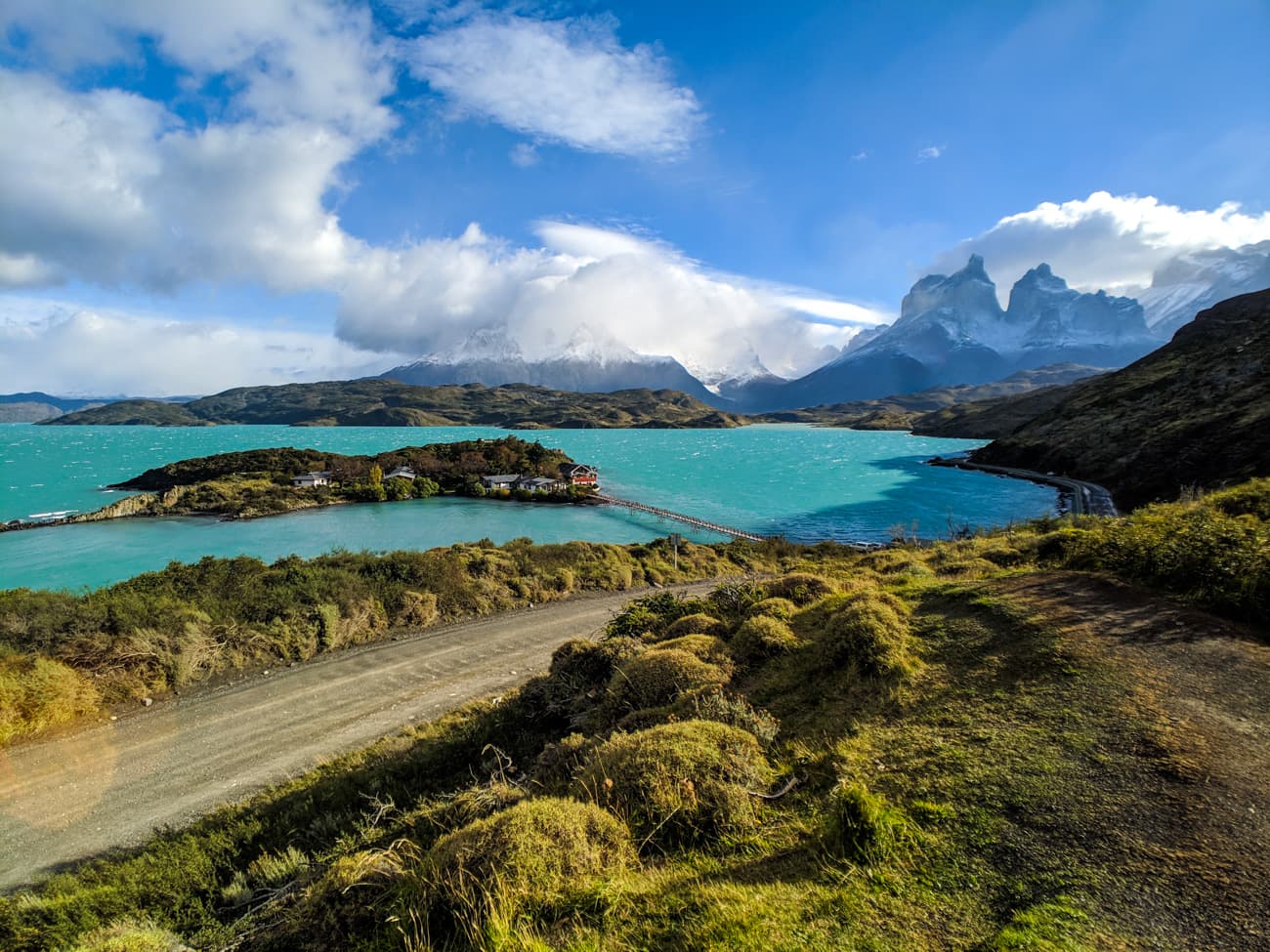
El Calafate, Argentina
Time Spent: 7 days
Highlights: Perrito Moreno Glacier, Nuniz Wildlife Reserve.
While you’d be hard-pressed to figure out how to spend an entire week in El Calafate, Argentina if you weren’t an avid backpacker or a working traveler, I greatly enjoyed my week there as a digital nomad.
$11 steak dinners and peak fall foliage were a delight – as was the opportunity to view flamingos for the first time (of what turned out to be many opportunities during my time in South America)
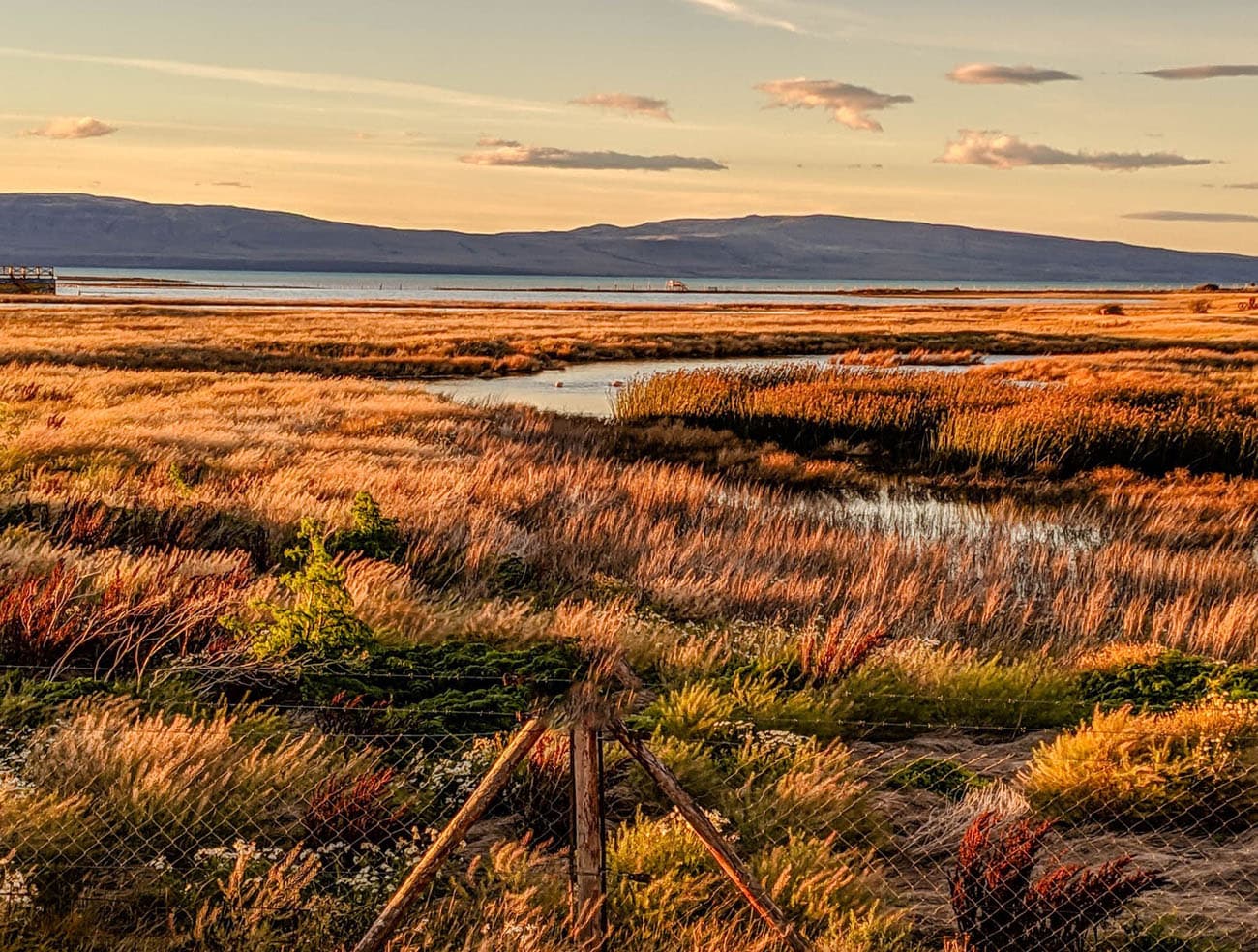
Puerto Montt, Chile
Time Spent: 2 days
Highlights: resting between adventures of my journey and enjoying the cafés and waterfront volcano views.
Two days in Puerto Montt was two days too long for me. Despite being perched on the water with magnificent volcano views, Puerto Montt is a commercial city without a lot of emphasis on tourism. However, it’s a central starting point if you want to make attractions in the area their own separate day trips or if your travel style involves booking group tours- which often leave from this city.
For more Patagonia travel ideas:
Chiloe Island, Chile
Time Spent: 2 days
Highlights: Staying in a Palafito, Chiloe UNESCO churches, driving the Pan-American highway, & the Craft market in Castro.
I liked Chiloe enough that I wrote a whole article about it . I rented a car for three days- tacking on the Petrohue Waterfalls at the end of the adventure- and had a blast.
Puerto Varas, Chile
Time Spent 5 days
Highlights: Osorno Volcano and Lake Llanquihue
Puerto Varas proved to be a much nicer place to stay than Puerto Mont because Puerto Varas is a little more oriented to tourists and a much smaller city. This combination made this city a more pleasant place to spend time.
San Pedro de Atacama, Chile
HIghlights: Altiplano (high planes)
San Pedro de Atacama is another location that warranted its own post. I had very mixed feelings about the city of San Pedro de Atacama, but the high planes outside the city were breathtaking and not quite as crammed so thickly with travel influencers .
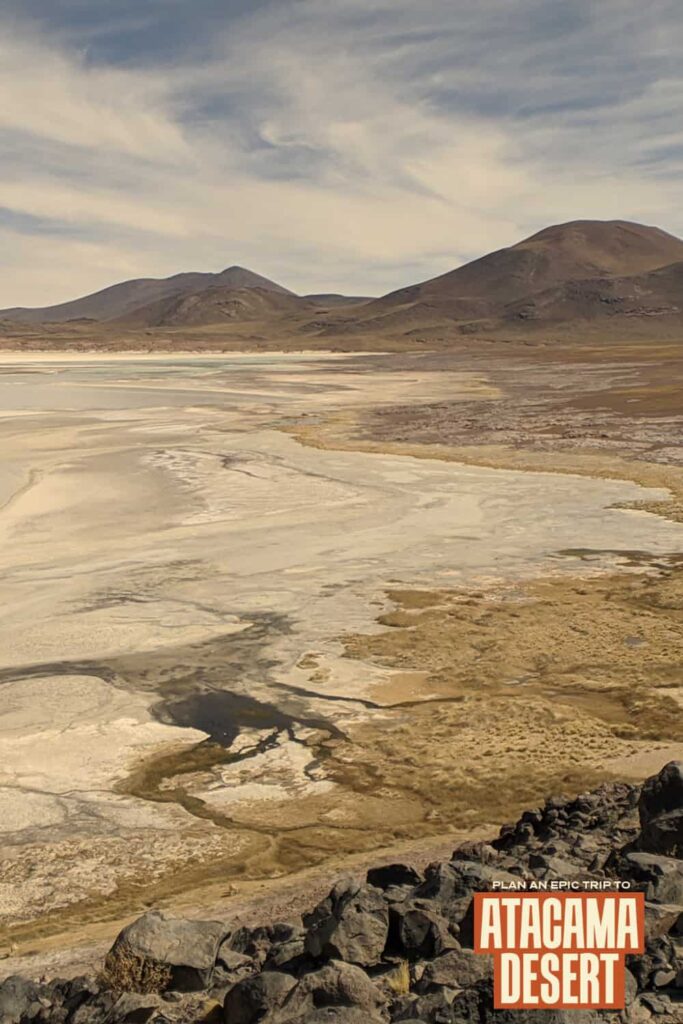
Cusco, Peru
Time Spent: 3 days
Highlights: historic city center. Food and culture. Chinchorro weaving class.
After a month in Chile, which is not known for its culinary delights, dining in Peru was a highlight of arriving in Cusco. Like many large old cities, Cusco is the kind of city where you can spend an entire day wondering, which is exactly what I did for my first two days.
On the third day, I did an Airbnb experience weaving class which carried me into the hills outside of Cusco for a one-on-one class in shearing, dying, and weaving fiber.
Ollyantambo, Peru
Highlights: Macchu Picchu… I guess. “Lesser” Incan ruins, the city of Ollyantambo, and a Pachamama meal
Machu Picchu, which is accessible only by spending an enormous amount of money on trekking OR on heavily inflated train tickets, probably “should” be the highlight of my trip to this area, but it wasn’t.
I was fascinated by the village of Ollyantambo , an Incan city that never fell into ruin, and instead was embraced by modern residents and continues to exist today with the same paved walkways, walls, entryways, and irrigation ditches the builders originally created. While in the city I had the opportunity to share a Pachamama meal with a local family and learn about the city and its history through storytelling.
Highlights: Chifa Cusine
There’s nothing too remarkable about Puno. Supposed to have a lovely plaza de arms, it was fully obscured with construction barriers during my stay. Instead, my time in Puno emphasized work and dining well.
Many travelers rave about the food in Peru- but I explored a bit off the culinary path and discovered a local favorite: Chifa. “Chifa” is an entire food cuisine that’s similar to American-Chinese Food. As Chinese immigrated to Peru in the nineteenth and twentieth century, their cusine adapted in a similar way as Chinese immigrants to America.
In Peru, Chifa is eaten most often on Sunday. While beloved by many Peruvians, most tourists steer clear: which means Chifa restaurants are a great place to get an amazing meal with a tourist-price markup. Most Chifa restaurants don’t have online reviews- so find the best spot by looking for a crowd. If you have to wait for a table, you’re likely about to have great Chifa! Read more about Chifa Peruvian Cusine here .
Uros/ Lake Titicaca, Peru
Time Spent: 1 days
Highlights: Sleeping in a UNESCO site
While not the best sleep of my trip, staying in an Airbnb on one of the floating islands of the UROS people is an experience I will never forget.
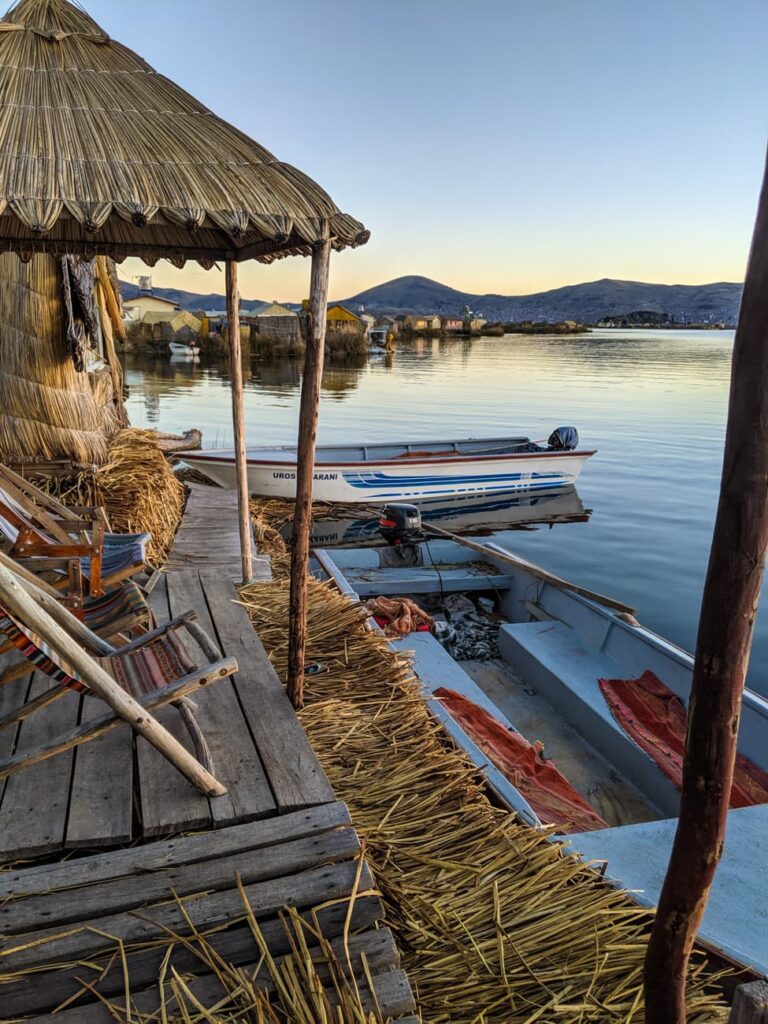
Arequipa, Peru
Time Spent 6 days
Highlights: Santa Catalina Monastery, Antique Shops, Food culture.
Arequipa felt like the Peruvian version of Seattle: hipster-foodie owned cafés, the best coffee of my South American trip, and a less frenetic feel to the city. Read more about my thoughts on Arequipa .
Arequipa was the only place in my travels where I noticed shops of “antiquities” – and while many were high-priced, I did discover and purchase the most iconic souvenir of my South American trip: a heavy hand woven blanket (called a frazada) for 130 soles / 35 USD.
Arica, Chile
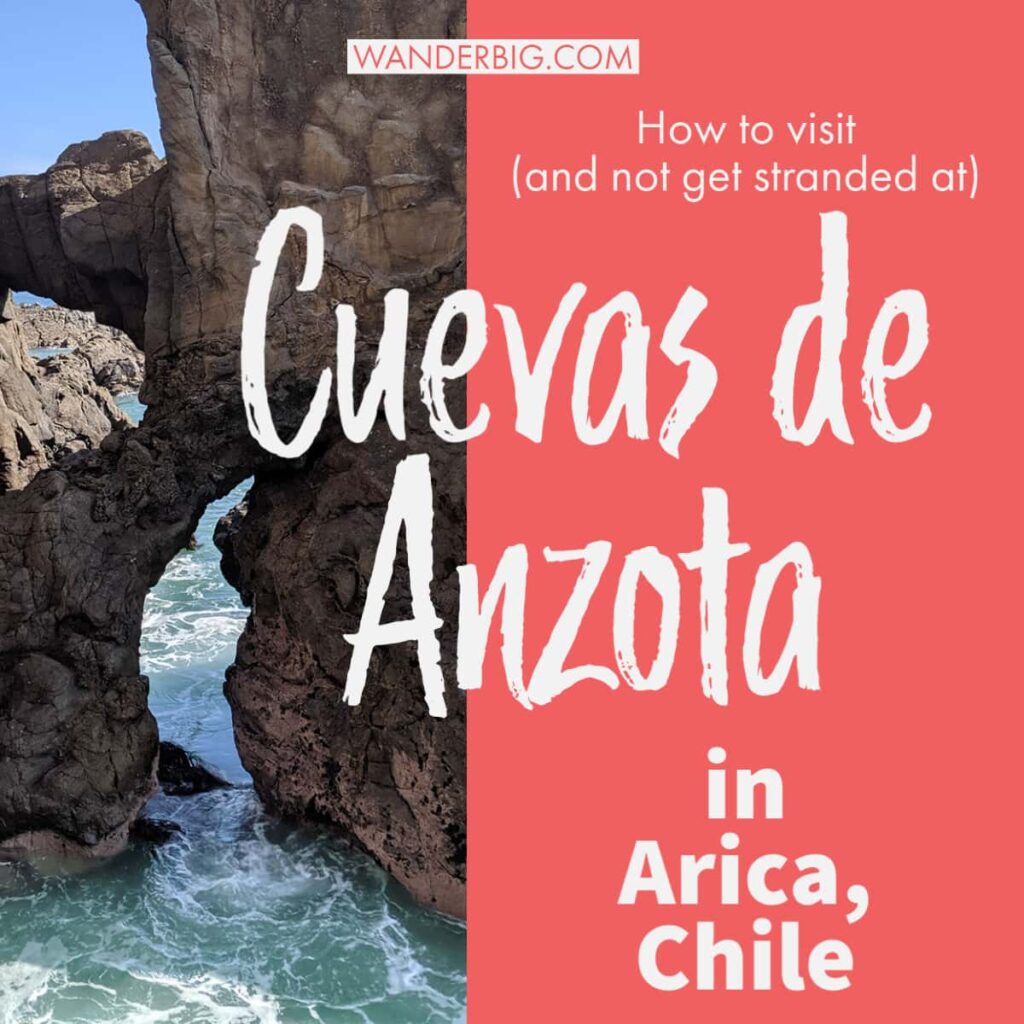
Time Spent: 6 days
Highlights: Sea Caves, Chinchorro Beach, Second-Hand markets.
Back home, I’m thrift store queen, so when I stumbled across open markets filled with sellers offering secondhand goods not once, not twice, but actually four times during my six-day stay in Arica, I was in heaven.
The timing was perfect: as the end of my trip approached I was seeking small gifts to take back to the folks at home who had supported me on my journey. The markets, although mostly full of modern and mildly vintage clothing, also offered the opportunity to pick up older, authentically handmade items, for a good price.
The caves outside of the Arica, the Cuevas de Anzota, are also definitely worth a visit, and definitely worth their own blog post about how to safely visit and not get stranded- as I did!
Download my Printable Blank Travel Itinerary
Begin planning your trip today with this printable travel planning PDF designed for visual planners:
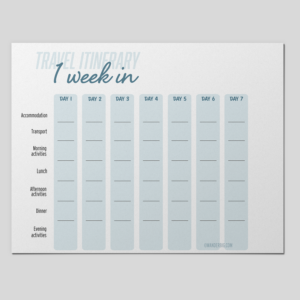
Valparaiso, Chile
Highlights: Street Art
The street art of Valparaiso is unlike anything I’ve ever seen in any other part of the world. Venture past the tourist centers to climb high into the neighborhoods surrounding the bay and you will find virtually endless murals, decorative mosaics, and painted staircases. Although my time in Valparaiso was at the very end of my three-month trip and my body was fatigued and ready to return home to Seattle, Valparaiso was the perfect end of my trip.
I spent my six days in Valparaiso intentionally getting lost over and over and over- as one art-filled side street beckoned me to another and then to another until I finally grew tired and ordered an uber back to my Airbnb.
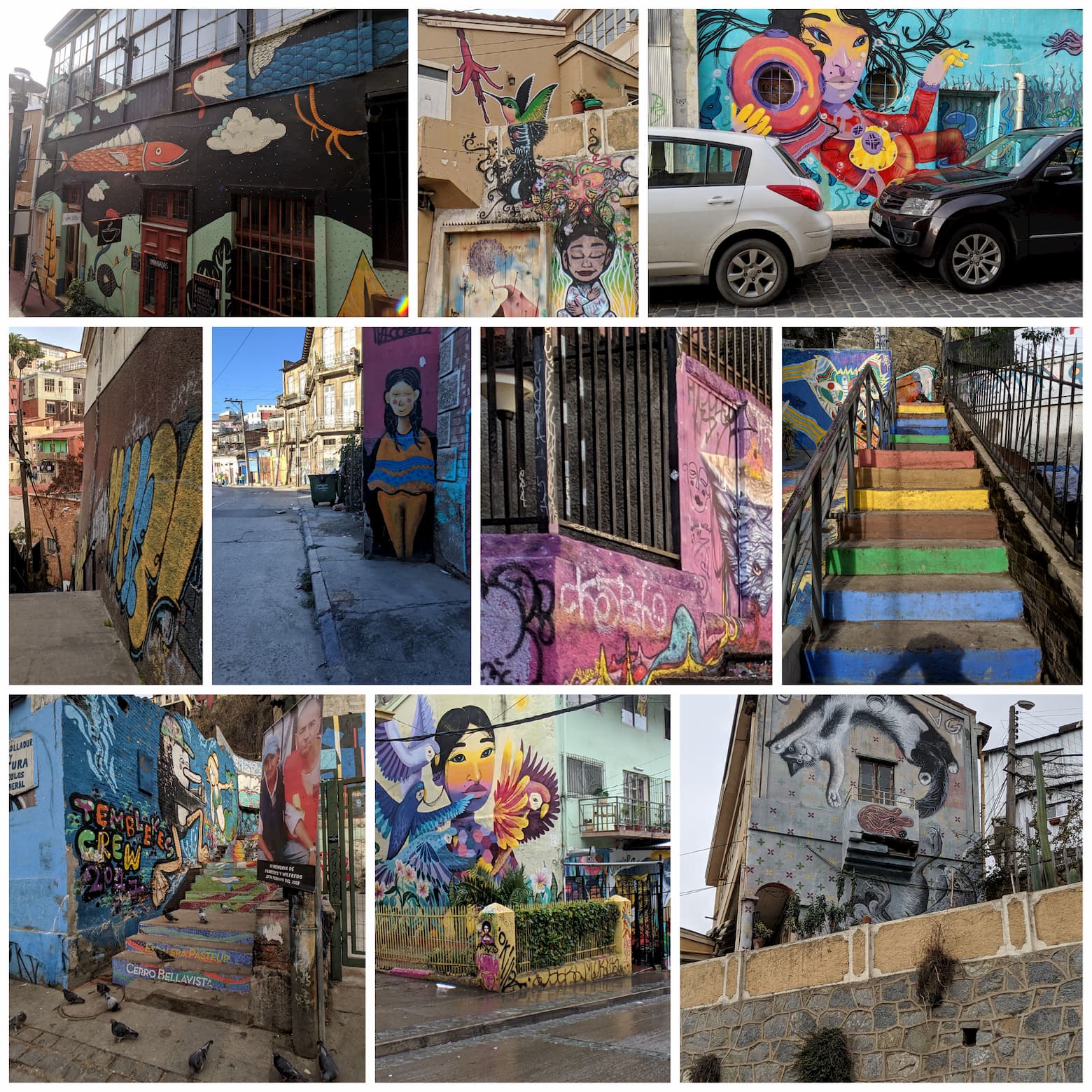
Ready to head out on this adventure? First check out my South American packing list tips .
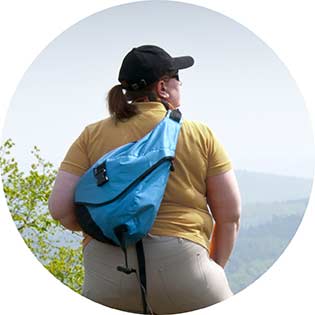
Lynli Roman’s unique approach to travel is informed by decades of experience on the road with a traveling family and, later, years spent as a solo international traveler. When she’s not writing about Seattle from her Pike Place Market apartment, Lynli writes on-location while conducting hands-on research in each destination she covers. Lynli’s writing has been featured by MSN, ABC Money, Buzzfeed, and Huffington Post. She is passionate about sharing information that makes travel more accessible for all bodies.

- X (Twitter)

8 Epic South America Itineraries – How to Spend 1 Week to 3 Months in South America
South America is a diverse continent. You can walk on glaciers, climb mountains so high they literally take your breath away or cruise on a boat through the Amazon.
The biggest difficulty when planning a trip around South America is deciding where to go. We’ve already written about the best countries to visit on this beautiful continent , but today, we want to give you more specific advice and help you plan your trip.
No matter if you’re backpacking South America, are coming over for a short vacation or are looking for a South America honeymoon itinerary, you’ve come to the right place.
We have put together not just one but a total of eight epic South America itineraries! That way, we cover all possible lengths and show you the best the continent has to offer. Plus, we have lots of practical tips for you along the way.
Table of Contents
8 Epic South America Itineraries

1 Week South America Itinerary – Peru
Putting together a South America itinerary for 1 week is not easy. If you only have a short amount of time, we highly recommend focusing on one single country.
Peru is a great destination for a short trip to South America because you can see lots of cool things in a short amount of time. Here is our suggestion:
Start your trip in Lima. Peru is famous for its colonial architecture and its fantastic restaurants. Get an introduction to Peruvian cuisine by eating ceviche or getting some of Peru’s famous street food.
We recommend spending one day in Lima , so you have time to explore the historic centre and spend some time in Miraflores, a popular seaside neighbourhood. In the centre, don’t miss the Plaza de Armas, the central square, and the nearby Saint Francis Monastery.
If you like history, you should stop by Huaca Pucllana. These ruins were left behind by the Lima civilisation, one of the many pre-Incan cultures of South America.

From Lima, you can catch a flight to Cusco. The Spaniards built this city on top of the remains of an Inca settlement, so pay attention to the pre-Columbian foundations you see while walking around.
Start exploring at the central square, where you can see a statue of Pachacuti, a former Emperor of the Inca kingdom. The nearby Cathedral and Temple of the Sun are both worth a visit.
If you have enough time, head to the Cusco Planetarium in the evening to learn about stars in the Southern hemisphere and to also understand how the Incas saw the night sky.
#3 The Sacred Valley
From Cusco, head to the Sacred Valley. You can see multiple Inca fortresses and terraces here. The ruins of Pisac are amongst the most famous and a must-see on your trip. In Pisac town, you should head to the market, where you can buy souvenirs and local handicrafts.
Try coming on a Sunday, when locals from the surrounding villages head to Pisac to sell their produce and stock up on supplies.
The UNESCO-recognised Maras salt mines are also a great stop in the Sacred Valley. The 4,500 salt pans are still used for salt production today!

#4 Machu Picchu
After visiting the Sacred Valley, spend the night in Agua Calientes. This town sits underneath Machu Picchu, so from here, you can head to the famous Inca ruins.
After the fall of the Inca Empire, Machu Picchu remained hidden until 1911. When the Incas abandoned the city, they burned the surrounding forests and trails so nobody could find its location. It wasn’t until the early 1900s that an American archaeologist stumbled upon it by accident.
The best time to visit Machu Picchu is early in the morning before a flood of tourists arrives. Tickets are limited, so make sure to buy yours well in advance.
#5 Lake Titicaca

From Machu Picchu, head to the last stop of this South America trip itinerary – Lake Titicaca. Base yourself in Puno, from where you can head to the lake.
Lake Titicaca is famous for the Uros islands. The Uro people build those floating islands out of reeds and live on top of them in houses. After you’ve visited them, stop by Taquile Island for fantastic lake views and a chance to buy some hand-knitted Peruvian textiles.
Fly home from nearby Juliaca airport, which is only around one hour from Puno.
10-Day South America Itinerary – Argentina & Brazil

If you’re looking for an itinerary for South America and have a bit more than just one week, you have many great options.
You could take the above one-week South America itinerary and expand it by flying to the Amazon from Lake Titicaca.
Or you could choose a different country. We think that Argentina and Brazil make for the best 10-day trip in South America.
#1 Buenos Aires
There are lots of things to do in Buenos Aires , so we recommend spending at least one or two days here. This will give you enough time to explore the various neighbourhoods, like Recoleta, which is famous for its architecture and gave the city its nickname “Paris of the South”. While here, stop by the cemetery.
Or head to San Telmo, which has a much more lively and bohemian feel to it compared to the more polished Recoleta. La Boca is even more colourful and worth the trip to Southern Buenos Aires.

#2 Iguazu Falls
To reach the next stop on this South America 10-day itinerary, you need to catch a plane and fly to Iguazu. The area has two airports, and since you’re coming from Buenos Aires, you’ll land on the Argentinian side.
The Iguazu Falls are the largest waterfalls in the world, consisting of a chain of more than 250 falls. You can get very close to the falls on the Argentinian side, especially if you get into a boat.
The next day, head to Brazil to explore the other side. You can’t get as close from here, but you get a fantastic overview of the falls cascading down in the middle of the jungle.
#3 Rio de Janeiro
You could easily spend all 10 days of your South America trip in Rio de Janeiro without seeing everything. But since you’re limited on time, focus on the city’s most impressive sights.
Sugarloaf Mountain is a must-visit. From here, you have the most beautiful view in all of Rio de Janeiro. You could also head up to Christ the Redeemer if you’re looking for a different perspective and want to get close to the statue.

Another highlight of Rio is the beaches. Don’t spend too much time here, though, since you’re also going to head to fantastic beaches at the next two stops. Instead, explore the city centre or head to the botanical gardens, where you can see more than 8,000 different plants.
#4 Ilha Grande
From Rio, take a bus to and ferry to Ilha Grande. Ferries leave from three towns on the mainland, but the most popular option is going from Conceição de Jacareí, as it’s closest to the island.
Ilha Grande is a jungle-covered island with perfect beaches. Come here to relax, hike and soak up lots of sunshine. Praia Lopes Mendes is one of the most popular beaches on the island, as it’s long, white and just how you imagine the perfect tropical beach.
You can come here either by boat or hike across the island. Or you catch a water taxi to one of the many other white beaches.

From Ilha Grande, take the ferry to Angra dos Reis, the town closest to Paraty, and continue by bus. Your South America itinerary for 10 days is almost coming to an end, and this is your last stop.
Paraty is famous for its white-washed houses dating back to colonial times. Walk along the cobblestone streets and admire the colourful doors and windows, or sit down for a cup of coffee in one of the many cafes.
From Paraty, you can take a boat to explore the nearby beaches. Schooners leave from the pier in the morning, and the trips usually include four stops at two different beaches and two lagoons.
From Paraty, return to Rio or head to Sao Paulo to fly home.
2 weeks in South America – Option #1 – Patagonia

If you’re wondering what to do in South America for 2 weeks, you’re in luck. We have two options for you, so you can choose between places that couldn’t be more different.
We think that two weeks is the perfect amount of time to visit Patagonia . But we also know that this is the most expensive region on the continent, so if you spend 2 weeks backpacking South America and you’re on a budget, you might prefer going to a more affordable country.
If that’s you, then scroll down and take a look at our Colombia itinerary!
But for now, let’s look into Patagonia.
#1 El Chalten
Start your South America 2-weeks itinerary in El Chalten.
The closest airport is in El Calafate, so you will either have to rent a car or take a bus to get to El Chalten . The trip takes around three hours.
While a rental car gives you more freedom, you can also easily visit Patagonia by using public transport only. We did, and we had a fantastic time.
El Chalten is known as the hiking capital of Argentinian Patagonia. The best hikes take you to the Laguna Torres or the Laguna de Los Tres. They’re both challenging, so check in with the tourist information first for more details and make sure you start early so you have enough time to return to town.

If you prefer a shorter hike, you can find lots of great trails in the area with fantastic views of the Fitz Roy mountain range.
Or you can explore points of interest in the nearby area, like Casa Madsen, a traditional ranch, or Lago del Desierto, where you can go for a boat ride.
#2 El Calafate
El Calafate is a mandatory stop on every Patagonia itinerary, as you can take a day trip to the nearby Perito Moreno glacier from here.
This glacier is the longest in Argentina, and it’s one of the most popular to visit as you can easily get close to it. The end of the glacier reaches into a lake, and wooden walkways take you close to the ice. You can also ride a boat to enjoy a unique perspective.
#3 Torres del Paine

From El Calafate, take a bus (or drive) across the Chilean border to Puerto Natales. This town is the jumping-off point for a visit to Torres del Paine national park.
This South America itinerary for 2 weeks leaves you enough time to spend a few days inside the national park. The most popular option is to hike the W , a multi-day trek that takes you past stunningly blue lagoons and fantastic mountain views.
The hike takes around four days, and you need to plan it well in advance as accommodation tends to book out. If you’re interested, make sure to check out our guide .
Another option is to book accommodation in Torres del Paine and go on day hikes from there. You can also arrange horse riding activities or explore the national park on organised tours.
#4 Punta Arenas
Punta Arenas is a convenient stop on the way down to Tierra del Fuego. The city itself has only a few points of interest , but the real highlight is nearby Isla Magdalena.

This island is home to thousands of penguins who migrate here every year to nest. You can take a boat ride from Punta Arenas and then spend some time on the island watching the penguins taking care of their offspring, going for a swim or grooming each other.
Finish your trip in Ushuaia , the world’s southernmost city.
Everything here is about being at the end of the world, and you can visit the “Museo del Fin del Mundo” (End-of-the-World museum) or take the “Tren del Fin del Mundo” (End-of-the-World train).
The train takes you into the nearby Tierra del Fuego national park, where you can go for hikes or enjoy a short walk to explore the stunning scenery.
You can also go on many day trips from Ushuaia. Check with the tour operators in town or do some research online to get more information. We recommend a trip to the lakes east of town or a boat ride down the Beagle Canal, where you have the chance to see more penguins and sea lions.
2 weeks in South America – Option #2 – Colombia

If you’re on a budget or prefer a warmer option for your 2 weeks in South America itinerary, then you should head to Colombia.
Colombia is the perfect country if you want to see tropical landscapes, find out where coffee comes from, explore the Andes and see ancient ruins. It’s also popular with backpackers, so if you’re travelling solo, you’re bound to meet other travellers here.
Start your Colombia trip in Bogota, the country’s capital. This city has a few highlights you shouldn’t miss . Therefore we recommend spending at least one full day here.
A great way to see Bogota is by joining a graffiti tour. Those tours take you past the most famous tourist attractions, but you also learn about recent history and discover lots of street art.
La Candelaria, the city’s historic centre, is worth a stop by itself. Close by, you can find the Museo del Oro, one of the best gold museums we’ve ever visited anywhere in the world.

If you still have energy, head to Monserrate to see the city from above. And if you want to spend an additional day, we recommend a day tour to see the Salt Cathedral of Zipaquira.
To get from Bogota to Salento, you either need to spend a day on buses or take a flight from Bogota to Armenia and continue from there.
Colombia might look small on the map, but the country is huge, and the Andes make travelling slow. Nevertheless, spending the time it takes to get to Salento is well worth it.
Salento is a colourful village in the coffee zone, so you can visit the nearby coffee plantation and find out how the plant is grown. Another highlight is a day trip to the nearby Cocora Valley, where you can see the highest palm trees in the world. We’ve got a guide to the Cocora Valley hike , but you can also go on a shorter walk if you have less time.
#3 Medellin

Medellin is one of the most fascinating cities in Colombia. Pablo Escobar’s home changed massively over the past years and transformed from one of the country’s most dangerous cities to one filled with innovation and hope.
One of the best places where you can witness that change is in Comuna 13. This neighbourhood was once the most dangerous one in Medellin (and likely the whole world). These days, it’s famous for its street art and escalators, which connect the steep roads.
Come here to learn more about the violence that once ravaged Medellin and to support those locals who moved away from gangs and now live off tourism.
#4 Santa Marta
From Medellin, you either need to take a long bus (around 12-15 hours) or a short flight to get to Santa Marta. To make the most out of this two-weeks South America itinerary, where your time is limited, we suggest taking a plane.
Santa Marta by itself is not the most spectacular city in Colombia. However, it has lovely beaches, an interesting gold museum, and it is a great base for trips into the surrounding area.
While here, check out the Quinta San Pedro Alejandrino to learn more about Simon Bolivar, the man who helped Colombia gain independence from Spain.

The bus from Santa Marta to Minca takes less than an hour, so you could visit this village on a day trip. We recommend staying overnight, though, so you have enough time to enjoy the countryside.
Minca is famous for the nearby waterfalls, which you can discover on a jungle hike. Bring your swimsuit to take a dip in the refreshing pools. You’ll also come across cafes and restaurants with hammocks, where you can take a break and relax.
If you love coffee, you can also take a tour through a coffee plantation.
Whatever you do, remember you’re in the jungle and bring enough insect repellent. The sandflies that live here can be vicious, so take some DEET to keep them away.
#6 Cartagena
Cartagena is one of Colombia’s most beautiful colonial cities. Nearby San Basilio de Palenque was the first town of free slaves in the Americas, and the area is great for discovering Afro-Colombian culture.
Cartagena is also fantastic if you like street food . We highly recommend taking a street food tour, but you can also explore on your own and stop at one of the many carts to try the local treats.

If you want to relax at the end of this two-weeks South America itinerary, head to a beach. Most locals consider Playa Blanca the most beautiful beach in Cartagena, and you can easily spend one or two days there relaxing in the sun.
Optional: Tayrona National Park or Lost City Hike
We know that we’ve already packed a lot into this itinerary. If you have a few more days (or if you decide to skip some of the above destinations), you could add one or two more fascinating places.
Both of them are close to Santa Marta, so they’re easy to integrate into your Colombia tour.
The Tayrona National Park is famous for its beaches. You can stay overnight, which is a fantastic experience, but if you’re short on time, you can also head here on a day trip. The best activity in Tayrona National Park is to hike along the coast, from beach to beach, and go for a swim when you need a break.

Another excellent destination is the Lost City. These ruins hide in the jungle, and you can only reach them by hiking. Going there and back takes a minimum of four days and a lot of sweat. Don’t underestimate the humidity in the jungle, it’s not unusual to get so sticky that sweat drips from your nose while you walk!
Nevertheless, the hike is stunning and takes you past hidden villages, waterfalls and mountain views. Plus, you can explore ancient ruins from the Tayrona civilisation at the end of it. If you have the time, this one is definitely worth it.
3 weeks in South America itinerary – Chile, Bolivia & Peru

This 3-week itinerary for South America focuses on Bolivia but also covers parts of Chile and Peru. You’ll spend time in the Andes, see the famous Salar de Uyuni and get to know what was once the wealthiest city in the Americas.
Just like our suggestion for a Colombia trip above, this South America travel itinerary is perfect for backpackers but can also be enjoyed by anyone else. Bolivia is one of the most affordable countries in South America , and you can get great value for your money here.
#1 San Pedro de Atacama
Start your South America in 3 weeks itinerary in the Atacama Desert. San Pedro de Atacama is the biggest town in the area, where you can base yourself to explore the desert on day trips.
The Atacama desert is famous for its unique landscapes, including high-altitude lagoons and the moon-like landscape of the Valle de la Luna. We also loved visiting the field of geysers. Trips here leave early in the morning because the geysers are only active when the outside temperatures are low. Just after sunrise is the best time to see them shoot water into the air.

Another highlight is a stargazing tour . The Atacama Desert barely has light pollution, so you can clearly see the Milky Way and learn more about our universe.
#2 Salar de Uyuni
From San Pedro de Atacama, you can take a multi-day tour to the Salar de Uyuni . Those tours cross the Bolivian Altiplano, one of the most spectacular landscapes on this planet. You can expect surreal rock formations, bright red lagoons and thousands of flamingos in a bare desert.
The trip takes you up to 4,800 metres, so make sure to spend a few days in San Pedro de Atacama to acclimatise to the altitude.
At the end of your journey, you finish in the salt flats of the Salar de Uyuni. The white landscape seems almost unreal, and it’s the perfect backdrop for taking pictures . Make sure to book a tour that takes you to Isla Incahuasi, a cactus island that rises out of the salt flats.

We deliberately included Potosi on this 3-week South America itinerary because it’s the best place to learn about colonial history.
Due to the nearby silver mines, Potosi was once the world’s most prosperous city. At the same time, that wealth came at a high price. Historians estimate that eight million indigenous and African slaves died in those mines.
And here’s the worst part – safety hasn’t improved that much since colonial times. Workers aren’t trapped underground anymore, but during the mine tour we did, the most stable shafts dated back to colonial times. Wooden beams to reinforce the tunnels are simply too expensive for most mine workers – same as masks.
Many miners die in their forties or fifties from cancer or other lung diseases or perish in terrible accidents.
Visiting Potosi is an eye-opening experience that you cannot miss.
Did you know that Sucre is the capital of Bolivia?
Everyone thinks it’s La Paz, but it’s actually Sucre, a city with white buildings and red roofs high up in the Andes. Sucre is a beautiful city , so you should spend some time wandering around its centre and enjoying the view from Mirador Recoleta.

It’s also home to many museums, so take some time to visit them.
One of the coolest attractions is on the outskirts of Sucre – the Parque Cretacico, where you can see real dinosaur footprints.
Getting from Sucre to La Paz isn’t the easiest trip. You need to either catch a plane or take an overnight bus. The bus is, of course, better for anyone who’s backpacking Bolivia on a budget, but it’s much slower and less comfortable than the flight.
If you do decide to go by bus, bring a warm blanket. Even if the bus has heating, there’s no guarantee the driver is going to turn it on and it gets below freezing in the Andes at night!
The bus ride is well worth it to get to La Paz, the largest city in Bolivia. We recommend joining a walking tour to discover the city centre and the markets of La Paz . Another alternative is to go on a food tour to get to know Bolivian food and try some dishes you haven’t had yet.
#6 Isla del Sol

Isla del Sol is the perfect location to dive closer into Bolivian culture. This island in Lake Titicaca is known for its villages and terraced hills. Spend your days relaxing in the sun, hiking or discovering some small pre-Columbian ruins.
It’s a good idea to stay overnight on the island to fully soak up the atmosphere and have as much time as possible to explore.
Your last stop on this South America 3-week itinerary takes you across the border into Peru.
Puno is a town on the shores of Lake Titicaca and an excellent base for visiting the Peruvian side of this lake. Even though you’ve already been to Isla del Sol, you’ll find Puno very different.
From here, you can visit the Floating Islands of the Uros. These reed islands are strong enough to carry houses, and the Uro people use the same reeds to make boats and houses. Around 1,300 people still live on these islands.
From Puno, you can fly home by going to Juliaca airport, which is only one hour away.
1-month itinerary for South America – Peru & Ecuador

Ecuador is an amazing destination on its own, but if you have a whole month, we recommend combining it with a trip to Peru.
This South America itinerary for 1 month will take you from Lima to Quito, passing through the Andes, spending time at the sea and discovering pre-Inca ruins. You can search for hummingbirds in the cloud forest, swim in waterfalls and explore colonial cities.
If you’re backpacking through South America, you’ll be pleased to know that you can easily do this trip on a budget. You can find inexpensive accommodation, food and activities in all of the places below.
At the same time, you can also transform this South America 1-month itinerary into a more comfortable journey by staying at better hotels and using private transport and shuttles.
Start your trip in Lima, the capital of Peru. The city is famous for its colonial centre, coastline and fantastic restaurants.
The must-try Peruvian dish is ceviche, which consists of raw fish cured in lime or lemon juice. The acids in the juice chemically cook the fish, turning it into a delicious delicacy you shouldn’t miss.
The neighbourhoods of Miraflores and Barranco are famous for their restaurants, but you also shouldn’t miss the city centre. Personally, I loved visiting the Monasterio de San Francisco, a monastery dating back to colonial times.

If you’re interested in history, visit the Huaca Pucllana to learn about the Lima civilisation. Or go on a day trip to Caral to see ruins as old as the Egyptian pyramids.
In the evening, head to the Parque de la Reserva in the evening to see the fountain show.
One day in Lima is great for seeing the highlights of the city, but if you have four weeks in South America, we recommend spending a bit more time. Plan for two or maybe even three days in Lima, so you have time to take it all in.
Huaraz is the base for a trip to the nearby Huascaran National Park. If you want to see snow-covered mountains and turquoise lagoons, you’ve come to the right place.
The most famous hike in the National Park takes you to Laguna 69, but you’ll need a few days of acclimatisation to get used to the altitude. While you’re here, we suggest going on different hikes or day trips to the mountains.
If you’re interested, make sure to visit the ruins of Chavin de Huantar. This civilisation might be 3,000 years old, but it was once so significant that it influenced all Andean cultures that came later.
#3 Trujillo

It’s time to leave the mountains and get back to the coast.
Trujillo is famous for its pre-Colombian ruins, and the highlights are visits to Chan Chan as well as the Huaca de la Luna y Huaca del Sol. The latter are particularly impressive for their colourful paintings, which have been preserved over the centuries.
Besides learning about the many civilisations that inhabited South America, Trujillo is also a great place to take it easy. Stroll around the central square, the Plaza de Armas, or head to Huanchaco to learn how to surf.
Some say that the reed boats made here on the beach inspired modern surfing, so try to get a ride on one of them if you can.
Mancora is a beach town that makes for a convenient stop on the way towards Ecuador. Come here to relax by the beach and enjoy ceviche in the evening.
If you’re getting tired of doing nothing, take a tour to see wildlife. From July to October, you can go whale watching, and all year long, you can go looking for green turtles.
#5 Guayaquil

Most travellers visit Guayaquil to then catch a plane to the Galapagos Islands , but there is a surprising amount of things to do in this coastal city.
Spend a full day here to climb to the top of Cerro Santa Ana, walk along the Malecon 2000 and explore the art galleries in Las Peñas.
If you still have energy, you should head to Santay Island, where you can stroll on boardwalks through a mangrove swamp and discover wildlife along the way.
Visiting Cuenca is one of the best things to do in Ecuador . The historic centre is a UNESCO world heritage site worth seeing for its colonial buildings.
Once you’ve explored the Old Town, book a trip to Las Cajas National Park. At lower altitudes, you’ll come across meadows filled with llamas and alpacas.

Once you go up higher into the Andes, you can then see high-altitude lakes, otherworldly forests and strange-looking landscapes. Even if you take it slow (you’ve just arrived from sea level, so it takes a while to get used to the altitude), you’ll be able to visit impressive viewpoints.
If you’ve ever seen a photo of someone sitting on a swing high above the jungle, you’ve probably seen a picture of Baños. This town is the next stop on our South America 4-week itinerary.
Besides taking cool pictures, you can hike or enjoy many other outdoor adventures in Baños. Rafting, canyoning, rock climbing, all those are options.
Once you’ve had enough of the outdoors, relax by soaking in one of the many hot springs.
Ecuador’s capital, Quito, is the highest capital city in the world. It’s also located next to the equator.
You can find lots of things to do in Quito , so you should plan to stay for a few days. Start by exploring the Old Town and visiting some of the churches. If you’re here on a Tuesday, check out the Changing of the Guard in front of the governmental palace.

Next, head to the equator in Mitad del Mundo. The exact location of the equator is a bit unclear. You can visit a monument at the spot where the first expedition marked the equator.
Close by, you can also visit the Museo Intiñan, which claims to be at the site of the “real” equator.
Whichever one is the actual one, both are cool to visit. Take pictures on both lines, and then you might have at least one that’s in the correct place.
Mindo is so close to Quito that you could visit on a day trip.
It’s much more fun to stay overnight, though, so if you have enough time left in this 1-month South America itinerary, base yourself in Mindo for a day or two.

Mindo is located in the Cloud Forest and is famous for its biodiversity. You can spot many butterflies and hummingbirds at the Butterfly Garden and learn about the cultivation of chocolate.
Mindo is also a perfect base for outdoor activities, like ziplining, hiking to waterfalls and tubing.
2 months in South America itinerary – Buenos Aires to Lima

If you’ve got two months in South America, you can see a decent portion of the continent. We’ve put together a sample itinerary for you, which we think covers some of the best places to visit, but don’t be afraid to mix it up.
You could cut the beginning short and head to Colombia instead. Or you could add in some time to visit the Amazon or Patagonia. It’s up to you to decide which areas of South America you like best.
Start your South America 2-month itinerary in Buenos Aires . The Argentinian capital carries the nickname “Paris of the South”, and while walking through Recoleta, you can certainly see a resemblance in the architecture and atmosphere.
The cemetery of La Recoleta, with its many mausoleums, is one of the most famous sights here. You should also head to La Boca and San Telmo, two of the most colourful and intriguing neighbourhoods.
In the evening, head to a steak house to try the famous Argentinian meat and watch a tango show afterwards.

From Buenos Aires, catch a plane to Iguazu Falls. Plan to spend at least two days here, so you can both see the Argentinian and Brazilian sides.
You can cross the border into Brazil on a day trip and get a different perspective on the other side. While you can get very close to the water in Argentina, you’ll have a nicer view of the falls in Brazil.
The easiest way to get to Salta is by taking another plane.
If you’re backpacking in South America and prefer to cross as much distance overland without flying, you could also head into Paraguay (we especially liked the Jesuit Missions near Encarnacion , a fantastic UNESCO world heritage site), cross the border back into Argentina and then take a bus.
The bus ride is long. It’ll likely be an overnight bus, so you won’t lose too much time, but you’ll arrive in Salta exhausted.
No matter how you get there, Salta is the perfect base for a trip into the Quebrada de Humahuaca . Expect charming villages, multi-coloured mountains and ruins of a pre-Incan civilisation.
#4 San Pedro de Atacama

You could easily spend a week in San Pedro de Atacama without getting bored. Whether you head to the high-altitude lagoons, watch the flamingos or see the sunset over the Vallee de la Luna, you’ll have plenty of things to do .
If you don’t mind getting up early, take a geyser tour. The natural wonder is only active in the first hours of the morning.
Another highlight is an astronomy tour. You’ll rarely get to a place as dark as the Atacama Desert, so you can easily see the milky way from here.
Your trip to Uyuni will be one of the highlights of your 2-month itinerary through South America. It’s a multi-day journey to get to the famous salt flats. You’ll come across brightly coloured lagoons and see many flamingos along the way.
With a bit of luck, you also get to sleep in a salt hotel before you finally reach the famous Salar de Uyuni . Spend time taking pictures, visit the mysterious cactus island and head to the train graveyard once you’ve arrived.
#6 Potosi & Sucre

In the South Bolivian Andes, you can find two towns worth visiting.
The first one is Potosi , where you should learn about South America’s history in the silver mines. The next one is Sucre , the white city which is actually the capital of Bolivia.
Both cities have stunning colonial architecture and fantastic churches you should see. In Potosi, make sure to head to the Casa de la Moneda, the former national mint of Bolivia.
In Sucre, make sure to visit the dinosaur footprints, which you can find just outside the city. Their sight is awe-inspiring, and how often can you say that you’ve seen footsteps that are more than 65 million years old?
To get to La Paz, you either need to fly or take an overnight bus from Sucre.
While La Paz isn’t the capital of Bolivia, it is the seat of its government and one of the biggest cities in the country. Join a walking tour to explore the city centre or go on a food tour to sample some dishes of Bolivian cuisine you’ve never heard of.

La Paz also features fantastic markets , which you should explore while you’re here. The most famous one is the Witches’ Market, but even the regular food markets offer great sights, like bags of dehydrated potatoes.
#8 Lake Titicaca
Your next stop should be Lake Titicaca. The highest navigable lake in the world has multiple points of interest worth stopping for.
The first one is Isla del Sol, on the Bolivian side. Stay overnight on this island, go for walks between agricultural terraces, explore some ancient ruins, and relax in the sun.
On the Peruvian side, you can base yourself in Puno, from where you can explore Taquile Island or visit the floating islands of the Uro people.

#9 Cusco & the Sacred Valley
From Lake Titicaca, cross the Peruvian Altiplano and head to Cusco. Cusco is an excellent stop for seeing the remains of the Inca cities merged with buildings from colonial times.
From here, head to the Sacred Valley to discover Inca fortresses and terraces, lively markets and the famous Maras salt mines.
#10 Machu Picchu
To get to Machu Picchu, you need to take the train to Aguas Calientes. Alternatively, you could also hike the Inca Trail, but make sure to book your trip well in advance as it books out very early!
Machu Picchu is the most famous Inca ruin. This settlement remained undiscovered for centuries, which is why it’s one of the best-preserved sites. Remember to book your ticket and train ride before your start this trip so you’re guaranteed your visit.
#11 Arequipa

Arequipa is a charming city halfway to the coast. Explore the historic centre, and make sure to stop by the Santa Catalina Monastery, a large complex with a fantastic cafe.
Depending on how much time you have left for this South America itinerary for 2 months, you can head to the Colca Canyon. The hike here takes two or three days, and you get fantastic views along the way with the chance to see a condor.

The Nazca lines are amongst the most famous sights in Peru .
Those lines, which are best observed from a plane , are around 2,000 years old and likely date back to the Nasca people. This civilisation lived around present-day Nazca, where you can also visit more of their ruins.
#13 Paracas
From Nazca, head along the coast to Paracas . The nearby Islas Ballestas are also called the “poor man’s Galapagos” because you can see sea lions, penguins and many birds here.
In fact, there are so many birds that countries once fought a war about the bird poo on those islands, which is a valuable fertiliser!

After you’ve seen the islands, head to the Paracas Peninsula and discover the national park here, with its brightly coloured beaches and remains of the Paracas civilisation.
This South America backpacking route for 2 months finishes in Lima. You’ll need at least one day in Lima to see the major sights, but it’s great if you have more time so you can properly explore the city .
Lima has a great colonial centre, and it’s also the perfect place to try Peruvian food . Head to Miraflores, a neighbourhood with great restaurants and a fantastic seaside walk, or explore colourful Barranco.
If you want to learn more about the history of South America, we suggest heading to Caral on a day trip , one of the oldest settlements on the continent. The ruins are as ancient as the oldest pyramids in Egypt!
3 months in South America itinerary – Rio de Janeiro to Bogota

Do you want to travel around South America for three months? Then we’ve got an itinerary for the ultimate backpacking trip through South America! You’ll start in Rio de Janeiro, cross the continent and then head up along the Pacific Coast from Lima to Bogota.
This 3-month South America itinerary includes three flights, but besides that, you’re mostly moving by bus (though there is the option of cutting it short in Colombia if you don’t want to spend too much time on buses).
#1 Rio de Janeiro to Sao Paulo
Start your trip in Rio de Janeiro , where you can visit Sugarloaf Mountain, relax on Copacabana Beach or hike through Tijuca National Park.
Then head westwards along the coast . The next stops are Ilha Grande, with its white beaches, and Paraty, a cute colonial town with cobblestone streets.
Finally, head to Sao Paulo. This city is more gritty than anything you’ve seen before, but there are still lots of things to do .
#2 Pantanal

From Sao Paulo, catch a plane to the Pantanal . You’ll need to fly either to Cuiaba or Campo Grande.
The Pantanal is the largest wetland in South America outside the Amazon, and it’s a great region to spot wildlife. We highly recommend taking a tour so you have the best chance of seeing animals.
If you’re in South America backpacking, you might be afraid of the cost, but we can assure you that it’s one of the activities most worth splurging on.
#3 Iguazu Falls
It’s time to catch another plane to get to Iguazu Falls. It’s cheapest to fly to the Brazilian side, but you should also do a day trip to Argentina.
In Brazil, you have a great view of the Iguazu Falls, but in Argentina, you can get much closer. If you don’t mind getting wet, take a boat tour and get sprayed in the mist.

Your next stop is Lima, which means taking another plane. Don’t worry. This is the last flight in a while, and from now on, you can continue overland.
Peru’s capital is worth staying in for at least one day , but if you have more time, there are plenty of things to discover .
#5 Northern Peru
From Lima, head towards Northern Peru.
Your first stop should be Huaraz, where you can take day trips into the nearby Huarascan National Park. You should also explore the ruins of Chavin de Huantar, which was built by a civilisation that existed around 3,000 years ago.

Next, head to Trujillo. Here, you’ll get further insights into pre-Incan civilisations. The nearby beach is fantastic if you want to learn how to surf.
Your last stop on the way to Ecuador is Mancora. Relax on white beaches or try to spot whales and turtles.
#6 Guayaquil
Your first stop across the border is Guayaquil. From here, you could catch a trip to Galapagos, but be mindful that this will add at least another one to two weeks to this South America itinerary for 3 months.
Besides that, it’s easy to spend a day exploring Guayaquil , visiting art galleries and walking through the mangroves on Santay Island.
#7 Cuenca to Quito
From Guayaquil, slowly make your way to Quito. Your first stop should be Cuenca, a charming colonial town which also serves as a base for visiting nearby Cajas National Park.

If you’re interested in high-altitude hiking, stop by the Chimborazo. Or head to Baños, where you can soak in hot springs and hike through the jungle.
Finally, you’ll arrive in Quito . Besides the historic centre, which was declared a UNESCO world heritage site, the city is also famous for its proximity to the equator.
Before crossing the border to Colombia, head to Mindo. You can visit this town in the cloud forest on a day trip from Quito, but we recommend staying overnight. That way, you’ll have the chance to see butterflies and hummingbirds (Mindo is known for its incredible biodiversity), and you can hike to waterfalls.
Mindo is also the perfect place to learn about the creation of chocolate, go ziplining and drift in a tube down a river.

Once you’ve explored Mindo, it’s time to cross into Colombia. Your first stop right after the border is Ipiales, famous for its cathedral, which stands on a huge bridge.
#9 Salento & the Cocora Valley
From Ipiales, it’s a long bus ride to Salento . If you prefer flying, skipping Ipiales and taking a plane from Quito is better.
The colourful town of Salento sits in the middle of the Coffee Region, so you should tour at least one coffee plantation while you’re here. Nearby, you’ll also find the Cocora Valley , famous for its wax palms, the world’s highest palm trees.

#10 Medellin
Medellin used to have a bad reputation, but these days, the city is worth visiting for so many reasons. Find out how one of the world’s most dangerous neighbourhoods transformed into a tourist hotspot, or head to nearby Guatape for a day out in the countryside.
#11 Colombia’s Caribbean Coast
Ah, the Caribbean coast. There are so many things to do up there that you could easily spend a week or two of this South America backpacking trip on the coast.
From Medellin, you can catch a bus or plane to Cartagena. This colourful Caribbean town with its colonial centre is also the perfect place to catch up on Colombian street food .

Next, head to Santa Marta . You’ll return to this city multiple times while you explore the surroundings. Swim in waterfalls in Minca , hike to the Lost City or relax on the beaches of Tayrona National Park.
#12 San Gil & Villa de Leyva
From Santa Marta, it’s time to head to Bogota – but not without a few stops along the way.
The great thing about backpacking in Latin America is that every area you come through is different. You’re now headed into a region of villages with white-washed houses and dark roofs, and you can also stop for a wine-tasting tour in Villa de Leyva.

San Gil is called the adrenaline capital of Colombia, so it’s a great region if you’re interested in rafting, mountain biking or paragliding. But there are also lots of other fantastic options that you can find here.
Your trip is coming to an end. After backpacking through South America for 3 months, Bogota is your last stop.
Colombia’s capital is famous for its street art, so make sure to see the best pieces of art on a guided tour. You should also explore the gold museum, and if you still have time, you can head to the salt cathedral in Zipaquira.
There are so many great things to do in South America that it’s hard to settle on an itinerary. That’s why we’ve tried to give you plenty of options, no matter how long your trip is.
Have you been to South America? Where did you go? Leave us a comment below to let us know what you explored!
Also, make sure to check out our posts about South America. After months of exploring this continent, we have an extensive collection of articles with everything you need to know:
- The best countries to visit in South America for the ultimate adventure
- Explore the coastline from Rio de Janeiro to Sao Paulo
- Take an epic trip from the Atacama Desert to the Salt Flats of Uyuni
Until your next adventure!
Like it? Pin it!
Ilona is a world traveller passionate about sharing her experiences and giving advice to fellow travellers. Having visited over 70 countries, she is always excited about her next trip.
Related Posts
Jeonju choco pie: everything you need to know, how to get to gamcheon culture village & unmissable things to do there, zurich to liechtenstein day trip – your complete guide, write a comment cancel reply.
Save my name, email, and website in this browser for the next time I comment.
Notify me of follow-up comments by email.
Notify me of new posts by email.
Cookie consent notice
Privacy overview.
Necessary cookies are absolutely essential for the website to function properly. This category only includes cookies that ensures basic functionalities and security features of the website. These cookies do not store any personal information.
Advertisement cookies help us provide our visitors with relevant ads and marketing campaigns.
Analytics cookies help us understand how our visitors interact with the website. It helps us understand the number of visitors, where the visitors are coming from, and the pages they navigate. The cookies collect this data and are reported anonymously.
Preference cookies are used to store user preferences to provide them with content that is customized accordingly. This includes the language of the website or the location of the visitor.
Subscribe & get your free guide to going abroad!!
9 Epic South America Backpacking Routes: The Best Itineraries and Ultimate Travel Guide
Backpacking South America is an incredible experience that will leave you with lasting memories and a yearning for more. Planning the adventure of wandering such a vast continent can seem intimidating, but this article will demystify how the adventure can be simple yet more fulfilling than any travel experience you’ve ever had. In this guide to backpacking South America you’ll discover the best options for exploring my favorite continent, tips for getting off the beaten track, and everything you need to make your trip as smooth, amazing, and memorable as possible.
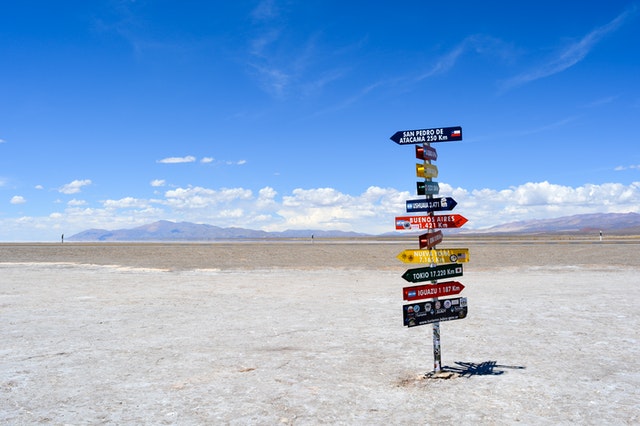
- Why You Should Go Backpacking in South America
- 2 Week Itineraries
- 1 Month Itineraries
- 3 To 6 Month South America Itinerary
- Essential Info for Your South America Itinerary
- South America Travel Budget
- Where To Start Your South America Backpacking Trip Buenos Aires Santiago Or Medellin
- How To Get Between Countries in South America
- The Galapagos Islands
- Where To Next Central America and Beyond
- What About Brazil and Venezuela
- Now That You Understand the Highlights Of Your Destination
- More Essential South America Info
WHY YOU SHOULD GO BACKPACKING IN SOUTH AMERICA
Backpacking South America is an amazing experience! You’ll experience unique cultures, hike up active volcanoes, hike through lush Amazon rainforests, raft down giant waterfalls, and explore some of the most beautiful beaches you’ve ever seen. There will be challenges, but the rewards will be well worth all of the hard work.
TOP 10 HIGHLIGHTS OF SOUTH AMERICA
- Patagonia and Torres del Paine National Park and El Chalten (Los Glaciares National Park)
- The Galapagos Islands: Living among wild animals on land and sea
- Buenos Aires : The gritty Paris of South America
- Machu Picchu: Ruins of an ancient empire
- The Lost City: An often missed highlight just as remarkable as Macchu Picchu
- Food: Lima and Buenos Aires
- Alien Landscapes: The high desert of San Pedro de Atacama and the salt flats of Uyuni
- Wine: Mendoza wine country of Argentina and the equally remarkable Chilean wine country
- Tayrona National Park with a campground nestled against the ocean and Minca highland coffee country, meer minutes away
- Hiking up snow covered volcanoes and sliding back down
- San Carlos de Bariloche and the Lake Districts and trekking through some of the most beautiful nature in the world
- The Perito Moreno Glacier, this vast icefield is the third largest reserve of fresh water in the world
Still planning your trip? Be sure to read our article on the best times to visit South America and wehere to go if you’ve already booked.
THE BEST SOUTH AMERICA BACKPACKING ROUTES AND ITINERARIES
In this article, we’ll share the highlights you need to know about all the best routes for backpacking South America and countries you need to visit on your South America trip to help you figure out the perfect backpacking route for you. However, feel free to click the links below for the perfect itinerary for 2 weeks by region, 1 month by region, and 3 to 6 months in South America.
2 WEEK ITINERARIES

2 Weeks in Patagonia
- San Carlos de Bariloche (2-3 days) and the lake district
- El Chalten (2-5 days) and trekking Parque Nacional Los Glaciares
- El Calafate and Perito Moreno Glacier (1 day)
- Puerto Natales (1+1 day) in prep for the Torres del Paine trek
- Torres Del Paine National Park (4 days for W trek, 7 days for circuit trek)
- Ushuaia (2 days) to expererience the end of the world and fly home
2 Weeks of Argentina, Chile, and Uruguay
- Optional: Montevideo and Colonia in Uruguay (2 days ) Experiencing a smaller more polite Buenos Aires
- Iguazu Falls (1 day) UNESCO heritage site that dwarfs Niagara Falls
- Mendoza (2 days) Argentine wine country experienced by biking between vineyards and wine tastings
- Santiago (2-3 days) Absorbing Chile’s capital through, art, history museums, restaurants, and nightlife
- Chilean Wine Country (1 day) Just as charming and intoxicating as Mendoza
- Pucon (2-3 days) Hike up a volcano and go where Chileans vacation
- San Carlos de Bariloche (2-4days) A trekking mecca (day hike or multi-day) that only a handful of places in the world compare to
- San Pedro de Atacama (2-3 days) : The clearest skies in the world allow you to see more stars than you’ll ever see anywhere else
2 Weeks of the Incan Experience – Peru and Bolivia
- Lima (2-4 days) : The best culinary scene in all of South America
- Cusco (2-3 days) : The gateway to Macchu Pichu against a backdrop of hipster polished Peruvian food and drink
- Sacred Valley (1 day) : A calmer, emptier way to discover the Incas
- Macchu Pichu and Aguas Calientes (1 day) : The highlight of Peru and (for some) South America
- Colca Canyon (2 days)
- Lake Titicaca (1-2 days) : The “highest navigable lake in the world”
- La Paz (1-3 days) : The highest de facto capital in the world, with a “frontier feel”
- Salar de Uyuni (Salt Flats of Uyuni)(2 days – ~3 to 5 days for SUV tour)
- La Paz (1 day) : Returning home
2 Weeks of Alien Landscape – High Altitude Deserts, the Bolivian Altiplano, and Salt Flats
- Santiago (2 days)
- Valparaiso (1 day)
- Atacama Desert + San Pedro de Atacama (2 days)
- Uyuni + Salar de Uyuni (2 days)
- La Paz, Bolivia (1 day)
- Lake Titicaca + Puno , Peru or Copacabana , Bolivia (1 day)
- Cusco (2 days)
- Macchi Picchu (1 day)
- Lima (2 days)
2 Weeks of Animals and Biodiversity – Galapagos, Volcanoes, and the Amazon
- Quito (2 days) : Acclimate to South America in this relaxed and conservative capital
- Otavolo and Otavolo Market (1 day) : Soak up local culture and shop for souvenirs at this uniquely Andean market
- Mindo Cloud Forests (1 day) : An extremely boidiverse subtropical forest that is like few other places in the world
- Galapagos – Isla Isabela (2-3 days)
- Galapagos – Isla San Cristobal (2-3 days)
- Galapagos – Isla Santa Cruz (2-3 days)
- Other options: Avenue of the Volcanoes, Antitana ecological reserve
1 MONTH ITINERARIES
1 month in southern south america.
- Buenos Aires (3-5 days)
- Montevideo and Colonia Del Sacramento (2 days)
- Iguazu (1 day)
- Cordoba (1-2 days)
- Mendoza (2 days
- Santiago (2-4 days)
- Valparaiso (2 days)
- Pucon (2-3 days)
- San Carlos de Bariloche (2-5 days)
- Puerto Natales (1 day – in prep for Torres Del Paines National Park
- Torres Del Paine National Park (4-8 days)
- Ushuaia (2 days)
1 Month in Northern South America
- Bogota (2 days)
- Medellin (2 days)
- Guatape (1 day)
- Cartagena (2 days)
- Zona Cafatera and Cali (2 days)
- Quito (2 days)
- Otavolo Market (1 day)
- Mindo Cloud Forests (1 day)
- Galapagos – Isla Isabela (2 days)
- Galapagos – Isla San Cristobal (2 days)
- Galapagos – Isla Santa Cruz (2 days)
- Sacred Valley (1 day)
- Macchu Pichu (1 day)
- Optional: Colca Canyon (2 days)
- Lake Titicaca (2 days)
- La Paz ( 1 day)
- Salar de Uyuni (Salt Flats of Uyuni (2 days)
- La Paz (1 day)
1 Month of South America Highlights
About the optimal time backpacking South America: The truth: one month aiming to experience all of South America is pushing it as that timeframe is much better suited for a single large country or a couple of small ones than experiencing a whole continent. Argentina, Chile, and Colombia can each easily take a month each when traveling at a comfortable, cost-efficient pace and absorbing the culture. Ecuador, Bolivia, or Peru could be paired as couplets for a good month of travel as well.
But for those with limited time and lots of ambition, we’ll share an itinerary, or more so a list of destinations and minimum timeframes, for blazing through the best of South America in one month.
The balance: Try to absorb the best of nightlife, food, wine, nature, history, and ruins without burning yourself out by being discriminating about your destinations.
How to use this itinerary: Highlight half of the locations that are absolute essentials for you based on your interests and bucketlist, and the 3 places/sites that are your top priority as you’ll want to spend extra time in them. For the remaining half, get comfortable with either breezing through them – to save time – or skipping them altogether – to save money and energy. As such we’ve listed recommended minimum days for each experience so you can patch together the itinerary that suits you based on the best South America Highlights for a month-long trip without burning out or wasting time.
- Buenos Aires (2 days)
- Mendoza (1 day)
- Santiago (1 day)
- Valparaiso (1 day
- San Pedro de Atacama (from Arequipa) (1 day)
- Puerto Natales in prep for Torres Del Paine National Park (1 day)
- Torres del Paine National Park (4 days) – only covers the W Trek
- Ushaia (1 day)
- Salar de Uyuni (2 days – accounting for bumpy transit time)
- Cusco (1 day)
- Maccu Picchu and Aguas Calientes (1 day)
- Arequipa (1 day)
- Lima (1-2 days)
- Guayaquil –> Galapagos Islands (5 days)
- Quito (1 day)
- Cartagena (1 day)
3 to 6 Month South America Itinerary
3 to 6 months is the perfect period of time for backpacking all of South America, with 4 months being the minimum sweet spot. The only difference between a 3 month South America itinerary and a 6 months is that we move at a slower pace and take more rest days.
6 months on the road is exhilarating, exciting, and a wonderful opportunity if you’re spending it all in South America. By being able to slow down, and spend a week in Buenos Aires , Medellin, and Galapagos, instead of mere days you’ll fall deeper into the experience and more in love with the continent. You’ll notice smaller details and absorb more as you will be in a less rushed mindset. Additionally, scheduling 1 to 2 days per week of no travel or sightseeing will leave you rejuvenated, refreshed, and a more hungry and interested traveler.
For this itinerary, we will list all of the recommended highlights of South America with the recommended timeframes for slower travelers. Be sure to take that recommended 1 to 2 days “off” per week, and don’t be afraid of getting stuck in a destination that captures your heart for a little longer than planned – just go with it.
- Buenos Aires (7 days): A perfect introduction to South America with plenty to do and great food. Consider taking Spanish lessons here
- Iguazu (1 day): Account for the extremely long bus ride in from Buenos Aires and know this waterfall will be worth the trip
- Cordoba (2 days) : Practice your Spanish in this university town surrounded by outdoorsy experiences
- Mendoza (2 days): Set aside one day for “bike and wine” tour wine tasting between vineyards of nearby Maipu, and relaxing in Mendoza proper
- Santiago (2 to 3 days): Explore Chile’s capital with heavy focus on history and art museums, nightlife, and just wandering
- Valparaiso (2 days): Explore the hills, graffiti, and nightlife one day, and soak up the towns vibe the next lounging and dropping in on beaches the next
- Pucon (2 days) : Climb Villarica volcano and slide down one day, spend the next sipping coffee and enjoying a popular Chilean vacation spot as locals do
- Puerto Natales and Torres Del Paine (11 days): Give yourself 1 day to prep, 7 to 9 days to do the “Circuit Trek” through Torres del Paine, and 1 day to recover back in Puerto Natales with a warm house and hot meal
- Ushaiia (2 days): Get the post office stamp in your passport denoting “the end of the world,” take a day trip to see penguins, and wander the city to catch “end of the world vibes.
- San Pedro de Atacama and the Atacama desert (2 days) : Give yourself time to explore by night and account for potenital hiccups on the travel to and from Atacama
- La Paz (2 days) : Explore the town, markets, and street food, then day trip to ride the “world’s most dangerous road”
- Salar de Uyuni (2 days): Experience the salt flats on a day tour fromUyuni and allow time for mishaps when arriving/departing
- Cusco (3 days): Visit the museums, do a free walking tour (or 2), and walk within and outside the city to discover ruins everywhere. Additionally, explore the nightlife and food scene thoroughly as it is just as strong as in Lima but with a Peruvian hipster vibe
- Sacred Valley (1 day) : Soak up Incan ruins without the crowds and chaos of Macchu Pichu
- Macchu Pichu (1 day) : Visit the highlight of Peru and inspiration for the character Indiana Jones
- Lake Titicaca + Copacabana/Puno (2 days) : Expereince the highest navigable lake in the world, and the culture that lives by its existence
- Lima (4 days) : Explore art, gourmet food & drink, and nightlife in this metropolis
- Guayaquil –> Galapagos Islands (7 to 10 days) : Slow travel through the Galapagos archipelago choosing as many independent and self guided experiences as possible for a richer, more pleasant experience
- Quito (2 days): Relax and wander, visit the equator, and just decompress in this relaxed and mellow stop
- Bogota (2 days) : Explore the museums (such as Museo del Oro), walking tours that cover the complex history, and nightlife including arguably the best nightclubs in South America in Colombia (and Latin America’s) financial center
- Medellin (4 days): Soak up the good life in a uniquely Colombian, vibrant, and complex place, starting with free walking tours, then visiting museums and eco-parks, following on with nightlife and (ideally) learning to salsa dance)
- Guatape (1 day): Visit a beautiful site in the mountains that looks like thousands of forested islands grew out of a lake
- Cartagena (2 days): Experience the Caribbean at its most “Caribbean” you’ll find in South America – outside of Baranquilla Carnival
- Santa Marta (1 day)
- Minca (1 day): Visit an organic and hydroelectrically powered coffee processing station and plantation
- Tayrona National Park (2 days): Hike in and camp by the ocean for at least a couple of nights
- Cali, Salento, and Zona Cafatera (2-4 days): Discover more than you ever wanted to know about coffee while basking in the home of salsa dancing, and perhaps taking some lessons
ESSENTIAL INFO FOR YOUR SOUTH AMERICA ITINERARY
Travel through South America is uniquely suited for backpacking or any long term travel experience that aims to embrace experiencing local culture, food, language, and nature in a less structured way than package tours, all on a rather small budget. Compared to that required to travel North America, Western Europe, the Middle East, and many parts of Africa, the $40 to $60 per day budget of South American countries (varying by country) is one of the main reasons I recommend South America, as well as Southeast Asia as the perfect first time backpacking destinations.
In return for flexibility of timeline and compromising on 4 star accommodation in favor of hostels, guest houses, and refugios, you’ll receive a one of a kind travel experience in return – a more contiguous expereince than Southeast Asia in culture and language, a more outdoorsy experience that revolves less around beaches and more around mountains, and lastly urban experiences that somewhat echo a gritty yet more vibrant version of traveling Europe. Architecture, food, and travel infrastructure abound but are still uniquely “Latin American” with a different indigenous touch and richness in every country and region.
Here, we’ll review some of the general and basic essentials that you should keep in mind while planning for your itinerary overall as well as each country and segment of your itinerary.
SOUTH AMERICA TRAVEL BUDGET
Travel in South America is in a very reasonable price range – between $40 and $60 a day for a backpacker style budget, averaged across all countries, assuming shared hostels, eating out once per day, and DIY traveling as much as possible.
Compared to other regions of the world, South America travel tends to be more expensive than Southeast Asia travel, which averages ~$35 per day, but slightly cheaper than traveling the Balkans, and much cheaper than traveling the USA, Western Europe, the Middle East, and Africa. In recent years, the price to travel South America has become even cheaper, relative to Europe, the Balkans and Southeast Asia as the cost of living in some of the best cities for digital nomads and backpackers in South America has dropped.
Keep in mind that Argentina, Chile, and Brazil will be the most expensive countries to visit in South America, and Buenos Aires, Santiago, and much of Brazil can become very costly if you get too caught up in the luxury lifestyle. Because of this, when planning your budget for South America plan your budget based on the amount of time you plan to spend in each country and budget much more than the $40 per day for Buenos Aires, Santiago, and Brazil in general. This way, you’ll have enough time and money for an enjoyable experience.
Tips for Saving Money in South America
- Travel by public transport between cities, specifically by bus, as much as possible, as air travel is very expensive
- Travel slower, because the longer you spend in a city, the cheaper the average cost per day becomes
- Cook at home, or at your hostel (this is common) and shop at grocery stores to “brown bag lunch” during the day to save money or order the “menu del dia” at restaurants for a cheaper option
- Quickly check the currency situation of the country you are entering next as bringing in cash dollars or Euros may garner a better exchange rate
WHERE TO START YOUR SOUTH AMERICA BACKPACKING TRIP: BUENOS AIRES, SANTIAGO, OR MEDELLIN
The best places to start your South America backpacking route are Buenos Aires, Santiago, or Medellin, due to location on the “Gringo Trail” and flight access.
Starting in Buenos Aires
Starting in Buenos Aires is the optimal introduction to South America as there are plenty of international flights arriving, the city is easily navigable and welcoming, and, with the exception of Brazil, most everything you will want to see in South America is located west and south or north making it possible to efficiently travel a loop through South America.
Within Buenos Aires, the vibe is welcoming and very European. You will be able to navigate easily in only English while you figure out the ins, outs, and idiosyncrasies of traveling in South America. Additionally, you’ll be able to take some quick and cheap Spanish lessons for a week while exploring the nightlife, robust Argentine BBQ scene, and complex history of a city that is interestingly Italian, Spanish, German, and Argentine at once.
From Buenos Aires you will be able to travel west through national parks, waterfalls, and wine country before traveling south from Santiago, Chile by bus, to hop between Chile and Argentina repeatedly and explore, trek, and camp through Patagonia until reaching the end of the world in Ushuaia.
At this point you can fly back to Santiago and proceed north, exploring Andean South America. On this leg you’ll experience the mountainous and otherworldly Bolivian altiplano, ancient Peru and the remnants of the Incan empire, the biodiverse and animal rich territory of Ecuador and the Galapagos archipelago, and the complex and vibrantly charming gem of Colombia.
From here, if you still have time on your agenda, sneak past Venezuela and explore the vast, complex, and beautiful Brazil wrapping around and ending in Sao Paulo.
Starting in Medellin
For a more direct path, start in Colombia, specifically in Medellin, to enjoy the good life, get acquainted with the vibe and way of South America, and take some Spanish lessons. Medellin is another city that is very accessible, with very cheap flights from almost anywhere in the world, easy to navigate with limited Spanish, and enjoyable while you settle in.
From Medellin, explore northern Colombia and the Caribbean as well as the Atlantic coast – extra points for timing the trip with Carnival as Barranquilla has the biggest and best Carnival outside of Rio de Janeiro and Sao Paulo – not skipping the Lost City of Colombia along the way. Then, continue falling south through Colombia, exploring coffee country and the heartland of salsa.
At the border, continue into Ecuador exploring its diversity and rerouting to Galapagos for a once in a lifetime experience.
After returning to the mainland, follow the backpacking trail south through Peru, exploring the best food scene in South America, remnants of the Incan empires, and some of the best surfing in South America.
Then, explore the rougher side of travel in Bolivia, passing through the extremely mountainous Altiplano and the salt flats.
Proceed into northern Chile and Argentina, switching from an Andean experience to a more heavily European influence, more wine, and more opportunities to camp and hike in the forested, mountainous backcountry of Patagonia instead of the rain forests of northern South America.
Continue the fall south to Ushuaia at the end of the world, potentially hopping a two-week trip by boat to Antarctica before flying up to Buenos Aires.
Spend the remainder of your trip exploring Argentina, traveling from Buenos Aires to the UNESCO site of Iguazu falls, to the university town and outdoorsy Cordoba, and the wine country of Mendoza at the base of Aconcagua, the tallest mountain in South America. Finally, hop a bus across the border to Santiago, Chile to end your South America tour.
Starting in Santiago
From the Santiago start, proceed on much the same path as starting in Buenos Aires, except travel south, Santiago to Ushuaia, then fly from Ushuaia to Buenos Aires followed by traveling west by bus, city-hopping your way to Santiago. End the South America tour traveling by bus north from Santiago to Medellin and Caribbean Colombia.
HOW TO GET BETWEEN SOUTH AMERICAN COUNTRIES
A defining characteristic of traveling South America is that it is best traveled by bus, with the flight from Ushuaia to either Santiago or Buenos Aires being the only logically necessary flight. This is partly why South America is a destination best suited for months of travel if traveling multiple countries or for a single country if traveling for less than a month, to offer sufficient time travel by bus without losing your sanity. Along the way, the slow travel of busses will allow you to soak up smaller destinations that are on the beaten path but simply less traversed.
As off-putting as longhaul bus travel sounds, the “cama,” which translates to “bed,” class of buses in South America, more common in Argentina and Chile than other places, is prevalent and consists of a large comfy seat that seems more like living room furniture and reclines completely into a bed, making overnight trips bearable and interesting but still comfy.
However, if you do decide to fly, note that domestic flights are far cheaper than flights across borders, usually by a few hundred dollars at least, even if the comparable domestic and international flights are the same length, on the same airline. Plan accordingly.
Tips for getting around South America:
- Plan on traveling by bus if possible
- Attempt to keep flights domestic to save money
- Colombia is the exception – with domestic flights being cheap and much more convenient than bus travel
- When flying to Galapagos, fly out of Guayaquil instead of Quito for cheaper prices and less headache
- Check out this article for more information on getting around South America: https://abrotherabroad.com/how-do-you-get-around-when-traveling-the-world/
COUNTRY BY COUNTRY OVERVIEW FOR BACKPACKING SOUTH AMERICA
The”Gringo Trail” through South America is one of the most scintillating and adventurous travel experiences on the planet combining urban experiences, towering mountains and ancient ruins, with friendly, vibrant culture in a way that few other destinations do. All possible on a rather small budget. As much as each country in South America embodies these traits, each country still truly has its own personality.
Argentina is uniquely European in the north, permeated with Italian culture, wine, and European architecture while having a Swiss Alpine feel in its southern experience.
Bolivia is a charmingly “rough” travel experience, taking you through high desert landscapes you might only see elsewhere in the Himilayas, and tying with Peru for its preservation of indigenous culture.
Ecuador is THE most unique place in the world to experience wild animals humanely, in a way that benefits them more than us, along with the most biodiverse landscape on the planet.
And every other country and region in South America carries its own personality and quintessential experiences.
With that said, no single itinerary or South America backpacking route is good for every traveler.
Because of this I highly recommend “getting the vibe” of each country in South America by reading our descriptions below, understanding the most easily traveled and economical route through them (the Gringo Trail) for you, starting in one of the three starting cities that interests you the most (Buenos Aires, Medellin, or Santiago) and just going.
From there, based on your passions and interests – food, wine, outdoors, architecture, nightlife, etc. – plan the travel allowing more days for the destinations and experiences you expect to love, and breezing past the destinations and experiences that just don’t get your heart racing.
In your itinerary, alot one day per activity (maximum two activities per day) and add an extra day or two of empty time in destinations you REALLY expect to love or that appear to have a lot that interests you on paper.
In the following sections, we’ll share the overview and highlights for the countries in South America you need to visit.
Click on any of the following countries to jump to our Country Quick Guides, or simply keep reading to soak it all in.
Argentina is an adventure-filled country with some of the world’s most beautiful landscapes and a great place to experience a mesh of European and Latin American culture. Backpackers should take a road trip between Buenos Aires and the Chilean border stopping at highlight cities along the way, then down South into the lake district and the Patagonian backcountry. On this simple L-shaped path you’ll enjoy the expansive, gorgeous scenery as well as its picturesque cities and easy access to the amazing food that Argentina has to offer – beef in the north and Patagonia lamd in the south.
In Argentina, real travel means experiencing one of the most poetic regions in South America: Patagonia. Throughout Argentine Patagonia, you’ll be able to hike for hours upon hours in federally protected national parks or go rafting down waterfalls through the mountain range. Backpacking Argentinian Patagonia also introduces travelers to food and cultures they likely won’t experience anywhere else in South America. The tradition of Argentine “asado” shifts from beef in the north to wild raised goat and lamb in the south. Additionally, the heritage of beer, brought by the Germans, and the establishment of mountain towns that seems remarkably Swiss and specialize in chocolate (like San Carlos de Bariloche) make for a unique experience on the Gringo trail. Be sure to try the beers by Cervezeria Austral, especially the Calafate berry ale.
Wanderers that do make it south will find endless opportunities for outdoor adventures– anywhere they go, there are infinite landscapes waiting to be discovered – from the frontier mountain of El Chalten, to just across the border in Torres del Paine National Park. while sights like El Calafate (near Perito Moreno Glacier), a quaint little fishing town that is the gateway to Antarctica due to its location near Ushuaia. Travelers in the area can rent boats for day trips onto the frozen glacier or take guided hikes with local tour operators.
There’s no shortage of activities: from trekking alongside llamas in Mendoza wine country, climbing Mount Fitz Roy (arguably one of the most
There is plenty of historic scenery and cultural heritage to explore in the north too. Buenos Aires was one of the earliest colonial settlements in South America for example. Further north “Salta La Linda” maintains an almost indigenous charm, justifying her name.
MY FAVORITES IN ARGENTINA
Buenos Aires is the capital and largest city of Argentina, as well as the third-largest metropolitan area in South America. Backpackers can take a walking tour around Buenos Aires, visiting historic districts such as San Telmo and La Boca that have preserved various architectural styles from different periods. Backpackers may also want to visit the Teatro Colon, an internationally acclaimed opera house that is home to performances from local artists and groups touring inter-America.Sa
When in Buenos Aires, Backpackers should take a walking tour around the city, visiting historic districts such as San Telmo and La Boca that have preserved various architectural styles from different periods. Backpackers may also want to visit the Teatro Colon, an internationally acclaimed opera house that is home to performances from local artists and groups touring inter-America.
Mendoza wine country offers backpackers a unique opportunity. Backpackers will find themselves surrounded by some of the most beautiful vineyards in all of South America with views of snow-covered Andes mountains in every direction. Backpackers can partake in classes about wine
Backpackers will find themselves surrounded by some of the most beautiful vineyards in all of South America with views of snow-covered Andes mountains in every direction. Backpackers can partake in classes about winemaking and tasting in Mendoza wine country. Backpackers will enjoy the expansive, gorgeous scenery as well as its picturesque cities and easy access to amazing food.
San Carlos de Bariloche and National Park Nahuel Huapi: The most beautiful and accessible hiking country I’ve seen in the world. Countless trails through forests, pasts lakes, and up mountains, with more than you could possibly do falling into the half-day category all of the way to the multi-day category making National Park Nahuel Huapi one of my favorite places in the world
El Chalten and Parque Nacional Los Glaciares: A frontier mountain town, simple and adventurous, adjacent to Parque Nacional Los Glaciares delivers a hiking and trekking experience through front country and backcountry that is somewhat of a “Torres del Paine light” experience and free – you just have to buy and pack in your food. each time I’ve visited, this has been of the most peaceful and enjoyable experiences hiking through Patagonia.
HIGHLIGHTS OF ARGENTINA
- Buenos Aires: The Paris of South America, gritty and filled with Argentine BBQ (asado)
- Mendoza and Argentine wine country: Bike tour vineyards tasting world class wines
- San Carlos de Bariloche and the Lake District: A German influenced mountain, surrounded by hiking and trekking opportunities, and the gateway to Argentine Patagonia
- Iguazu Falls, Argentina/Brazil Border: A UNESCO world heritage site, this combined waterfall has the largest flow of any in the world, taller than and twice as wide as Niagara Falls
- Patagonian Backcountry in El Chalten: A small, frontier town that sits on the edge of the Patagonia Glaciares National Park, with great free, rustic camping and trekking with a more adventurous, less refined feel
- El Calafate and the Perito Moreno Glacier: Witness the vast and impressive glacier Perito Moreno while exploring it via a series of walkways for a half day experience
- Puerto Natales, Chilean Patagonia, and Torres del Paine National Park: Hike the “W Trek” over 5 days or the “Circuit Trek” over 7 days in arguably the most impressive park in Patagonia
- Ushuaia: Experience the end of the world and the southernmost civilized city, potentially visit Antarctica
- More of Patagonia and the Wilds
- Argentine Asado (BBQ)
- Latin America meets Europe
- Best wine in Latin America
- Also Consider: El Bolson
WHAT YOU NEED TO KNOW ABOUT BACKPACKING ARGENTINA
Bring us dollars to get a better exchange rate and make your money go further thanks to the “dolar blue.”.
Due to recent history, Argentina is undergoing somewhat of an economic crisis. Though this event is terrible for locals, it doesn’t diminish the travel experience much and actually works in the traveler’s favor. The “Dolar Blue” is a “blue for an exchange rate much more favorable to you than the official rate. For example, at the time of writing this, the official exchange rate is 1 USD to to ~100 Argentine Pesos while by contrast the “Blue rate” is 1 USD to ~200 Argentine Pesos. The Dolar Blue rate alone makes traveling Argentine a great financial decision.
Comparatively, when I first traveled to Argentina in 2010, the currency exchange rate was 1 USD to 3.82 Argentine Pesos. At the current exchange rates, $1 will by you a Latte at an upscale coffee shop and $17 will buy you a ribeye steak at the best restaurant in Argentina (Don Julio’s).
To get the dolar blue, first educate yourself on the daily rate to go in informed. I’ve found https://bluedollar.net/ to be an accurate source. Next, bring your dollars.
If you don’t have any, going to Uruguay to withdraw from an ATM is a solid option, as there are many USD dispensing ATMs in Montevideo and Colonia.
Last, visit an “Arbolito” or unofficial exchange house kiosk. There are many located on the pedestrian street of Calle Florida.
Plan for long haul bus rides between cities
The distance between cities in Argentina are vast, so 12 to 20 hour bus rides aren’t uncommon. Do yourself a favor and only book “full cama” (full bed) bus rides over semi-cama and below
WHAT TO EAT AND DRINK IN ARGENTINA
- Mendoza Region Wine: Aim for Cabernets or Cabernet Sauvignon as these are their strengths
- Argentinian Steaks
- Chimichurri sauce
- Pizza, typical of Buenos Aires in an Argentine style
- Argentinean asados
- Argentine desserts Dulce de Leche and alfajores
DAILY BUDGET FOR ARGENTINA
Backpackers can expect to spend about 40 USD per day if they are traveling solo and making their own accommodation arrangements. Backpackers traveling with one other person can expect to spend about 50 USD per day on accommodations and food; those who travel with two people should
BUDGET FOR EATING AND DRINKING
Backpackers can budget about 40 USD per day if they are traveling solo and making their own accommodations arrangements. Backpackers traveling with one other person can expect to spend about 50 USD per day on accommodations and food; those who travel with two people should budget about 60 USD per
A budget for Backpacking Argentina will depend on a few factors. One factor is the time of year you go. Backpackers will have to take into account the high prices during the winter and shoulder seasons. Backpackers should also remember that accommodations are often much more expensive in the peak season (normally November to March). Other important factors in determining your budget are the length of your trip, how many people you are traveling with, and what type of accommodations you choose.
WHEN TO VISIT ARGENTINA
One of the best times to visit Argentina is during the shoulder seasons of September to November and March to May. Backpackers can explore at their own pace without feeling rushed and should be able to get a good price for accommodations. Those who want to avoid crowds may want to avoid the summer (in Patagonia) and winter months (in Buenos Aires and the North) as these are the peak travel seasons. Also consider visiting Patagonia for fall color in addition to the lighter crowds just before winter.
ARGENTINA VISA INFORMATION
Travelers can stay up to 90 days without being granted any type of permission from immigration authorities and without any fees.
GETTING TO ARGENTINA AND MOVING ON
Traveling into Buenos Aires to start any Argentina backpacking trip is the best option . A perfect Argentina itinerary and path would begin in Buenos Aires traveling the loop west then south through Patagonia and Chile by bus, and then flying from Ushuaia back to Buenos Aires to depart, or to Santiago to travel north and explore more Andean South America.
Keep in mind that as you travel south through Argentina you will (or at least should) bounce across the border into Chile to explore cities such as Santiago, Valparaiso, Pucon, Valdivia, Puerto Montt, Tierra del Fuego, and of course Puerto Natales and Torres del Paine National Park
THE ARGENTINA ITINERARY (**CITY ITINERARIES COMING SOON**)
- Buenos Aires
- Iguazu and Iguazu Falls
- Mendoza and Mendoza Wine Country
- San Carlos de Bariloche and the Lake Districts
- El Chalten (Patagonia)
- El Calafate and Perito Moreno Glacier
We’ve already mentioned that backpacking Argentina is a fantastic adventure, so it’s worth saying that Chile has just as many places and experiences worth exploring too. Backpackers who make the trip from Buenos Aires to Santiago will see the urban, cultured, and heavy European influence in Latin America, in the form of food, wine, university cities, and urban pockets, before following a more beautiful yet equally interesting path into Patagonia. The one up that Chile has is being arguably more outdoorsy and friendlier to the beach loving crowd.
Chileans, compared to Argentines and their neighbors, are remarkably more conservative, so you’re less likely to find them out at 3am on a Wednesday night going hard with work the next morning. On the other hand, thanks to the 4,000 mile coastline and landscape dominated by mountainous Patagoniw, Chileans outside of the bigger cities are know to be more outdoorsy and Salt of the earth. Take that to say Chile is the place you’re most likely to run into a local that’s a surfer, rock climber/mountaineer, and cowboy as well. And if the locals love these activities that means more opportunity for you to join in, safely ,and cheaply. If you prefer the outdoors, big night skies, and rugged landscapes to Italian influenced architecture, Chile is a place you could enjoyable fall through for months ending in legendary Torres Del Paine and Tierra Del Fuego.
By following the path south through Chile, from Santiago, “Valpo”, and Atacama, and bouncing back and forth between Argentina and Chile while falling south, backpackers can explore Torres del Paine National Park, take part in challenging climbing or make their way to Puerto Natales for an enchanting gateway town, climb a volcano (Pucon), explore the lake district on both sides of the Chilean and Argentinean border, pass through hippie towns, and more. Backcountry lovers seek out the many other less popular but equally beautiful national parks in Chilean Patagonia which tend to be more well maintained and improved than their Argentine national park counterparts.
On your way through Chile and Patagonia you’ll stumble past guanacos, pumas, and plenty of other backpackers enjoying life against a backdrop of incredible mountain landscapes while they traverse closer towards the highlight of the region – Torres del Paine National Park.
The further south you travel, the greener the landscape gets, until you’ve reached frost-covered volcanoes and the end of the world in Tierra del Fuego
Once you’ve fallen as far south as you care to, proceed north to experience the Atacama desert and some of the clearest skies in the world, perfect for stargazing in a way you will never experience anywhere else.
Chile’s long strip of land, dominated by coastline and mountain ranges, is an outdoor paradise speckled with fantastic wine. The conservative population, recently complex history (with the military junta), and lack of nightlife – compared to Argentina, Colombia, and Peru – make Chile perfect outdoors and nature lovers. EVERYONE should pass through, but plan how much extra time you spend in Chile according to your love of being outside.
CHILE HIGHLIGHTS
- Santiago: Chile’s capital, largest city, and start point for exploring Chile
- Chilean Wine Country: The Casablanca Valley is Chile’s premier wine region for crisp white wines (Sauvignon Blanc and Chardonnay) as well as Pinot Noir, located halfway between Santiago and Valparaiso. Essentially the Napa Valley to Valparaiso’s “San Francisco of South America” reputation
- Valparaiso : One of the best cities in South America according to lonely planet, Valparaiso is “Little San Francisco” with a South America twist. Hilly, artistic, and charming with its own version of “Napa Valley” (the Casablanca Valley) nearby
- Pucon: An outdoorsy lake town at the base of the permanently snow covered volcano VIllarica which is the trip highlight to trek and literally slide down after. In between you can enjoy the trendy cafes and socializing with international vacationers
- Puerto Natales and Torres del Paine National Park: The town and adventure base for arguably the best National Park in Patagonia and South America hosting a 5 day “W Trek” and a 7 day “Circuit Trek”
- San Pedro de Atacama: A high altitude desert city that boasts the clearest night skies in the hemisphere and unreal views of the stars amid a now trendy and hipster oasis
- Iquiqe: A resort town on Chiles north coast that gives the chance to sandboard HUGE sand dunes enroute to San Pedro de Atacama
- Valdivia: A past hub for German immigrants, as well as chocolate and beer, and now a lively university town with a solid nightlife and social scene
Also Consider:
- Colchagua valley for wineries – south of Santiago
- Chiloe (Region): An archipelago of 40 islands steeped in superstition and locals that are in touch with their heritage and roots of surviving in an adventurously unhospitable locale
- Puerto Varas: A quaint lakeside town that is Chiles conservative, quieter answer to Bariloche
- Central Chile: Great surf breaks, wineries, and Chilean cowboy culture
- Epic Surf Spots: Arica, Pichilemu
- Puerto Montt: The jump off point for travelers in Chile launching into Patagonia – big and busy
- Concepcion: A busy, urban port city and the second largest in Chile
WHAT TO EAT AND DRINK IN CHILE
- Chorillana: A mass of fries, cheese, hot dogs, and guilt that’s perfect drunk food.
- Teremoto: A drink legendary among college students. One drink will shake your world up
DAILY BUDGET FOR CHILE
The estimated daily budget for traveling in Chile depends on the type of traveler and the country they are visiting. Backpackers and modest tourists should expect to spend around $40 to $50 per day (shared hostel, one meal eat at a restaurant daily, self guided tours), but those who enjoy luxury can spend as much as $100 (private hotel room, eat out 3 times daily, several guided tours).
WHEN TO VISIT CHILE
Chile’s extreme climate in the south means that it has a smaller window of time each year in which it is appropriate to visit expecting sunny skies – in Patagonia. However the shoulder seasons are still great to travel Patagonia if you don’t mind surprise rain and weather shifts. Backpackers looking to experience the Patagonian summer months might try visiting from October through February for sunny weather, but expect the most tourists in December and January.
Those who want to see the snow-capped mountains of Chile should plan on visiting during its winter months which typically fall between April and September – and plan on being able to squeeze in some snowboarding and skiing. Backpackers looking to visit Chile during its spring, summer and autumn seasons (October through March) might be interested in exploring San Pedro de Atacama or Patagonia for outdoor-oriented activities.
VISA INFORMATION FOR CHILE
Travelers staying in Chile for less than 90 days will need to pay a $5 USD fee at the port of entry. Make sure your passport is valid for at least 6 months beyond the end-date of their Chilean visa Backpackers.
GETTING TO CHILE AND MOVING ON
As flights throughout South America are pricey, plan on bus travel when moving on to Argentina, Bolivia, or Peru from Chile. The land border crossing will be “interesting,” as Chile is very strict about the foods (mainly fruits and veggies) that cross the border into Chile, so ditch any fruits and vegetables before passing through customs.
ABOUT BUS TRAVEL IN CHILE
For long haul travel within Chile, for most Chileans, flights are out of the question, as they instead of for coach style “Pullman” buses, but likely not the kind you’re used to if coming from the US, Canada, or Europe.
These buses are honestly more comfortable than most plane rides – if you pick the right one. In Chile the longhaul bus classes are “cama” (meaning “bed”) and semi-cama (meaning “semi-bed”). The “Cama” seats fold down completely horizontal to create a bed comfortable enough for a 20 hour trip. I honestly love these buses for road trips as you get a seat more comfortable than any airplane I’ve been on, with the exception of a few first class rides, and a beautiful view out of the window, especially the further you travel south into Patagonia.
The bottom line: Wherever you’re traveling in Chile, go by bus and choose “full cama” for an even more enjoyable travel experience.
BOOKS TO READ ABOUT CHILE
- The House of the Spirits – Isabel Allende
- The Statues That Walked: Unravelling the Mystery of Easter Island – Terry Hunt and Carl Lipo (Rapanui)
South America itineraries commonly focus on countries, but adventures generally don’t stop at borders and Patagonia is a perfect example of that. Patagonia is a vast, wild, and a beautiful region. Located at the southern end of South America, stretching across Chile and Argentina, this legendary rugged landscape is well worth a visit.
For lovers of the outdoors that are pressed for time and craving a trip to South America, I highly recommend skipping the city life, flying directly into Ushuaia, and venturing solely through the region of Patagonia. That experience alone would be rich and satisfying enough to make Patagonia the only part of your itinerary.
HIGHLIGHTS OF PATAGONIA
- San Carlos de Bariloche + the Argentine Lake District: This Alpine style mountain filled with chocolate shops feels like and is the beginning Patagonia filled with deep blue lakes, towering green hills, and days of trekking in the epic Parque Nacional Nahuel Huapi
- Punta Arenas: The gateway to the Antarctic and a Patagonia jump off point that, thanks to its history, is worth a few days to explore its food, festivals (if time right), and character
- Pumalin Douglas Tomkins National Park: A 700,000 acre park gifted back to the Chilean people
- El Calafate: The largest city near the Perito Moreno Glacier. Though El Calafate doesn’t offer much, besides a fantastic all you can eat Patagonian BBQ joint, the city is the perfect place to base for your trip to the Perito Moreno Glacier
- El Chalten + Cerro Fitz Roy : A Patagonian frontier town in Argentina that is one of the quintessentially charming yet relaxing trekking experiences in the region as it is adjacent to the free to use Glacier National park, filled with free campsites, with the Cerro Fitz Roy mountain, the star of the Patagonia brand logo
- Puerto Natales town as a base for the Torres del Paine W and ) Circuit Treks
- Torres del Paine Torres del Paine National Park W or O Trek + Grey Glacier + Peho as the highlight multi-day treks in Patagonia
- Ushuaia: The southernmost civilized city in the world and the main “jumpoff point” for hopping a cruise to Antarctica
WHAT TO EAT AND DRINK IN PATAGONIA
- Austral Brewery Calafate Berry Ale
- Patagonian cordero (lamb) cooked Argentine asado style
- Chocolate (from San Carlos de Bariloche)
- Empanadas with a Patagonian twist
- Octopus and squid grilled on the beach
- Comparsa (deep fried corn pancakes with cheese)
WHAT YOU NEED TO KNOW ABOUT BACKPACKING PATAGONIA
- Distances are far between cities, so plan accordingly with snacks, bathroom breaks, and the potential for a bus to break down
- The weather can be unpredictable don’t think you’ll be able to travel Patagonia in the winter, and plan for sun, rain, and snow (potentially) year round
- Carry cash ATMs are fewer than in other cities in south America. Some cities only have one ATM and they’re commonly broken too
DAILY BUDGET FOR PATAGONIA
Plan on spending ~$50 per day minimum in cities throughout Patagonia not including drinks and entertainment, and significantly less when camping in places, outside of Torres del Paine Park.
Hostel Accommodation: ~$20 per night
Budget Hotel Accommodation: ~$50 per night
Transportation between cities: $20 per movement
Campsites: Free to ~$10
Food costs per day: $20
Budget for Torres del Paine National Park W Trek: ~$150 if you bring in your own food
Budget for Torres del Paine National Park Circuit Trek: ~$100 if you bring your own food
WHEN TO VISIT PATAGONIA
Patagonia is a unique place where you’ll want to go during the summer for the best weather and experience. Summertime, between December and February, the weather is pleasant and dry, but plan for Patagonia to be filled with tourists.
The shoulder season of springtime, during October and November, amd autumn,, during February and March, give other great options wherein the weather is cooler, crowds are lighter, and prices are less expensive.
GETTING TO PATAGONIA AND MOVING ON
By plane, plan to fly into Ushuaia, which has the nearest airport, and plan to bus into your preferred city, region, or destination in Patagonia from there.
For budget travelers and those already in the region, plan to take a bus, and plan your itinerary at least a week out if possible. Buses between locations and on specific routes in Southern, more remote South America only run 2 to 4 times per week, and full cama buses run even fewer days per week. To ensure you don’t spend too much more time in a destination than planned (getting stranded), check bus schedules at the town’s central bus station when you arrive, and don’t rely 100% on online bus schedules.
BEST BOOKS AND MOVIES ABOUT PATAGONIA
- Whispering Land
- 180 South (movie)
- In Patagonia – Bruce Chatwin
- The Old Patagonian Express – Paul Theroux
- Patagonia: A Cultural History – Chris Moss
PATAGONIA ITINERARY
- San Carlos de Bariloche
- Punta Arenas
- The new Patagonia National Park
- El Calafate Perito Moreno Glacier, Lago Argentino, and Los Glaciares National Park
- El Chalten + Cerro Fitz Roy for the trek past Lago de Los Torres or the 4 Day Huemul Circuit
- Puerto Montt
- Parque Nacional Pumalin (largest national park in South America)
- Futaleufú
- Parque Nacional Cerro Castillo
- Puerto Natales (fit and equip for Torres del Paine)
- What: Daily Torres del Paine W trek talk and Q&A at 3pm at Erratic Rock
- Torres del Paine Torres del Paine National Park W or O Trek + Grey Glacier + Peho
Bolivia is a country that anyone seeking to explore the natural wonders of South America should visit. Hike through incredible mountain ranges, take part in challenging climbing in the Bolivian Altiplano -(the Himalayas of South America), and visit the country’s highlands, and more to experience an extremely unique landscape and country. All with a backdrop of complex history and visibly preserved indigenous culture.
The Bolivian Altiplano carries a special beauty that is unlike anything else on earth travelers will have seen in their travels. Visitors will also experience a multitude of indigenous cultures, charming with op hats,, pet alpacas, and brightly colored traditional dress, and incredible attractions with “adventurous” transport en route.
Go by offroad ready chicken bus or SUV tour to the Salar de Uyuni, one of the world’s largest salt flats with mesmerizing optical illusions worthy of hours long amateur photo shoots.
End the trip in Bolivia, before crossing into Peru, at Lake Titicaca, which is home to a number of indigenous ethnicities and the “highest navigable lake in the world,” with man made islands made of reeds.
HIGHLIGHTS OF BACKPACKING BOLIVIA
- La Paz: The highest de facto capital in the world with the “Bolivian Himalayas” as a backdrop
- The towering Andes, the Himilayas of South America running across and towering above the vast and flat Bolivian altiplano
- Lake Titica: The “highest navigable lake” in the world, shared with Peru, with man-made floating islands constructed of Totora root.
- Salar de Uyuni (The Bolivian Salt Flats): Vast, impressive, and one of a kind experience – by day tour or multi-day SUV adventure
- Mountain Biking the most dangerous road in the world
WHAT YOU NEED TO KNOW ABOUT BACKPACKING BOLIVIA
- Keep your valuables hidden, especially passports as petty theft isn’t uncommon
- Travel as a group or in pairs to avoid being targeted
- Backpackers should invest in a reliable travel insurance plan for their trip (e.g., World Nomad)
BEST FOODS IN BOLIVIA
- Noodle chili
- Chola sandwich
- Cuñapé
- Jak’s Iawa
- Pique Macho
DAILY BUDGET FOR BOLIVIA
Bolivia is one of the cheapest countries in South America to travel costing roughly $25 to $35 per day (sometimes cheaper) for budget travelers and backpackers that don’t mind shared accommodation and avoid eating out too much. For less frugal travelers,, a budget of $50 to $65 a day for the basics, plus excursions will suffice.
Accommodation: ~$7-10 for a hostel, ~$25 for a budget hotel
Food: $10 for budget travelers, ~$15 for splurging
Transport: Averaged ~$5 per day if changing cities every 2 to 3 days
Activities: ~$10 to $30 self-guided and budget, $50 to $100+ for luxury
WHEN TO VISIT BOLIVIA
The best time to visit Bolivia is during the summer months between May and October when the dry season brings clear skies and the nights aren’t as cold. Outside of these summer months, temperatures in the highlands of the altiplano are much colder and may make hiking and camping less enticing.
VISA INFORMATION FOR BOLIVIA
Backpackers visiting Bolivia require a tourist visa, which can be obtained at any land border or airport, on arrival. The visa is valid for 30 days and costs $160. You will need 6 months validity on your passport, have proof of a flight leaving Bolivia before the expiration of your visa, and have the address for your accommodation in Bolivia.
You can find more information at the State Department website here
BEST BOOKS ABOUT BOLIVIA
- Bolivar: American Liberator
- The Lost City of Z
- Marching Powder – Thomas McFadden and Rusty Young
Peru is great for any backpacker looking to dabble into not just a rich present day culture, but deep into the past as well. The country has so much diversity in geography, culture, history, ruins, and gastronomy that it could very well be satisfying as your only destination for a 2 to 4 week adventure.
Peru is one of the cheapest places in South America to travel, slightly more expensive than Bolivia but delivering a far better living and travel standard. The Capital of Lima has a variety of restaurants, museums, and nightclubs that are not as pricey as they would be in other major cities like Rio, but just as lively, gourmet, and satisfying. Visitors can also visit Cusco for its famous Inca ruins or hike the Huayhuash circuit on one of Peru’s famous day hikes while diving into Peru’s hipster food, drink, and art scene.
HIGHLIGHTS OF BACKPACKING PERU
- Lima: Home to the best food in South America, Peruvian, fusion, and otherwise, and some of the best restaurants in the world
- Cusco: A city littered with Incan ruins, charming pockets of neighborhoods and great archeological museums, and the jumpoff point to legendary Macchu Picchu
- The Inca Trail trek or the Salkantay Trail trek: Adventurous, multi-day hikes through jungle and idigenous villages leading to the iconic, legendary highlight of Peru – macchu Pichu. Inca Trail – 4 days over 25 miles, Salkantay Trail- 6 days over 37 miles
- Macchu Picchu: The ancient and once lost city of the Incas, towering thousands of feet above sea level and the surrounding landscapes and inspired the story of Indiana Jones
- Huayhuash Circuit Trek (8 to 12 days): An often overlooked, adventurous, and enjoyable trek in Peru for outdoorsy travelers
- Colca Canyon: Another great and often overlooked trek in Peru
- Countless Archeological Sites hidden within the city of Cusco and around
BEST FOODS IN PERU
- Ceviche: Citrus “cooked” fish dish that Peru is legendary for.. Every region has a variation, so try some everywhere you go
- Lomo Saltado (Stir Fried Beef)
- Aji de Gallina (Creamy Chicken)
- Papas a la Huancaina (Potatoes in Spicy Cheese Sauce)
- Cuy (Guinea Pig)
- Causa (Potato Casserole)
- Rocoto Relleno (Stuffed Spicy Peppers)
- Anticuchos de Corazon (Grilled beef hearts)
- Arroz con Pato (Duck with Rice)
- Pollo a la Braza (Simply amazing roasted chicken)
WHAT YOU NEED TO KNOW ABOUT TRAVELING IN PERU
Bring lots of water and a sense of adventure whenever you hike, trek, or adventure in Peru. The altitude and heat will dehydrate you faster than you think.
Pack cash in order to buy food or drinks during their journey. ATMs will be rare at roadside cafes and on hiking trails.
DAILY BUDGET FOR PERU
Backpacking Peru will cost roughly $30 to $40 a day, if managing how much you eat out, and staying in hostels.
An average meal will be about $5 ( adding up to $15 to $25 per day), hostels will run $10 a night, and imported beer will run $3.
WHEN TO VISIT PERU
May to September is high season for tourism and the best time to visit Peru. Though the costs will be higher and the attractions will be crowded, this is the season to visit.
The low tourist season of January to April may offer cheaper prices and thinner crowds, but the high altitude jungles of Peru will be in the middle of rainy season and extremely rainy. Macchu Picchu and the Inca trail regularly shut down in February due to excessive rain.
VISA INFORMATION FOR PERU
For most nationalities, no visa is necessary to enter Peru, just 6 months validity on their passport. The visa is valid for up to 183 days, at the discretion of the issuing immigration officer.
BEST BOOKS ABOUT PERU
- Inca Empire: A History from Beginning to End
- Turn Right at Machu Picchu – Mark Adams
- The White Rock: An Exploration of the Inca Heartland – Hugh Thomson
- Eight Feet in the Andes – Dervla Murphy
- Last Days of the Incas – Kim MacQuarrie
Ecuador is the premier country in South America to soak in the experience of wildlife and nature. As the world’s most biodiverse country and home to the Amazon and the Galapagos Islands, few other places in the world will fill your thirst for David Attenborough styled Planet Earth adventures.
Backpacking Ecuador offers opportunities for hiking through cloud forests and active volcanoes, swimming with pink dolphins on the coastlines, taking in an aerial view of colourful villages from high vantage points and shopping from local indigenous markets. After the traditional sites, the Galapgaos archipelago offers interaction with wildlife – sea lions, sharks, iguanas, sea turtles, penguins, and seabirds – that you will unable to match anywhere else in the world.
Those who are up for a real adventure should hike one of Ecuador’s seven amazing wildlife reserves – like Mindo-Nambillo Cloud Forest Reserve – to see howler monkeys swinging on branches or quetzals (South America’s national bird) flying overhead.
Aside from Sri Lanka and Namibia and a handful of countries in Africa, nowhere else will you bring you as close to animals. And aside from Indonesia, no country will immerse you in adventures with aquatic animals like the Galapagos Islands and Ecuador as a whole.
For outdoorsy travelers, Ecuador and the Galapagos archipelago are perfect complements to Patagonia and not to be missed.
HIGHLIGHTS OF BACKPACKING ECUADOR
- Cotopaxi National Park
- Mindo-Nambillo Cloud Forest Reserve
- The Galapagos Islands (Isabella Island, Santa Cruz Island, and San Cristobal Island)
- Quilota Loop
- Other: Guayaquil
- Wildlife: In the Galapagos Islands and rainforests within the Amazon
- Rainforests
- Biodiversity
- Walking across the equator
WHAT YOU NEED TO KNOW ABOUT BACKPACKING ECUADOR
1. Get used to the altitude: The altitude in Ecuador is significantly higher than most places in North America, expect Peru. Unless you just came from Peru, plan to slowly adjust to the altitude at a low elevation while on your way to Ecuador or spend a few days in your first city (like Quito at 2,850 meters/9,350 feet) getting acclimatized. Hiking and trekking will be unnecessarily more difficult when you’re not acclimated, so take it easy and start out slow.
2. Be prepared for rain: Expect rain every day. It can come down in buckets or just sprinkle little drops, so pack optimism and a rain jacket whenever you venture out.
3. Wear sturdy shoes: Backpacking Ecuador requires a lot of walking which can add up quickly, on uneven, sometimes rocky, and sometimes muddy terrain. As such, you’ll need comfortable shoes with good ankle support. Backpacking shoes with good grip are recommended. Either some lightweight and packable hiking boots, or water friendly hiking saddles like Chacos or Tevas.
4. Fly from Guayaquil to the Galapagos Islands to save money : If you decide to go to the Galapagos Islands (which you should) then fly out of Guayaquil, instead of Quito, to save $150 on your flight and actually arrive via direct flight as most flights to Galapagos connect through Guayaquil
BEST FOODS IN ECUADOR
- Empanadas de Leche
- Guaytacos Ecuadorian dish with a variety of herbs and an avocado dressing
- Albóndigas soup
- Locro: Potato, corn, avocado, and cheese soup
- Chicha: Fermented corn drink
- Empanadas: A corn based pastry stuffed with meat, potatoes, and various vegetables
- Pisco: The local alcohol brewed from grapes and distilled for kick
- Llapingachos: Potato cakes
- Encocados: Fish served with a coconut sauce
- Seafood: A raw seafood cocktail prepared with lime and seasoned with spices and chili
- Seco de Chivo: Goat stew
DAILY BUDGET FOR ECUADOR
If staying in hostels instead of hotels, traveling Ecuador should be $30 to $40 a day. That is assuming you are traveling as a backpacker, staying in a hostel and managing how often you splurge and eat out.
Travelers who are not staying in hostels will spend about twice as much at around $60 to $80 a day, including long trips and excursions into the Amazon.
- Average meal: $5, Daily $20 to $30 (food, drinks, and snacks)
- Hostel cost: $8 for a shared room, ~$12 for a private room
- Imported Beer: $3.50
WHEN TO VISIT ECUADOR
High season for tourism is between May and September, when the weather is relatively cool and overcast with much less chance of rainfall, however, expect higher prices and more tourists. Backpackers visiting in October and November, in the shoulder season, will experience the best balance of weather and low prices.
Backpackers who want to find cheaper prices may opt to visit Ecuador in its low season of January to April – though it’s important to note that this is also when the jungle’s highland regions are experiencing monsoon season which may result in some parts of the country being flooded. Backpacking at this time is still a great call if you’re interested in seeing an active volcano and can brave the rain, or are up for some serious waterfalls hikes as the rains will “fuel up” the rivers and waterfalls making for great rafting opportunities.
VISA INFORMATION FOR ECUADOR
For most nationalities, no tourist visa is needed on arrival and a stay of up to 90 days is allowed. You simply need a passport with a minimum of 6 months of validity and your flight out of the country within 90 days.
BEST BOOKS ABOUT ECAUDOR
- The Voyage of the Beagle – Charles Darwin
THE GALAPAGOS ISLANDS
The Galapagos Islands are often thought of as one of the most impressive places in South America; and for good reason! These islands boast a natural habitat so diverse that scientists have found over a thousand unique species living with the borders of the archipelago.
You’ll find marine iguanas, land iguanas, giant tortoises, elfin forest dragons, penguins and sea lions to name just some of the bizarre animals inhabiting these islands. Backpacking to these enchanting islands is an absolutely unforgettable adventure that you won’t want to miss out on! The best part about visiting this remarkable place? Backpackers can enjoy amazing views no matter what budget they’re on making this the perfect opportunity for everyone.
WHY SHOULD YOU BACKPACK THE GALAPAGOS ISLANDS? FOR ANIMALS, ADVENTURE, AND BEAUTIFUL SCENERY
Highlights of backpacking the galapagos islands.
San Cristobal Island: The lux island, with the best accommodation, fanciest restaurants, and swankiest bars, but still with plenty of excursions you can do on your own. From snorkeling in a bay with sea lions, to hiking through nests of sea birds in an eco-friendly way. Between those experiences, swim with turtles and hammerhead sharks, and get chased in the water by sea lions pups.
Santa Cruz Island: The “backpacker island,” cheaper, packed with more nearby excursions, on island and on the ocean, and home to an amazing nightly market where you can have a lobster and seafood dinner grilled in front of you with $25 buying a lobster and the rest of a meal for 2 people.
Isabela Island: The “adventurous island” as it is the largest of the three and mostly uninhabited as it is the youngest island, and filled with lava fields on the far end. If you want a truly adventurous experience, visit, and aim for the dry season.
WHAT YOU NEED TO KNOW ABOUT BACKPACKING THE GALAPAGOS ISLANDS
- You don’t need a live aboard cruise. Hopping islands and taking day trips snorkeling is a much cheaper and more enjoyable way to experience
- For most sites, you’ll see more animals snorkeling than you will diving
- Each island has a distinct personality – one is luxury, one is normal, one is adventurous, roughing it ready, and backpacker-ish.
- There is a private flight from the remote island of Isla Isabella, that is worth it if you’re pressed for time. The price is ~$100
- Alternate between self guided day trips and paid snorkeling trips to make the most of your trip and get the most bang for your buck
BUDGET FOR THE GALAPAGOS ISLANDS
- A modest meal (lunch or dinner): $10
- Accommodation: ~$20 for a shared dorm, ~$35 for a private double room
- Snorkel tour: ~$50 to $100
WHEN TO VISIT THE GALAPAGOS ISLANDS
Though December to May are the best times to visit for pleasant temperatures and dry days, savvy travelers will want to time their experience around the movement of their favorite animals. Turtles, penguins, seals, various sharks, and various fishes all change where they live and nest throughout the year – sometimes closer to accessible areas and sometimes far away – based on breeding habits and food patterns that involve following their food supply.
To find the best time for you to visit Galapagos, decide the animals you would love to experience and research the migration patterns (closer to or further from Galapagos) and time your visit accordingly.
VISA INFORMATION FOR THE GALAPAGOS ISLANDS
Though no visa is required to entire the Galapagos Islands, because they are part of Ecuador, there is a $100 fee upon landing at the airport in order to support the maintenance of Galapagos National Park.
BEST BOOKS ABOUT THE GALAPAGOS ISLANDS
Vibrant culture, mecca of salsa dancing, the financial and tech hub of South America, former drug kingpin empires, and beachy coastline (Caribbean and Pacific) make Colombia a great country to backpack through. Travelers can see the beautiful Andes and Cordillera mountain ranges on the horizon, virgin jungle perfect for trekking, high mountain lakes with no less than six bizarre species of trout, cross bird-infested lowlands to reach pink flamingos and snow-capped peaks in just three days of wandering.
The capital city of Bogota is fun and welcoming to tourists with great nightlife and day attractions too while other nearby towns and neighborhoods within offer breathtaking colonial architecture in an environment where time seems suspended.
Medellin itself is one of the highlights of Colombia and South America, rivaling the experience in Buenos Aires while being cleaner and more functional with more down to earth locals. From Medellin you have quick access to Cartagena (by cheap flight)and islands off the coast like Malpelo and Sangral which are havens for sea lions – the largest colony of fur seals in the world can be found on Isla Clarión.
Beyond the cities, nightlife, and beaches, Colombia hides its own gem, “La Ciudad Perdida” or “The Lost City” which rivals Macchu Picchu in importance and stature. It is much more difficult to reach (adding to the adventure) and is far less visited, meaning you will likely have this remnant of the ancient Tairona civilization to yourself.
HIGHLIGHTS OF BACKPACKING COLOMBIA
- Cartagena’s walled Old Town and nearby Caribbean beaches
- The Lost City
- Zona Cafatera
- Sierra Nevada de Santa Marta National Park
- Zipaquirá
- Tayrona National Park
- Medellin and Antioquia
- Lost City – Sierra Nevada de Santa Marta
- Carnival (in Baranquilla)
BEST FOODS IN COLOMBIA
- Ajiaco (traditional Colombian soup)
- Tamales de Choclo or Plato Criollo (Colombian tamale with rice, ground beef and vegetables)
- Bandeja de Paisa
WHAT YOU NEED TO KNOW ABOUT BACKPACKING COLOMBIA
- Backpackers can feel at ease in Colombia because violence rates are lower than in many other Latin American countries – but take precautions as you would anywhere against pickpocketing and petty theft
- Keep a low profile, especially while touring the cities and avoid wearing conspicuous clothing that could draw attention to you and be a target for thieves
- Stay on public transportation when traveling between major cities. Private shuttles from airport to city center are available but can be expensive.
DAILY BUDGET FOR COLOMBIA
- Total Daily Budget: $40 for budget travel, ~$70 for more comfortable travel per day
- Accommodation: ~$12 per day for a hostel, ~$25 per night for a hotel room
- Meals: ~$4 per meal, $15 to $25 per day total
- Transportation: ~$7
- Entertainment: ~$12
WHEN TO VISIT COLOMBIA
The best time to visit Colombia is December to March when the weather is drier. The wettest months in Colombia are September and October. However Medellin is known as the “City of Eternal Spring” and even in its rainier moments I still loved that city. If you are traveling elsewhere, not on the coast, double check the season, but Medellin is a safe bet year round.
VISA INFORMATION FOR COLOMBIA
Most nationalities do not need a visa for less than a 90 day stay, however their cumulative stay cannot exceed 180 days in a single calendar year.
BEST BOOKS ABOUT COLOMBIA
- One Hundred Years of Solitude – Gabriel Garcia Marquez
THE LOST CITY AND THE 5 DAY TREK TO REACH IT (LA CIUDAD PERDIDA)
The Lost City of Colombia is an ancient city built by Tayrona Indians. Adventuroua travelers can visit the city to explore the rich heritage of the Tayrona and see grand and ancient ruins.
A new adventure that rivals the experience of Macchu Picchu and the Inca Trail trek. Whereas the Inca Trail experience can have a months long waitlist and cost $1000+, the Lost City has thin crowds and will cost ~$300 for the 26 mile trek.
The Lost City of Colombia is one of the most hidden and least visited places in all South America. It was first brought into the light by a group of Americans led by Tovar Jara who followed the ancient Inca steps up to a plateau in Ecuador where they discovered carved stone, some gold jewelery, and an Incan/Maya calendar shaped like Stonehenge.
Comparison of the Lost City and Macchu Picchu
The lost city dates back to 800 AD and was home the Tayrona Indians, while Macchu Picchu dates back from the 1400s with the Inca empire. The “Ciudad Perdida” was hidden in the jungle for over 400 years, while Macchu Picchu was “lost” for nearly 350 years.
Both treks are ~25 miles long (round trip for the lost city trek), but the Inca trail is difficult simply because of the elevation changes, the trek to the lost city is adventurous on its own, traversing through dense jungle, rivers, and more of ~5 days.
The Lost City in Colombia and Macchu Picchu are both popular tourist destinations. However, there are some major differences between these two cities. Trekkers who want to delve into Colombia’s rich history should visit the Lost City. It’s one of the oldest sites found in South America. It is believed that the Lost City was occupied by people as early as 8 000 BC before being abandoned around 1500 AD. Backpackers may have the opportunity to explore this ancient city that’s filled with ruins of a once-thriving society.
An interesting similarity between the two cities is that each was built on top of a mountain and has stone pathways up to its gates. Both were built for spiritual purposes with the intention of connecting to celestial bodies from their heights. Tourists visiting Macchu Picchu will see pre-Columbian ruins which date back to 1400 AD.
WHERE TO NEXT: CENTRAL AMERICA AND BEYOND
As you reach Colombia or Ushuaia and thus the end of your backpacking trip through South America, my guess is you’ll be leaving with unforgettably amazing memories and experiences. For most, that alone is the trip of a lifetime and worth departing with a huge smile on your face.
However, for those lucky enough to have six months to a year or more free to backpack around the world , where should you go next? I highly recommend one of four options
- Central America
- Southeast Asia
- The other four “trails” around the world
- One of the “mini backpacking routes” around the world
CENTRAL AMERICA
Being only a short plane or boat ride from Colombia, Panama and the rest of Central America are fantastic follow on destinations South America. With coast on both sides of the beautifuk strip of land and a vibrant mix of Latino and Afro-Caribbean culture, the beachy paradises that stack up to be Central America are perfect backpacking destinations. Beaches, surfing, diving, biodiverse landscapes, animals, volcanoes, the tropical “island style” nightlife you’d expect from a Caribbean paradise, and an all around “living the good life” vibe are what you’ll find no matter which country you visit.
Beyond Central America, but close in vibe and location, is a digital nomad favorite of Mexico. Mexico offers some of the most diverse and rich experiences of the region, with an amazing food scene, vast coastline, and fantastic, welcoming culture and people with depth and charm throughout.
Though the cost of travel in Central America will be more expensive than in South America, the experience will be just as rich and (in the more expensive places) will offer more of the amenities common in the US, Canada, and Mexico that are difficult to find in South America.
So, if you have a few more months on the road and want a place near South America, consider sailing to Panama and continuing north to Mexico.
SOUTHEAST ASIA
For backpackers on the “round the world” tour aiming to hit all of the backpacker highlights in the world and aiming for a cheaper cost of travel, the “ Banana Pancake trail ” popular with backpackers in Southeast Asia is the perfect way to spend three to six months of travel, with four months being the sweet spot.
So if you’re on the year long backpacking trip, I highly recommend Southeast Asia – the cluster of Vietnam, Thailand, Cambodia, Laos, Myanmar, and possibly Sri Lanka, Malaysia, and Indonesia as your next destinations.
During the wanderings you’ll experience the hub of backpacker culture, beach life, and thousands of years old cultures all possible on a budget of $25 to $40 per day.
Be sure to check out our Ultimate Guide to the Banana Pancake Trail and Backpacking Southeast Asia
THE BACKPACKING TRAILS AROUND THE WORLD
For the travelers lucky enough to have a whole year or more to explore the world, I highly recommend making the most of it by trodding off the beaten path and on to more budget friendly destinations over the popular and famed travel locales. Instead of Western Europe, travel to the Balkans, the Caucus region, and Eastern Europe. Even better, travel Arabia and the highlights of the Middle East.
As daunting as this task of hitting the major regions of the world – the Balkans via the “Balkan Walk”, Southeast Asia via the “Banana Pancake Trail”, the Middle East via the “Arabian Trail,” and Central America via the “Maya Trail” – may seem it is sctually easier than you think. Each of these paths through their respective regions are filled with friendly backpackers traveling on a self contained, conveyor belt like path if backpacker friendly infrastructure that shuttles them through the highlights of each region.
To learn more about “The Trails” approach to backpacking around the world, read our full article “ The Trails: A Guide to Backpacking the World .”
THE “MINI TRAILS” OF THE WORLD: 15 PERFECT TRIPS FOR 2 WEEKS OR LESS
If you are not lucky enough (yet) to have a year available to travel the world, the “ mini-backpacking trails ” are perfect for you. 15 countries and regional backpacking and travel paths that fit perfectly into a 2 week trip while delivering all of the pleasure, excitement, and adventure of a round the world trip.
Here are the 15 mini-backpacking trails of the world
- Vietnam : The new backpacker trail and moto adventures
- Thailand : A classicstarter for backpackers
- Philippines : Waterworld, filled with diving and liveaboard cruises
- Bali & the “Gilis” : Island meets Asia meets eclectic
- Myanmar : Ancient civilizations
- Sri Lanka : Animal safaris, tuk tuks, ancient kingdoms, and surfing
- Nepal : A mecca for trekking
- Colombia : Close to home and rich with vibrant experiences
- Argentina & Chile : A Latin American European experience wrapped in wine, steak, and outdoors
- Patagonia & the Argentine Lake Districts : Quintessential trekking experiences in South America
- Bolivia, Peru, and Galapagos : South America’s frontier at the Andean Altiplano and the “Tibet of South America”
- Turkey : East meets west dotted with history and otherworldly landscapes
- Israel and Jordan : A quintessential experience of the Middle East, safely, and easily
- Croatia & Montenegro : Coastal Europe with castles and irreplaceable views
- Albania : Mediterranean beaches and emerging experiences
WHAT ABOUT BRAZIL AND VENEZUELA?
Brazil is so large and rich in experience that it should be its own trip. Traveling Brazil properly would involve a 4 to 6 month trip, experiencing the contrast of vibrant cities such as Rio, vast cultural hubs like Sao Paulo, a plethora of Amazonian gateways, countless beach cities – ritzy like Florianopolis and far off the beaten path – and so much more to explore. Additionally, the vast distances between the numerous sites you need to see make Brazil much harder to travel than its South American siblings.
If you want a taste of Brazil, pass through Rio, Sao Paulo, Recife, Florianopolis, Porto Alegre or Manaus (the gateway to the Amazon).
Backpackers who want to visit the Amazon can stay in Manaus and then travel downriver on a boat (usually for as long as 2-3 weeks). This also offers the option of flying or taking a bus from anywhere in Brazil all the way to Manaus and exploring all they can from there. Backpackers can explore the mountains of Rio de Janeiro or head east to Salvador de Bahia, where they’ll find miles of beachfront property in one of South America’s most popular tourist destinations.
Also consider the Brazilian Pantanal in Mato Grosso do Sul. Backpackers looking for experiences that are truly off the beaten path will find them throughout Brazil, but especially in it’s northern reaches and inland cities such as Palmas or Fortaleza.
As for Venezuela…
Venezuela is chreenrly experiencing a serious economic crisis and danger as well. In my time in South America, I ran into several Venezuelans who chose not to go back to Venezuela due to security concerns – and I would advise most travelers to do the same.
Venezuela is currently experiencing instability with a corrupt government system that has poor track record for protecting travelers and that should play heavily into your decision to visit Venezuela.
I do hope things return to normal soon for the populace and travels as Venezuela is a country that matches the rest of South America in natural beauty, culture, and experience.
NOW THAT YOU UNDERSTAND THE HIGHLIGHTS OF YOUR DESTINATION OPTIONS IN SOUTH AMERICA, START WRITING YOUR ITINERARY
- Decide on how much time you have
- Decide on your budget, minus flights in and out, and divide that into a daily budget
- Review this list of countries and highlights, and visit our country specific guides and itineraries to get a better feel for each country, then list your “must-see” locations and attractions, also keeping in mind the places you can do without
- Decide your start and end points, with your start point being solid and your endpoint being fairly flexible
- Draw your rough route
- Dot your destinations along the way
- Plan the number of days you’ll need for each destination and experience, add in 1 to 2 days per week as downtime with no travel or specific exploration, then add them up to ensure they’ll fit your timeline and budget (i.e., time to bus between locations if flights are too expensive)
- Adjust your itinerary as necessary
- Understand that staying flexible is best as you will discover places and people that your timeline is worth changing for
OTHER GREAT ARTICLES ABOUT TRAVELING THE WORLD
- 11 Reasons why Buenos Aires is the perfect city for a long stay
- 5 Essential Routes for Backpacking the World and Visiting Every Continent
- The Balkan Walk: The Perfect Backpacking Itinerary for the Balkans
- 3 Months in Southeast Asia: A Perfect Plan for the the “Banana Pancake Trail”
- The Mini Backpacking Trails: 15 Itineraries Aroudn the World for 2 Weeks or Less
- The 10 Day Middle East Itinerary
(Click here to return to the Table of Contents)
More Great South America Articles
- Palermo Buenos Aires: Discover What to Do and See in Argentina’s Most Bohemian and Stylish Neighborhood
- Argentina Digital Nomad Visa: 6 Steps to Apply, Requirements, and Everything You Need to Know
- The 21 Best Digital Nomad Communities Around the World, Online, and Offline, plus 50 more…
More Great Articles to Help You Get Abroad:
- The Ultimate Malaysia Digital Nomad Visa Guide
- Moving to Malaysia: A Complete Guide
- Moving to Bali: A complete guide for digital nomads and aspiring expats
- The New Thailand Visa Exemption: Everything You Need to Know
- The New Bali Digital Nomad Visa and 5 Other Options: A Complete Guide
- Buying a House on Bali: A Complete Guide to Cheap, Easy Home Ownership in Bali
- The 51 Best Digital Nomad Jobs among Successful Nomads
- 9 Epic South America Backpacking Routes
- Backpacking the World…2 Weeks at a Time
- Is Geoarbitrage for You? An Ultimate Guide to Living Better for Cheaper as a as a Nomad
ABOUT THE AUTHOR
Carlos is a nomad, slow traveler, and writer dedicated to helping others live abroad and travel better by using his 7+ years of experience living abroad and background as a management consultant and financial advisor to help other nomad and expats plot better paths for an international lifestyle. Click here to learn more about Carlos's story.
- Work with Me
The Ultimate South America Itinerary – Plus Useful Travel Tips
Planning your south america itinerary.
South America has long been on my bucket list and therefore 9 months ago I found myself putting together my ultimate South America itinerary – determined to cram as many life-changing experiences into a 10 week trip as possible.
I started by listing all my South America must-sees and prioritising those I had lusted after for the longest, namely Machu Picchu and the Galapagos Islands. I knew I wanted a good mix of wildlife, landscapes and culture with a few cities thrown in for good measure. As a keen dancer, the opportunity to dance would be a real bonus so Argentina and Brazil made it onto my South America bucket list .
An important thing to consider when planning your ultimate South America itinerary is the climate. It varies wildly from country to country and you need to take this into account when planning your route through South America. For example, the Inca Trail is actually closed for part of the rainy season as it’s too slippy and dangerous. When it dry and sunny in Brazil, you’ll find it’s sub-zero up a mountain in the Andes.
So for me, leaving in October, the route had to start west and work eastwards. This meant I could fit in some Andes mountain trekking before the rainy season hit and also meant that I got my fix of sunshine and caipirinhas on the beach in Rio before my flight home. Win-win.
** Pssst, this article may contain affiliate links. If you have no idea what this means, click here and everything will be explained!**
What you can expect from this article...
- 1.1 South America by Plane
- 1.2 South America on Tour
- 1.3 South America by Hop on Hop off Bus
- 1.4 South America by Local Bus
- 2 Planning Your South America Itinerary Budget
- 3.1 The Galapagos Eastern Islands
- 3.2 The Galapagos Central Islands
- 3.3 The Galapagos Southern Islands
- 4.2 Machu Picchu
- 4.3 Lake Titicaca
- 4.5 Salar de Uyuni Salt Flats
- 4.6 The Bolivian Altiplano
- 5.1 San Pedro
- 5.2 El Cafayate Wine Tasting
- 5.3 Stay on a Ranch or Estancia in rural Argentina
- 5.4 Get your Tango on in Buenos Aires
- 6.2 How long?
- 6.3 Foz do Igauzu Falls
- 6.5 South Pantanal
- 6.7 Rio de Janeiro
- 7.1 Guatapé, Colombia.
- 7.2 The W trek, Torres del Paine, Patagonia
- 7.3 Ushuaia, Argentina
- 7.4 The Amazon Jungle
- 7.5 More Useful Resources and Links for Planning your South American Trip
- 7.6 Further Reading
How to get around South America
If you’ve travelled in South East Asia or Europe , you are probably used to getting about by train. However, there aren’t many trains in South America so you will be better off getting about by bus or plane.
South America by Plane
Whilst South America, in general, is not that cheap, getting about by plane is not as expensive as you may imagine as long as you don’t mind small rickety planes! Booked well in advance, you can get short international flights such as Cuzco to La Paz for $50-70. The airports are pretty straightforward.
I booked my flights with trusty Skyscanner – personally, I find this to be the best tool to find the biggest variety of flights at the best prices.
South America on Tour
To save the hassle of finding your own way about, one option is to join a tour . This is possibly the easiest way to pack a LOT of highlights into your South America itinerary in a short time period. You can focus on enjoying the highlights and not having to worry about the practicalities.
I’ve taken a few G Adventures tours in South America and they were great! Brilliant informative tour leaders , well organised and decent transport (mostly air-conditioned minibuses!)
Whilst I haven’t used Intrepid in South America, I have sampled their trips in Africa and South East Asia and again, I was very impressed. Their trips are actually very similar. Check them out and see if any of their South America Itineraries takes your fancy!
I spent a large chunk of my own Latin America itinerary travelling with Dragoman . These are participation, overlanding tours where you camp 50% of the time and stay in hotels and guesthouses the rest.
These are slightly cheaper than G Adventures and Intrepid so great if you’re on a tight budget. However, my preference is still for G Adventures as you get more included activities, smaller groups and local guides. They also work with more local projects to give back to the countries where you travel. That said I would definitely do another overlanding tour as they are a lot of fun!
Check out the trip I took HERE .
South America by Hop on Hop off Bus
Perhaps the best of both worlds, this style of travel will allow you the freedom of doing it your own way with the convenience of jumping on a bus headed straight for the tourist attractions of hot spots in South America. The Bamba Experience is one of the most popular companies that organise hop on hop off trips.
South America by Local Bus
Sometimes it can be tricky finding the right bus and understanding timetables and prices when you don’t speak the local lingo. BusBud has provided a great solution for that – a website where you can search for local bus journeys in almost any country and in multiple currencies.
Planning Your South America Itinerary Budget
Without a doubt, the most expensive place to visit in South America is going to be The Galapagos Islands but boy is it worth it!! Being 1000Km off the mainland and with restricted numbers of visitors allowed on the islands at any given time, a trip to The Galapagos comes with a hefty price tag!
Spending time in Brazil is also pretty pricey with Chile and Argentina not far behind. If you want to make your pennies stretch further, you’ll want to spend more time in Bolivia and Peru. Bolivia particularly is cheap as chips. I would say if you are being careful, you could survive on $20-25/day in Bolivia whereas Brazil will set you back $50-70 per day.
My 9-week trip set me back $14000 which may seem like a lot of money, however, this included a week’s cruise in The Galapagos (which accounted for a whopping $3000) and I took several budget tours in order to pack a lot into a limited amount of time.
If I had the luxury of time, I would have travelled solo and I expect it would have been significantly cheaper! It really depends on what your priorities are! At that particular time, seeing as much as possible in a short time frame was mine.
For more practical tips for your trip to South America, check out my article: 20 Useful Tips for Travel in South America. Whatever you do, don’t forget to invest in a decent camera before your trip to South America! There are SO many great photo opportunities! I use a Sony A7iii yet but it’s pretty pricey so if you’re newer to photography I recommend this one or this one .
Ok so let’s get onto the good bit… What should be on your South America Bucket list?! Let’s get planning your South America Itinerary!
The Great Big South America Bucket List
South america itinerary 1 – the galapagos islands.
Best for Wildlife and Scenery
$200-300 per day if you take a cruise and $160+ for a land-based Galapagos island hopping trip . Remember to factor in tips for your crew! Read more about travelling the Galapagos on a budget and booking a budget Galapagos cruise
7-10 days. Most trips will start from Quito on the mainland so factor a day or two either side of your boat trip. A week actually exploring the Galapagos Islands is about right.
You could easily spend longer but a week will allow you to tick off most of the big wildlife and scenic attractions and will give you a good flavour of the islands. If you cut your trip short, there’s a chance you’ll miss out on the best bits like getting the opportunity to snorkel with sea lions!
Where to stay
Most Galapagos trips are boat based so your board and food will all be included. So it might be pricey but at least you know exactly how much money you will need.
You will undoubtedly save money by staying on dry land and arranging day trips but be warned, you’ll likely have to deal with bigger crowds and will spend a lot of time on the boats getting to the islands. There may also be certain highlights which you’ll miss without taking a boat.
The cruise ships and stay-onboard boats will sale overnight to maximise your time exploring the islands and get you there before the other tourists arrive which was a huge perk.
Since I have been desperate to visit the Galapagos for over 10 years, I really went to town on my research to get the best trip covering the most highlights but at the best price. I settled on a Gadventures boat called The Monserrat – I highly recommend it. I didn’t find any better prices and the trip was fantastic from start to finish! (The food by-the-way was to die for!) Check out the Galapagos tour I took .
To see other Galapagos options for all budgets, click here .
For a Galapagos packing list, click here .
The Galapagos Eastern Islands
Best for beautiful scenery
Visit Isla Lobos for some close encounters with frigate birds and blue-footed boobies. There are SO many sea lions here. A great place to start your Galapagos adventure!
Another eastern highlight is Cerro Brujo – possibly the prettiest beach I’ve ever had the privilege to visit. Unspoilt bright white sand and azure ocean in stark contrast with the black volcanic rock dotted with the occasional marine iguana or sea lion. I think this was one of my biggest ‘Wow’ moments in South America!
See a sample eastern island itinerary here .

The Galapagos Central Islands
Best for rugged scenery
The scenery in the central islands is more varied and rugged. See the black lava formations at Sullivan Bay on Santiago and whilst you’re there, snorkel off the beach – this is where I spotted my first shark!
Take a hike to the viewpoint on the volcanic islet Bartolome island. The views are beautiful but beware the wind!
If you want to catch sight of the elusive land iguana (much harder to spot than marine iguanas,) head to Cerro Dragon. We were lucky to see two on our nature walk here!
For giant tortoises, head over to Puerto Ayora on Santa Cruz. Here you will find the Charles Darwin Conservation Centre, a great place to start and learn about the tortoises’ history on the island. Then head into the hinterlands to spot some in the wild!
If you are lucky you might spot a pod of wild orcas as we did. They may even put on a show for you like we were lucky to witness. That said, you are more likely to see whales on the western islands which I didn’t get chance to visit.
Check out a sample central islands itinerary here .
The Galapagos Southern Islands
Best for wildlife
For me, the best snorkel trip I took in The Galapagos was off the boat, not far from Espanola island. The most colourful coral I’ve ever seen but the best part was swimming with sea lions. There were so many of them and all fairly young which meant they were super playful.
I’m going to go out on a limb here and say this was the absolute TOP moment of my South America trip! Between Cerro Brujo and here, The Galapagos Islands were scoring pretty high marks!
Another highlight of the Southern Islands was Floreana. This was absolute wildlife paradise. Here you can see the rarely spotted Galapagos Albatross and you will see so many marine iguanas – they lie on top of each other to keep warm so there will actually be piles of them! Hundreds of iguanas basking in the sun, careful not to step on them! Don’t worry, they are a lot more placid than they look!
Check out a sample southern islands itinerary here .
South America Itinerary 2 – Peru to Bolivia
Best for Scenery Seekers
$20-40. You can do it really cheap but this budget will allow you a decent hotel room and the occasional luxury.
2-4 weeks. You can cover the main highlights (Inca Trail, Lake Titicaca, Bolivian Altiplano) in a fortnight but you may want to allow yourself longer to travel at a more relaxed pace.
Where to Stay
Since accommodation is cheap as chips here, I’d recommend splashing out on budget hotels and guesthouses . Save the hostels for the more pricey countries!
Top Tip: If you plan to do the Inca Trail, you will need to be super organised! Inca Trail permits need to be bought well in advance – often as early as 6 months! On writing this article in April, the next available permits are for October! If you don’t get yours in time, there are plenty of great alternative treks so don’t panic!
And another Top Tip (I’m good to you like that…) Pack lot’s of layers! The temperature can vary from glorious 25 degrees plus to minus figures within just a matter of hours. This can make it tricky to pack for South America but fear not, I’ve got you covered with my South America Packing Guide !
Previously the capital of the Inca Empire, this attractive city is made beautiful by the well preserved Spanish colonial architecture and is well-positioned in the stunning Andes Mountains in Peru.
Beware it is at 3400 metres altitude so take your time climbing the stairs here!
There are oodles of beautiful churches and colourful markets to explore but you can also use Cuzco as a great base for getting out into the surrounding mountains and visiting a few Inca sites.
Check out these day trips from Cuzco – everything from day hikes to pisco sours tasting!
Machu Picchu
Okay, you can’t really miss out this iconic site from your South America Itinerary, let’s face it! The question is not really IF you should visit it, but more HOW.
You could catch a scenic train ride or you could (and should in my humble opinion) take a trek to get there. Why you ask?! Well because the scenery is stunning and you won’t really get the full experience by seeing it from a train window! So providing you are in a reasonable state of fitness, book yourself onto one of the several treks in the area. You won’t regret it!
The Inca Trail is obviously the most well known. Book well ahead and prepare to be one of many of the trail. The scenery is diverse, beautiful and leads you straight to Machu Picchu plus you can say you did the actual Inca Trail which totally gives you street cred! Check out options for the Inca Trail here .
Another great alternative is the Lares Trek.
The Lares is much quieter, it’ll be just you, your team and the llamas. You may see an occasional farmer but otherwise, you’ll have the trail pretty much to yourself. It goes to a higher altitude 4800 metres so you can brag about that to your Inca trail friends! The scenery is absolutely mind-blowing. I asked my guide which trail he preferred, his answer? The Lares Trek every time!
Read about my Lares experience here .
Or see the G Adventures trip that I took here .
Lake Titicaca
Situated at 3800 metres altitude, Lake Titicaca is really unique and not just because it is the worlds highest lake. What makes it truly unique are the local’s who live by it and even on it! You can take a tour of the local reed villages – yes made ENTIRELY of reed. The local inhabitants make a living by fishing and trading the fish at local markets.
You can easily arrange a homestay at one of the farming villages on the lakeside. See inside a traditional Peruvian farm, eat with the family and experience traditional cuisine that you won’t get in restaurants and then help out with the farm work the next day.
Don’t be put off by the fact that many won’t speak English. We muddled by using a mixture of English words the children learnt in school, my VERY poor Spanish, lots of miming and showing photos on our phones of our homes, pets and families!
The capital city of Bolivia, La Paz, is quite an experience especially if you take a taxi from the airport… Whilst you’re here, visit the Witches markets – dried llama fetus, anyone?! Also, take a cable car trip and get amazing views of this huge city!
Check out tours of La Paz and nearby HERE
Salar de Uyuni Salt Flats
Visit the worlds largest salt plane – 11000 sq Km of bright white desert created when a prehistoric lake dried up leaving these vast salt planes dotted with little cacti islands! Enjoy taking some great perspective photos here. If you visit in the rainy season, you may get beautiful reflection photos.
Check out tours to Salar De Uyuni here .
The Bolivian Altiplano
The scenery here will have you speechless. There’s not a lot to ‘do’ here per se but I personally was entranced by the scenery that the long drive from Salar de Uyuni was actually one of my trip highlights. See the spurting bubbling geysers, find aqua and red lakes filled with flamingos and see desert which stretches for miles. For more inspiration, see my photos to inspire your trip to Bolivia.
Click here for tours to the Bolivean Altiplano
I travelled in Bolivia with Dragoman , see the exact trip here .
South America Itinerary 3 – San Pedro to Buenos Aires
Best for wine and dancing
$30-60. Chile and Argentina are much more expensive than Bolivia but slightly cheaper than Brazil so expect to pay a bit more in some restaurants and for tours.
The prices are not dissimilar to western countries so expect to pay similar to what you pay back home (unless home is Bolivia.)
This route will take 2-3 weeks to cover properly.
As prices are beginning to rise, this may be the time to consider staying in hostels. Most hostels have private rooms if you like a bit of privacy on a budget. Hostels are also a great way to meet people! I use booking.com to find hostels and hotels and usually find they have a great selection of accommodations and you can easily search for your specification – a swimming pool and a hot tub puh-lease!
Ah, I LOVED this place. From the cute little shops lining the streets to the drinking holes that look like they’ve been taken straight from a western movie, San Pedro certainly has character. You definitely shouldn’t miss this one off your South America Itinerary!
I also didn’t have a single bad meal here – the food was Ah-mazing! It’s a great place to arrange trips to Moon Valley and into Bolivia for the Altiplano.
There are so many outdoorsy activities to do here, you won’t be short of things to do! The scenery at Moon Valley, in particular, is just stunning! See my San Pedro guide for more info.
There are so many things to do in this area from horse riding to star gazing. Check out some options HERE.
El Cafayate Wine Tasting
Head to Argentina next and so some wine tasting in the beautiful countryside at El Cafayate. Then go out for a juicy Argentinian steak washed down with some delicious merlot! There are wineries both in the countryside and in town that you can visit. Some trips need to be pre-arranged but often you can just turn up and join the next tour or tasting session.
Stay on a Ranch or Estancia in rural Argentina
Experience the real rural Argentina on an estancia stay. Several estancias (or cattle ranches) offer accommodation and activities such as horse riding and wildlife watching. Check out these estancias near Buenos Aires .
Learn to swing a lasso like a real cowgirl or indulge in an Argentinian BBQ. I stayed at Estancia Los Potreros and had an absolute ball! In addition to the activities above, we also had more wine tasting and a music session with some local cowboys. Read about it here.
Get your Tango on in Buenos Aires
Buenos Aires is a brilliant city! Colourful and diverse, traditional yet cosmopolitan, this city has a lot to offer travellers.
This super colourful neighbourhood is popular with tourists so it can get busy – go early in the morning to escape the crowds. Visit markets, enjoy street tango performances and enjoy the colourful buildings and street art. But make sure you go home before dark as it can be a little unsafe here at night time.
San Telmo Market
Learn argentine tango.
There is no better place to learn to Tango than Buenos Aires! Watch a street show, attend a formal show or take a lesson. But if you want to see the real tango, find a milonga. These are like afternoon tea dances where everyone will be dancing for fun – not for the tourists.
Check out day trips in and around Buenos Aires here , from stadium tours to tango shows.
South America Itinerary 4 – Brazil
Best for eco-tourism
$50-100 Brazil is pretty pricey so unless you are happy to rough it, expect to spend a bit of money here!
2-3 weeks should be enough to cover most of the highlights in South Brazil but of course, there are plenty more places to explore in Brazil if you have time.
To keep costs low, I’d recommend staying in hostels or even camping. I stayed at a few campsites in Brazil which were great and the weather is nice and warm.
Foz do Igauzu Falls
Foz do Igauzu falls are the largest waterfall system in the WORLD, this will surely be a highlight of your South America itinerary! Bordering both Argentina and Brazil, it’s worth visiting from both sides.
From The Argentina side, you can get close to the falls to appreciate their power. From the Brazil side, there are some great opportunities to see it from afar and appreciate the overall beauty! I’ve written a detailed guide to Igauzu falls, see it here .
Also on the Brazil side, there is a great tropical bird park Parque das Aves where you can get up close to some beautiful birds including the colourful macaws and toucans!
Book your tickets to Iguazu falls HERE .
Did you know Bonito is the eco-tourism capital of Brazil? And rightly so! There are so many amazing places to see in this area!
Rio da Prata
One of the best places worldwide to try freshwater snorkelling with an average visibility of 50 metres. You will drift for 90 minutes along with the current enjoying the underwater garden seeing colourful fish and if you’re lucky a caiman or anaconda! Read more about it in my Bonito Guide .
Buraco Das Araras
This limestone sinkhole is a meeting place for hundreds of brightly coloured and NOISY macaws!
Grotto de Azur
South pantanal.
If you are a big fan of wildlife, head over to The South Pantanal, Brazilian wetlands where you stand a reasonable chance of seeing one of the big cats, possibly even a jaguar!
You will undoubtedly see plenty of caiman crocs and birdlife and there are plenty of chances to see capybara, anteaters and even cute little river otters which apparently are not so cute after all!
Did you know river otters are territorial so they are actually more dangerous than the caimans or anacondas if you were to fall in the river!
Explore by 4WD safari vehicle, on foot, by boat or on horseback. I highly recommend a night safari for your best chance of seeing a jaguar!
Check out tours to The Pantanal here .
Paraty is a really lovely well preserved Portuguese colonial coastal town with cobbled streets and only horse and cart for transport. Spend time exploring the shops and cafe and take a day trip in one of the colourful wooden boats stopping at beaches and islands.
Check out day trips from Paraty here , from jungle treks to boat trips to beautiful beaches and islands.
Rio de Janeiro
Rio de Janeiro is one of the fastest paced, diverse, colourful, lively cities you could visit.
There are so many iconic viewpoints you will want to visit such as Sugar Loaf Mountain and The Christ Redeemer statue – two of the most popular sights in Brazil !.
There are so many things to do in Rio but I suggest you start by visiting the colourful Escadaria Selarón steps and then have a caipirinha on Copacabana or Ipanema beach.
Other Places you might want to put on your South America Itinerary
There are still so many places on my South America bucket list that I need to go back and tick off at some point! I would love to see more of Chile and I didn’t even step foot in Colombia and I’ve heard so many great things about it. Here are a few places that will be on my next South America itinerary!
Guatapé, Colombia.
I seem drawn to any colourful town – Cinque de Terre in Italy, by the way, is awesome! Guatape in Colombia is possibly the most colourful of them all. Not only that but it overlooks Penol-Guatape a beautiful man-made reservoir and a great place for water sports. Read more here about planning your Colombia itinerary .
The W trek, Torres del Paine, Patagonia
Landscapes don’t get more dramatic than in Patagonia – think snow-capped mountains and bright blue glacial lakes. The W trek in Patagonia is a challenging 5-day trek but surely worth the effort for views like this?!
Click here for advice if you are planning to travel to Patagonia .
Ushuaia, Argentina
In the South of Argentina, is Ushuaia, the starting point for many cruises to the Antarctic. But you don’t have to go that far to see penguins!
The Amazon Jungle
Head deep into the Amazon in Peru, Equador or Brazil to get close to the wildlife and creepie crawlies. Take night walks and river safaris but perhaps not if you are an arachnophobe…
For more itineraries on the places I’ve not been able to cover yet, you should head over to The Broke Backpackers site. He’s got some great information too!
More Useful Resources and Links for Planning your South American Trip
- G Adventure Tours in South America (my personal favourite tour company.)
- Intrepid Tours in South America another great tour company I’ve sued many times.
- Dragoman overland tour . (cheaper option for tours as long as you don’t mind camping.)
- Other South America Tours
- Bamba Experience – a hop on hop off trip. A cheaper option for the budget conscious.
- Skyscanner – a great tool for booking your flights to and from and within South America.
- Day Tours in South America and other day tours
- Accommodation via Booking.com or Airbnb
Further Reading
- Useful tips for travel in South America
- South America packing list
- G Adventures Peru review
- G Adventures Galapagos review
- Iguazu Falls Guide
- Day trips from Bonito, Brazil
- San Pedro De Atacama Guide
- The Lares Trek, Peru.
- Lake Titicaca, Peru
- Local’s guide to Rio de Janeiro
- Estancia Los Potreros – Argentinian Ranch horseriding holiday.
Please Share This Share this content
- Opens in a new window
You Might Also Like
Hiking the lare’s trek – an alternative to the inca trail, things to do in san pedro de atacama & moon valley, the ultimate 10 day sicily itinerary, this post has 34 comments.
Wow I’ve been literally DYING to go to all these places in South America and you’ve just planned my trip for me. Now I have no excuse not to go, THANK YOU, pinning this for later!
Glad you found it useful Constance! Let me know if you need any more tips!
I love this post! So thorough and so helpful!! Sourh Amerixa is huge and it can be so tricky to navigate. But saving this for when I finally make it back.
Thanks! Glad you found it helpful and I hope you get there soon!
I’m planning a RTW trip and this guide is exactly what I’ve been looking for. Thanks for taking to time to write such an in-depth article!
I’m so glad you thought it was useful! As a lazy researcher, I love having everything in one place! Have an amazing RTW trip – I’m SO envious!! Where’s first?!
Thanks for the great info! We’re hiking the Inca trail in September!
Ah have an AMAZING time!! I want to go back!!
Wow! What a guide! I’ll have to share it with my friend who’s currently living in BA and using that as a base to travel.
I hope she’ll find it useful too! Igauzu falls is reachable in a weekend trip from BA!
Great post Leanne. I would love to visit South America someday. I’ll definitely give some thought to the changing climates when planning my visit.
It’s incredible how different the climate from 1 country to the next!
I really enjoyed reading through this! You did a fantastic job! I will definitely pin this to my Pinterest board and share!
Thanks Elizabeth! Kind words ? I’m glad you enjoyed it!
What an incredibly detailed post. This is AMAZING. Saving this everywhere for one day when I go!
Thanks so much! I’m glad it’ll be useful for you! You will LOVE South America! It’s so diverse!
Absolutely love your post. South America is my absolute favorite continent and your pictures make me miss it so much right now. Can’t wait to go back and so all the places I haven’t ssen yet.
Glad you enjoyed it! I want to go back now to see more of chile and Patagonia!
What a fantastic itinerary to South America! I’ve never beenbefore but it’s on my bucketlist with the Galapogos being at the top!
They were at the top of mine too and so worth the price tag!!
Wow this is the most in depth guide of South America I have ever read. So far I ve only been in Central America jut I hope to visit soon
Oh wow thank you! That’s such a lovely compliment! Central America is awesome too – I need to visit there more often!
Wow! This is thorough, and great! I haven’t done South America yet and it’s on my list to do in the next two years. Totally saving this as a reference for planning.
Thanks amy! I bet you’ll have an awesome trip. South America is such an amazing place!
Looks like you put a lot of effort in to create such a detailed post. Thanks for sharing! <3
No problem! I just hope it can be helpful! ?
Wow, this is incredible! All that in 10 weeks, I feel you could write a book from so many experiences! I am myself toying with the idea of going to Argentina later this year, to see the spring (and penguins!), I will bookmark this post for future use!
I’d love to write a book one day – it’s on my bucket list. But I was thinking more of a novel! Argentina will be amazing. I definitely need to go head south and see those penguins soon!
Such a great post. I haven’t yet step foot in South America so this is a great help. Thanks?
Wow that is detailed! what a great overview of travel through south america. I love the salt flat pics, some corkers!
I’m SO glad I’ve found this blog post! South America is the last continent I haven’t been to and I’m in the planning stage of a big trip there. This covers pretty much everything I was hoping for, even the Galapagos Islands, which looks absolutely incredible so thank you so much it all looks insane!
You will have such an amazing time! I just made a video about the Galapagos – it’s on my twitter page @globetrottergp if you want more inspiration! (and videos of tiny tiny baby sea lions…) I hope you’ll have the most amazing trip!
Hi Leanne Great Post! Me and my girlfriend will be travelling to South America October 10th to the end February and will be looking to cover as much as possible, do you have any suggestions on where to start our trip ? I see you began your trip in October too and im a little worried about the changing seasons / rain ! Thanks
The main thing to coisder is the inca train opening times as it closes for some of the wet season. working west to east worked for me in oct
Leave a Reply Cancel reply
This site uses Akismet to reduce spam. Learn how your comment data is processed .

- Antarctic Circle
- Antarctica Facts
- Antarctica from Australia and New Zealand
- South Georgia
- Falkland Islands
- Canadian Arctic
- Russian Arctic and North Pole
- Spitsbergen
- Belize & Guatemala
- Honduras & Nicaragua
- Panama & Costa Rica
- Machu Picchu
- Pantanal & Wetlands
- Photography
- Travel Tips
- Wine and Dine
- Sustainable Travel

Planning for a 3 Month Plus trip to South America
South America
How long is a piece of string! The first time I travelled to South America I spend six months travelling around and even then I felt like there was a lot left to see. That said, if time and money isn’t so much of an issue then with three months you can get a really good taste of most of the best destinations in South America without feeling too rushed. But, if you’re going to try and do South America reasonably thoroughly, you need to think about the seasonality of some regions in particular and tailor your itinerary to suit.
A couple of regions which are very seasonal are:
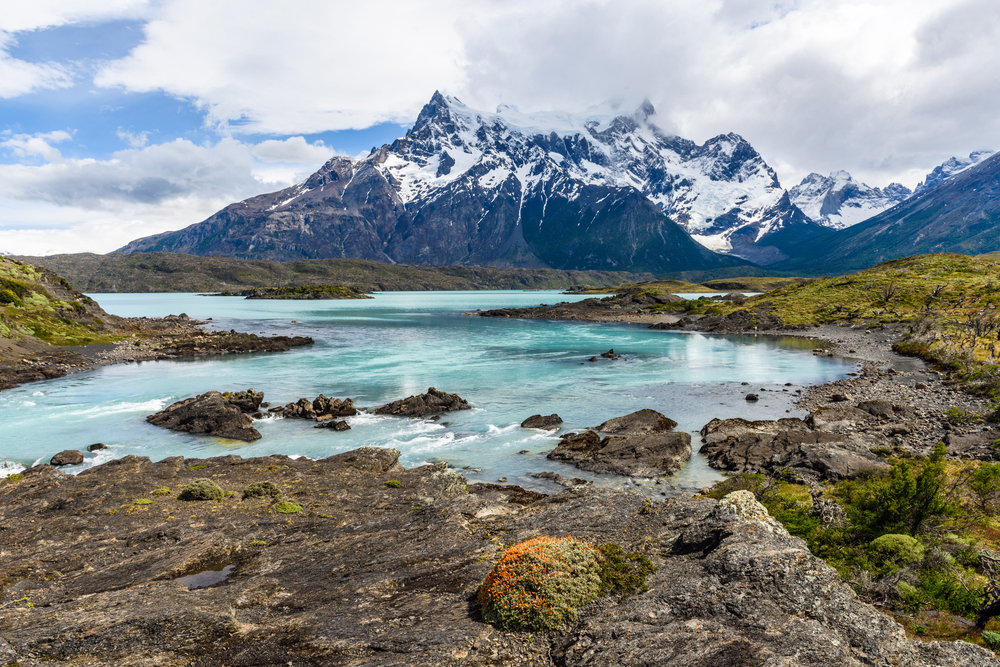
October to April only (there are a few exceptions but going outside this season is reasonably crazy as it’s too cold and as puma’s have little prey at that time of year and are therefore hungry, it can also be dangerous to walk around). Late in the summer (April) is actually one of my favourite times to be in Patagonia as you get to see all the amazing autumn colours in the trees. That said, generally the winds are the lowest in mid-summer so that time is also worth considering (although it’s also the most expensive time to be there)
Antarctica (if you are considering a cruise from Ushuaia )

Similar to Patagonia, these trips only depart in the summer, with a slightly shorter season than Patagonia , late October to early March only.
Other regions which are reasonably season, although can still be travelled at any time of year:
Machu picchu and cusco.

The wet season in January to March in particular isn’t an ideal time to go. It isn’t so much of an issue if you’re not planning to do any trekking (i.e. train up to Machu Picchu ) but it’s certainly something to be aware of. The other issue is that Machu Picchu’s best month’s weather wise are June and July and this also corresponds with highest visitor numbers. Being in the region in these months is a bit of a zoo and personally I try to avoid it.
Central America

Be aware of hurricane season in Caribbean and Central America as hurricanes can obviously be very disruptive to your holiday plans (June to November). The Pantanal and the Amazon : These regions have very distinct wet and dry seasons. They regions are very different in each season so there isn’t really a right time to go. The swollen rivers of the wet season are a sight to be behold but in the dry season wildlife viewing as generally easier as the animals tend to congregate around water holes (Dry Season: May to September, wet season: October to April).
Rio de Janeiro and Buenos Aires

Rio in particular is much better in the summer months. The middle of summer can actually be overbearingly hot and humid and so is probably another time to be avoided. If you can the best months to be there are October to December or March to April. Buenos Aires isn’t on the beach like Rio so it’s not as important to be there in summer. There are so many theatres and restaurants in Buenos Aires that it’s a pleasure year round – that said it’s certainly nicer in summer months as it can be very cold in winter!
Regions which can generally be visited at any time:
Lima, the coast of peru and northern chile.

generally the weather is reasonably similar year round and therefore Lima , the coast of Peru and northern Chile can generally be visited at any time.
Uyuni Salt Flats in Bolivia and Atacama Desert in northern Chile
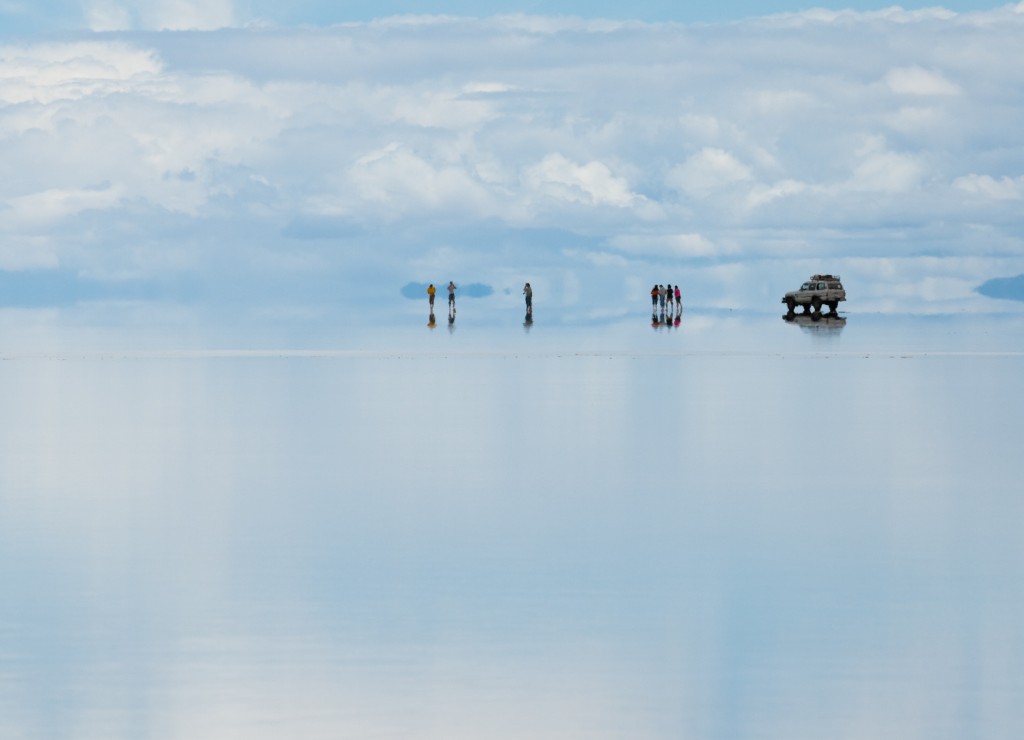
Generally similar year round, with little or no rainfall and cold nights at all times (there is a short wet season is Feb/March) the Uyuni Salt Flats in Bolivia and Atacama Desert can be visited at any time during the year.
The beaches of Northern Brazil
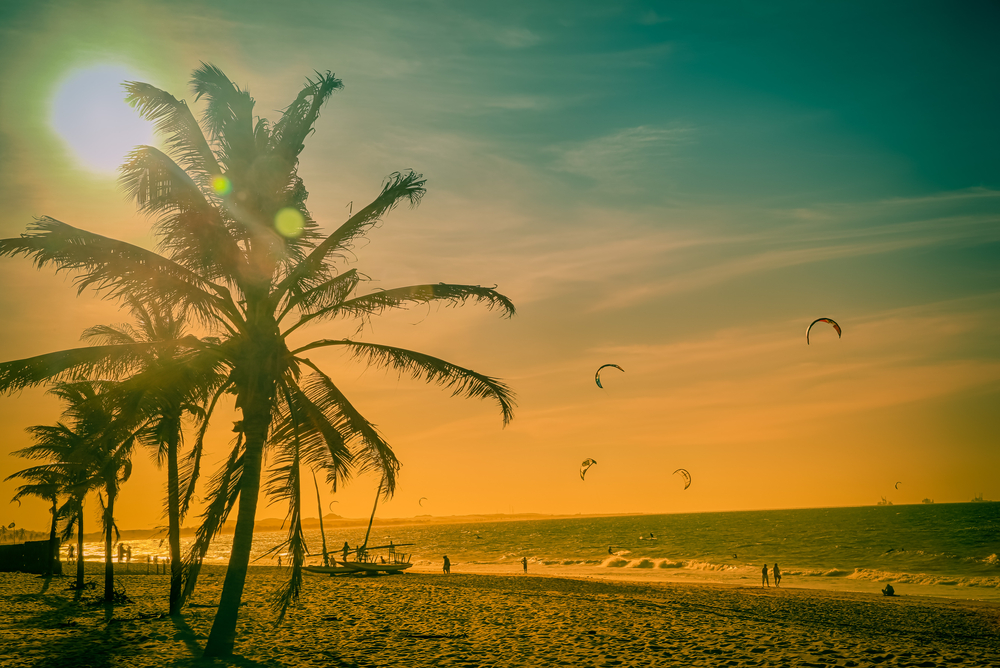
The Beaches of Northern Brazil are pretty much always warm, although the middle of summer can be too hot for some.
Galapagos Islands
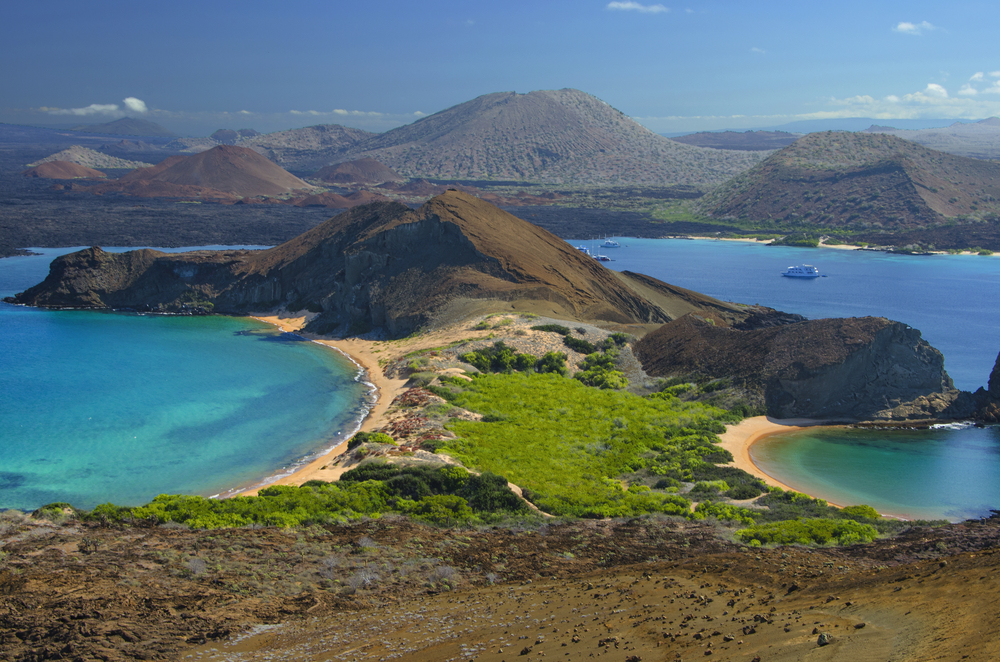
There are a wide range of breeding times for animals and two major seasons, however there isn’t really a “best time” to visit the Galapagos as its always fantastic. It’s best to talk to one of our destination specialists about what happens each month in Galapagos if you want to explore this more detail.
So, in three months you can probably cover most of the areas above (except probably Central America). What you do in which order depends on your entry point, exit point and start and finish times. Whatever you do, make sure a reasonable amount of your time includes some of the Southern Hemisphere summer.

Personally, I’d suggest starting in your trip to South America in March, maybe with a stop in Santiago and the surrounding wine region which will be in harvest. From there head to Patagonia, where you’ll start to see the changing of the colours. From there work your way up to Buenos Aires and Rio de Janeiro which you’ll get to in April when they are still at a good temperature. After that head over to Peru maybe via Bolivia, northern Argentina or the Pantanal. You’ll hopefully get to Peru in May, after the wet season but before the craziness of June and July. From there head up to Ecuador and the Galapagos.
If you want to include Antarctica then simply arrive a little earlier into Chile , maybe at the start of January and do Antarctica while you’re down in Patagonia.
Eight other ways to plan your South America Tour:
1) Planning for a 3-5 week trip
2) Planning for a short trip (Two weeks)
4) Planning your trip of you like hiking and outdoor activities
5) Planning your trips if you like cuisine and culture
6) Planning your trip if you like photography
7) Planning your trip if you like wildlife
8) Planning your trip if you like the buzz of cities
9) Planning your trip if you want to relax and unwind on a beach
For more information on your perfect trip to South America, Click here.
In this article
Backpacking in South America [2024] – A Beginner’s Guide
![Backpacking in South America [2024] – A Beginner's Guide 1 collage of backpacking in south america images](https://www.onmycanvas.com/wp-content/uploads/2020/03/south-america-chile-peru-bolivia-travel-image.jpeg)
Covid-Related Travel Update 2024: Though every country would have its own requirements and rules, most South-American countries are now open to travel. Please check the individual country’s official government or tourism website to know the specific rules.
What does this guide to traveling in South America contain?
Is south america latin america, what are the countries in south america.
- Is it safe to travel in South America?
What about the natural calamities and political situations of South America?
What is the best time to visit south america.
- What is the cost of backpacking South America? How can you do South America on a budget?
- Do you need a visa to travel South America?
- Do we need travel insurance for backpacking in South America?
- What are the best South American countries to visit?
- What are the best things to do in South America?
- What are the possible South American itineraries?
What are the best places to travel in South America as per each country?
- Do we visit the Amazon rainforest in South America?
- Which are the best cities in South America for digital nomads?
- Do we need to know Spanish for traveling in South America?
- What are the best places to learn Spanish in South America?
- What should be an ideal backpacking South America packing list?
- What is the currency of South America? How do we carry money to South America?
- Can we get vegetarian food in South America?
- Do we need any vaccinations for backpacking South America?
- Can we work in South America?
- Can we volunteer in South America?
- Can we teach English in South America?
- Are the people of South America friendly?
What is the drinking culture in South America?
- What are the kinds of hotels in South America?
Does Airbnb work in South America?
- Can we couch surf in South America?
- Can we cross land borders in South America?
- Is it safe to hitchhike in South America?
- Do we need to pre-book everything in South America?
- How do we plan a trip to South America?
- What are some of the best South America travel books?
- Are there any South American traveler forums we can join?
- All articles on traveling to South America
South America is a continent like none other. I was backpacking in South America for nine months, and it was nothing like I had imagined.
Generally I keep going on and on that one should travel to South America. But, in this guide, I will mostly help you plan your South America trip. But if you are looking to get inspired, I have written down some of my best experiences in South America (one of them is learning Spanish in Chile ). Give the linked travelogues a read to inspire yourself to plan your trip quickly.
As this South America travel guide progresses, you would know why I give so much credit to this continent.
Now let us begin.
To date, I had been making the mistake of calling South America Latin America. Now, when I have finally read about the difference between Latin America and South America, I would like to clarify the difference here.
South America refers to the part of the American continent that lies south of Central America. South America constitutes the countries including and below Venezuela-Colombia.
Latin America is used to refer to all American countries that speak a language derived from Latin. Countries speaking Spanish, French, and Portuguese — So Mexico, Cuba, and Colombia all lie within Latin America.
While Latin America is a cultural term, South America is a geographical term.
To answer the question – South America is NOT Latin America.
[ back to TOC ]
The 14 countries and foreign-held islands of Argentina, Bolivia, Brazil, Chile, Colombia, Ecuador, the Falkland Islands (United Kingdom), French Guinea (France), Guyana, Paraguay, Peru, Suriname, Uruguay, and Venezuela together constitute South America.
Is Backpacking in South America Safe?
South America is notorious for crime, and the situation can be mostly attributed to the poor financial and political conditions in some parts of the continent. The entire continent is not unsafe and need not be avoided. Not anymore than any other place in the world.
I visited Bolivia, Chile, and Peru during my nine-month solo travel in South America. And the afternoon when two teenage boys snatched my mobile on a running bus in Santiago is the only bad incident I have to recall.
Avoid roaming around Santiago alone in dark or even during the day in empty streets. If you are taking the Santiago metro, hold onto your purse.
Except for Santiago, a city full of robbers and petty thieves, and Valparaiso, I felt safe in all the destinations in all three countries. No one ever harassed me or tried to loot me. (Do consider this taxi pickup at the Santiago airport if you are traveling to the city for the first time.)
Now amongst the rest of the South American travel destinations, Brazil and Venezuela are unstable and unsafe because these two have been in political turmoil.
Fellow travelers who had been to Brazil mentioned scary incidents such as getting robbed at gunpoint on a beach. Even people who traveled recently don’t vouch for Brazil. Venezuela is in a political crisis and unsafe to travel to.
Some of the safest countries in South America are Chile, Ecuador, Uruguay, and Argentina.
I was told Chile is the safest country in South America, and I felt so, too. Safety is coupled with financial security, and Chile is economically stronger than a lot of its neighbors. The south of Chile was so safe we never had to think before getting out for a walk (mostly on the Chiloé island ), alone, at night.
Except for the recent protests in Chile , the country is mostly peaceful. My Chilean friends told me they want a peaceful protest but a lot of rowdies disrupt the rallies and create chaos. Some blog readers traveling in Chile recently said they were safe and faced no issues during the protest.
If you plan a Chile trip, use my extensive Chile Travel Guide and travel tips for Chile . Though there was a political uproar in the country and Chileans were out on the streets protesting, peace was restored after the 2021 elections in which a left-wing candidate was sworn in as president. My Chilean friends do tell me though that Chile has changed forever. I would have to visit again to understand what those changes mean for travellers.
Many forums also talk about the dangers of backpacking Peru and traveling in Bolivia , but when I was there, I didn’t see or hear about any major crimes against travelers. My friend’s camera was stolen from her in Lima on New Year’s eve. But, well, anything can happen in the crowd of New Year’s eve. Be careful in the big cities of South America as petty crimes and mugging are generally most common in the large cities.
Colombia is also notorious for kidnappings and other crimes but these incidents are not scattered throughout the country. Avoid the destinations where such crimes have been reported in the past.
Quito, the capital of Ecuador, also has some history of mugging. There are registered cases of thieves trying to steal from passengers on buses in Ecuador. Keep your belongings with you and not on the shelves above the seat – in all of South America.
If you backpack in South America, be aware of these scams,
Taxis and ATM Scams — Bolivian cities are known to be prone to ATM threats. It means your taxi driver will drive you to an ATM and threaten you to withdraw cash and hand it over. I took taxis in La Paz, Santa Cruz , and other cities, but I met only the nicest taxi drivers. They took the extra step to drop me at the right place. But be careful.
How to avoid it? Walk to withdraw cash from the closest ATM. Once you have taken out the money, go back to your hotel and keep the card and extra cash. Only carry enough for a day. Never bring your debit or credit card with you except when you want to withdraw cash. Try to take Uber in big cities or ask your hotel to call you a cab.
Dirty Clothes Scam — Another scam prevalent in almost all of South America is that someone would come over and say your clothes are dirty or have paint over them. While you look, your bags would be gone.
How to avoid it? Keep your belongings on you all the time. Don’t pay attention to strangers.
Luggage Robbery on Buses — A common occurrence in South America when travelers aren’t careful.
How to avoid getting robbed? Keep your important items on you. While sleeping keep them under your head or close to you rather than putting them on shelves above the seat. Your bigger bag can go in the luggage compartment.
In big cities like Quito, Medellin, Santiago, and Lima, pickpockets do try to take advantage of travelers, and you should keep an eye on your surroundings.
South America isn’t much different from many other countries and continents in terms of safety. Please don’t let anyone tell you South America is a bad place and it’s entirely unsafe.
Use your judgment, ask your hotel for their safety advice, read about the local scams, and follow the common safety norms to be followed in any new country while traveling to South America, too.
Travel Essentials : Consider this safety whistle and a fanny pack to carry money and other important items.
Natural calamities of South America include volcano eruptions (I even did the active volcano Villarrica hike in Chile), earthquakes, and tsunamis, amongst many others. Chile is in a high-earthquake zone, and due to the earthquakes, the country is also prone to tsunamis and volcano eruptions. Many other South-American countries suffer from similar natural tragedies.
While I was traveling in South America, Chile was hit by a strong earthquake among many other little ones. The ocean routes were blocked, the transport stopped where it was, and tsunami alerts were issued. If it wasn’t for the earthquake, I would have been on a boat in the ocean watching penguins hopping around (only one of the many best things to do in Chile ).
South America has many emergency-evacuation processes, and roadsigns in the continent confirm that.
While I cannot confirm nothing will happen while you are in South America, my advice would be to stay alert, travel with insurance, follow the local advice, and you should be fine.
Political calamities of South America, however, are much more serious. They sometimes involve a presidential candidate jumping over the fence to participate in an election to people marching out on the streets protesting the government-levied charges, or you might even hear of a president changing the constitution to be able to contest in an election.
I can go on and on about Morales and Maduro but let us say protests are common in South America. People protest about salaries, human rights, a long-forgotten war with a neighboring country, presidential rule, corruption, et cetera.
While I am not asking you to ignore the political situations of South-American countries, I can assure you the processions mind their own business mostly. The few marches I saw were peaceful. But it doesn’t take much time for things to get complicated, and when they do, leave.
Before planning a trip to South America, or any country, check the news and ask your embassy about the safety of your travel destination.
South America is in the Southern hemisphere, unlike the US, Europe, and India. This implies the climatic conditions of South America are the opposite of these countries.
South America enjoys all four seasons. Here are the timings of the typical seasons of South America,
Summer — October, November, December, January
Autumn — February, March, April
Winter — May, June, July, August
Spring — September, October
The countries receive heavy rainfall from January to March. The south of Chile receives rainfall throughout the year, but especially heavy downpours in August, September, and October.
As South America is a giant continent and has varied geographical conditions, the best time to travel to South America isn’t the same throughout the continent. While San Pedro de Atacama and the Atacama desert might be scorching, Patagonia would be having its high season, and the high Andes wouldn’t warm up for anyone — that is the story of South America.
If you start at the end of summer, plan your travel route from the colder parts of the continent to the warmer areas. But if you arrive in South America in peak winter, first visit the hotter areas before you think about heading down South.
Here are some of the appropriate travel times for the best destinations in South America:
Atacama desert — I explored the gorgeous Atacama desert in February beginning. The day was scorching, and the nights were cold. A better time to visit the desert would be either March and April or October and November.
Patagonia — Summers are the best time to visit this nomadic land.
Bolivian and Peruvian Mountains and high-altitude places — The high-altitude places of Bolivia, Ecuador, Peru, and other countries are never hot. When I was backpacking Bolivia and Peru in March and April, even on sunny days the weather could get rainy anytime. A strong wind made the day colder than expected. Not to mention the altitude of the place that never let the mountains warm up. But the weather was still nice at that time, and I wouldn’t have wanted to be there in winter.
Spending the summer in the mountains would be ideal.
Overall, the months of October to March/April are the best to visit South America.
Read Next: If you are in Chile in September, don’t miss the week-long, crazy celebrations of the Fiestas Patrias or the Chilean Independence Day .
What should be your South America travel budget?
South America isn’t as expensive as it might look.
The cost of traveling South America would depend on your travel style. But estimate your monthly travel budget to be 1000 USD, almost 30 dollars a day.
Chile, Brazil, and Argentina are the most expensive countries in South America. I don’t have the expenditure of my South America trip written down, but here are the breakdowns of some major costs.
Bed: 10,000 to 20,000 Chilean Pesos – $10-20 (I took a mix of private rooms and dorms.)
Food (3 meals): 10,000 Chilean pesos – $10 (Eating at local stalls, small food joints)
Total: $20-30 for food and accommodation. Plus add for activities such as the tours in the Atacama, hiking volcanoes, traveling by bus or flights, et cetera.
Total backpacking budget per day: $40-60 [Destinations such as Pucon, San Pedro, Easter Island, and Patagonia would be costlier than the rest.]
Bed: 30 to 80 Bolivianos – $5-15 (for a treehouse or an average bed in a dorm)
Food (3 meals): $3 and above (the regular Bolivian meals start from 4-5 Bolivianos or <1 USD)
Total: $10 for decent food and bed.
Total backpacking budget per day: $20-40 [Adding up for activities such as the Uyuni Salt Flats tour , the Amazon, or biking the death road and traveling by buses or flights.]
Bed: 35 Peruvian soles – $10 (You can even get a good private room at this price.)
Food (3 meals): $2 and above (You can get a set menu — a fixed course and a soup for $1-2. Those meals are delicious, and I was never dissatisfied. A regular meal in a restaurant will cost a little higher but should be under USD 10.)
Total: $15 for bed and food.
Total backpacking budget: $30-50 [Including the long bus journeys and guided activities such as visiting the Manu National Park in the Amazon rainforest or going on the Colca Canyon trek .]
Brazil: $50 per day – The travel friends I asked and the forums I read, all say $50 is a good budget for a day. You can’t go lower but can easily go higher so watch out for what you spend.
Argentina: $30-50 per day. The food and accommodation are affordable in Argentina but the tours and transport are comparatively more expensive.
Colombia: $25-40 per day. Colombia isn’t that expensive and you can easily stick to a budget here.
Ecuador: $20-40 per day. Not counting the Galapagos island.
Overall, a daily budget of $30-40 can be estimated for South America after averaging out the daily budgets of all its countries. This cost will increase if you visit more expensive countries or stay in them longer (such as Brazil and Argentina). Private rooms (as compared to dorms), eating out at restaurants (instead of the daily meals), and expensive hiking tours (over the budgeted ones) increase the travel cost, too.
Do you need a visa to travel in South America?
South America doesn’t have one visa. Every South-American country has its entry-exit requirements.
Indians need visas to some countries while for the rest they can get a visa on arrival or free entry if they have a valid US, UK, Australian, or Schengen visa. My visa guide for Indians lists all the South American visa requirements country-wise.
Canadian, British, US, or Australian passport holders have free access to most South American countries. Check the individual country’s page or your embassy’s website.
You can also get visas while backpacking in South America as I did. While I was in Chile, I got the visa for Peru for Indians . When I was in Peru, I got a visa for Bolivia , and in Bolivia, I got a Chile visa .
I get a lot of emails and questions regarding South-American visas. Read those discussions on my individual visa pages (linked above).
Do we need travel insurance for South America?
Yes. Of course.
The best travel insurance for South America for Western travelers is World Nomads . All my travel friends from around the world can’t speak enough about it.
For Indians, I find the prices of WorldNomads a bit high (currency conversion). You can get travel insurance to South America on InsurancePundit. Compare the various insurances before purchasing. I have used Insurance Pundit a few times now, and I am happy with the experience.
(The InsurancePundit hasn’t paid me to leave the review.)
What are the best countries to visit in South America?
I was in Chile, Peru, and Bolivia and loved the three countries. I also wanted to go to Colombia but couldn’t visit due to visa issues.
As I said above, Venezuela is under a political crisis. So excluding that, all the countries in South America are great to visit.
Argentina is known for its cool culture, cosmopolitan towns, delicious wine, adventure travel (such as hiking in Patagonia), and joy de vivre. Buenos Aires is considered to be one of the most popular cities in South America due to its fun culture and open-minded Argentinian people.
Brazil, Colombia, Ecuador, Paraguay, Uruguay, and Suriname are great places to visit. Many of my travel friends were there and they loved these countries for each of their own reasons.
I haven’t heard much about the Falkland Islands (United Kingdom), French Guinea (France), and Guyana because not many people go there. If you go, would you please come back and tell me how you liked them?
What are the top things to do in South America?
I have written about my best moments in South America in detail in the linked travelogue. Let me give you another glimpse of what to expect on your South America backpacking trip.
You can hike glaciers, icy volcanoes, deep canyons, high Andes, and national parks.
Go for safaris and boat rides in the Amazon, the oldest tropical rainforest in the world.
Explore centuries-old ruins of the Incas, one of the most advance ancient empires.
Live with indigenous families on remote islands in the world’s highest navigable lake Lago Titicaca .
Dance like crazy in carnivals that liven up the streets of many South-American countries throughout the year.
Visit penguin colonies and see them play around in the Pacific on a regular ferry or from a remote island.
Go to Galapagos island to explore some of the unique animal life that stands testament to Darwin’s Evolution Theory.
Write poetry about Peru .
Indulge in delicious and unique food. Think cheese-stuffed empanadas and juicy ceviches .
Wander in vast deserts searching for salt flats and dense starry nights.
Shower under some of the highest waterfalls in the world.
Accompany the NatGeo and Discovery teams on river safaris in one of the most panther-dense zones of the world alongside
Photograph red lakes home to thousands of pink flamingoes.
Ride bikes on some of the most deadly roads.
Watch football with the locals.
Enjoy vibrant city life that promotes an open culture and welcomes all.
Oh, let us not forget Chile and Argentina are one of the best wine producers.
And, the people of South America are the most fun people I have ever met. They eat and drink and dance and merry like old times.
So while planning your perfect South America traveling route, keep an open mind for even I cannot list all the experiences to have there.
In the next sections, I talk about the possible South America itineraries in detail.
What are the best South America backpacking routes?
To understand the possible South America travel routes, let us look at the connected countries of South America:
(Starting from the top) Venezuela — Colombia — Ecuador — Peru — Bolivia — Chile — Argentina — Uruguay — Paraguay — Brazil — French Guinea — Suriname — Guyana (going Anti-clockwise)
The best backpacking routes in South America would be the ones on which you travel from one country to another while never having to jump countries for that is how you save the most time and money. If you love overlanding, as I do, you would also want to travel from one country to its bordering nation by land. But if you don’t want to cross land borders, take a flight out.
For this South America itinerary, let us assume you are traveling to bordering countries.
Here’s my South America travel route.
Chile – Santiago >> Castro, Chiloé ( taught English in Chile as a volunteer) >> In between traveled to many parts of Chile such as Puerto Varas, Puerto Montt, Valdivia, Osorno, Valparaíso, Viña del Mar, Cauquenes, Hornophiren, Santiago, many other islands near Chiloé >> Pucon >> Atacama >> Arica >> (Crossed the border into Peru) >>
Peru – Arequipa >> Colca Canyon >> Arequipa >> Puno >> Lake Titicaca and its islands >> Cusco >> Manu National Park, Amazon, Peru >> Cuzco >> Machu Picchu ruins >> Cusco >> Ruins around Cusco >> (Crossed the border into Bolivia)
Bolivia – Copacabana >> Isla Del Sol >> Copacabana >> Lago Titicaca and Isla del Sol >> La Paz >> Santa Cruz >> Samaipata >> Santa Cruz city >> Sucre >> Uyuni >> Salar de Uyuni Tour >> (Tried crossing the border from Bolivia into Chile but couldn’t as my visa had expired so went back to Bolivia to get Chilean visa ) Uyuni >> La Paz >> Uyuni >> Arica >> Santiago >> Castro >> Santiago (Flight out to India).
I did this above itinerary in about nine months; I was slow as for the first four months I was in Chile on the island of Chiloé teaching English. I spent about 6-7 months in Chile and divided the rest of the months in Bolivia and Peru equally, so about a month and a half in each country. That time was enough to travel at a slow pace in both Peru and Bolivia, and I still saw a lot.
Feel free to pick my above itinerary as these three are some of the best South American countries to visit.
Or take any route through the connected circuits from this bigger loop:
(Starting from the top) Colombia — Ecuador — Peru — Bolivia — Chile — Argentina — Uruguay — Paraguay — Brazil — French Guinea — Suriname — Guyana (going Anti-clockwise)
Let us look at some possible travel routes.
2 weeks in South America — In two weeks in South America, travel to one country. Pick up any of the above-mentioned countries.
3 weeks in South America — For 3 weeks, visit a maximum of two countries. So either a combination of Colombia and Ecuador or Peru and Bolivia or Bolivia and Chile and so on.
Four weeks in South America — You can visit two to three border countries but I still recommend just one or two.
Remember that distances between two destinations in South America are large.
A possible and comfortable South America itinerary 1 month — Three countries such as Argentina, Uruguay, and Paraguay are doable because the last two countries are small.
If you want to spend 2 months in South America — You can travel to three to four countries. Let us say you visit Ecuador — Peru — Bolivia — Chile in the two months. Spend ten days in Ecuador, twenty days in Peru, ten days in Bolivia, and the rest in Chile.
But even after spending about three weeks each in Peru and Chile, you won’t be able to see all the best places there. So another option for your 2 months South America itinerary could be to visit only Peru and Chile for a month each. In a month in each of these fantastic countries, you can see a lot at a not-so-fast pace.
Seeing one place properly is better than flipping through multiple places.
3 months in South America — You get the idea.
The ideal duration to explore each of the above countries :
Venezuela — A no-go right now.
Colombia — A month would be ideal. People who go to Colombia never want to leave but a month is a good time to see the major places at a medium pace.
Ecuador — Twenty days would be a good amount of time to see Ecuador.
Peru — A month seems ideal in Peru. There are many things to do in Peru . Again, if you want to skip everything to wander in the Andes, then an infinite amount of time won’t be enough. But even ten days would do.
Bolivia — The ideal time to understand Bolivia and see some of its most amazing places would be about 20 days. Some people only visit the Uyuni Salt flats and get out. I loved Bolivia and spent about a month there. For the salt flats, a few days are enough.
Chile — A month is ideal for Chile. Chile is a long country with a lot of places to see and amazing things to do . But if you are short of time, start with two weeks.
Argentina — Twenty days would be ideal for this big country. You can easily spend a month or two there.
Uruguay and Paraguay — Ten days would be an ideal time to spend in each of these countries. Few travelers go to these two but that doesn’t mean Uruguay and Paraguay don’t have good places.
Brazil — Twenty days would be a good time to start with Brazil. Brazil is a huge country and also not all of it is safe to visit.
French Guinea/Suriname/Guyana/Falkland Islands — Though I can’t tell you the exact time, I think 1-2 weeks would be ideal, to begin with.
Having said all of the above, starting from 14 days to spending anything up to a year or longer is a good time for South America.
What about the working people who do not have more than two weeks to spend at a stretch in South America? Please don’t lose hope after reading my extremely self-centered South America travel itinerary.
Go for two weeks. But don’t plan to hop to more than one country then. Visit a new country on your next South America vacation. And so on.
I would let you in on my favorite places in Peru, Bolivia, and Chile.
Chile — the Atacama desert , Patagonia, Vina del Mar, Valparaiso, Chiloé island , Hornophiren, Chaiten, Pucon.I also had a great time spending Diwali with a Chilean family in Cauquenes.
Bolivia — Uyuni Salt fields , The Amazon, Samaipata, Torotoro National Park, Copacabana town, Lake Titicaca, and its islands . Here’s an all-inclusive 3-day Uyuni Salt Flats tour that will take care of all the arrangements.
Peru — Puno and Lake Titicaca , Colca Canyon , Cusco city , the Inca citadel Machu Picchu , Andes mountains around Cusco, and the Manu Park in the Amazon .
I will add more to this list when I visit the other countries later.
Follow Up Reads Best Things to do in Peru Fun Things to do in Chile Bolivia Travel Guide
Do we visit the Amazon rainforest on our South America trip?
Of course. You can read about my visit to the Amazon rainforest in Peru to see how exploring the Amazon is like a once-in-a-lifetime opportunity for anyone.
I went to the Manu National Park from Cusco, but you can also visit the forest from Iquitos. It is further inside and takes longer to reach. Of course, the longer the journey is the bigger is the adventure.
The Amazonas can also be visited from Brazil, Bolivia, or Colombia. Guyana, Suriname, French Guyana, and Ecuador also have the Amazon jungle, but the area under the forest is pretty small there.
Tours to the Amazon range from four-day to even month-long adventures. Choose one that suits your budget and preferences. Here is a popular tour of 2-3-4 days in the Anaconda lodge of Brazil that I have on my mind for the next time.
Which are the best places in South America for digital nomads?
Lima, Cusco, Arequipa, Puno, Santiago, Castro (Chile), Medellin, and Buenos Aires are some of the best cities for digital nomads. Internet, housing, culture, food, activities to do, and a thriving digital nomad community make these cities more special than the rest.
Amongst all the big cities, I have listed Castro, the little town on the island of Chiloé, as a great option for a digital nomad. It is a gorgeous place with a strong sense of community. If you have been wanting to get away from big city life, slow down in Castro and rent a stilt house. It will have a sprawling view of an azure ocean and sheep grazing on the neon grassland nearby. Castro is quite affordable, too.
Arequipa and Puno are tier-two cities with a lot of nature, a strong cultural background, and many things to do.
All the other cities I have mentioned are popular amongst digital nomads and for all good reasons.
Do we need to know Spanish for traveling South America?
Even though a lot of travelers plan to learn Spanish in South America, they never say more than a hola and they still manage. I learned Spanish while living and teaching in Chile and further polished my Spanish skills while travelling in South America.
Spanish is handy almost everywhere in South America. Most people do not speak English there (not even tourist guides and hotel managers). And speaking a few words of Spanish would make you a local’s favorite in no time. Even a broken phrase of Spanish would go a long way when it comes to hitchhiking, boarding a bus, or ordering a cerveza.
This is probably one of my best South America travel tips— take the effort to learn Spanish in South America. Even though you can manage without it, your travel experience would change entirely even if you speak a little bit of Spanish.
Spanish is a fun language and has many words similar to English. So if you put in some time daily to learn Spanish and try speaking it with the locals, you would manage your way pretty soon.
But remember all the countries speak a little differently. If you learn Spanish in Argentina, you will be surprised by the accent of Chileans or Colombians. But the locals will understand. Chile is one of the worst countries to learn Spanish because of the strange slang and the accent of Chileans. But I could understand any Spanish after that.
Follow Up Read: Apart from my Spanish learning experience I linked above, I have written two more language guides. Learn a Language on Your Own — the tested tips that helped me master Spanish in a few weeks and a list of Common Spanish Phrases that will help you travel in South America. The phrases come with their phonetics in both Hindi and English.
What are the best places to learn Spanish while traveling through South America?
The best way to learn Spanish is while traveling and speaking to the locals. You can also stay in one place and learn from native Spanish teachers. Sucre has many Spanish schools and individual tutors who teach foreigners in private or group classes.
Cities like Cusco and Buenos Aires are perfect for learning Spanish as you can easily spend a lot of time exploring these cities while getting a grasp on the language.
What should be an ideal South America packing list?
Your ideal packing list for South America should have these below items. I have taken the recommendations for men from my friends and my partner.
- A couple of dresses and skirts for women – Long and short dresses can be worn anywhere in Bolivia.
- Short for women and shorts for men – For everyday travel in South America.
- A good pair of jeans – Even though I am not a big fan of wearing jeans and love many other more comfortable bottoms, sturdy jeans can keep you pretty warm in the high mountains and the surrounding countries. I wore mine frequently.
- Swimwear for women and swimwear for men – Most of the beaches would be too cold to get in, even in the summers, but you can definitely jump in some warm beaches.
- Yoga pants for women and for men – suitable for long buses, which you will take many in South America, and flight travel, too.
- The above-mentioned clothes are some of the most essential clothing items that helped me feel comfortable in South America. This is not an exhaustive list. Some other clothes would include undergarments, t-shirts and shirts, trousers or any other kind of bottoms, and anything else that you feel comfortable in.
Sturdy items to beat the cold and icy winds of some parts of South America
- Good hiking shoes for women and good hiking shoes for men – A must-have in South America.
- A rain jacket – Always carry one in the South-American countries for you never know when it might rain.
- Warm jackets for men and for women – You might even need these on a rainy day in the summer.
- Warm and waterproof gloves – essential for hiking and the outdoors.
- Woolen socks for women and for men – For hiking and to survive the chilly winds.
- A woolen sweater – You can also buy gorgeous and warm woolen jumpers in South America. I bought two in Peru and those warm snuggly sweaters are going to last my entire life.
- A scarf for women and for men .
- A pair of warm leggings or thermals for women and for men – I wore them under my dresses to stay warm. And I know that my male friends wore theirs under their jeans, too.
Travel Essentials
- A fanny pack to carry your passports and money. (I bought one from the San Pedro de Atacama market and loved its local feel. But until you find a locally made one, you should carry one fanny pack especially when you are in Santiago. Read my story about getting mugged in Santiago to know why)
- Also, bring a strong backpack as you would travel in weird weather and on rough routes – I have been using a North Face backpack for about four years now and have no complaints.
- A travel towel – Carry a light travel towel like this one for it will save you a lot of space.
- A first-aid kit – Always carry one while traveling. Carry essential medicines as in most of South America you only buy medication with a doctor’s prescription.
- Strong sunscreen – Andean mountains can be pretty sunny, and you would burn in a minute.
- Mosquito repellant – Much needed for the Amazon and other national parks.
- Lifestraw water bottle – Comes with an inbuilt filter, and you can fill it anywhere. A filter water bottle is essential because you cannot drink tap water everywhere in South America.
- Memory foam travel pillow for sleeping well while traveling.
- A good camera – Nikon D3400 is a very good choice for the price. I use Nikon for all my photography now (the pictures in the article though have been clicked with my phone for I have been using Nikon only for the past nine months). This camera comes with two lenses, and the one with the higher resolution if perfect for bird photography if you are interested.
- Altitude sickness pills – remember a lot of Andean places are above sea level and sometimes as high as 4000 to 5000 meters.
Follow-Up Activity: Carry a printout of my list of important Spanish travel phrases that will save you in South America (printable link in the guide).
What is the currency of South America? How to carry money while traveling in South America?
The currency of South America is different in each country.
You should carry your credit and debit cards, and some cash (USD or Euros or other strong Western currency). Though all ATMs in airports dispense cash in the local currency, sometimes having a bit of money on you is helpful.
The best place to exchange money would be the local exchange shops in any (big) city center and not the banks (banks’ exchange rate is the worst). I carried a travel card with a $1000 balance and another $5oo in cash. This money ran me quite some time. Bringing cash is a good idea for all the ATM withdrawals incur transaction (and in some cases currency conversion) charges. Ask your bank if they can reduce your international transaction charges.
In Chile, Banco Estado had the least international card withdrawal fee. Do try government banks in all South American countries for they would be the cheapest for international withdrawal.
As I mentioned in my travel planning guide , inform your banks about your international travel. My bank blocked my debit card when it detected a transaction in Chile. I had to make an international call to inform them I was the one trying to use the card.
I don’t know even one bank in India that gives leverage to a frequent traveler. If you do, please let me know. I would appreciate that.
Also never carry your entire cash and card with you while moving around cities. Keep them back in the hostel to save yourself from ATM scams (more about them in the travel safety section).
Or hide everything away in a slim fanny pack .
Can we travel South America as a vegetarian or a vegan?
South American food is mostly non-vegetarian.
Traditional food in South America is barbecues (asados), grilled meat and steaks (beef, pork, chicken), fried fish, rice, bread, cheese, seafood, fried empanadas (stuffed pastries) of various types, et cetera.
Meals are made up of two-three courses and start with a serving of soup. Vegetarians and vegans would have a hard time finding a course that is entirely vegetarian. When I was traveling South America alone, I didn’t eat beef. Even if I asked the server for a no-beef meal, they would serve me the soup which was mostly made with ground beef. I had to be careful and ask multiple times.
Argentina, Chile, Bolivia, and Colombia eat a lot of steak and meat, mostly beef. Peru had a lot of vegetarian options but had the same soup problem. Big cities have more vegetarian and vegan cafes. But on small towns, villages, or on islands, you might have a hard time finding vegetarian food.
You can always order vegetarian fried rice and that is what a lot of tourists did. Or buy groceries and cook in the guesthouse’s kitchen.
My best food in South America was Casuellas (Chilean soup), sea algae cooked in various styles on Chilean islands, Peruvian preparations, empanadas, and fried trucha (trout) fish. Oh, after a while I also started loving the Chilean bread when grilled with cheese and tomatoes and other things.
Do try the traditional South American food. My Spanish travel phrases guide has many phrases that will help you understand the ingredients and order as a vegetarian.
What are the recommended vaccinations for traveling to South America?
I would suggest you talk to a doctor or look at your embassy’s website for recommended vaccinations for South America.
Medical advice is always best taken from medical experts.
Can we work on our South America backpacking trip?
Tourist visa doesn’t allow you to work. But many travelers sell their art, beads, jewelry, et cetera unofficially.
Can we volunteer in South America for free?
You can volunteer in South America. Though not always, some volunteer programs, such as the English Open Doors program in Chile, are free, offer stipend, and even provide boarding and lodging.
I have written about the English Open Doors program in detail in my teaching English in Chile guide. The program is four-months-long, and you have to pay nothing. Your visa fee is waived, you get food and free accommodation with a Chilean family, and some allowance. But But you do have to get the flight tickets.
Can we teach English while backpacking through South America?
Apart from the English Open Doors program, you can also teach online and offline in Santiago, Cusco, Lima, and other big cities. But you would have to compromise on the salary. I put in a lot of time trying to find an online or offline English teaching job in Chile (mostly in Chiloe and Santiago). And I concurred the jobs there don’t pay so well. Also, most jobs entailed traveling to different parts of Santiago to teach the students in their own homes. In other cities, the traveling might have worked, but I didn’t find Santiago safe and didn’t want to commute daily to its unknown and obscure parts.
What would be the best way to find such jobs? Print out a list of the English teaching centers and visit them. Bring your resume and leave it with the receptionist or the staff. Most centers call. If not, you might have to remind them again.
I also tried looking for teaching work in schools but I couldn’t teach in schools without a teacher’s degree. Fair enough. You can work as a contractor or freelancer and conduct workshops in schools. But as we are talking about South America, do not expect a fast response.
Are the locals friendly to South America backpackers?
I have written a lot about South Americans being the nicest people in all my Chile, Bolivia, and Peru country guides. I have even written poems on some kind souls I met in South America . And here’s an ode to a kind Peruvian grandmother I met in Cusco.
South American people love to help others. They smile and laugh often and don’t make a fuss about most things. They are particular about what they like though. Also, they notice how you act and the things you care about and would be quick to tease you on your traits.
I met both kinds of people in South America: friendly and helpful and those who were jealous of me or detested me (mostly because of the attention I got). If there were people who translated every Spanish word for me, a few people never cared if I understood a word of what they said.
Others made fun of Indian things they had seen on television — the dowry system in India, caste system, Indian population, rat temples et cetera.
The understanding of India is skewed outside as most people only know India as per what has been shown to them in the news. Even a lot of travelers who come to India, visit popular places and never get an idea of how India truly is.
I met a lot of such people who behaved as if India was all about filth and child labor, and I had caused all the problems. Consciously or unconsciously, they said hurtful things. Even one or two of my friends didn’t know how to strike a conversation with me on these matters and instead made condescending and judgmental statements.
All I could do in such situations was put across the right information and tell them how India has evolved. After a while, I stopped explaining and let people believe what they wanted to believe or told them off when I was hurt.
If you are from Europe, the US, or Australia, you would be called Gringo . A term that originated long ago and has many theories behind it (some of which can be associated with locals shouting out to the foreign police or army as “Green Go.”) But apart from the occasional, good-hearted reference as a Gringo, you wouldn’t find any racial discrimination.
You would meet all kinds of people in South America, as you do everywhere, but remember that the majority of South Americans are nice. They are open-minded and believe in having fun in life irrespective of what situations fall upon them. Read the story of my Chilean host mother to see how South Americans can brave their problems.
I suggest you discover more about the people with your experiences rather than a third-person’s opinion (like mine).
Follow Up Read: My article on Chilean culture is a good starting point to understand the culture of Chile in more detail. Other countries in South America don’t have the same culture but you would be able to find some similarities.
South America is fun and inclusive. Small countryside pubs, large bars in metropolitans, and overloaded cellars in homes, you can find them all.
South Americans love to drink and party. Their families get together and celebrate even the slightest occasion with a drink. And they love to invite travelers for they believe in more the merrier.
The people of South America aren’t big fans of hard liquor and love their beer and wine. Or if I may say, cerveza y vino tinto o blanco. You can have a beer in most parts of South America. Wine is preferable in Chile and Argentina, two of the best wine producers in the world.
Pisco Sour is another must-try drink over which Peru and Chile both have an ongoing copyright fight. If you want to start a debate with a Chilean or a Peruvian just tell them how they got the Pisco sour from their neighbor, and I am sure you would see some firecrackers exploding into the sky.
Have fun there. But do remember there are a lot of drunkards and alcoholics, too, so stay safe. If you are on a South America solo travel trip, make sure you watch your drink when you are drinking amongst strangers. Mixing up the drinks of travelers to render them unconscious is an old trick you don’t want to fall for.
What are the kinds of accommodations in South America?
You can stay in hostels, hotels, guesthouses , villas , cottages, tents, camper vans, apartments , resorts , tree houses, and there are still other options that I can’t recall. I mostly use Booking to book all my accommodations. Give it a try here .
I used Airbnb once in Santiago but Airbnb works even in small cities in South America (popular ones).
But due to the multiple scams that run on Airbnb , I prefer Booking.com over Airbnb.
Can we couch surf while travelling in South America?
Yes. I didn’t couch surf in South America but I did stay with a lot of friends who offered me their place when I visited their city.
Couch surfing is becoming common in South America, and it could be a good way to get to know locals and reduce travel costs.
How to backpack South America? Can we do overlanding (cross land borders) in South America?
I crossed the land borders in South America three times.
From Chile to Peru — You make your way to Arica and from there to Tacna in Peru. You can get shared taxis from Tacna that will take you to Arequipa, the closest tourist-favorite town from Tacna.
From Peru to Bolivia — I crossed the border into Bolivia via the Puno — Copacabana route. Make sure the driver doesn’t leave you at the border and takes you to the town of Copacabana.
From Bolivia to Chile — After a few failed attempts, I crossed the border from Uyuni into Arica.
I have heard sad but hilarious stories of travelers being befooled by the bus companies who promised them a ticket to the destination but instead left them at the border. Then the travelers had to trudge their way to civilization without the local money, water, or food.
The trick to a comfortable (let’s not get crazy here) safe journey is to find a bus company that is reliable. Online reviews and travel forums discussing the best travel buses across borders might help.
Apart from a random drop in the middle of nowhere, crossing borders in South America is not much different from anywhere else. Also, make sure to get to the border in time so you can cross it even if there are lunch breaks or the queues get too long.
Essential visa guides, only for Indians
- Chile visa guide for Indians
- Bolivia visa guide for Indians
- Peru visa for Indians
Is it safe to do hitchhiking while backpacking South America alone or if we are two people?
I didn’t hitchhike for the first few months as my Spanish was limited. Later I hitchhiked in Chile in a truck once but I was with a Chilean friend.
Hitchhiking is known amongst South Americans, and you can try getting a ride in safe parts of the continent.
I would suggest you wait for a couple of weeks to hitchhike. After a few weeks you would understand and communicate at least basic Spanish. And if you have landed in an unsafe part of South America, don’t try to hitchhike.
Do we need to book all the hotels and tours before backpacking to South America?
You do not need to pre-book anything in spite of what a lot of travel websites or South America backpackers suggest. Even in the prime travel season of February, March, and April, I could get rooms in the hostels and hotels at the last minute, except in Cusco. In a big city or extremely popular travel destination, book a few days in advance.
I got the tickets to Machu Picchu and to a one-way train to Machu Picchu just a few days before I wanted to visit. Atacama tours, Colca Canyon hike, Uyuni tours, et cetera were also available until the last minute.
But the Inca and Salkantay hike to Machu Picchu would be better booked at least a couple of weeks in advance. You should also check the status of these hikes as they get closed down pretty frequently due to landslides and other natural causes.
Pre-book hikes and tours that allow a limited number of people every day. In a new place, pre-book an accommodation for a day. Then either extend it or find another one by visiting physically. Everything else is available until the last minute. And by booking the activity in person at the office or over the phone, you can also negotiate.
What should we do for planning a trip to South America?
This travel guide to South America must have answered your many questions .
Apart from setting your finances right, packing the important bank cards and other things you would need in the continent, making an itinerary or winging it, getting your tickets and visas right, planning your accommodation, and getting your vaccinations, you should also check for the current situation of the country you plan to land in.
If you want to participate in a volunteer program or want to do a Workaway, plan it ahead.
Do look for the prevalent scams in an area or a city but don’t get overwhelmed. A lot of information on the internet about South America seems to have been written at gunpoint.
Must-Read: Recommended Travel Resources and Planning Guide
What books can we read to prepare ourselves to travel South America?
I have not read all these below books but I am going to.
The House of the Spirits a Novel — A unique perspective on 20th-century Chilean culture and politics, by Isabell Allende. (Read)
Wild Coast: Travels on South America’s Untamed Edge — An account of an expedition into Guyana, Suriname, and French Guiana by John Gimlette.
The Motorcycle Diaries: Notes on a Latin American Journey by Che Guevara — This book is the travel notes of Che Guevara when he went on a life-changing motorbike journey from Argentina across the continent. It is a good book to understand the pre-revolution South American culture and politics. (Read)
Marching Powder: A True Story of Friendship, Cocaine, and South America’s Strangest Jail by Thomas McFadden and Rusty Young — Set in the San Pedro jail of Bolivia, Rusty Young, a backpacker, and Thomas McFadden, a drug lord, weave the story of South America’s drug culture together.
Turn Right at Machu Picchu: Rediscovering the Lost City One Step at a Time by Mark Adams — For travelers who want to go a bit deeper into the history of the Incas and their fort, Machu Picchu.
At the Tomb of the Inflatable Pig: Travels Through Paraguay by John Gimlette — For travel tales of Paraguay.
The Essential Neruda: Selected Poems by Pablo Neruda, Mark Eisner (Editor), John Felstiner (Translator) — And this might be my favorite book out of these all. Pablo Neruda is the most acclaimed poet from Chile, and if you read his few lines, you would know why. This is a collection of his poems in Spanish that are well translated into English by the credited translator. (Reading)
Pablo Escobar, El Patrón del Mal (Something to see and not read) — Though people suggest Narcos as the best show ever made on Pablo Escobar, I loved Pablo Escobar, El Patrón del Mal show on Netflix and watched it in Spanish. It’s a good show to understand Colombian history and also to learn and practice Spanish. Here is a recent article about Pablo Escobar that shows how he is remembered now.
Must I say you have to keep reading my South America travel blogs and tell me what would you like to read more?
Are there any South America Travelling forums we can join?
I am preparing a South America FAQ page: a collection of queries I have received on South America travel in the past few years. I would soon publish the FAQ hoping for it to serve as an online forum for all kinds of South America travel questions. Coming soon.
Meanwhile, you can drop your questions on the existing South America articles.
Would you go back to South America?
I am planning to visit South America, again, for a long time period. I would start with Colombia and then make my way to other parts of the continent.
I am not sure when, but that is a small logistics to figure out.
Follow Up Essential Reads
- My Super-detailed Travel Guide to Chile
- My comprehensive travel guide to Bolivia
- My essential guide to backpacking Peru
Find All South America Articles Below.
south america travel stories and travel tips.
![Most Common Spanish Phrases For Travelers [Survive South America] 2 Most Common Spanish Phrases For Travelers [Survive South America]](https://www.onmycanvas.com/wp-content/uploads/2018/12/a-landscape-of-peru-countryside.jpeg)
Most Common Spanish Phrases For Travelers [Survive South America]
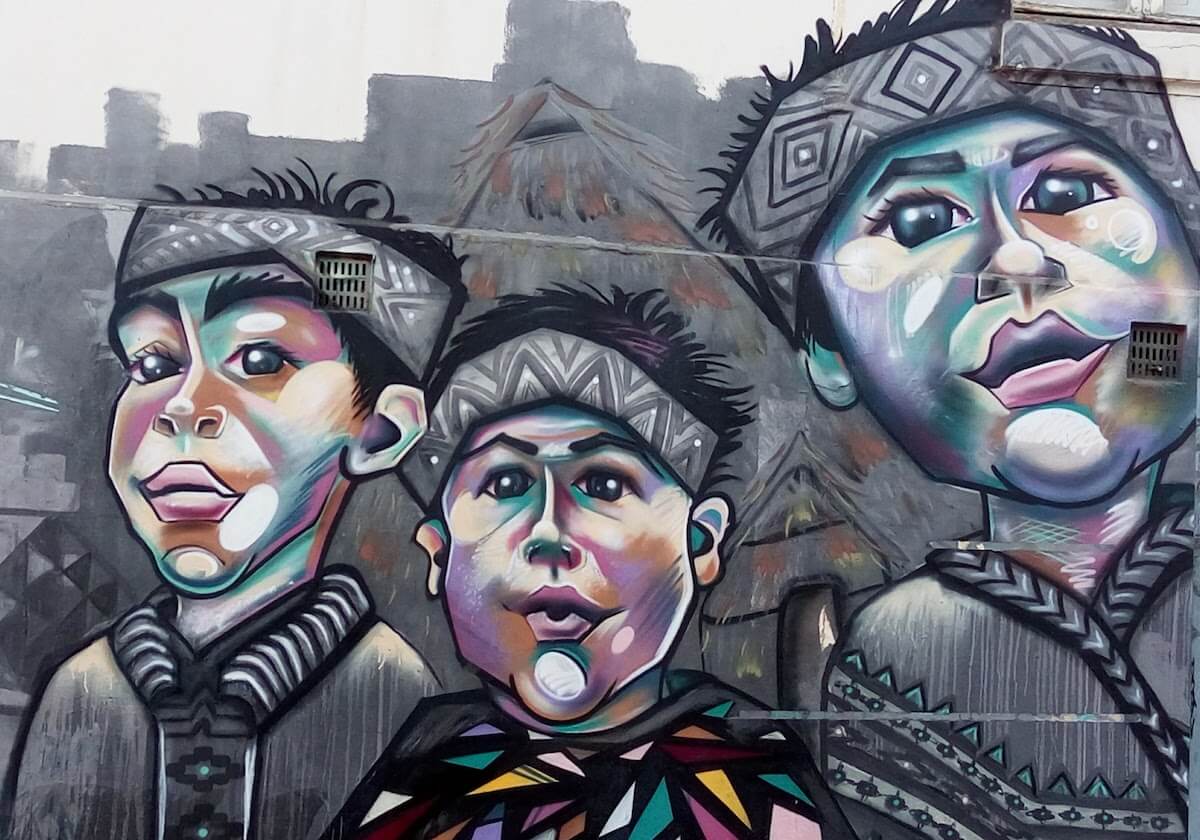
Learning Spanish in Chile–A Mind-Numbing Experience
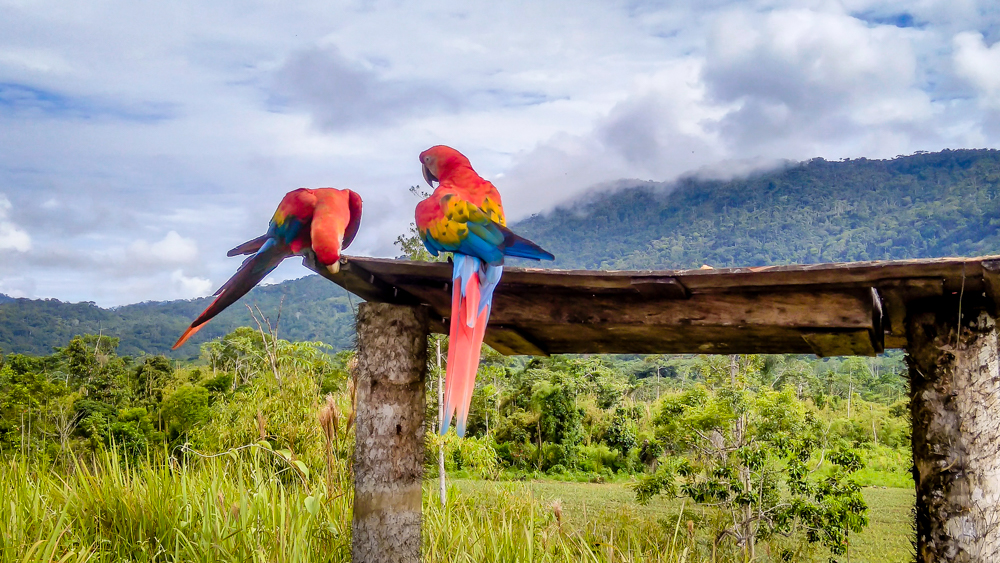
9 Months and 3 Countries – Epic Experiences in South America
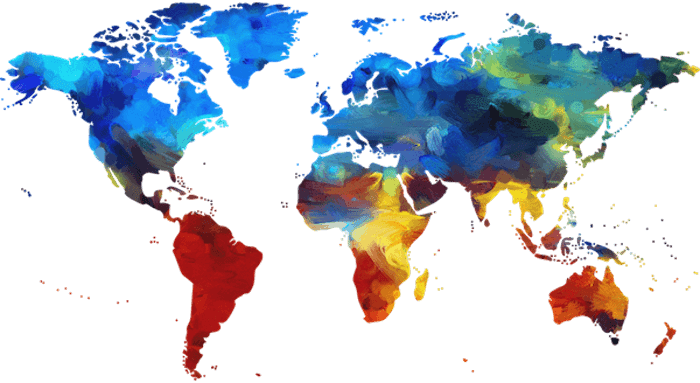
How to Learn a Language By Yourself – 24 Foolproof Tips
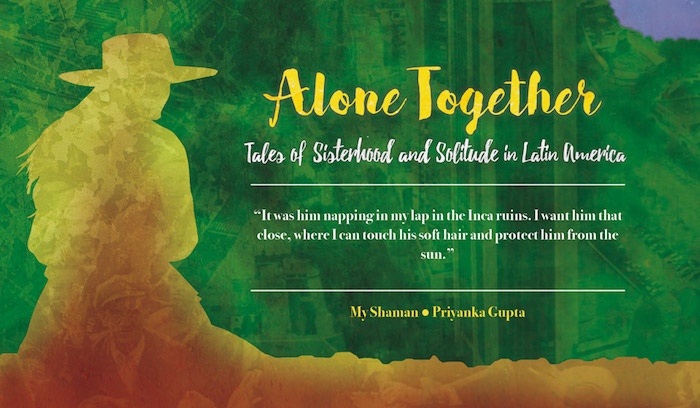
My Poem Was Published in Alone Together—Tales of Sisterhood and Solitude in Latin America
chile travel guides.
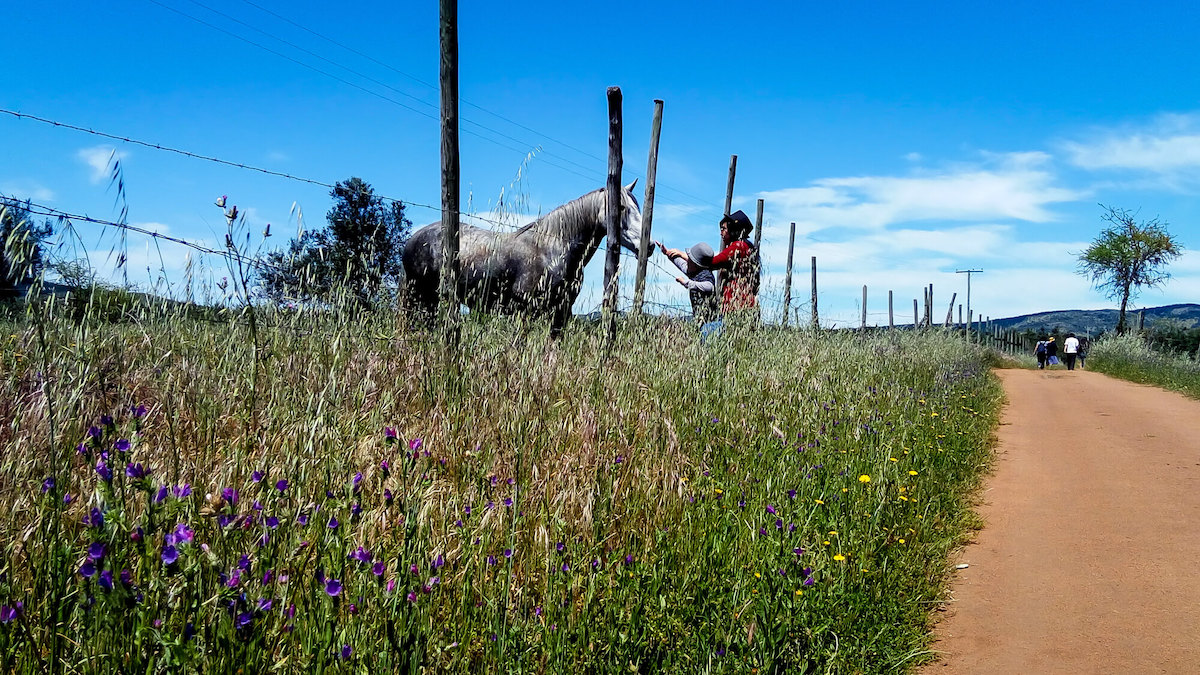
Cultural Differences, a Friend For Life, and Diwali in Chile
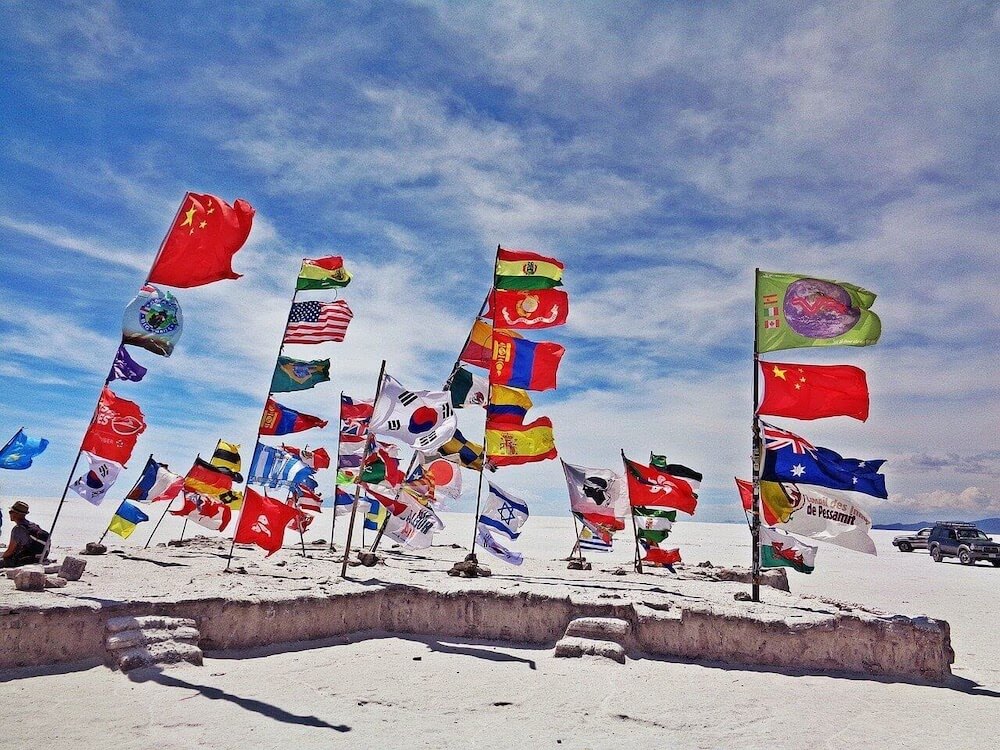
Chile Visa Fiasco–When I Was Stranded at the Bolivia-Chile Border
![Quick Chile Travel Tips [10-Minute Read From a Chile Expert] 9 Quick Chile Travel Tips [10-Minute Read From a Chile Expert]](https://www.onmycanvas.com/wp-content/uploads/2020/05/travel-tips-for-chile-feature-image-horses-on-chilean-road.jpeg)
Quick Chile Travel Tips [10-Minute Read From a Chile Expert]
![Things To Do in Chile: 50 Incredible Experiences [2024] 10 Things To Do in Chile: 50 Incredible Experiences [2024]](https://www.onmycanvas.com/wp-content/uploads/2020/05/moai-easter-island-rapa-nui-chile.jpeg)
Things To Do in Chile: 50 Incredible Experiences [2024]
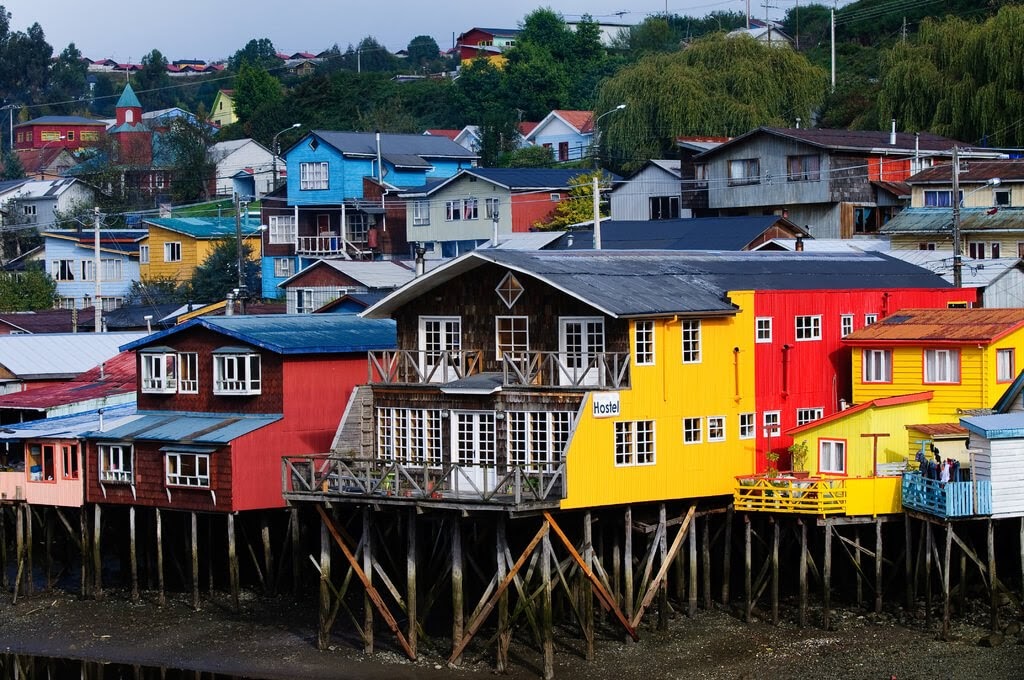
Te Quiero, Chiloé
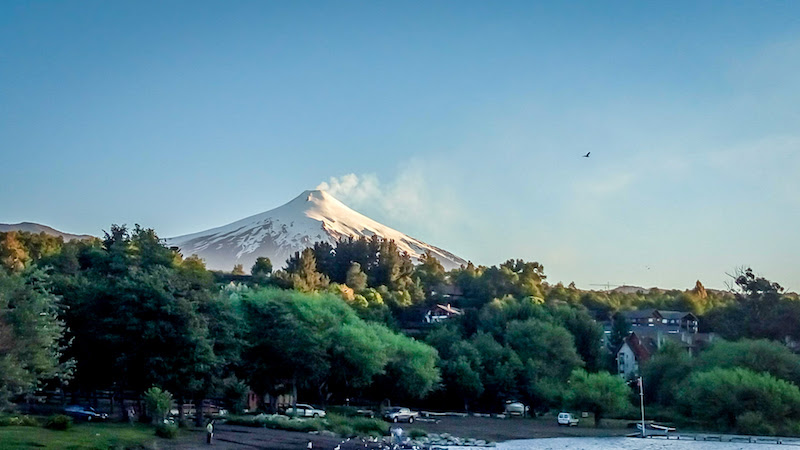
How I Survived the Villarrica Volcano Hike
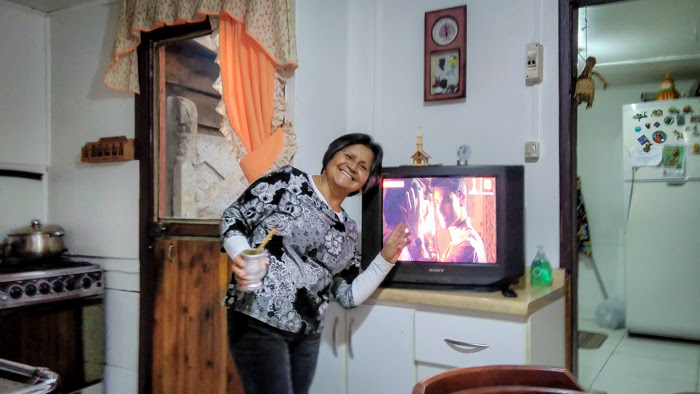
How My Chilean Host Mother Reciprocated to Cruelty With Kindness
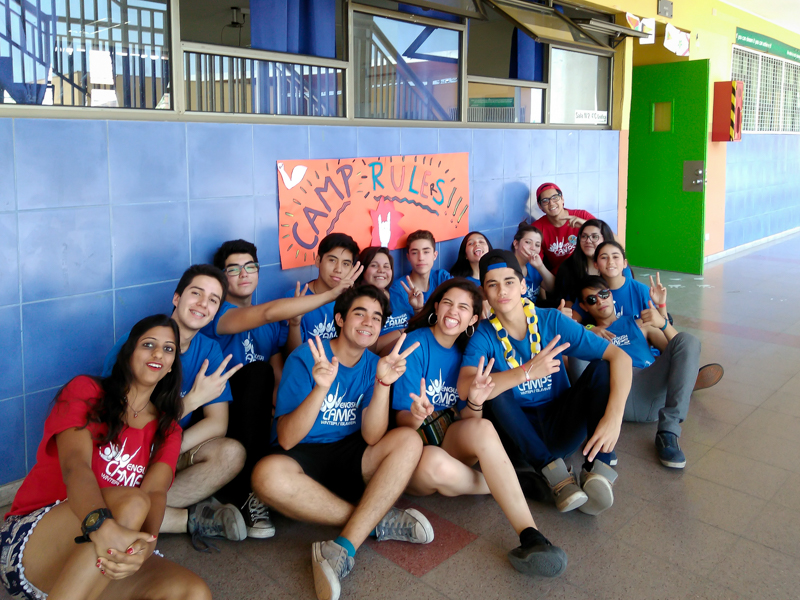
Teach English in Chile–All About English Open Doors Volunteer Program

Peru Travel Tales and Guides
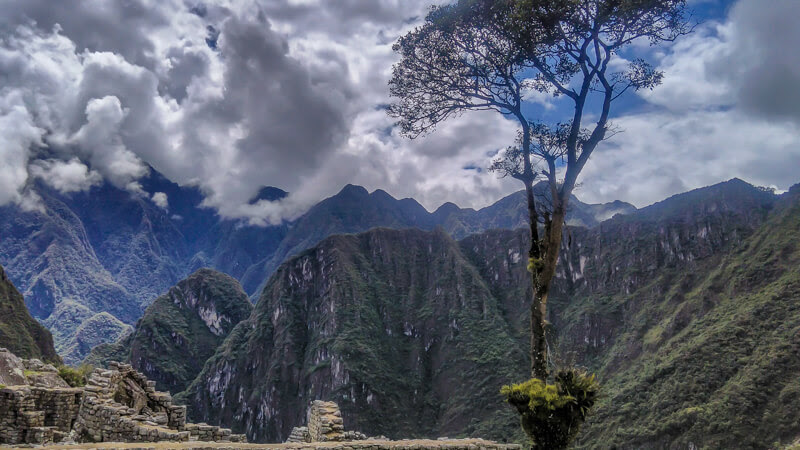
A Peruvian Grandmother’s Act of Kindness
![11 Top Things To Do in Peru in 2024 [And My Bonus Secret List] 17 11 Top Things To Do in Peru in 2024 [And My Bonus Secret List]](https://www.onmycanvas.com/wp-content/uploads/2020/03/peruvian-ladies-observing-local-life-top-things-to-do-in-peru.jpeg)
11 Top Things To Do in Peru in 2024 [And My Bonus Secret List]
![Manu National Park, Peru [2024] – Daring the Amazon Rainforest 18 Manu National Park, Peru [2024] – Daring the Amazon Rainforest](https://www.onmycanvas.com/wp-content/uploads/2020/03/manu-national-park-amazon-rainforest-peru-south-america.jpeg)
Manu National Park, Peru [2024] – Daring the Amazon Rainforest
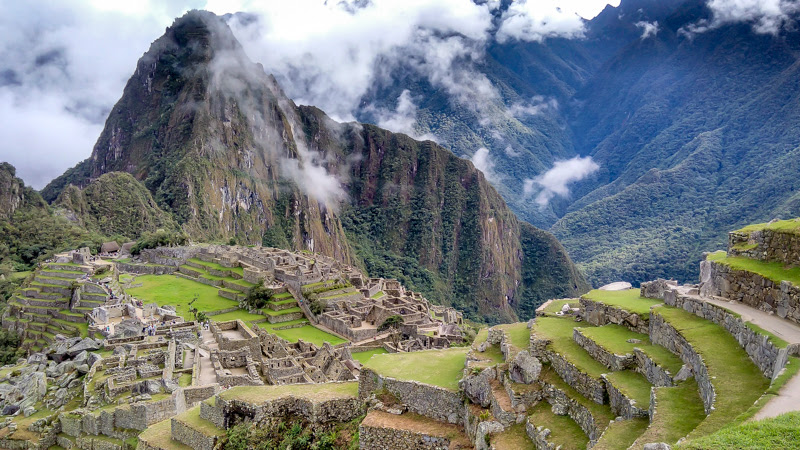
How to Visit Machu Picchu on Your Own
![15 Fun Things To Do in Cusco, Peru [For 2024] 20 15 Fun Things To Do in Cusco, Peru [For 2024]](https://www.onmycanvas.com/wp-content/uploads/2019/04/cuscoandesperusouthamerica.jpeg)
15 Fun Things To Do in Cusco, Peru [For 2024]
![Puno and Lago Titicaca: Peru's Most Magical Places [2024] 21 Puno and Lago Titicaca: Peru’s Most Magical Places [2024]](https://www.onmycanvas.com/wp-content/uploads/2019/04/a-child-on-a-reed-island-on-Islas_flotantes_de_los_Uros-Lago-Titicaca-Perú.jpeg)
Puno and Lago Titicaca: Peru’s Most Magical Places [2024]
![Backpacking Peru [2024]: One Guide to Rule Them All 22 Backpacking Peru [2024]: One Guide to Rule Them All](https://www.onmycanvas.com/wp-content/uploads/2019/04/featureMachuPicchulostcityincascuscoandesmountainsperusouthamerica.jpeg)
Backpacking Peru [2024]: One Guide to Rule Them All
![Colca Canyon Trek, Peru – A Complete Guide [2024] 23 Colca Canyon Trek, Peru – A Complete Guide [2024]](https://www.onmycanvas.com/wp-content/uploads/2019/02/hikecolcacanyonarequipaperu.jpeg)
Colca Canyon Trek, Peru – A Complete Guide [2024]
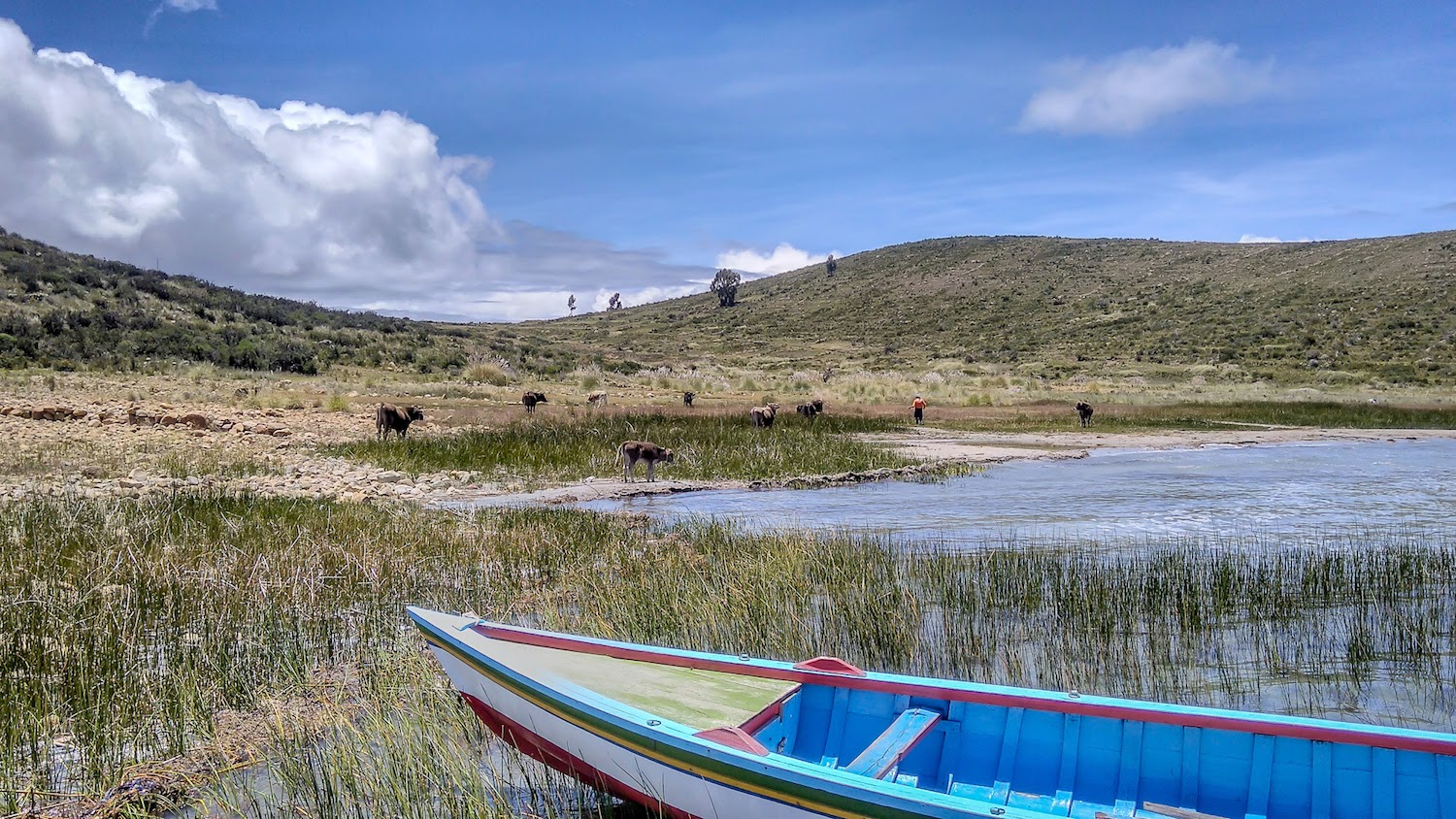
Peru – In Poetry and Pictures
bolivia travel guides.

Bolivian Salt Flats Tour – Exploring South America’s Weirdest Landscape
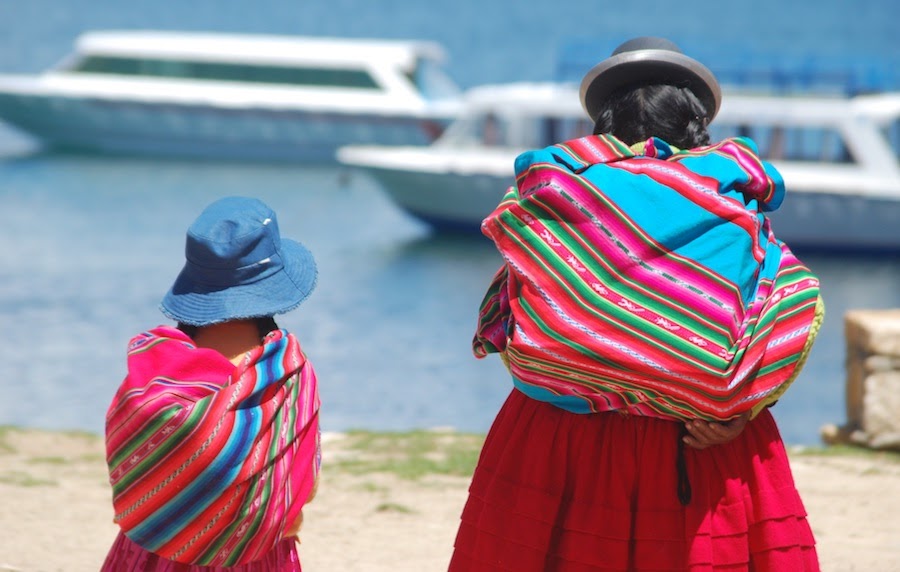
Copacabana, Bolivia – A Cute Town on the Shores of Lake Titicaca
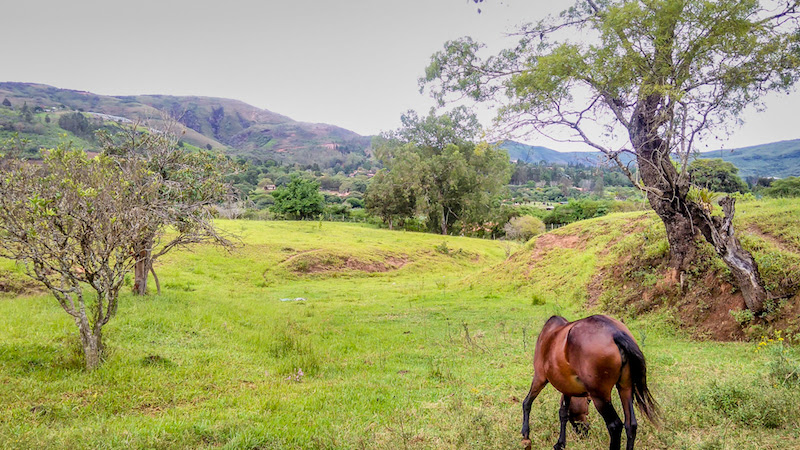
Samaipata – A Bolivian Village You Must Experience
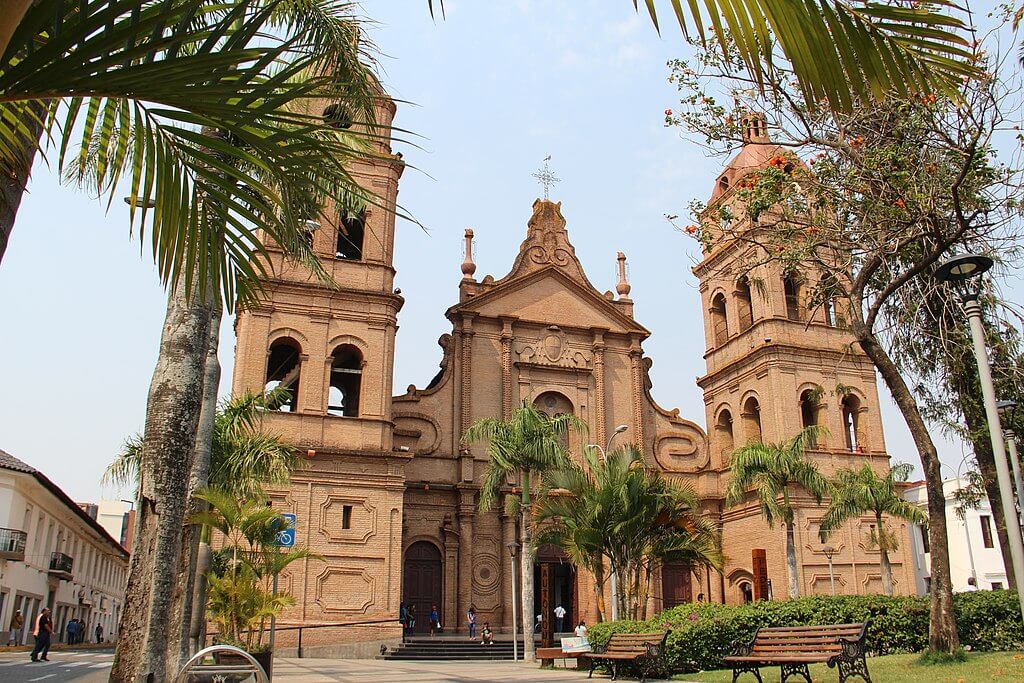
Why You Must Visit Santa Cruz – City of Bolivian Riches

Bolivia Visa for Indians (From India & SA) + Extension Process
![Bolivia Travel Guide [2024] – Everything to Know 31 Bolivia Travel Guide [2024] – Everything to Know](https://www.onmycanvas.com/wp-content/uploads/2019/01/lapazboliviamountainssouthamerica.jpeg)
Bolivia Travel Guide [2024] – Everything to Know
Would you love to go after reading my detailed south america travel guide tell me in the comments..
Liked my guide? Please pin it and share it with your friends!
Want similar inspiration and ideas in your inbox? Subscribe to my free weekly newsletter "Looking Inwards"!
3 thoughts on “Backpacking in South America [2024] – A Beginner’s Guide”
Loved reading this beginner’s guide! Your tips on budgeting and planning were super helpful. I’ve always wanted to backpack through South America and this post has given me the motivation to start planning my trip
Loved reading it! Would love to go to South America some day and you have a plenty of great information here!
Thank you for sharing, I have always thought if it is safe, as it is completaly different from where I live, but I would love to visit!
Leave a Comment Cancel reply
This site uses Akismet to reduce spam. Learn how your comment data is processed .

3 Months in South America Budget! How Much I Spent!
Categories Cost of Travel , South America
I spent just over 3 months in South America a few years ago. When I booked the trip I really wasn’t too sure how much money I would need to budget for 3 months in South America but I knew I wanted to go so I booked a ticket and hoped it wouldn’t be too expensive.
I visited 6 countries in South America in 3 months and as it turns out, the way I booked my trip meant I started with the most expensive countries – Brazil, Argentina & Chile and ended with the cheaper countries – Bolivia, Peru & Ecuador which worked out pretty well and less stressful than the other way round.
3 Months in South America Budget
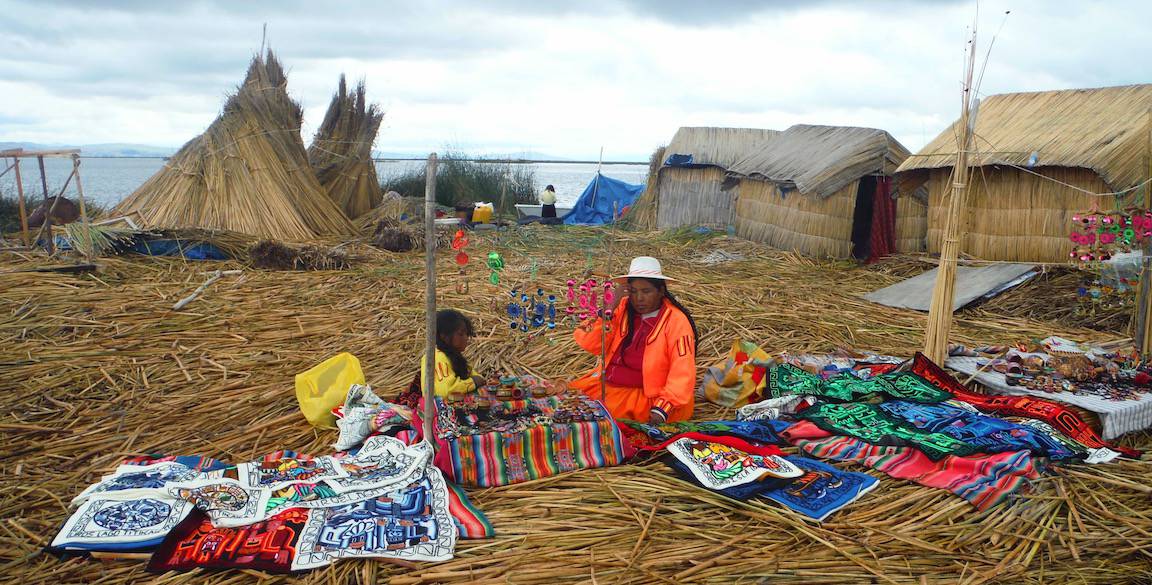
I was on a budget in South America and travelled South America as a backpacker on a budget but I tried to not miss out on too many South America activities because as I quickly realised these are the best things to do in South America and if you say no to expensive day tours, you miss out on a lot.
But I’ll explain that more below in my 3 months in South America budget post!
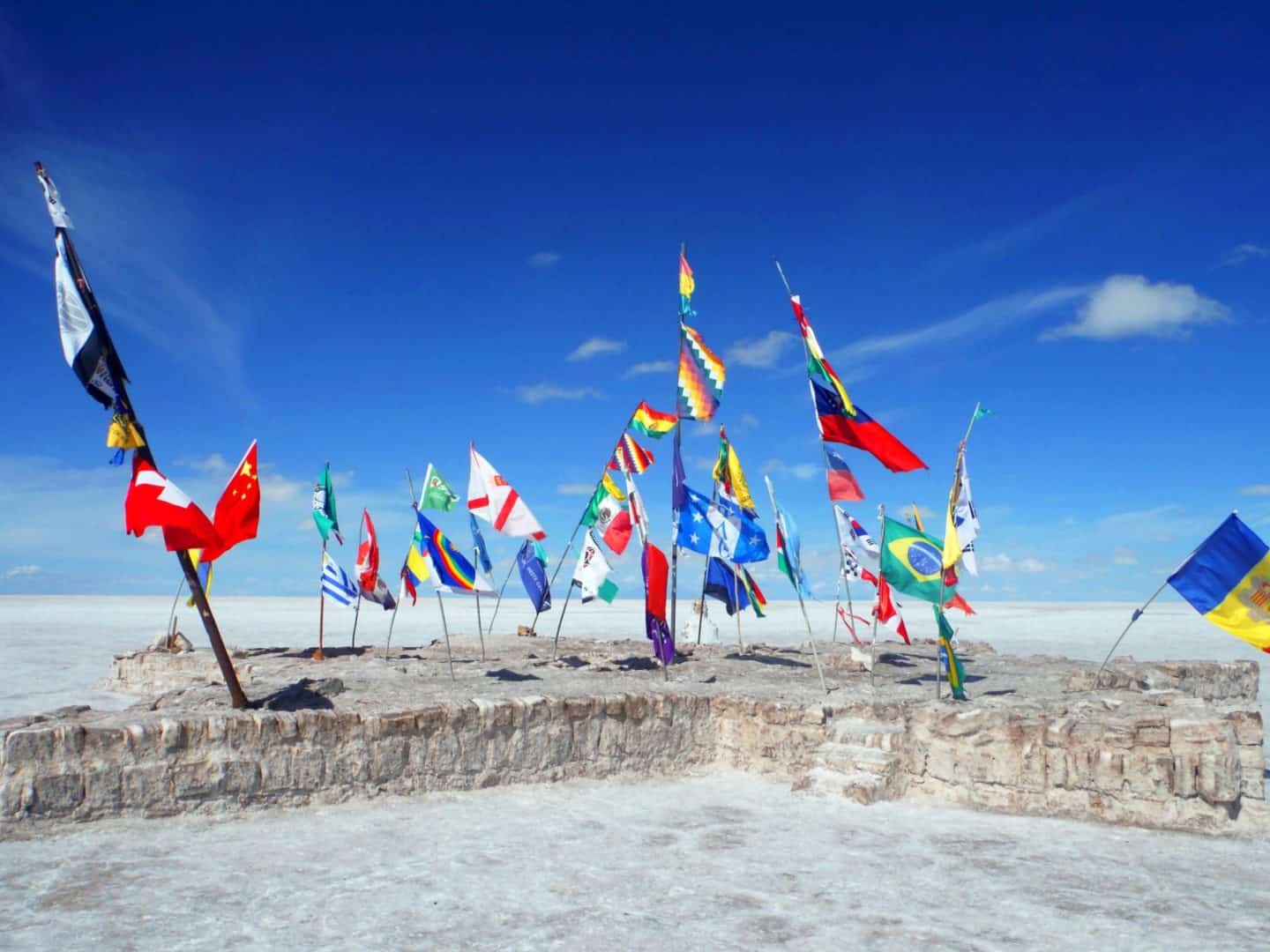
How to Travel South America on a Budget ?
I always stayed in hostels in a shared dorm which South America as plenty of.
I did most of the day trips available because if you don’t do them, often there is no point in going to the town, village or city you travelled to.
I didn’t spend much money on alcohol as alcohol isn’t that cheap in South America.
On average, breakfast was included in the hostel rate, I would eat lunch out and then cook dinner in the hostel from the food I brought in the markets and supermarket, I also did this for snacks. Buying food at the local markets was cheap and a great experience.
I didn’t spend much money on buying clothes or souvenirs in 3 months in South America.
I didn’t take any flights apart from to get there and leave. I took all buses to get around ranging from 4 hours to 10 hours to 22 hours which also ranged dramatically in cost between the countries!
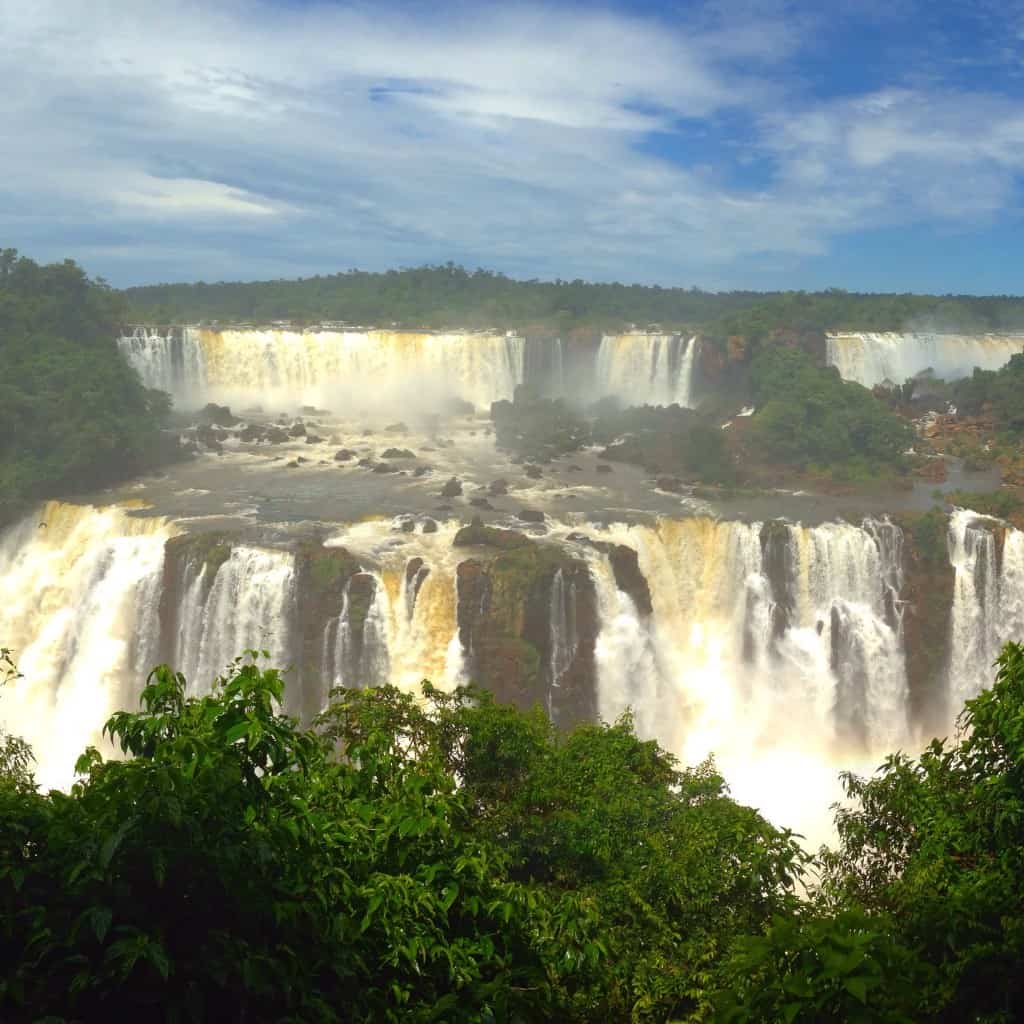
South America Budget Per Country
Here is a break down of how much I spent in each country in South America, along with how long I was there for:
Note – this was a few years ago so expect costs to have gone up!
Days Spent: 9 Money Spent: £478
Days Spent: 11 Money Spent: £415
Days Spent: 10 Money Spent: £400
Days Spent: 12 Money Spent: £389 including £126 on the 3 day Salt Flats trip.
Days Spent: 21 Money Spent: £670
Days Spent: 21 Money Spent: £555 including £149 on the 4 day Amazon trip
Here’s my 3 week Ecuador itinerary !
Days Spent: 6 Money Spent: £130
My friend Danielle from the travel blog Escaping Essex visited South America for 3 months more recently than me on a ‘flashpackers’ budget. For more up to date costs and a great 3 month in South America itinerary, make sure you check out her posts:
- A Flashpacker’s budget for 3 months in South America
- 3 Month South America Itinerary
My flights from Birmingham UK > Rio Brazil and Lima Peru > Birmingham UK were £750 with Lufthansa. Have a look at Skyscanner to see what deal you can get!
As I mentioned, the countries definitely got cheaper as I went along.
I think the main thing that affected how much I spent were the prices of the buses – in Brazil, Argentina and Chile they were very expensive, whereas in Bolivia and Peru they were perry reasonable for the distance travelled and in Ecuador they were very cheap- $1USD per hour!
Day trips were another thing that I hadn’t thought about, in most places a day trip is involved in order to see the full area and its attractions and you can’t really go all the way to South America and not do them !
Some of the day trips I did and would recommend are
- Rio City Tour
- Iguazu Falls in Brazi l & Argentina
- Wine Tour in Mendoza, Argentina
- Moon valley and geysers in North Chile
- Salt Flats tour in Bolivia
- Biking Death Road in La Paz, Bolivia
- Floating islands on Lake Copacabana, Peru
- Sandboarding in Huacachina Desert, Peru
- Machu Picchu
- Pastoruri Glacier Tour in Peru
- Multi-Day Amazon Tour
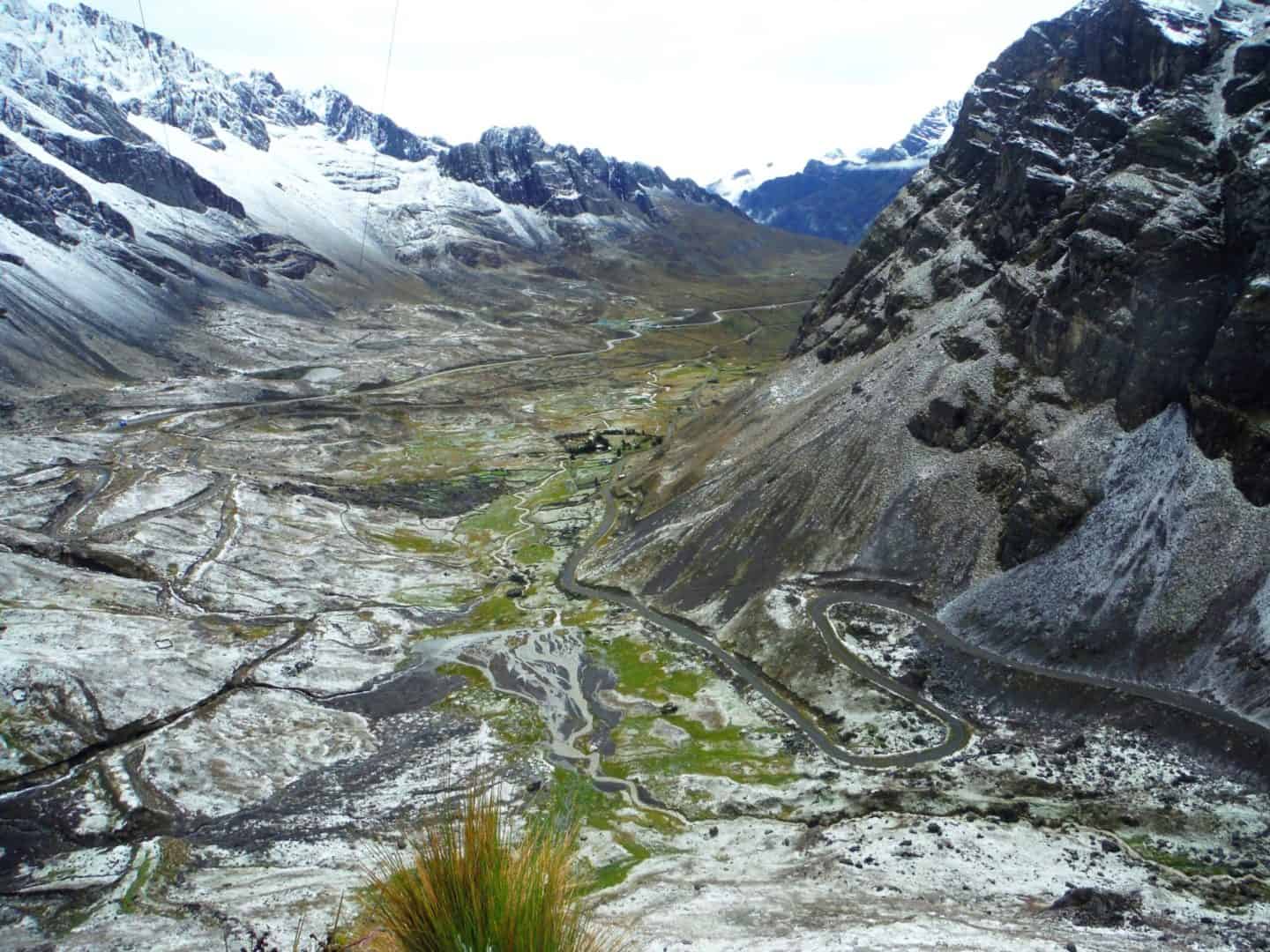
Overall I loved South America and the money I spent in South America was totally worth it! I hope this helps you plan your South America budget and work out South America prices!
- Related Post:
- Places you MUST visit in South America as a Backpacker!
- 18 Backpacking Essentials To Pack That Will Save You Space, Time & Money!
If you liked this please share it! 🙂
- Click to share on Facebook (Opens in new window)
- Click to share on Twitter (Opens in new window)
- Click to share on Pinterest (Opens in new window)
- Click to email a link to a friend (Opens in new window)
By using this form you agree with the storage and handling of your data by this website. *
Friday 3rd of March 2023
What months did you travel during your 3 month stint?
I'm planning travelling to South America for the same duration but hear that from April/May - August/September it's wet season in that region so was thinking doing it between December - February (I just don't want to miss out on days in case there's heavy rainfall/monsoons and being stuck inside all day).
TheWanderingQuinn
Monday 13th of March 2023
Hello, I went from January to March which was a great time to go! :)
Friday 1st of May 2015
I'm currently planning my trip around the world and I have to say that places like Brazil and Argentina are off my list at the moment, due to the high cost. :/
Saturday 2nd of May 2015
It's a shame that this is the case but yes they are SO much more expensive than a lot of countries and what I found is I went but couldn't even do much there because of the prices so better off visiting other countries and seeing more I think!Hopefully this post helped you to decide :)
Friday 24th of April 2015
This is such an informative post and really useful! It's good to know how much things cost and especially the more expensive countries.
Glad you liked it. This is the sort of thing I was trying to find when working out how much the trip would cost me so I thought I should then put my spendings out where onto the World Wide Web lol :)
- Meet the Team
- Our Manifesto
- Work with Us
- Budget Travel
- Personal Development
- Work & Travel
- United Kingdom
- More of Europe
- Philippines
- More of Southeast Asia
- More of South America
- More of Central America
- South Korea
- More of Asia
- More of North America
- New Zealand
- Pacific Islands
- More of Oceania
- South Africa
- More of Africa
- More of the Middle East
- Travel Essentials
- Travel Gear
Home » South America » Backpacking Travel Guide
Backpacking South America Travel Guide (TRAVEL TIPS • 2024)
So, you want to know how to travel South America, eh? Well, you’re in the right place!
Backpacking through South America is like learning to ride a bike without the training wheels. There is just the right amount of danger and curve balls to keep you alert, focused, and totally stoked on life.
With the exception of a handful of backpacker hotspots, South America is the wild west frontier of backpacking. This is the land of crazy parties, epic surfing, sprawling cities, and wild landscapes including the Andes and the Amazon jungle.
Above all else, South America is stunningly beautiful. Though challenging to navigate at times, it’s budget backpacker friendly, diverse, relatively safe, and one hell of a travel experience…
But South America is MASSIVE. Deciding where to go and how to travel South America is a mind-boggling task. That’s where I come in, amigos. This South America travel guide will provide you with EVERYTHING you need to know to prepare for your trip through South America.
Here’s the full low-down on how to backpack South America including routes, country profiles, tips and tricks for South America budget travel, and much more.f
Lace up your bootstraps and prepare to have your travel inspiration skyrocket. We’re going on an adventure!
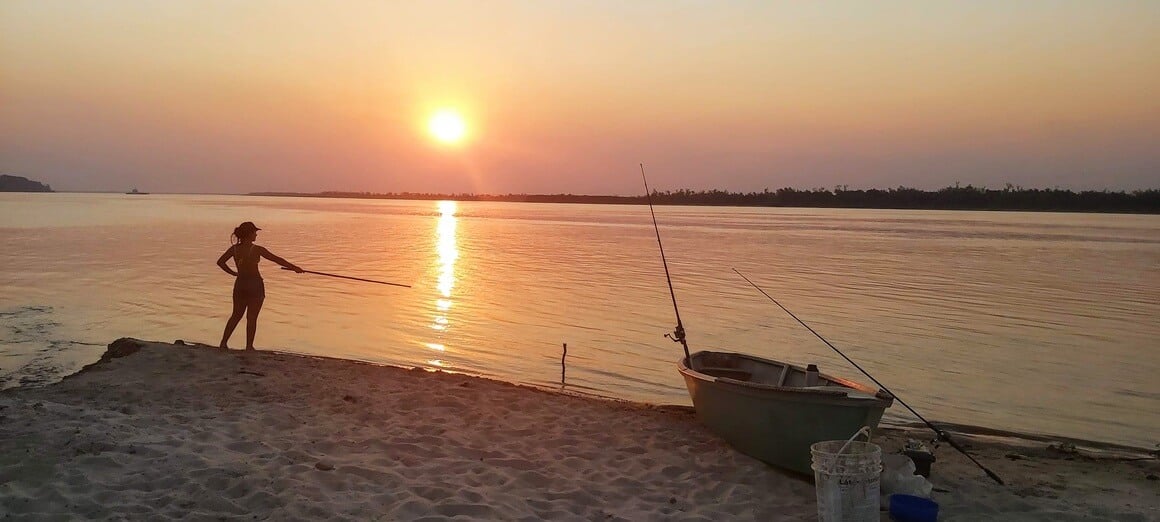
The Broke Backpacker is supported by you . Clicking through our links may earn us a small affiliate commission, and that's what allows us to keep producing free content 🙂 Learn more .
Why Go Backpacking in South America?
The South American continent is one of my favourite places on earth. It was always a place that mystified me: the traveller group was generally older and more mature. So when I got invited (by a sexy South American), I jumped at the chance.
It’s a place where I learned the art of budget travel , fell in love countless times, and had a multitude of life-changing experiences along the way. If you want to get off the beaten track whilst still having the option to meet plenty of other travellers, South America is the place to level up your backpacking skills and head on a real adventure…
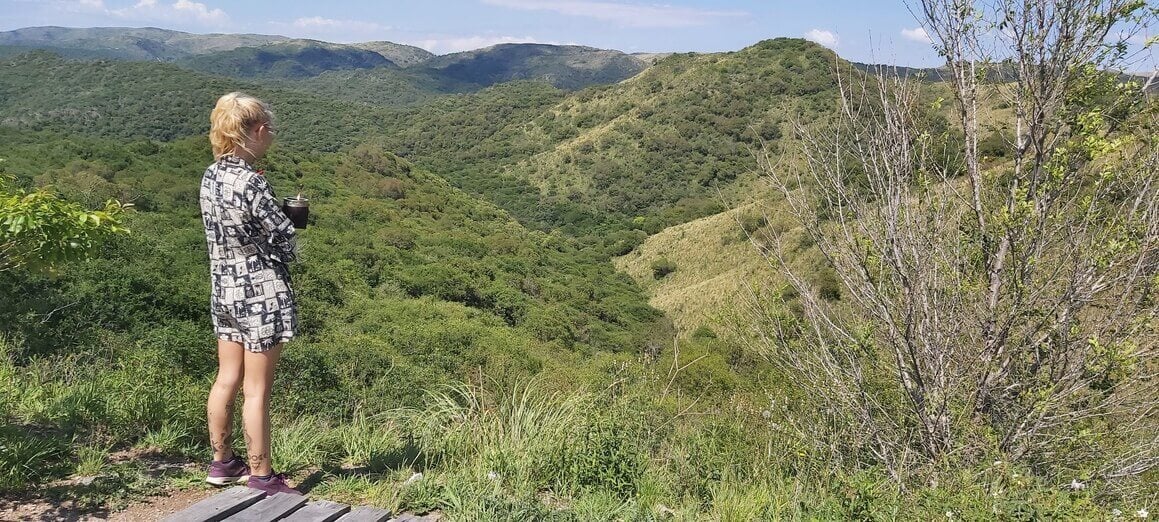
South America is one of the most diverse continents on earth. It is home to the world’s second-highest mountain range in the Andes, world-class surf beaches, the Amazon Basin, the world’s driest desert, huge plains of lush grassland, glaciers, and unique wildlife not found anywhere else on Earth…
Each country you visit whilst backpacking South America offers up the opportunity to experience the incredible natural and cultural forces unique to that region.
Backpacking South America is generally a cheap endeavour – although it’s not as cheap as Southeast Asia or India. There are some fairly expensive corners of South America that you should avoid if you’re travelling on a budget .
You will fall in love with South America (and maybe a person or two along the way). So let’s dive into some South America travel itineraries and backpacking routes for your trip.
Best Travel Itineraries for Backpacking South America
Best places to visit in south america – country breakdowns, 9 top things to do in south america, backpacker accommodation in south america, south america backpacking costs, best time to travel to south america, staying safe in south america, getting into south america, how to get around south america, working in south america, what to eat in south america, south american culture, unique experiences in south america, faqs about backpacking in south america, final thoughts on backpacking south america.
When making a South America backpacking itinerary, remember that travel distances are HUGE, internal flights expensive, and sometimes you want to stay somewhere longer than anticipated.
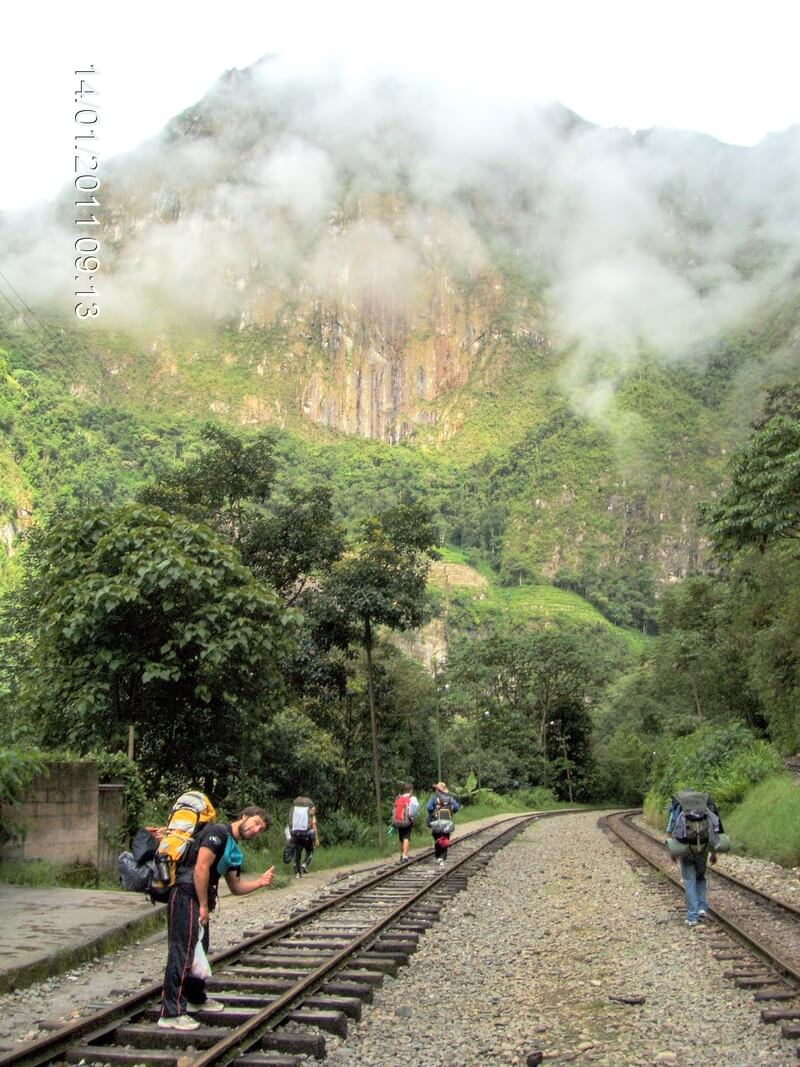
So choose your South America backpacking route carefully. Unlike other continents, how much time you have really matters; you simply can’t do all of it.
If you only have 2 or 3 weeks for travelling South America, forget about seeing the whole continent. I recommend sticking to one country and devoting your energy to exploring it properly.
In one month, you could explore some countries closer to each other. You could visit Bolivia and Lake Titicaca in Peru for example. It’s good to have room for spontaneity in your South America travel itinerary too.
2 Week South America Travel Itinerary – The West Coast Appetizer
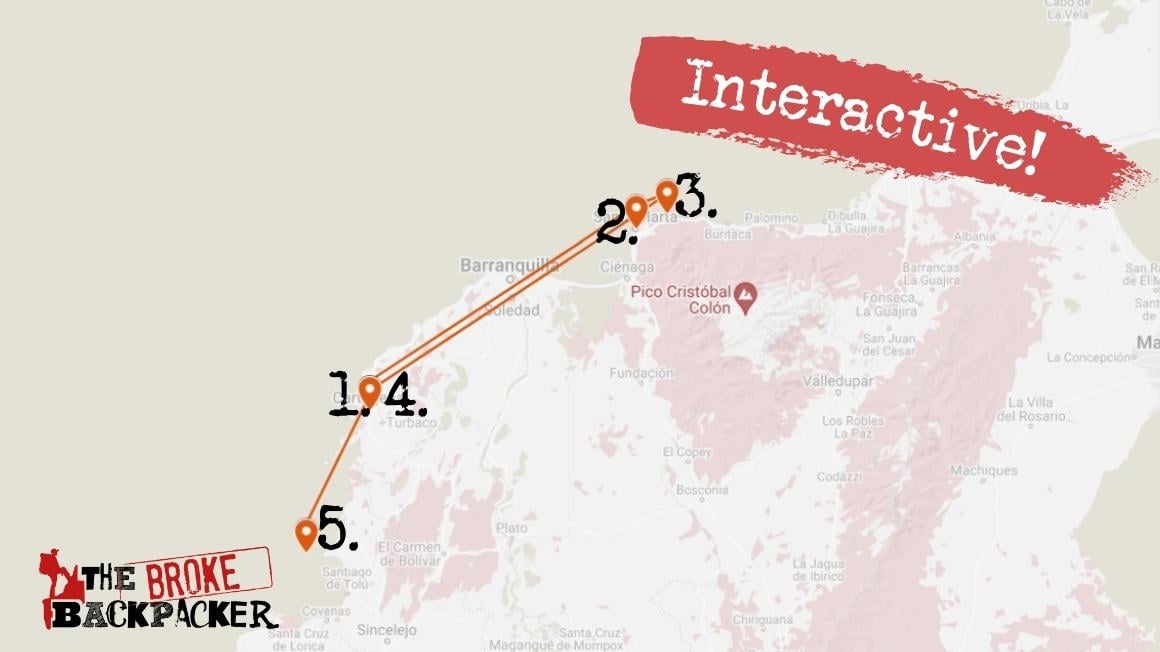
You’ll have to keep moving to make this itinerary happen in 2 weeks, but I believe in you!
Start your backpacking South America itinerary in Colombia by visiting Cartagena . After a few days, head to Santa Marta , the jump-off point for Minca – a charming mountain town – and Tayrona National Park. Plus, there are so many good places to stay in Santa Marta too.
Get a bit off the beaten path, and head east to Cabo de la Vela (where the desert meets the sea) and Punta Galinas , where you can feast on fresh seafood along the Caribbean coast. Doubling back to Cartagena , head to nearby Playa Blanca and Tolú (mangrove) before heading to Islas de San Bernardo (white-sanded islands).
Or you could start in Lima , Peru. Explore the city for a day or two before heading to the Nazca Lines , Arequipa , and Colca Canyon .
Then head to Cusco in the Andes. Take a few days to get used to the altitude before setting off on a multi-day trek to Macchu Picchu.
Alternatively, start in Buenos Aires . Then you can head south to trek in Patagonia . In southern Argentina and Chile, you can do the world-famous Torres del Paine circuit . 2 weeks is cutting it fine but – if you hustle – you could pull it off.
In 2 weeks, you can get a good taste of Colombia, Ecuador , or Bolivia . Don’t miss out on the Salt Flats .
1 Month South America Travel Itinerary – The Starter
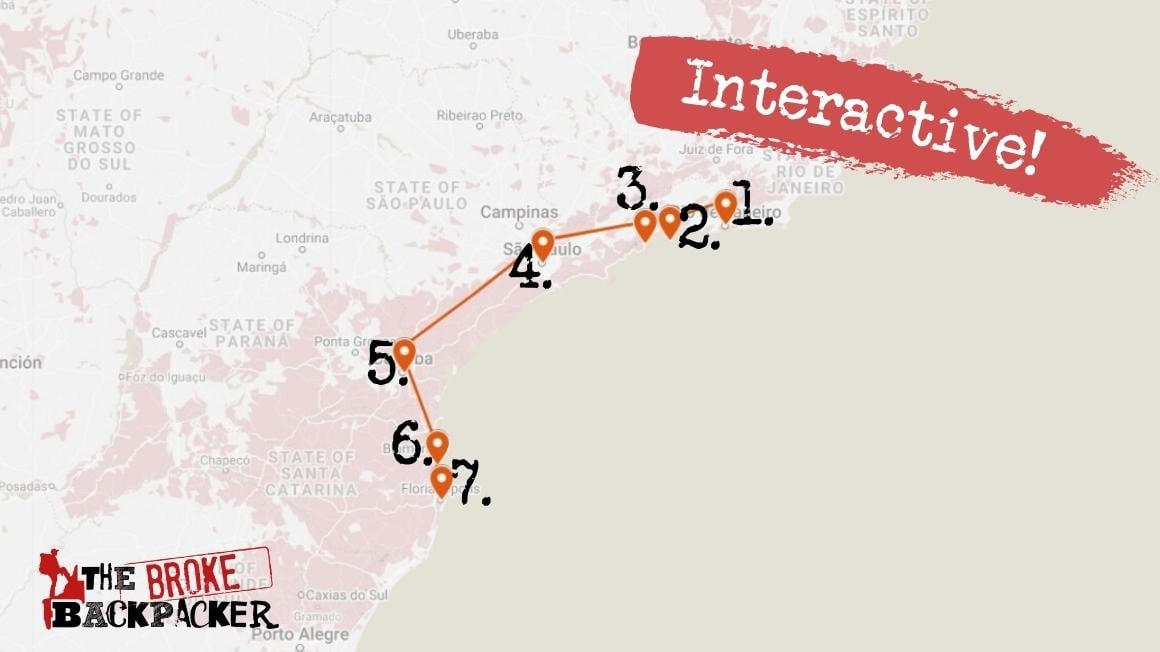
With 1 month, you can make an epic backpacking South America itinerary. If you want to explore more than one country in South America, you’re gonna need more than 3 weeks.
For surf bums, you could easily spend a month heading beach to beach from Southern Peru all the way to Colombia , in 1 month. Or you could do 2 weeks in Argentina followed by 2 weeks of hiking in Chilean Patagonia .
If it were me, larger countries like Argentina, Chile , and Brazil are better to explore with more than 1 month. You can do it but you will spend a long time on bus journeys, so I would just stick to one area.
Southeast Brazil is a good choice for 1 month on a South America itinerary: travel from Rio de Janeiro all the way south to Florianópolis and hit up everything in between. Bear in mind that you’ll probably want to stay in Rio AND Floripa longer than you expect.
Highlights of this route include exploring the megapolis of São Paulo , idyllic getaways of Ilha Grande and Paraty , eco-friendly and laidback Curitiba , and the crazy nightclubs of Balneário Camboriú .
Or, you could fly into Ecuador and spend 3 weeks exploring here: stay at a great hostel in Guayaquil before heading to Montañita . In Montañita you can party and surf to your heart’s content. Head North towards Bahia de Caraquez and Canoa for surf towns that are more off the beaten path.
Next head to the mountains, stopping first in Quito . There are some excellent treks in the Ecuadorian Andes .
If you have time, definitely hit up the Volcano Loop trail on the outskirts of Cotopaxi National Park . A trip to the jungle around Puyo is recommended as well. Then head for a week of trekking in Colombia .
3 Month South America Travel Itinerary – The Great South America Main Course
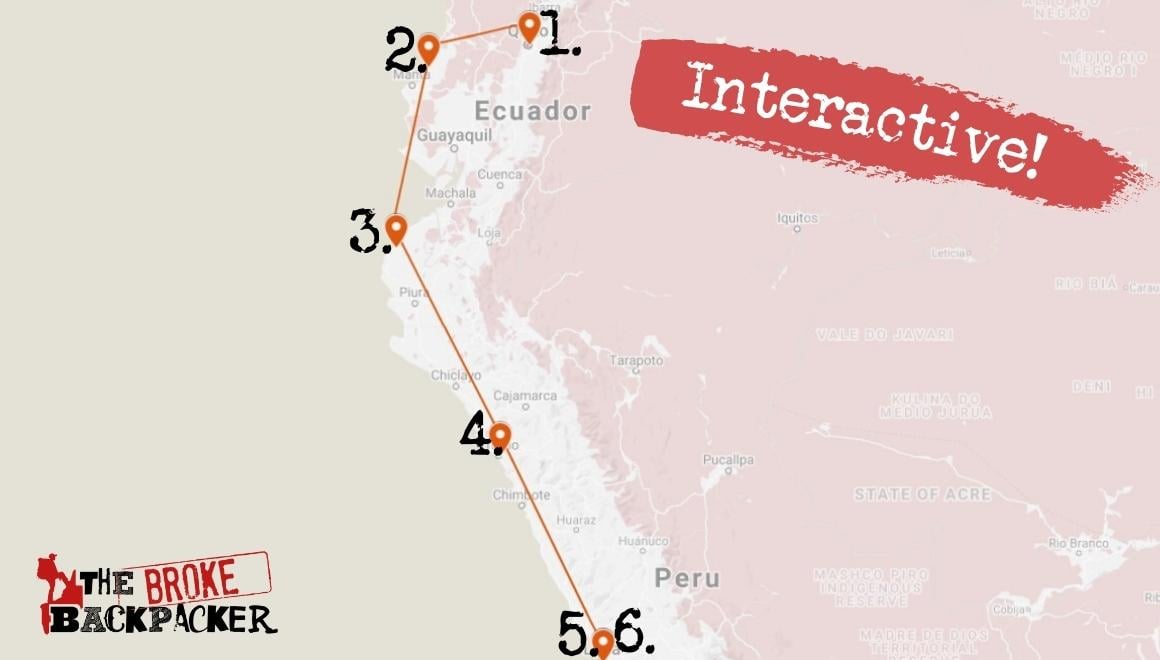
3 months backpacking South America, eh? Hell yes!
I recommend flying into Lima, Peru unless you know you want to start in the north (Brazil or Colombia) or further south (Argentina or Chile). Explore Lima and the coast before heading to the Andes. There Machu Picchu awaits in all of its glory.
Definitely do a trek to the famous Inca city! (More on hiking in South America later). From here, you can either drop down on the other side of the Andes and explore the Amazon basin or you can head south to Bolivia and eventually Argentina and Patagonia .
Alternatively, you can slowly start making your way north via the Coast. You could spend a month (or more) in Ecuador, Colombia, or Brazil respectively.
Personally, I started off in Buenos Aires then went north to Brazil and Colombia . The distances were truly massive. I’m talking 30-hour bus rides (on comfortable buses I must say).
Travelling in South America is never a quick affair, so plan your itinerary accordingly.
6 Month South America Travel Itinerary – The Full 3-Course Latin America
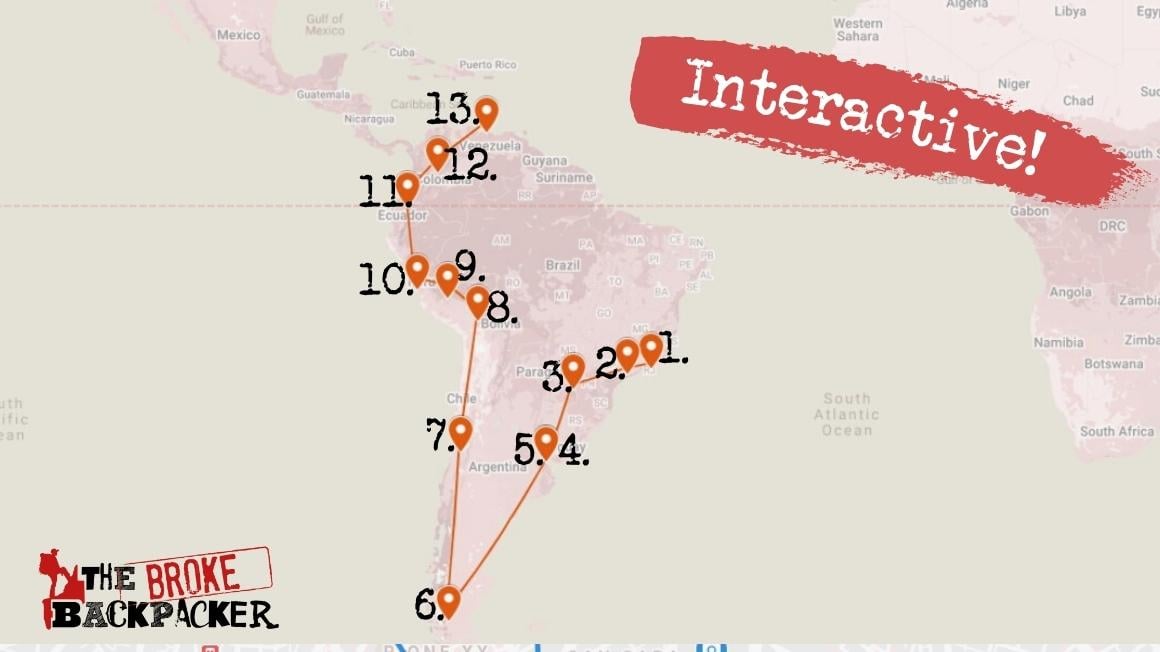
Life has brought you to the fortunate crossroads of having 6 months to travel South America? Good on you!
With a 6-month backpacking South America itinerary, you have the luxury of really being able to take your damn time. To see multiple countries, it’s a practical choice to begin your journey either in the north or the south to avoid backtracking.
With a 6 month itinerary, you can explore many South American countries in depth. I’ll be honest with you, the itinerary shown on the map is really fucking ambitious. But hopefully, it gives you an idea of what crossing this vast continent would look like.
Starting your journey in Rio de Janerio or São Paulo might be a bit of a rough landing, though you will be a primed bad-ass by the time it comes to move on to another country. Other options are starting with some days in Buenos Aires , in Argentina, and Chile, in the south.
You could be surfing it up on the coast of Ecuador one day, and be in the mountains of Peru several days (and many bus rides) later. I advise taking a chunk of your time to really explore and get off the beaten path in top destinations like Brazil , Colombia , and Bolivia .
Having 6 months or more to go backpacking truly means you have a total blank slate to work with. So get ready to write your own beautiful backpacking destiny!
Want to save money on accommodation?

We got you. For reals.
Each country in South America has something unique and profoundly exciting for backpackers. But they also have some common themes: they are Spanish speaking (minus Portuguese in Brazil), they have stunning natural beauty, and some of the nicest people you will meet whilst travelling. So finding the best places to backpack in South America has a lot to do with your own interests.
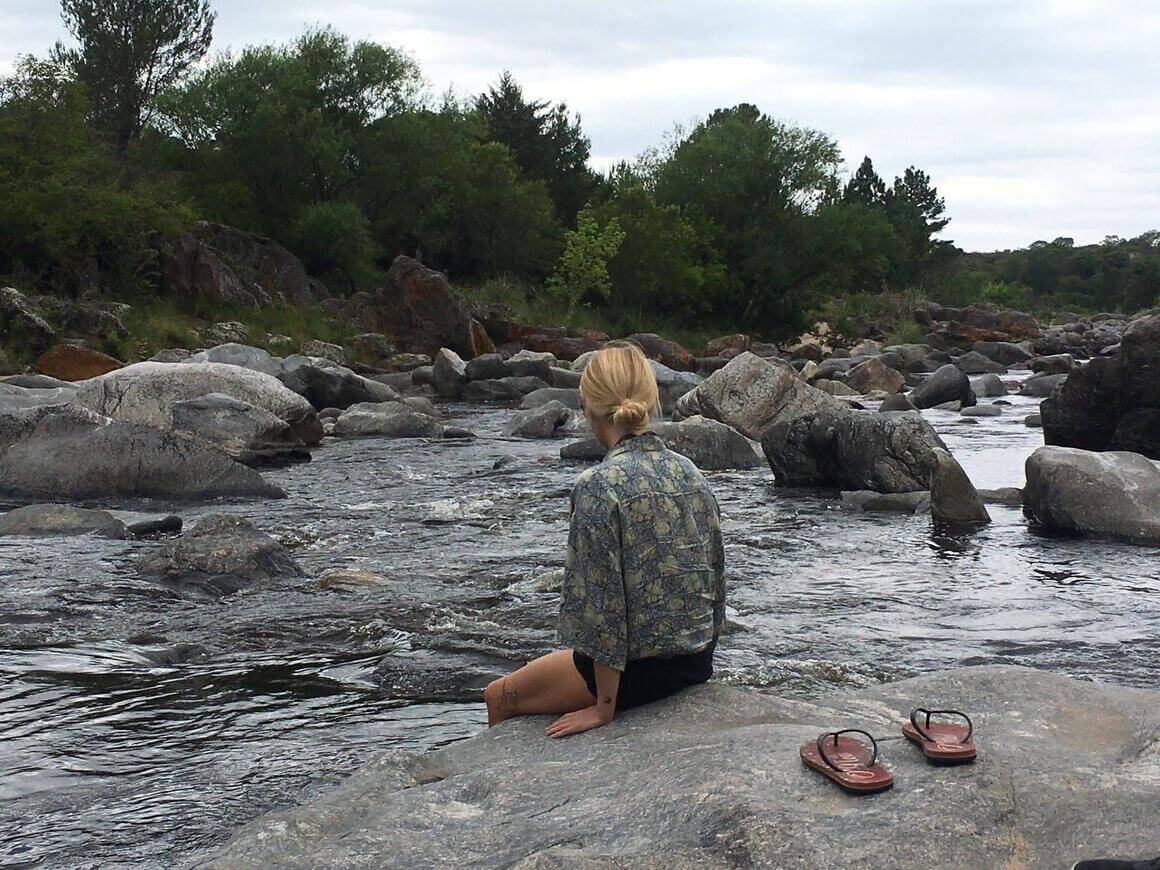
Maybe you’ll explore the epic snow-capped peaks of Patagonia in Argentina and Chile. Party with beautiful people at the Carnival in Brazil.
Trek to the Lost City in Colombia. Experience the sun-drenched deserts of Bolivia and the colourful Rainbow Mountains of Peru.
Backpacking through South America truly is a life-changing journey through one of the planet’s most fascinating landmasses. When you visit South America, you can be sure that it will be some of the most fun you will have in your life.
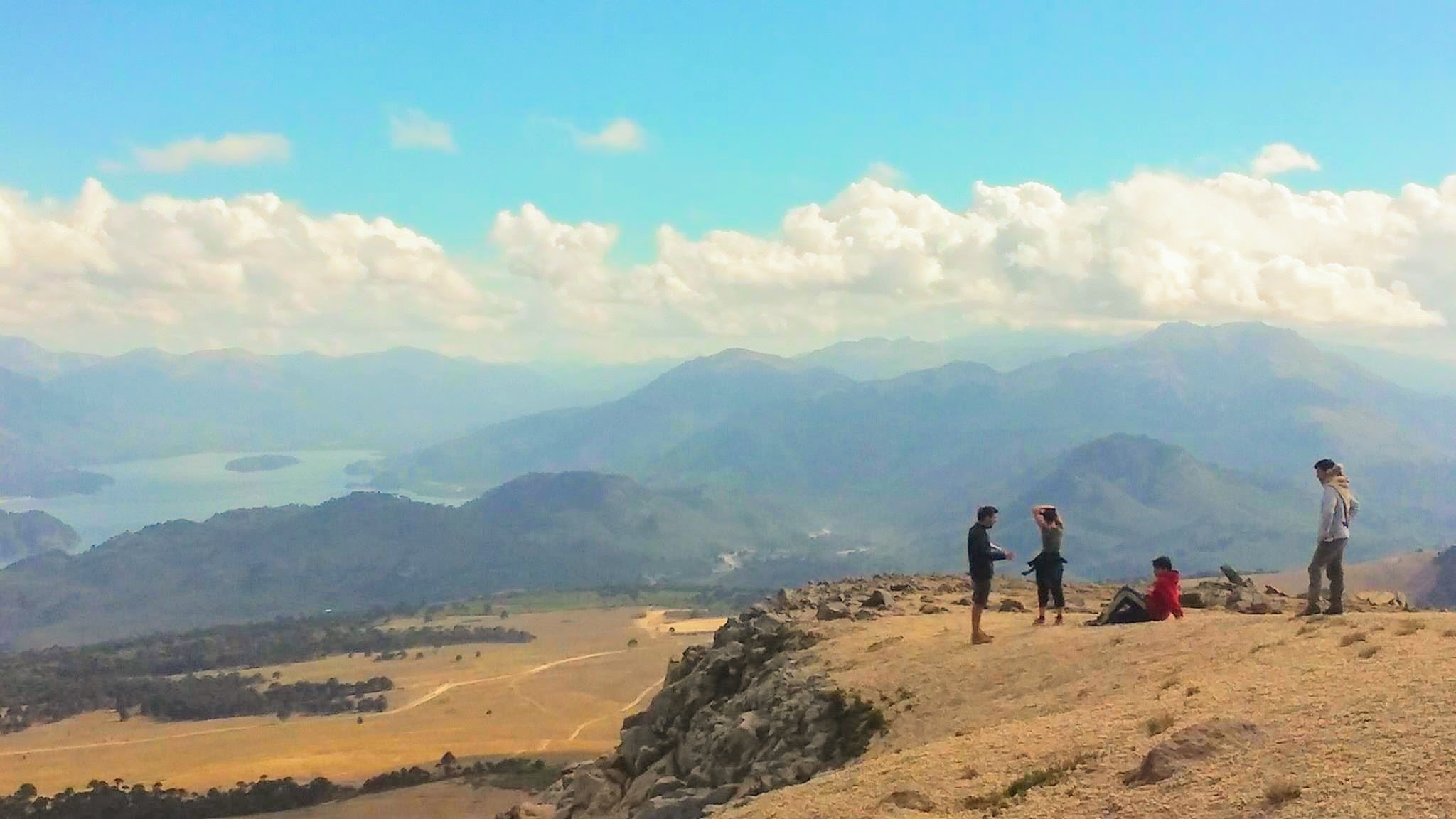
South America is a vast continent on the move. The number of people travelling to South America is increasing every year. Whilst the cost of living in South America remains quite low, each country requires a different budget for travellers.
Once you begin to discover a few of the South American countries, you will be entranced by the jaw-dropping landscapes, fascinating history, vibrant culture, and awesome food.
Let’s take a look at the countries that make backpacking in South America so damn special.
Backpacking Brazil
Brazil is, hands down, one of South America’s most dynamic countries. It’s all about the extremes. Whether it’s the parties, the people, or nature, the vibrations run through everything – and connect everyone.
Backpacking in Brazil offers up sick surf beaches, fun-loving locals, insane parties, and landscapes that would make even the most seasoned traveller say “no shit, mate, look at that!”
Of course, the Brazilian festival Carnival is legendary – and for good reason. Get your mind blown on the Brazilian side of Iguaçu Falls , visit the Amazon , drink a Caipirinha on the beach! Plus Brazil’s home to big up-and-coming cities like Belo Horizonte, Curitiba, and Natale.
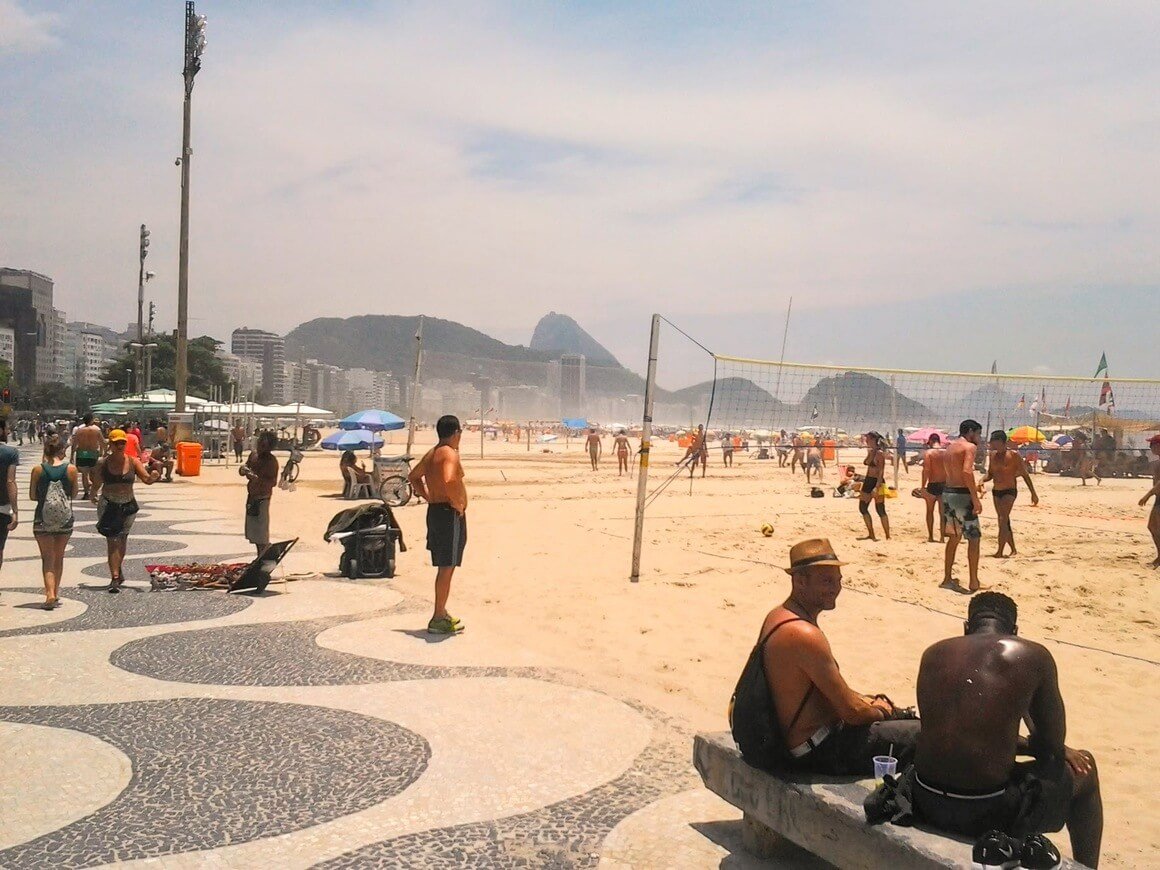
And when I say ‘extreme’, I mean extreme : Brazil is absolutely MASSIVE and covers nearly half (47%) of South America’s landmass! That should give you an idea of how big it is.
But, more importantly, it gives you a better idea of how much diversity Brazil has on offer. In fact, there’s a lot going for Brazil that you may not be aware of.
For example, trekking probably isn’t the first thing that pops into your mind when you think about backpacking through Brazil. It’s a shame because Brazil has truly gorgeous trails spread throughout the country. It’s also home to Iguazu, one of the most incredible waterfalls on Earth.
The best hiking opportunities are usually found in Brazil’s national parks (parques nacionais ). Brazil has over 70 national parks and – in terms of beauty – these can contend with any other on Earth.
What to Know Before Visiting Brazil
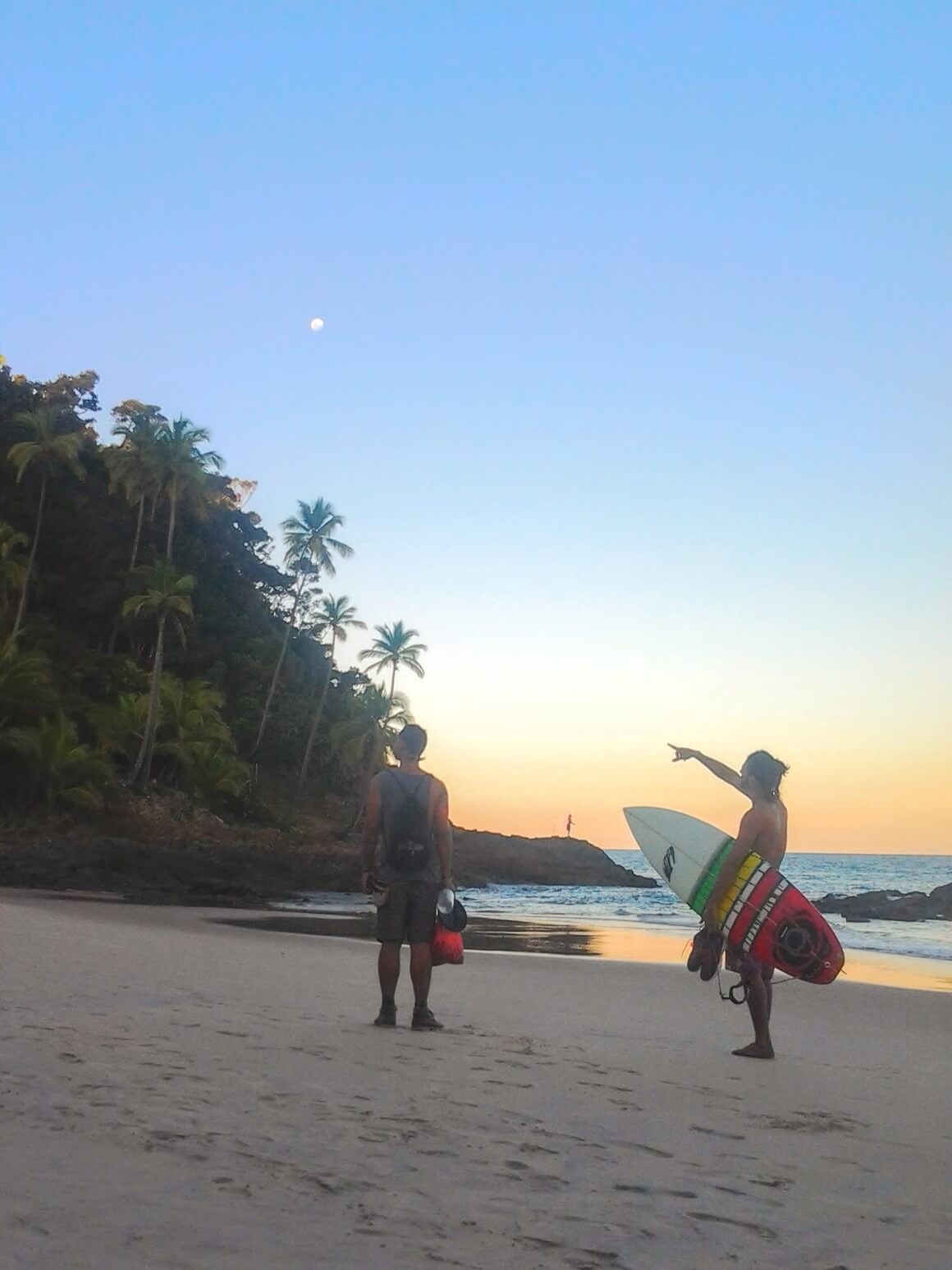
- Don’t miss out on… Florianopolis. The Brazilians favourite place to visit for a reason. It’s chilled, safe, and gorgeous. You plan to stay in Floripa for a week, it grabs you by the balls, and you get stuck for months.
- Keep an eye out for… Travel distances. Don’t be fooled: they’re way longer than they seem on the map. Give yourself plenty of time to get from A to B.
- The coolest hostel is… Hostel do Morro . In one of my favourite destinations in Brazil, this hostel is a true nature immersion. In the “mato”, with sea view and monkeys visiting. A true good vibes place!
- The best food is found in… Belo Horizonte. There is an amazing energy to this place; everyone hangs out on the streets, eating and drinking at plastic tables, all night long.
Backpacking Colombia
Whilst South America has many countries that I consider to have the full package , Colombia is the most complete. It’s a relatively small country. So considering the scale of epic surf, neverending parties, untouched jungle, happening cities, and towering mountains, Colombia is a reason for backpackers to keep travelling!
Cali, Cartagena, Bogotá , and Medellín are a few major cities in Colombia where you can really let loose. Go and have some extraordinary conversations with the locals about life in Latin America and not taking life too seriously.
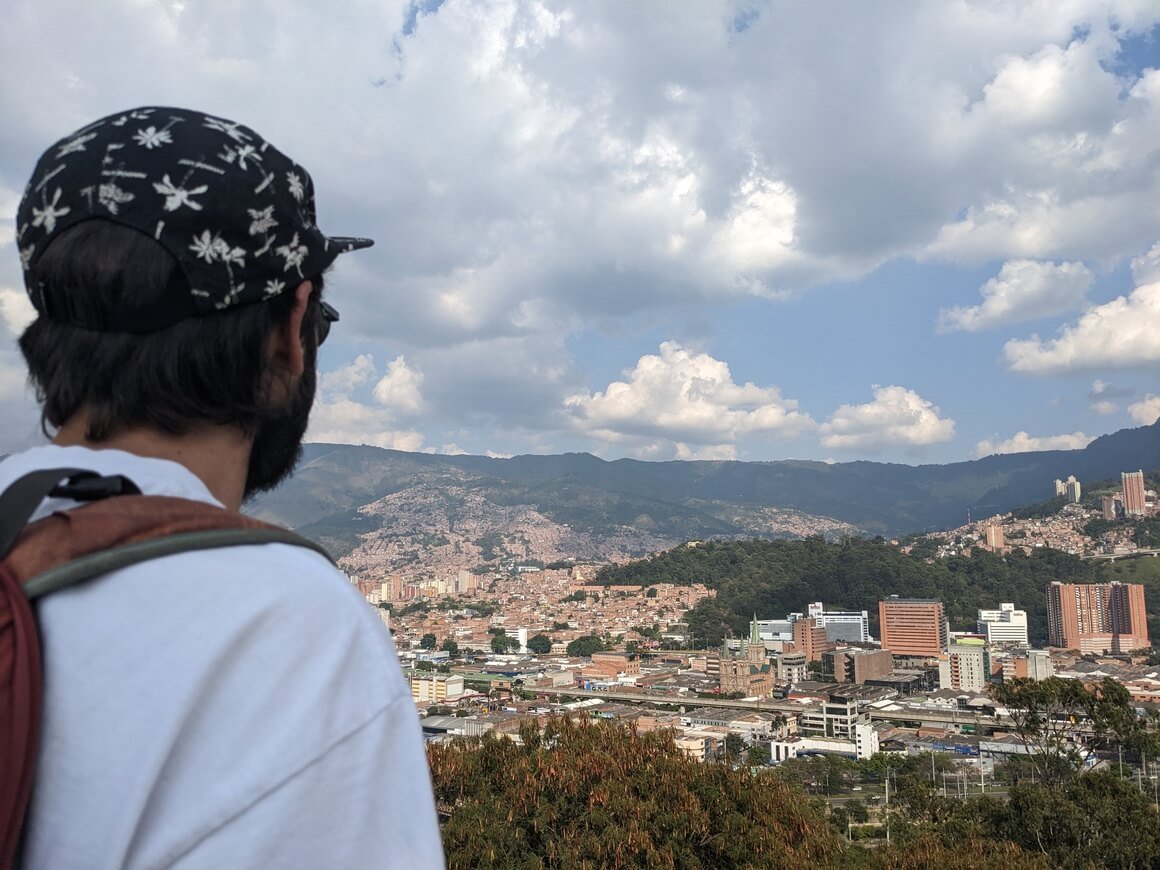
Is Colombia safe ? Perhaps your mum would love to know. Hell yes, it is !
As much as Colombianos are ready for the disassociation with Pablo Escobar, it’s hard not to mention the impact that he made on the country and the South American continent as a whole. But his reign of terror is over.
Modern-day Colombia couldn’t be more different from the days when narco-traffickers ruled the country. Visiting Medellín now vs 20 years ago is a COMPLETELY different experience. The Medellín of today is a great experience.
Colombia is for adventure junkies and nature lovers too. The northern terminus of the Andes Mountains ends here and you can take your treks into the deep jungle in Colombia’s National Parks .
What to Know Before Visiting Colombia
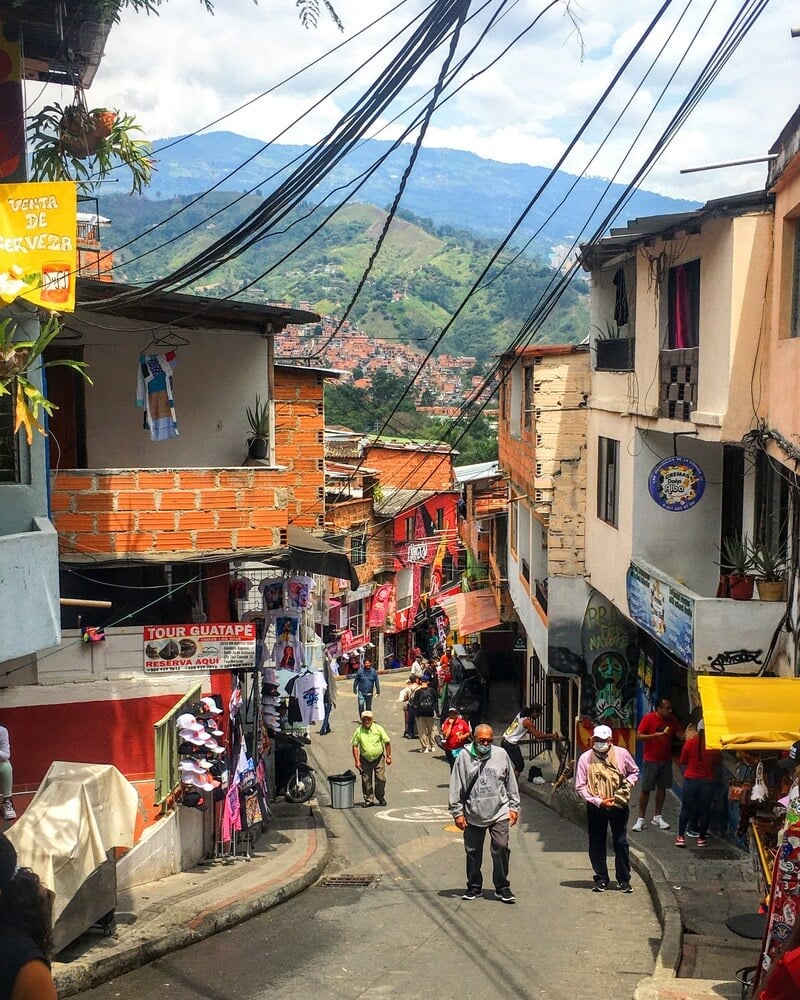
- Don’t miss out on… Carnival in Barranquilla. Most of the time, this industrial town is overlooked by travellers. But for one week of the year, this place goes NUTS.
- Keep an eye out for… how difficult the trek to Cuidad Perdida is. It’s long, treacherous, and hot as shit, but absolutely worth the effort in the end. The Lost City is one of the best places to visit in South America.
- The coolest hostel is… Viajero Santa Marta Hostel . Great location and has lazy and peaceful vibes. Amazing rooftop and activities to connect and meet other travelers.
- The best food is found in… the local restaurants. Look for the menu del dia to feel like you’ll never need to eat again.
Backpacking Ecuador
Ecuador might be small but it certainly packs a punch. I spent 3 months backpacking in Ecuador and could easily spend many more.
The diversity is incredible and it’s a great place to experience Andean Highland culture. The people who live in the Andes have a distinct and ancient culture rooted in mountain life. They even speak another language called Quechua . It’s a relatively safe country , and isn’t ruined by mass tourism.
In addition to staying in colonial cities like Quito , Ecuador’s natural landscape is the biggest draw. You can spend weeks or months exploring the coast before heading to the mountains and vice versa. Towering over the shore, volcanoes, waterfalls, and massive snow-capped mountains all make incredible trekking routes.
Surfing reigns supreme on the Ecuadorian coast. It attracts surfers from all over the globe. Even if you’re a beginner, it’s a great place to catch your first waves. Towns like Montañita and Canoa are famous surf beaches and party hotspots.
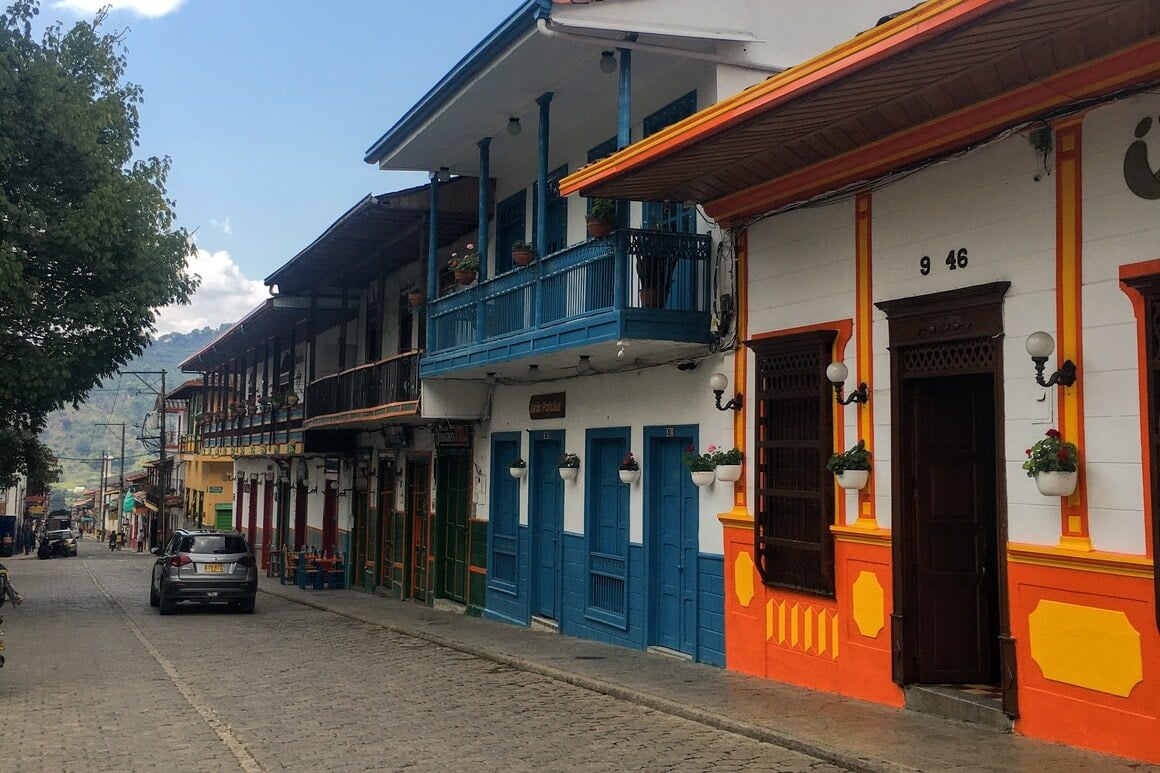
If you have some extra cash in your budget, you can visit The Galápagos Islands . But be warned – this is not a cheap endeavour, especially for excursions like diving (though it is AWESOME). So prepare yourself to shell out some cash!
Then there is the Amazon Basin of Ecuador. The Amazon region is what helps make Ecuador one of the most biologically diverse places on earth. The Amazon is best explored by boat with a local guide and is bound to be the adventure of a lifetime!
What to Know Before Visiting Ecuador
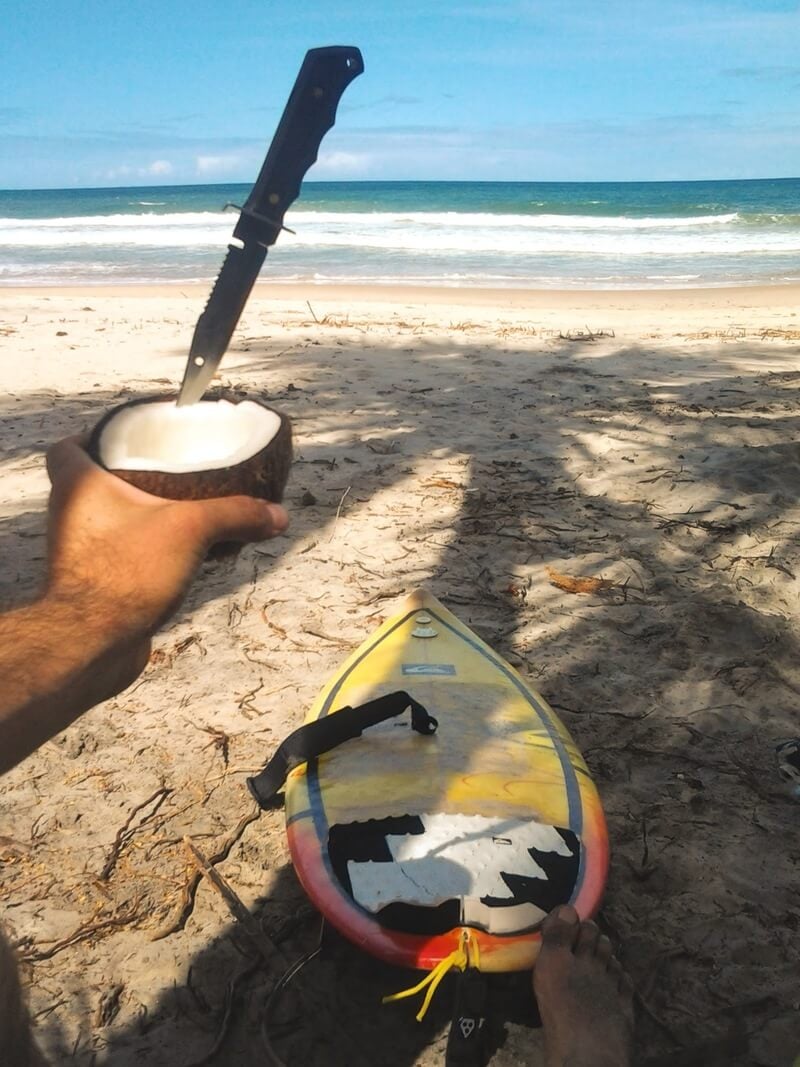
- Don’t miss out on… exploring the highlands and Cotopaxi National Park. Easily accessed from Quito and totally epic.
- You know what’s overrated … Montañita. It’s not all it use to be and is mostly catered to foreigners who want to get wasted and high. If you want real Ecuadorian culture, there are better places nearby.
- The coolest hostel is… Casa del Sol . Relaxed vibe at a few steps from the beach. Close enough to go party and far enough to have a good sleep. THE place for yoga and Surf.
- The best food is found in… the small almuerzo (lunch) cafes found across the country.
Backpacking Peru
Ah Peru. Backpacking Peru is the essence of travelling in South America. Though tourism has spiked in Peru in recent years, there is still plenty of magic to be found here.
The cost of backpacking Peru is a little higher than you might expect. Expect to pay between $30-40 USD a day whilst travelling here. (But more about the cost of backpacking South America later.)
Peru has a super long coastline dotted with prime surf beaches and scuba diving sites. In the Andes lies a whole other form of beauty.
I mean, who isn’t aware of Machu Picchu and hiking the Inca Trail ? Besides the obvious, there is much, much more to the Peruvian Andes than Machu Picchu. Although, you still have to go there!
Peru has some truly fascinating colonial cities as well, including Cuenca and Cuzco, which is the gateway city to Machu Picchu. The off-the-beaten-path potential in Peru is enormous.
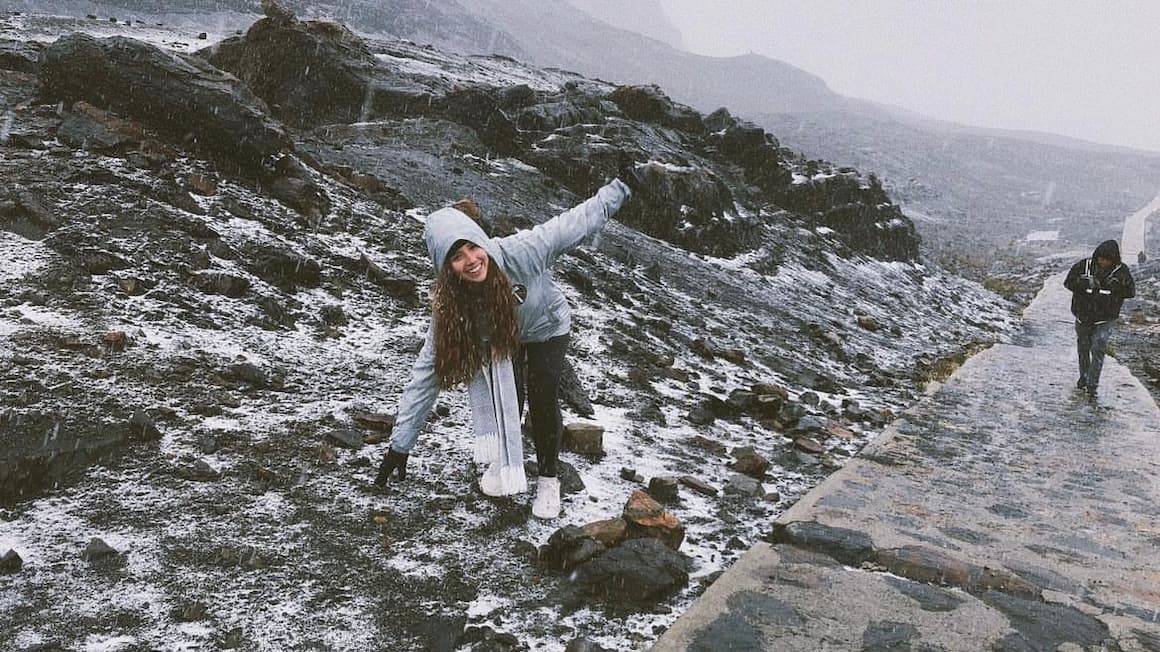
Check out the Rainbow Mountains to see nature at its most colourful. Hike the majestic Cordillera Huayhuash . Explore Colca Canyon and sleep out under a billion stars.
If you want a truly magical experience, there are many eco-lodges in Peru that are nestled in the best nature spots, from the Amazon jungle to the Andes mountain range.
Wherever you decide to travel in Peru, be sure that it will be a highlight of your South America backpacking adventure.
What to Know Before Visiting Peru
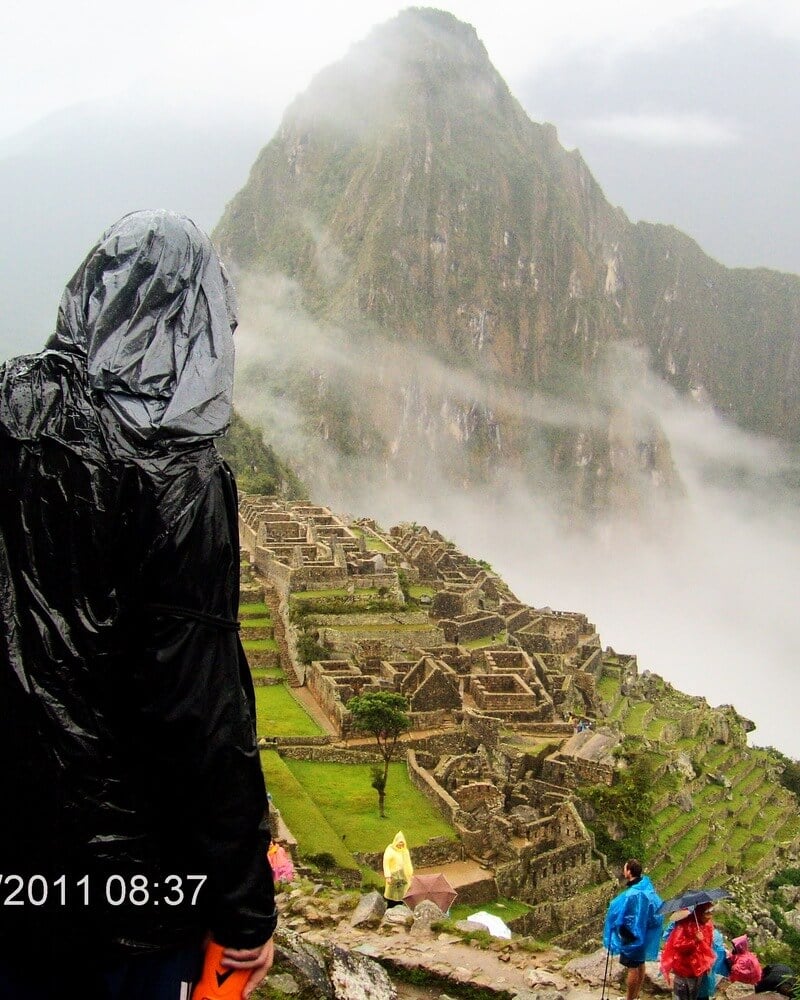
- Don’t miss out on… a motorcycle journey through the Sacred Valley outside Cuzco. It’s definitely worth staying in Cuzco a little longer for this.
- You know what’s overrated… the Inca Trail. Go for the less-trod Salkantay Trek to Machu Picchu instead.
- The coolest hostel is… Banana’s Adventure Hostel . In an unreal location (an oasis in a desert) this is a sociable and relaxed vibes hostel. With a great rooftop plus a lovely garden with hammocks, and an outdoor pool.
- The best food is found in… Lima. This city is full of cafes, local lunch spots, and street food vendors. The best are in Barranco and Miraflores. Pig out on ceviche !
Backpacking Bolivia
Backpacking in Bolivia offers up a glimpse of what South America was like 30 years ago. It’s a country looking to the future in many ways whilst still having one foot firmly rooted in the tradition of the past.
Expect super friendly locals, dramatic desert and mountain landscapes, and the kind of low prices which make the dirtbag within us very happy. You could easily get by on $20-25 a day here, and even less by roughing it a bit.
Bolivia is home to plenty of adrenaline-pumping activities including the Road of Death , which, in essence, is a road down through the mountains in which people ride bicycles to the bottom at top speed. The ride goes on for at least 30 kilometres and it is straight down. Can you guess why it’s called the Road of Death yet?
Aside from the high-risk adventure activities, Bolivia is safe for the most part as well.
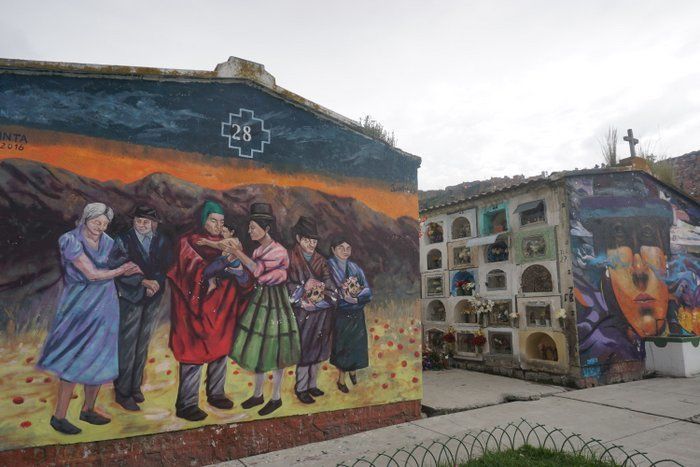
World-class trekking is abundant in the Bolivian Andes. If you love to hike, all the more reason to visit Bolivia. Bring along a good sleeping bag as temperatures can plummet at night.
La Paz has the best hostels (particularly for partiers) and is a cool city to base yourself in. Lake Titicaca is breathtaking, however, it has become far too touristy – I personally can’t deal with that many people taking selfies. I don’t blame the locals as they need to make a living. Just the way it has been done is unfortunate.
The Salt Flats are also cool AF. Okay, admittedly it’s pretty touristy too, but it’s still worth a visit.
What to Know Before Visiting Bolivia
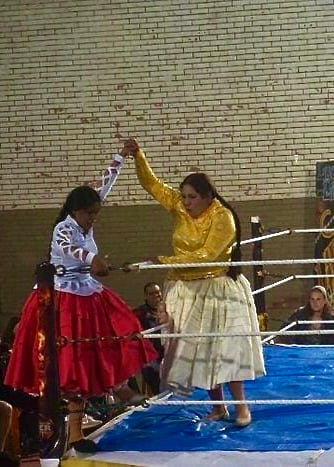
- Don’t miss out on… the Salar de Uyuni. Yes, everyone who comes to Bolivia does this and, yes, it’s touristy. Regardless, it’s still in-fuckin-credible.
- Keep an eye out for… the altitude. Some people fly directly to La Paz from sea level and get sick almost immediately. At 3640 meters, La Paz is the highest major city in the world.
- The coolest hostel is… Wild Rover La Paz . A dynamic and festive hostel. The perfect place to start your Bolivian experience connecting with other travellers. Great location in the central area.
- The best food is found in… La Paz. This is the epicenter of Bolivia’s newly emerging food culture.
Backpacking Chile
There are no half measures while Backpacking Chile. From trekking through gorgeous glacial national parks to exploring the martian bone-dry Atacama desert , you’re all in for one hell of an experience.
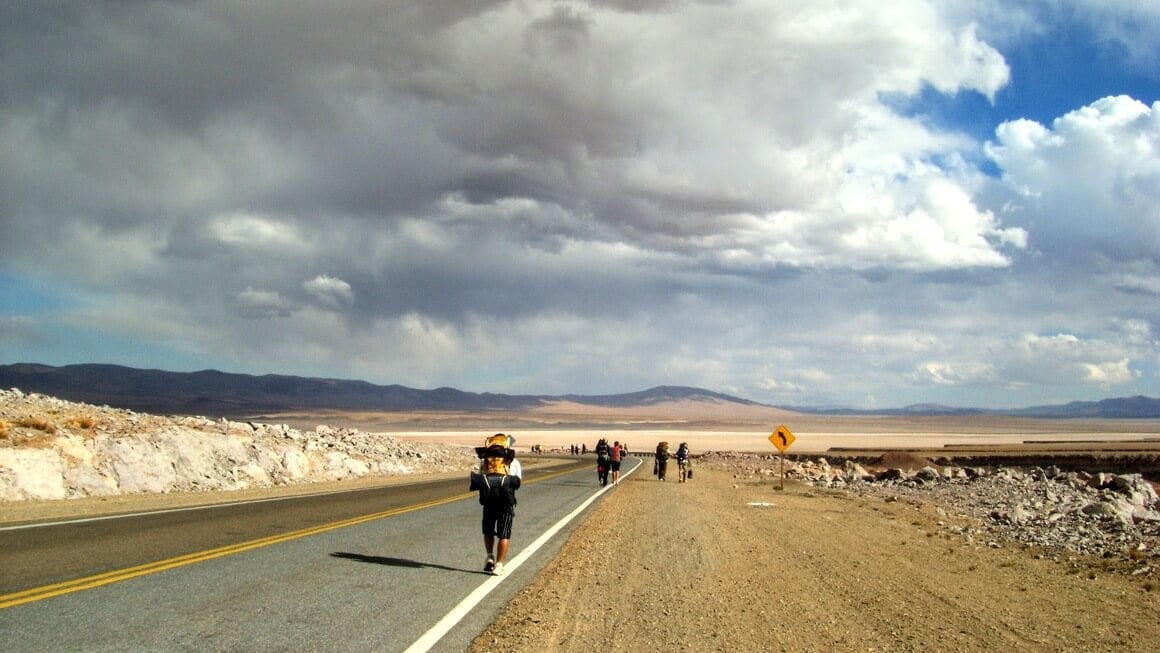
There are 36 National Parks in Chile ; all of them are beautiful and unique in their own way. Chile is also home to Easter Island , one of the most mysterious places on the planet.
Like Argentina, Chilean Patagonia is a paradise for trekkers and adventure types – though it does take some effort to reach the places you want to go trekking in. That said, the journey is well worth it; experiencing some of the planets last truly wild places is an indescribable feeling that you can only understand by doing it!
Most backpackers will start their backpacking journey in Santiago. But you can come to Chile from one of its borders in the South (as I did).
Oh yeah, one more thing: Chilean wine is cheap and it is damn good! Do you need more reasons?
What to Know Before Visiting Chile
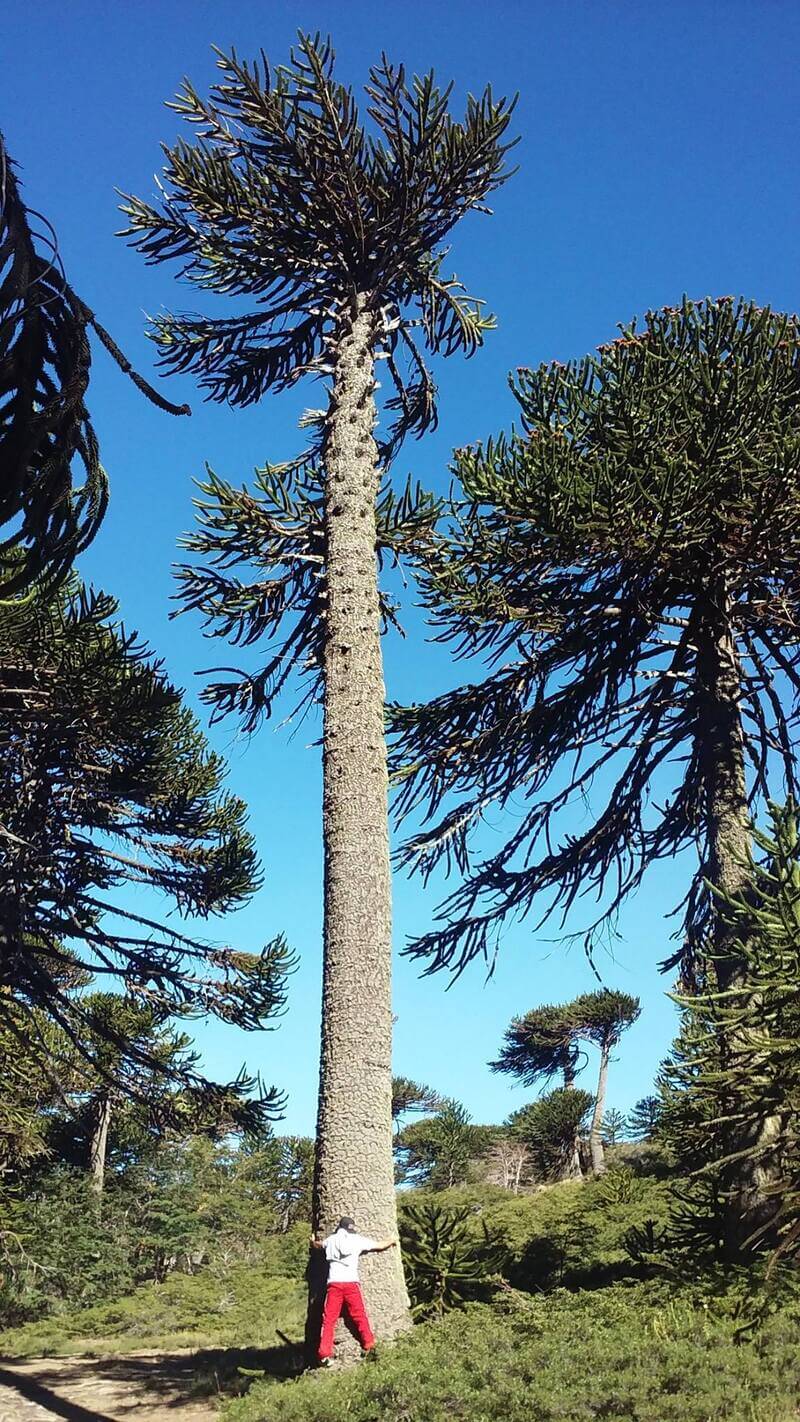
- Don’t miss out on… Patagonia, and not just the usual spots. Chilean Patagonia is vastly unexplored, especially the fjords. Look out for whales, dolphins, penguins, and elephant seals.
- Keep an eye out for… fire bans in Torres del Paine. A lot of nature has been threatened because of dickhead backpackers using gas burners, despite warnings.
- The coolest hostel is… MaPatagonia Hostel . Near a beautiful lake, this place has what you need. Kitchen facilities, a nice big garden, some cats, and a jacuzzi! There is also a fireplace for those cold nights.
- The best food is found in… Santiago. Staying in Santiago will unlock the most culinary options, including the cheap street food stalls.
Backpacking Argentina
Viva Argentina!
Backpacking Argentina is one for the ages. Welcome to the land of wine, excessive meat, football, tango, incredibly passionate people, and the final frontier – Patagonia.
Argentina is an immense country with very distinct regions. Eat to your heart’s content, party harder than you ever have before, and fall deeply in love.
You’ll probably land in Buenos Aires , arguably the cultural capital of all of South America.
Unquestionably, you’re going to find incredible hostels in Buenos Aires and reasons to stay. But don’t stay too long!
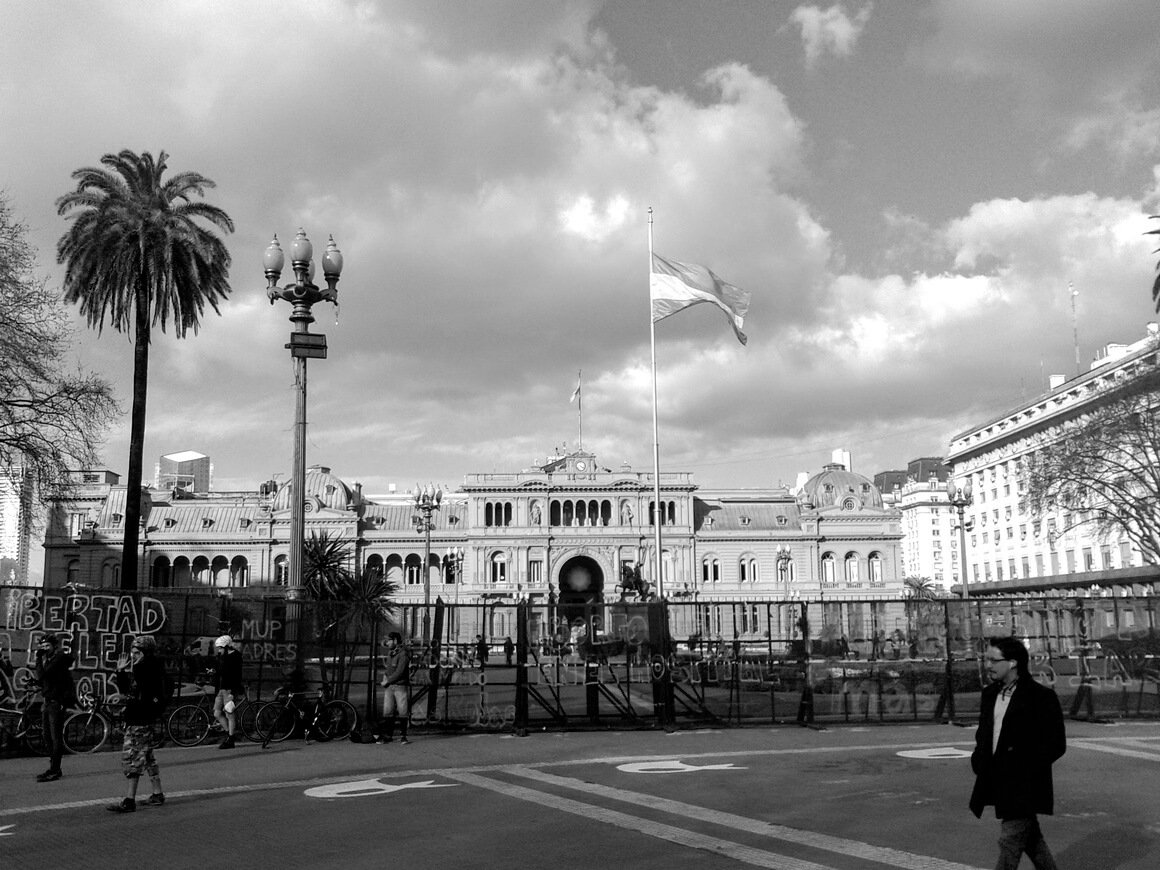
Rosario and Cordoba are cities like Buenos Aires but, in my opinion, better. They’re a perfect place to head to if you want to steer clear of the heavily populated capital. Mendoza is the wine region home to the “ best wine in the world ” (according to Argentinos).
Further south lies Patagonia : one of my favourite places on Earth, and home to many Argentinian National Parks . Patagonia is a truly expansive, desolate wilderness area where the weather is harsh and civilization is few and far between.
Trek mountains and glaciers, or sea kayak around them,. There, you could go days without seeing many (if any) backpackers! Now THAT’S the dream.
Staying at an Argentine mountain hut (refugio) is a wonderful experience not to be missed. Few who travel to Argentina manage to make it as far as Tierra del Fuego (the Land of Fire). Visit one of the most dramatic places in Argentina with its long summer days and epic arctic landscapes.
Speaking of the arctic, you can arrange trips to Antarctica from Ushuaia ! This would be the adventure of a lifetime but it’s by no means cheap.
What to Know Before Visiting Argentina

- Don’t miss out on… El Chaltén, which is the base for seeing some of the most dramatic peaks on Earth: Cerro Torre and Fitz Roy.
- You know what’s overrated… La Boca in Buenos Aires. These much-hyped multi-coloured houses are pretty rundown and actually quite dangerous, I strongly suggest you avoid it. The whole area feels like a tourist trap. There are much better things to do in Buenos Aires .
- The coolest hostel is… America del Sur Hostel (El Calafate). Cozy, super social, and with an insane view of the lake, the town, and beautiful sunsets. Great place to chill, and work (if you need to).
- The best food is found in… your neighbour’s personal asado . Nothing beats grilling grade-A Argentinian beef with some locals.
- The official exchange rate is NOT THE EXCHANGE RATE . Because of the fluctating exchange rate, many of the locals withdraw their cash by using what is referred to as a “blue dollar rate” from Western Union. This way gives you 50% more pesos than withdrawing pesos from an ATM or exchanging currency.
Backpacking Uruguay
Not many travellers end up backpacking in Uruguay. There are a few reasons why:
- It’s small
- It’s out of the way
- There’s not a ton to do
All of the above are true to some extent: Uruguay is not overflowing with adventurous activities or jaw-dropping sights. But let me tell you, they have some of the best quality of living in South America.
One of the perks about Uruguay is you don’t HAVE to do anything here. People are friendly and, compared to some chaos you find in other areas of the continent, it’s pretty chill. The beautiful coast is the perfect place to get away from the usual backpacking South America route and to avoid traveller’s burnout .
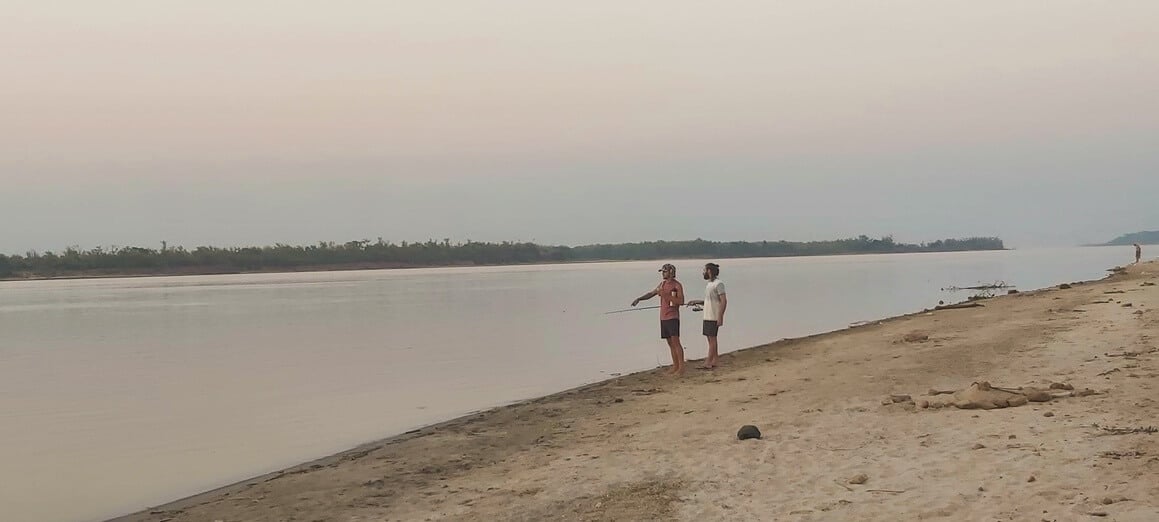
Outside of Montevideo , there are nice beach towns worth crashing at; Punta del Diablo is the quintessential lazy surfer town. Punta del Este is fun in the summer if you like partying. Colonia del Sacramento is an old colonial outpost and UNESCO heritage – although it is admittedly more of a day trip rather than a base.
Oh but here’s the kicker: weed is legalised. Yes, Uruguay is famous for allowing the smoking of the devil’s lettuce. And the quality of it is surprisingly good.
Lots of locals keep a weed garden on their balconies. Perhaps your hostel in Montevideo will have one?
Head to Uruguay if you want to chill out and do your own thing. It’s easy to travel to Brazil and Argentina from there too.
What to Know Before Visiting Uruguay
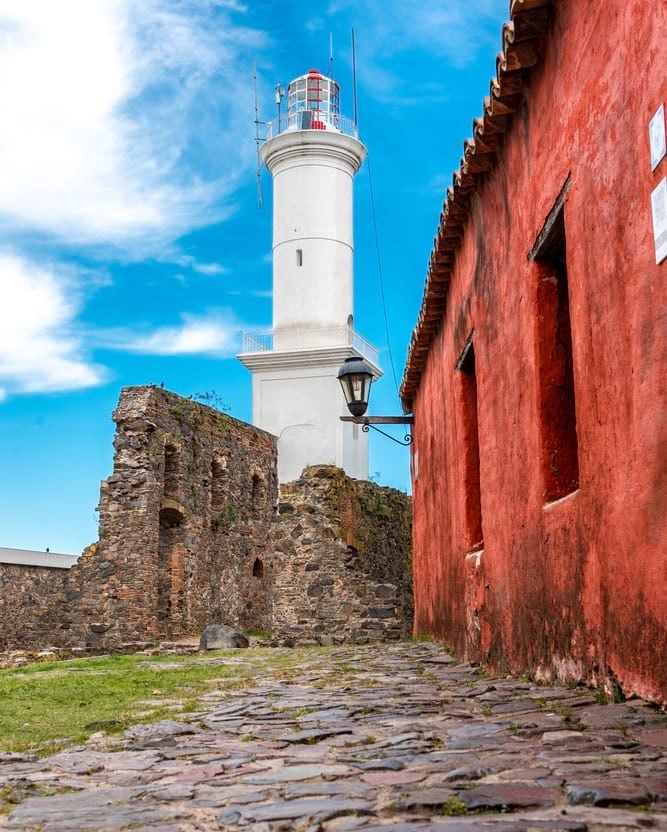
- Don’t miss out on… Punta del Diablo. This is laid-back surfer town evades most backpackers. It is arguably one of the best beach towns in South America.
- You know what’s overrated… Punta del Este. This place literally exists for the sake of Argentinians on holiday. In the off-season, it’s empty.
- The coolest hostel is… La Brújula Hostel . It’s near the beach, eco-friendly, has a family vibe, and is great to meet new people. This is a gem next to the sea.
- The best food is found in… Montevideo. Can’t beat a giant chivito after you’ve got the munchies!
Backpacking Venezuela
Venezuela is a truly incredible country. With towering mountains, steaming forests, endless beaches , and just enough danger to keep you on your toes, this country is every budding adventurer’s dream destination.
A Disclaimer on Visiting Venezuela
Unfortunately, due to the political situation in Venezuela , The Broke Backpacker absolutely does not condone visiting the country right now . It is simply not safe and it would be irresponsible to even attempt to Venezuela at present.
Unless you somehow have absolutely solid and trustworthy contacts on the ground , Venezuela is not the place to travel for the foreseeable future. We do not have any contacts to give out.
That being said, there are many team members at The Broke Backpacker that hold a special place for Venezuela in their hearts. For this reason, we are leaving this information available to you, our readers, as an homage to a country we love. We can’t wait for the day that it will be safe to visit again.
Backpacking Venezuela has a truly terrible reputation. Don’t get me wrong, travelling Venezuela has been dangerous in recent years: this is a country where you need to keep both eyes on your gear, watch who you’re with, and be on the lookout for iffy situations before they get the chance to rear their ugly head.
Backpacking in Venezuela is, in my opinion, one of the last great adventures out there. Plus it’s one of the cheapest countries in the world to backpack in.
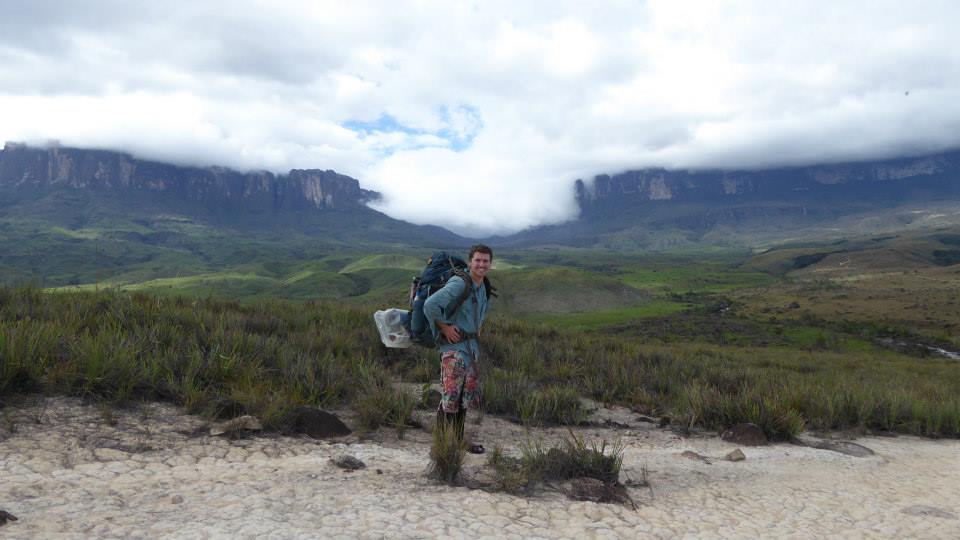
Venezuela is a mysterious country. It attracts adventurers looking for a raw adventure.
It’s a country yet to be polluted by heavy tourism with incredible landscapes of mountains, forests, lakes, and caves. It is a kind of Shangri-La for adventurers and extreme sports lovers.
A South American backpacking trip to Venezuela is getting into the wild. To feel like the old explorers, Venezuela will not disappoint you. But backpacking Venezuela is not for the faint-hearted: this is a veteran explorer country.
What to Know Before Visiting Venezuela
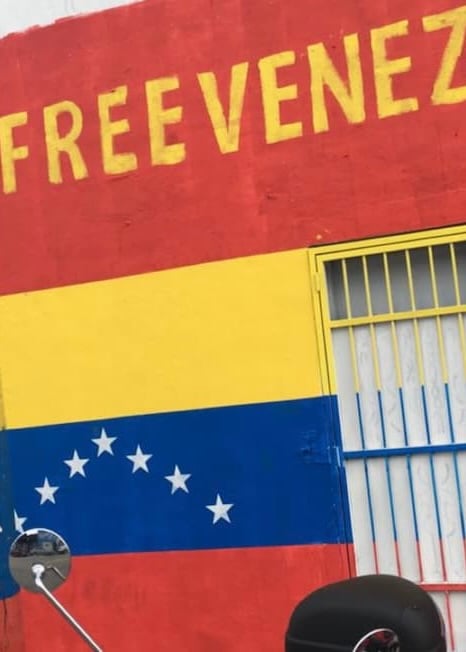
- Don’t miss out on… Mt. Roraima – the highest tabletop mountain in the world; an incredible place to explore. Sometimes you feel like you’re walking on an island in the sky.
- Keep an eye out for… the seasons when visiting Angel Falls. When it’s dry, the falls are actually quite weak (it’s more like a trickle).
- The coolest hostel is… El Sofá Caracas . Safe, quiet, cozy place in the big city. You’ll feel at home instantly. And they have a unique boat pool to chill when it gets too hot.
- The best food is found in… the buffet places where you pay by the weight of your plate. A little goes a long way here and you won’t be disappointed!
Getting Off the Beaten Path in South America
South America is totally full of wild places, tiny villages, far-flung settlements, lonesome valleys, sparsely inhabited jungle… Point being, there are plenty of great places to get off the beaten path . With a little motivation, you may well find yourself cutting your own path and writing your own backpacking destiny, one adventure at a time.
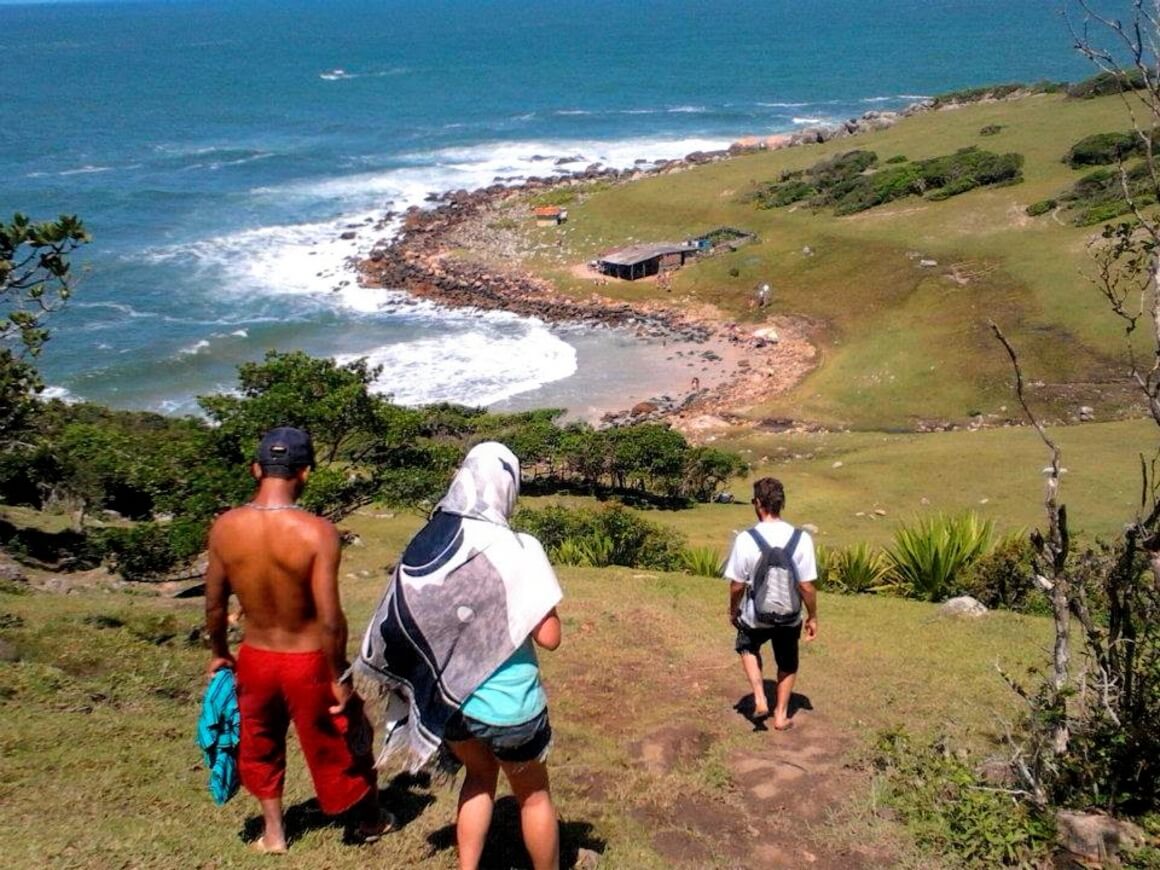
Explore the national park systems of South America as much as you can. Investigate the little interesting-looking food stalls where all the locals are queuing up.
Don’t rely on a guidebook of popular places. In South America, those tiny towns in the middle of nowhere are where the real culture is, and the real adventures. All you need is a bus ticket…

We’ve tested countless backpacks over the years, but there’s one that has always been the best and remains the best buy for adventurers: the broke backpacker-approved Osprey Aether and Ariel series.
Want more deetz on why these packs are so damn perfect? Then read our comprehensive review for the inside scoop!
You can make your South America backpacking route totally unique. No matter what things you get up to, they’re going to leave a big print on your heart. But here are some things I definitely recommend considering planning for your itinerary .
1. Explore Patagonia
Patagonia is still one of the last untouched wildernesses on the planet. Not everyone gets to experience this in their lifetime! In addition to the usual superlative locations, like Cerro Torre and Torres del Paine, there are heaps to discover off-trail.
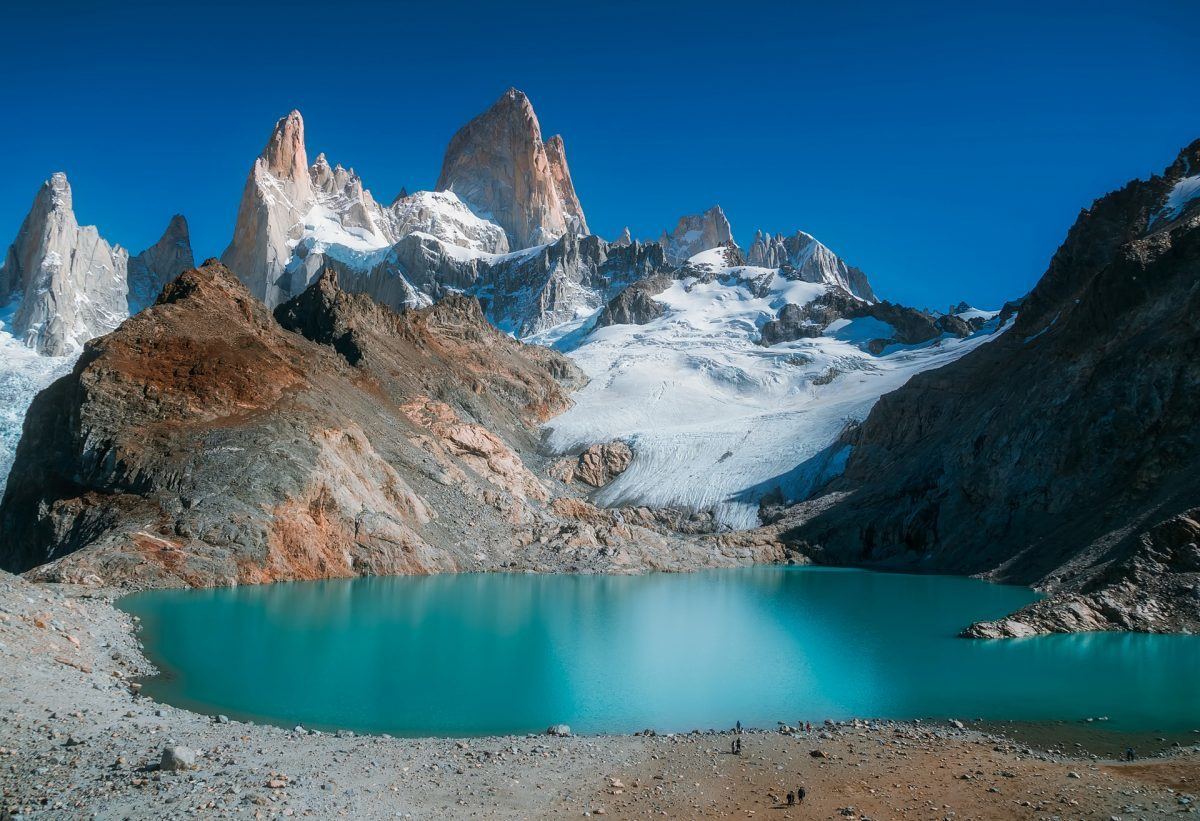
2. Party hard at Carnival
It’s the biggest party on the planet! Grab yo’ body paint, yo’ finest feathers, whatever else you can get your hands on, and join the festivities!
You won’t ever forget the time you spent Carnival in South America. The carnivals in Bahia, Rio, and Barranquilla are particularly good.
3. Explore the Salts Flats of Uyuni
It’s one of the most unique places on the planet and a highlight of any South America backpacking trip. Get ready to be wowed by this alien landscape.
I know broke backpackers usually cringe hard at the idea of an organised tour (because I’m one of them) but the Salt Flats is one that’s really worth shelling out for.
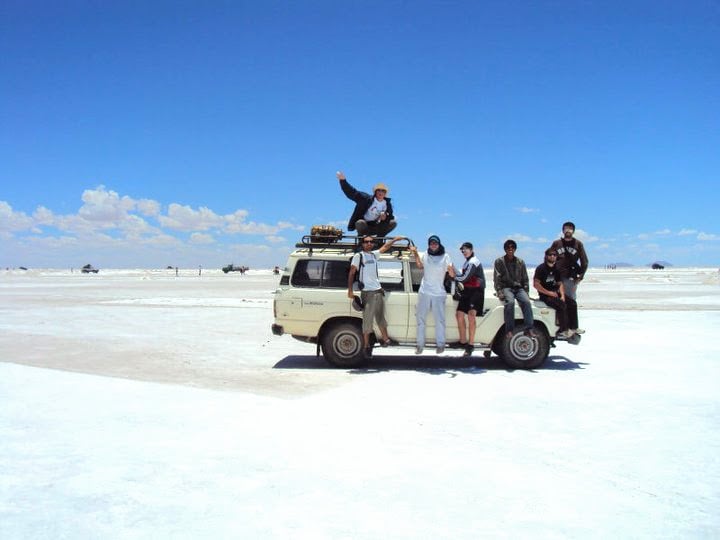
4. Find your own secret beaches
It wouldn’t be a proper backpacking South America itinerary without some beach time! Every kind of beach imaginable is found on the continent.
From tropical slices in Brazil to surfer’s paradises in Ecuador to even fjords in Chile, you won’t be lacking in choices. There are plenty of them secret spots that make those magical days. Take a beer, bring your mates, get busy.
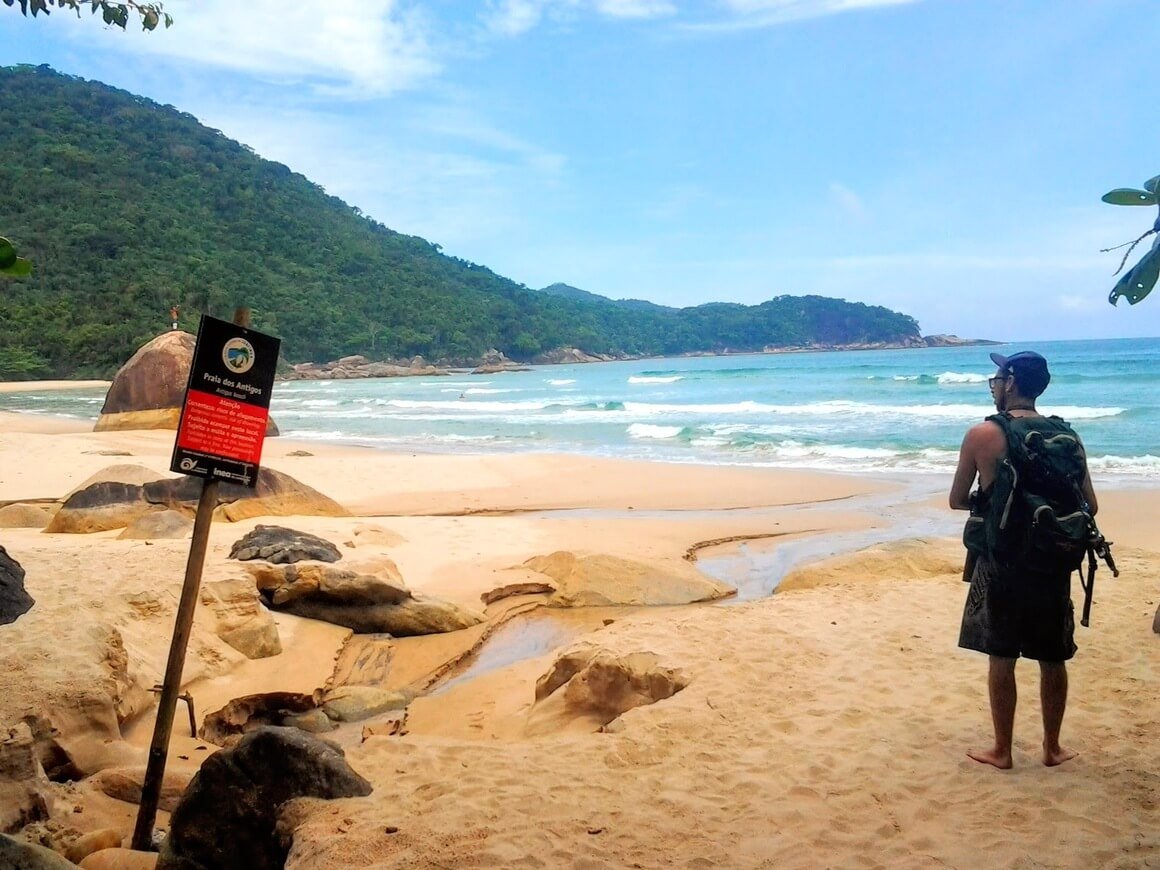
5. Check out Medellín
Medellín is one of the most popular cities to visit in South America right now. The choice between Medellín or Bogota has never been easier.
It’s fun, safe, comfortable, and (most impressively) completely different than it was before. Medellín has shed its violent past and is ready to host the next wave of backpackers.
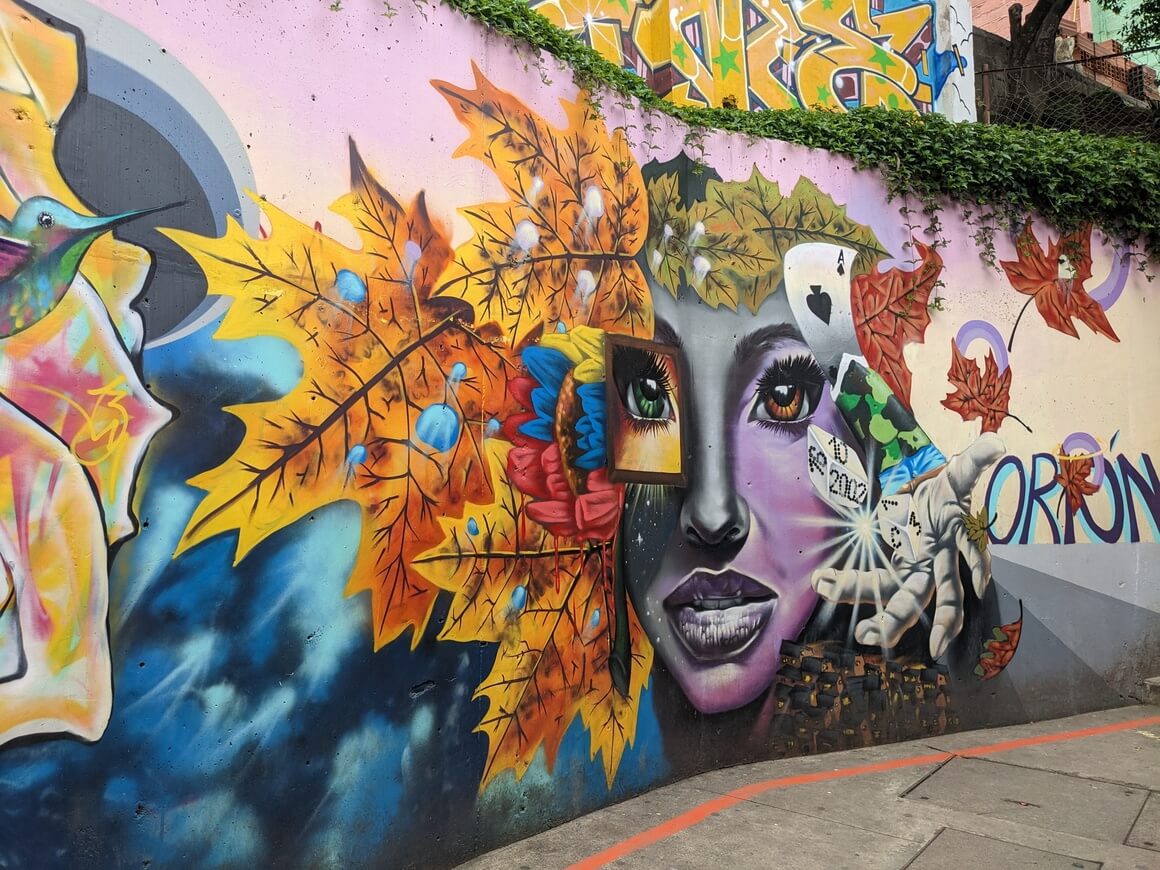
6. Visit Machu Picchu
I mean, you’re reading a backpacking South America guide: I know you already know about this one. It is the place that attracts most people to visit South America… but I’d be lying if I said it wasn’t worth visiting.
You can hike the Inca Trail like everyone else. But if you want to visit Machu Picchu in an alternative way, try one of the other Inca trails like Salkantay Trek.
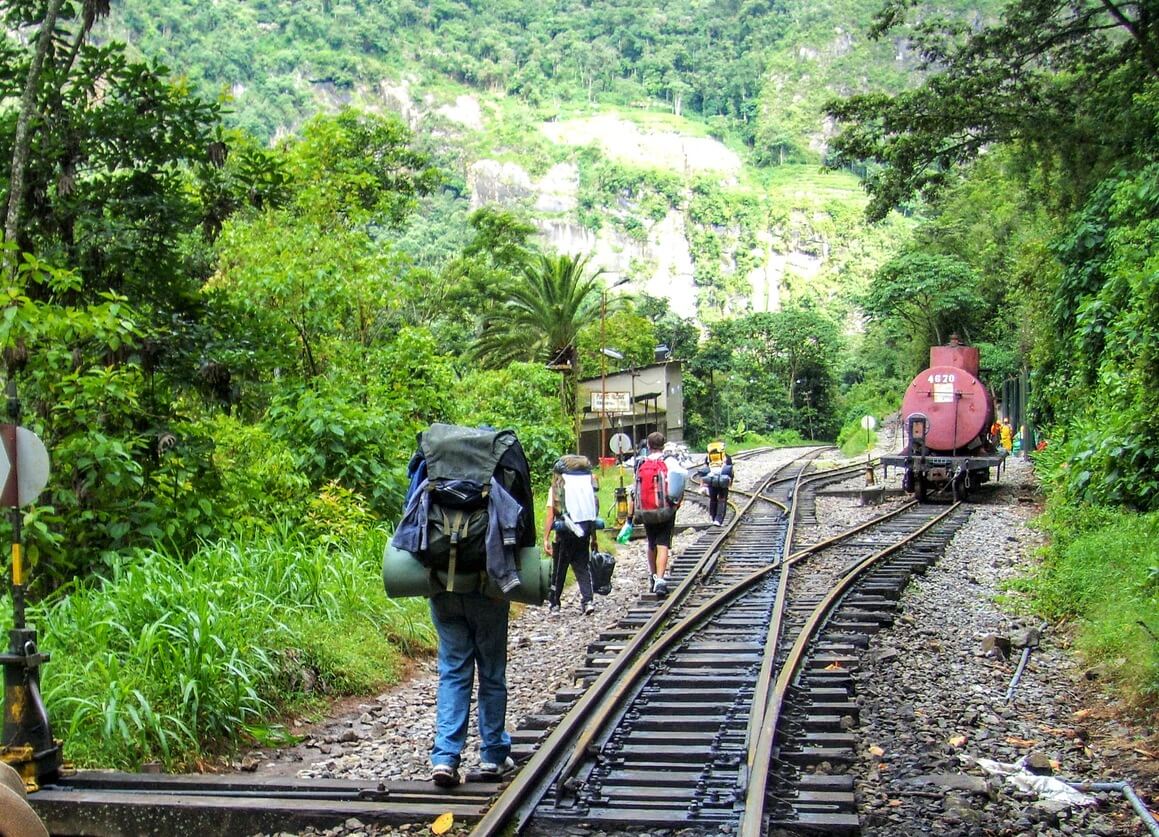
7. Hike in the Andes
The Andes are one of the greatest mountain chains in the world, known mostly for hosting the aforementioned Machu Picchu and the gargantuan Aconcagua. But there is more to these mountains than just these popular destinations: the highlands of Ecuador, Cordillera Huayhush in Peru, the Cordillera Real in Bolivia are all stunning. Even Colombia gets a slice of the pie at Cocuy National Park.
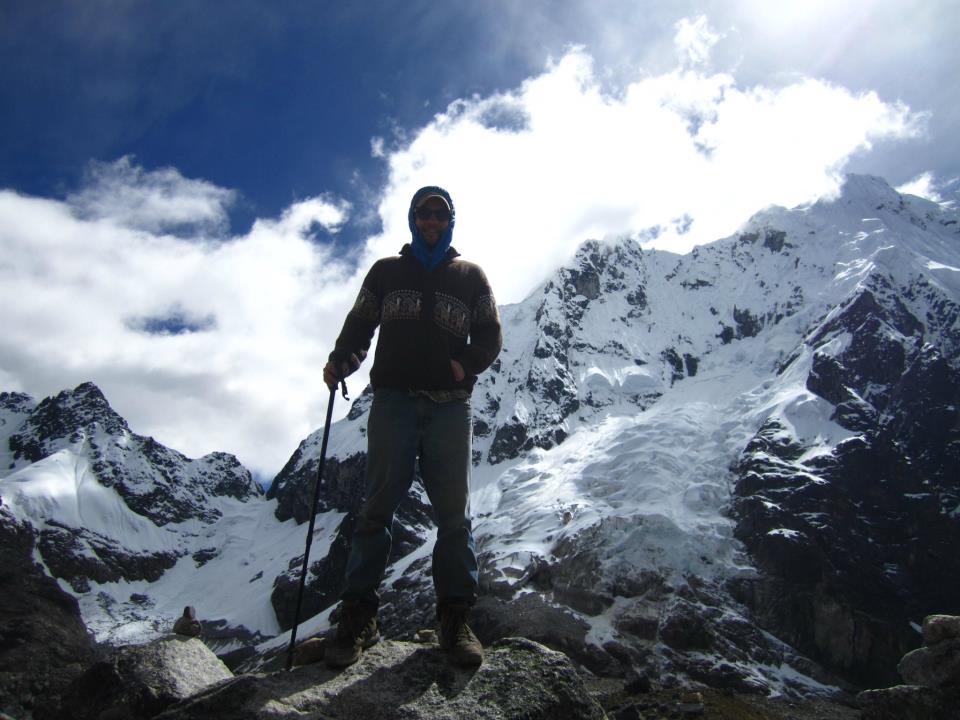
8. A South American
Hey, most backpackers will vouch for love and sex on the road being something memorable to take part in…
They love, and they love passionately. And the sex… well, maybe you’ll find out.
9. Get “stuck” somewhere
South America is full of sticky places AKA places where you get stuck for months on end. Florianópolis, La Paz, Medellín, Mancora… All of these locations start off as a simple stop on your South America backpacking route but turn into temporary homes.
Don’t fight it! Find your sticky place and stay awhile.

Wanna know how to pack like a pro? Well for a start you need the right gear….
These are packing cubes for the globetrotters and compression sacks for the real adventurers – these babies are a traveller’s best kept secret. They organise yo’ packing and minimise volume too so you can pack MORE.
Or, y’know… you can stick to just chucking it all in your backpack…
South America has a wide range of budget accommodation options for backpackers. Airbnbs are fantastic for private rooms if you’re travelling as a couple or as a group.
For solo travellers, when you are not passing the night from the comfort of your tent in the Andes or with a Couchsurfing host , you’ll likely be booking hostels.
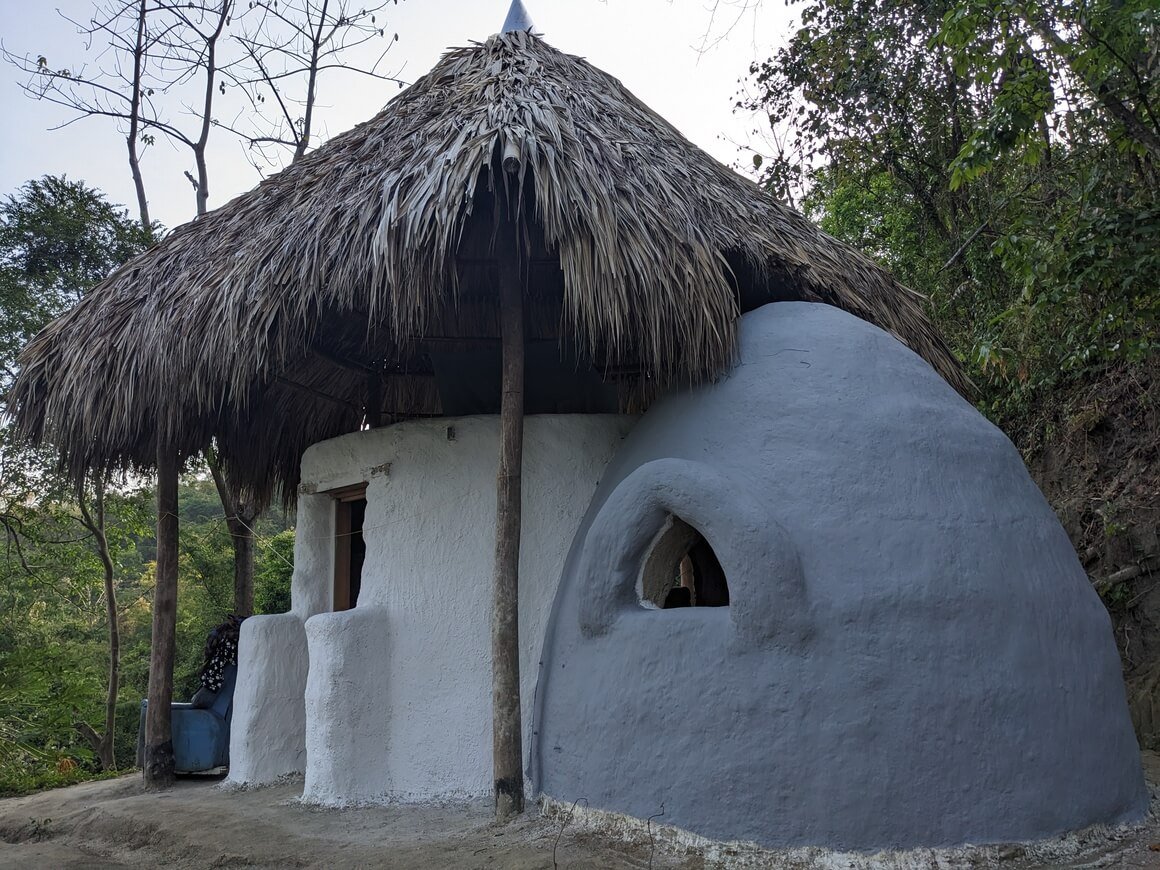
Whether you just need a place to lay your head or a spot to meet fellow backpackers like yourself, hostel life is clearly where it’s at… In fact, I love South American hostels, even travelling with my partner, you get perks in a hostel that you don’t get in a hotel or Airbnb.
I’ve had some of the best nights of my life in them and met some of the best people in my life. The South American countries are home to some of the best hostels in the world .
- Best Hostels in Sao Paulo
- Best Hostels in Cusco
- Best Hostels in Cartagena
- Best Hostels in Mendoza
- Best Hostels in Lima
- Best Hostels in Medellin
- Best Hostels in Quito
- Best Hostels in Salvador de Bahia
- Best Hostels in Santiago
- Best Hostels in Valparaiso
Insider tip: If you want to see all your hostel options to visitbackp South America, Booking.com is the perfect one-stop-shop to book hostels. You can even filter your personal travel needs to find the perfect place for you.
It is the common belief that backpacking in South America is dirt cheap. In some places this is true, but it doesn’t go for the entire continent.
But fear not! Travelling South America on a budget can definitely be done.
Due to the nature of Patagonia being one of the most remote areas on earth, expect higher travel costs than the rest of South America. Peru also takes some navigating in order to travel on a tight budget.
Brazil is one of the most expensive countries in South America. The cost of living in Brazil is higher and it is notorious for jacking up accommodation prices during the high season.
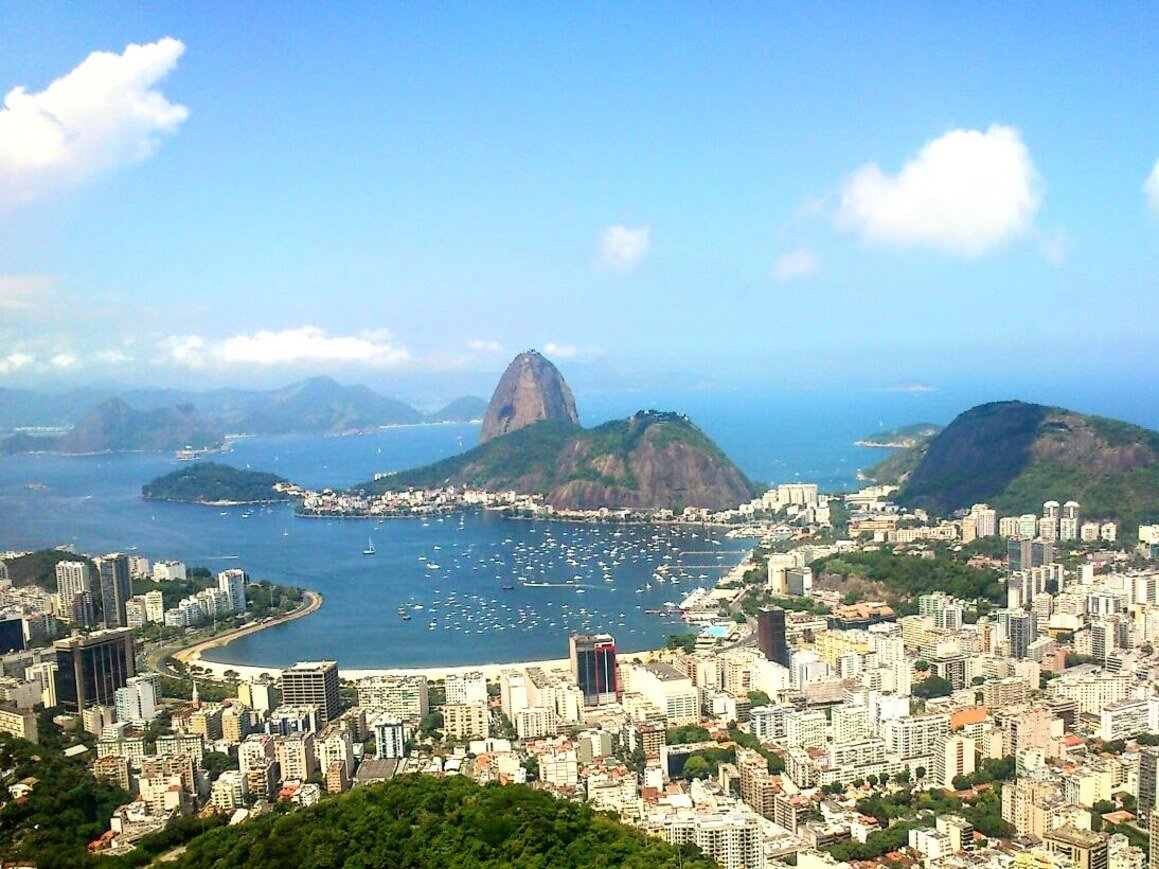
With a few travel tips up your sleeve, you will save a ton of money and have the time of your life. Bring your haggle game whilst backpacking through Latin America to ensure you get the best possible price for things, including accommodation. South Americans love smooth talkers so keep it playful but don’t get too cheeky.
Taking long-distance buses, buying beer and drugs, paying entrance fees to national parks… these things add up fast. But sometimes you have to shell out the dough in order to do the things you want. Overnight buses are a good way to save some money.
Remember to always leave a little extra wiggle room in your budget so you can go scuba diving or go on a trek that you have been dreaming about!
Daily Budgets for South America
Here is a breakdown of what you can expect to pay on a daily basis on a backpacking South America trip…
Travel Tips for Broke Backpackers in South America
Hey, all those dollaridoodles add up to more fun times. So saving whatever you can on your journey means you can be on the journey… for longer. So here are a few budget travel tips for South America :
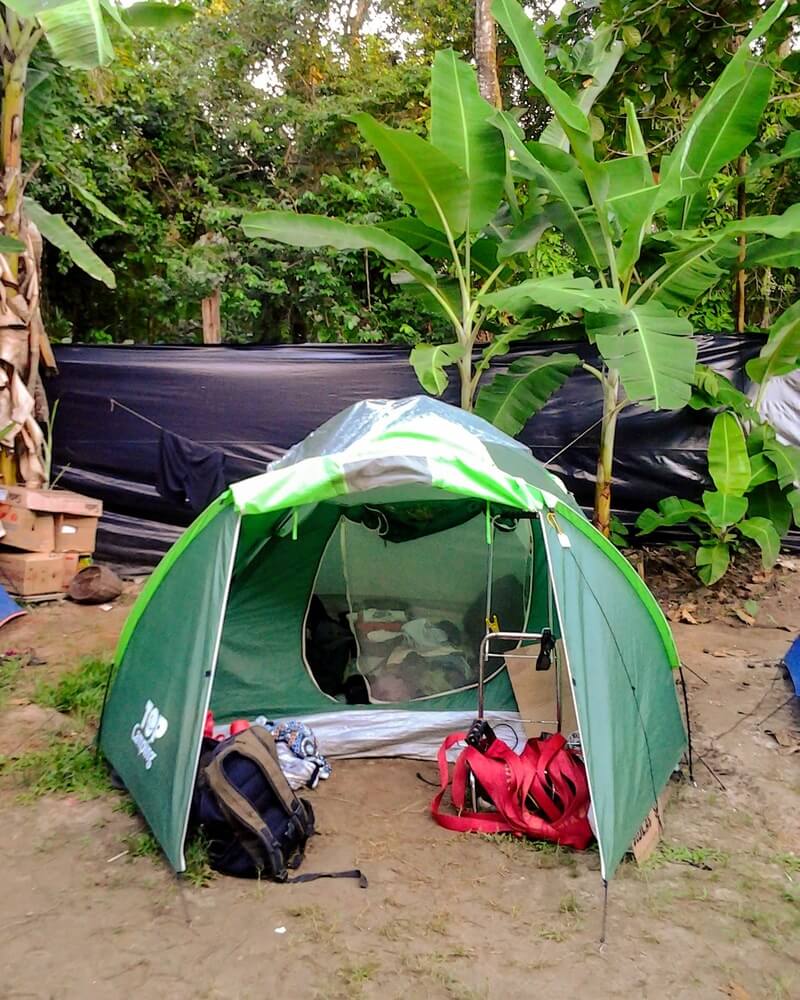
- Camp : With plenty of untouched beaches, forests, stunning countryside, and far-flung jungle, South America is a great place to carry a good backpacking tent . Camping saves you money and can help you get off of the beaten path.
- Cook your own food: Travel with a portable backpacking stove and cook your own food to save some serious cash whilst backpacking across South America. If you plan to do some overnight hiking trips or camping on the beach, having a backpacking stove will be a great asset.
- Haggle: Haggle as much as you can. You can always get a better price for things, especially while in local markets. Learning Spanish will go a long way!
- Couchsurf: South Americans are awesome. Get to know some! Check out Couchsurfing to make some real friendships and see the real continent. When using Couchsurfing, be sure to send personalized messages to your potential host. A generic copy-and-paste message is much more likely to get turned down. Make yourself stand out.
- Hitchhike: Although some countries are friendlier than others, hitchhiking across South America is common practice, so you won’t struggle too much to find a ride. Speaking at least a little Spanish will go a long way though. You want to explain exactly what you’re doing and where you want to go.
Why Should You Travel to South America with a Water Bottle?
Plastic washes up on even the most pristine places… So do your part and keep the Big Blue beautiful!
You aren’t going to save the world overnight, but together we CAN make a difference. I hope you become more inspired to continue being a responsible traveller .
Plus, now you won’t be buying overpriced bottles of water either! Travel with a filtered water bottle instead and never waste a cent nor a turtle’s life again.

Drink water from ANYWHERE. The Grayl Geopress is the worlds leading filtered water bottle protecting you from all manner of waterborne nasties.
Single-use plastic bottles are a MASSIVE threat to marine life. Be a part of the solution and travel with a filter water bottle. Save money and the environment!
We’ve tested the Geopress rigorously from the icy heights of Pakistan to the tropical jungles of Bali, and can confirm: it’s the best water bottle you’ll ever buy!
You know by now that we are talking about an enormous amount of land with regards to the South American continent. Countries in South America near the Equator do not experience distinct seasons. As you start to head south you will find the seasons to be the opposite of what they are in the Northern Hemisphere i.e. winter in June.
Patagonia experiences bitterly cold and windy winters. I do not advise travelling there during the winter unless you are a serious mountaineer and have all the right gear.
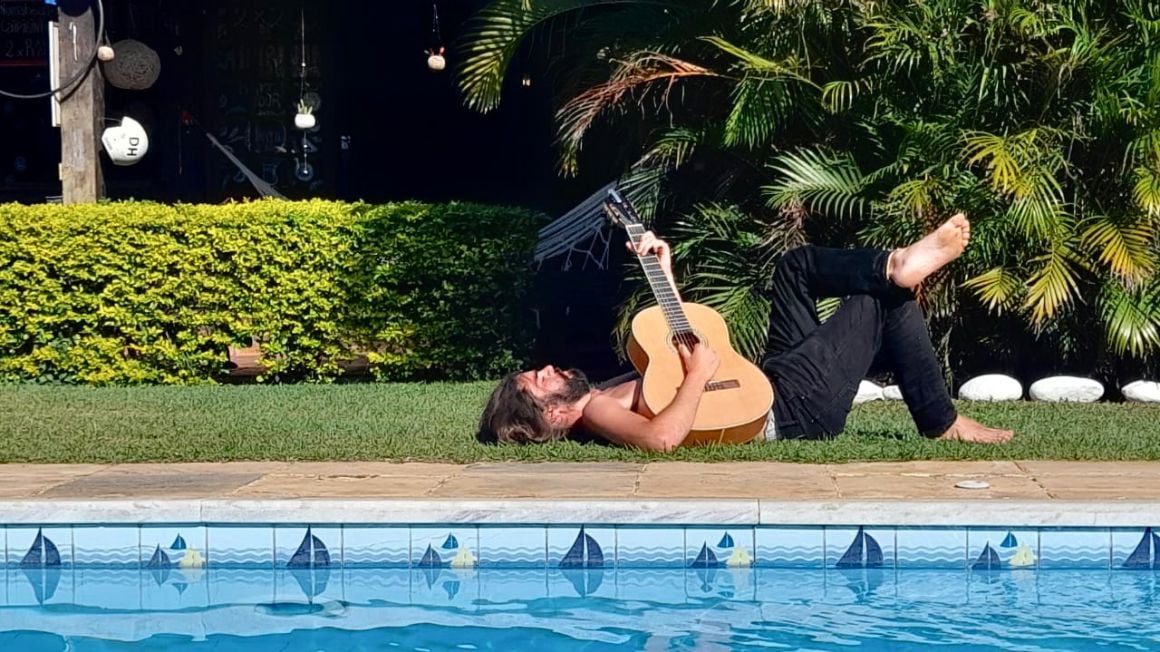
Dry season depends on the country. Generally, the cooler months from June to September are the driest in the coastal areas. In the Amazon – given that it is the world’s biggest rainforest – is wet pretty much all year. The Andes are the driest from April – November.
High season for all countries is, without a doubt, from December – February. This is due to holidays occurring over that time and it is also the time when many gringos and locals alike take their holidays. Backpacking in the low or shoulder seasons will definitely make for a cheaper trip, especially with regards to accommodation.
Best Time to Visit – Country Breakdown
Here are the best times to visit South America broken down by country!
Best Months to Travel: September – April
What’s the climate in Brazil like?
In the south, the hot, wet summer season runs from November – March. In the north, the rainy season is from April – August. In the Amazon, it rains pretty much all year.
If you want to visit during the festival season though, September-March is best.
Best Months to Travel: November – March
What’s the climate in Colombia like?
Generally speaking, travellers should visit Cartagena and the Caribbean coast between November and March when the weather is dry. The rest of the country is good year-round. Bogota, Cali, and Medellin are always pleasant weather-wise.
Best Months to Travel: March – May, September – November
What’s the climate in Ecuador and Peru like?
Lots and lots of micro-climates in the Ecuador Peru region. But there are some general trends:
- The highlands/Andes are dry from May – September. These are the best months for hiking and visiting Machu Picchu.
- The coast is warm and dry from December – May. This is the best time for the Galápagos.
- The Amazon is always wet and humid as shit.
- The south of Peru is much drier than the north, and Ecuador for that matter.
You’ll need to plan your trip carefully around what you want to see and do.
Best Months to Travel: May – October
What’s the climate in Bolivia like?
The winter season (May – October) is also its dry season, and the best time to visit Bolivia. This means that nights can be very cold, especially when you’re at higher altitudes. Although Bolivia is generally drier than its neighbours, it stills gets dumped on in the wet, summer season.
Best Months to Travel: March – April, October – November
What’s the climate in Chile like?
Summers in Chile are generally the high season. That being said, this may not be the best time to visit. Prices are at their highest, the Atacama Desert is a furnace, and the winds are VERY strong in Patagonia.
Like almost anywhere, the shoulder months (October – November & March – April) are better.
Best Months to Travel: October – April.
What’s the climate in Argentina and Uruguay like?
Summer for most of the country is from December – February. In the north, the summers can see rain and temperatures that soar to almost unbearable. In the south and Patagonia, summers are dry(ish) and pleasant.
The winters, obviously, are extremely cold in the south. Whereas the north generally has pretty mild winters.
What to Pack for South America
Travelling through South America is a lot easier if you have the right gear. A thorough backpacking South America packing list goes a long way – literally.
On every adventure, there are 6 things I never go travelling without:

Snoring dorm-mates can ruin your nights rest and seriously damage the hostel experience. This is why I always travel with a pack of decent ear plugs.

Hanging Laundry Bag
Trust us, this is an absolute game changer. Super compact, a hanging mesh laundry bag stops your dirty clothes from stinking, you don’t know how much you need one of these… so just get it, thank us later.

Sea To Summit Micro Towel
Hostel towels are scummy and take forever to dry. Microfibre towels dry quickly, are compact, lightweight, and can be used as a blanket or yoga mat if need be.

Monopoly Deal
Forget about Poker! Monopoly Deal is the single best travel card game that we have ever played. Works with 2-5 players and guarantees happy days.

Grayl Geopress Water Bottle
Always travel with a water bottle! They save you money and reduce your plastic footprint on our planet. The Grayl Geopress acts as a purifier AND temperature regulator. Boom!
South America IS a safe place to go backpacking. Is backpacking in South America safe all the time?
Hell no. But nowhere in the world is safe 100% of the time. Does that mean we let it stop us?
Hell no.
In recent years, security in South America is increasing. Using the common sense safety rules of backpacking is usually enough here.
The thing with South America is understanding your surroundings and self-awareness. Coordinating your safety in Rio de Janeiro is completely different than hiking the Inca Trail.
Robberies are rare and could happen to anyone – in any country. Sometimes people in desperate circumstances are forced to do bad things. They see a foreigner and they see a chance to temporarily relieve the stress of their situation.
Odds are, you should be just fine. If ever you run into a hold-up situation just give them what they want.
Your iPhone and wallet aren’t worth dying over, ever! But it’s worth hiding your money well just in case .
Political wobbles are pretty common. Due to the political situation in Venezuela right now, this is probably the most dangerous country in Latin America. I hate to say it but the situation is what it is.
In general, being out late, drunk, and/or alone is a recipe for trouble. Always take a taxi home at night, even in a group.
Do know which neighbourhoods you should avoid too, especially in major cities – even during the daytime. Ask the locals which these are. There’s no real reason to head into these areas anyway, but it’s worth noting so you don’t stumble into the wrong places.
- Is Peru Safe?
- Is Argentina Safe?
- Is Chile Safe?
- Is Brazil Safe?
Sex, Drugs, and Rock n’ Roll in South America
South Americans love to party! They start the party late and they don’t stop until the sun is way up.
Of course, Brazil is very famous for Carnival AKA the biggest party on the planet . But it’s a big deal in most South American countries – so you’ll find great parties everywhere.
The backpacker circuit is notoriously rowdy. Traveller hubs like Cusco, Buenos Aires, Montañita, Mancora, La Paz, and Medellín are legendary for their nightlife.
It is very easy to meet people, stay up all night, and fall in love with a sexy South American. Much of the continent is LGBTQ+ traveller friendly too!

Alcohol is freely available, freely consumed, and good quality too. I’m telling you, I’ve had beer in South America which puts Germany to shame.
South America is stoner-friendly too! Weed is legal or decriminalized for recreational use in many places – some countries are more relaxed than others. It’s best to ask the locals how it’s currently being handled where you are.
Cocaine is just about everywhere; particularly in Colombia, Peru, and Bolivia. But be aware, this isn’t the stuff you find back home – it’s much purer. One line is enough to keep you up all night.
To find drugs on the road, just ask a local to help you. Don’t go out alone looking to score in strange places and don’t give cops a reason to shake you down.
Ayahuasca retreats are gaining popularity as well. But remember, it is a ceremonial spiritual medicine of indigenous people. If you do want to try it, make sure you’re doing it with a real shaman, for real reasons; it’s not like acid and not a drug just to get mindless with.
Staying Healthy in South America
Travellers should be properly vaccinated before backpacking in South America. Consult a medical professional before travelling about which shots you should get.
You should have all the usual travel vaccinations before heading out: hepatitis A & B, typhoid, tetanus, etc. Rabies is also recommended particularly if you’re going to the rural areas or parts of the jungle. You don’t want to mess around with that one because it can be really nasty.
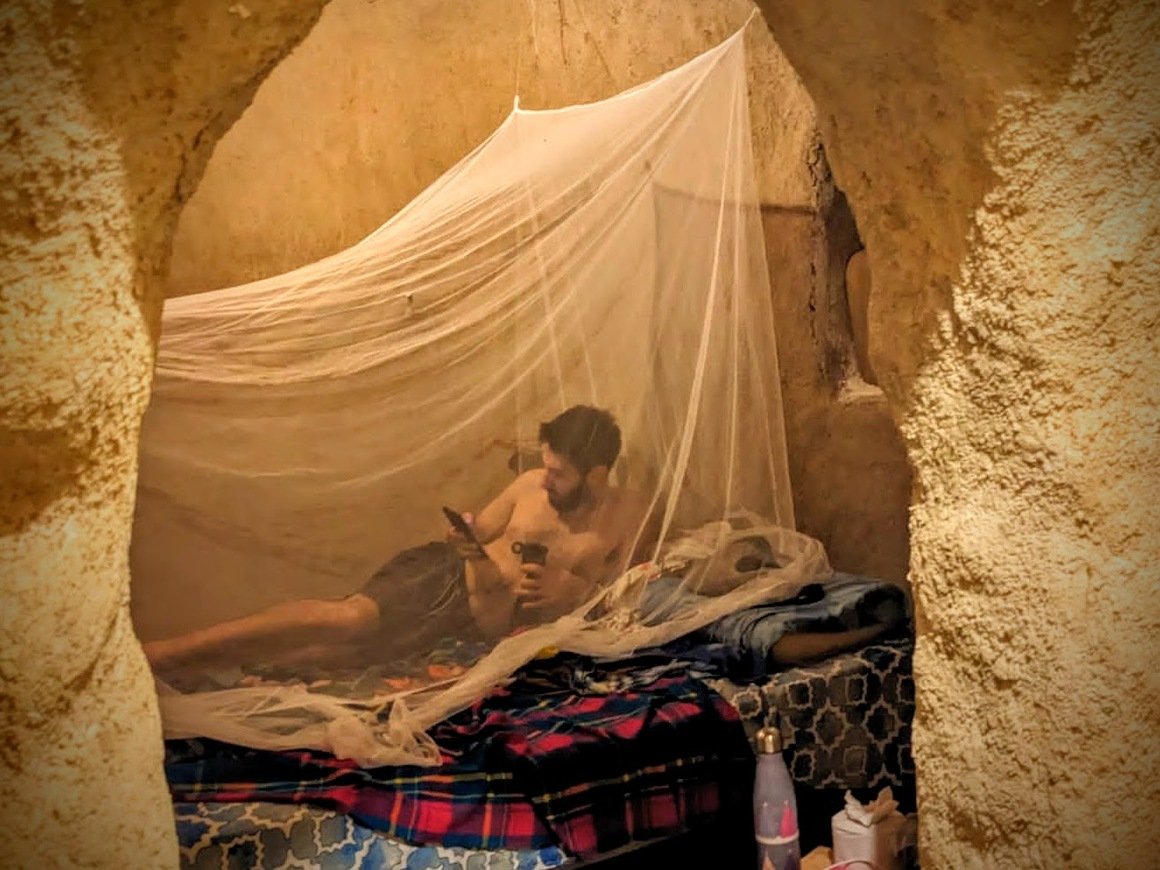
It is worth checking if you need the Yellow fever vaccine before entering some countries. In some places, it is only recommended.
It’s also worth noting that in most places in South America, the water isn’t fit for consumption. The best travel water bottles have a filter.
Getting Insured BEFORE Visiting South America
Travelling without insurance in South America is risky. I broke my back in Brazil and will be happy to tell you why GOOD travel insurance is so important.
So consider getting travel insurance sorted before you head off on an adventure. You don’t want to be struck with a big, unexpected bill, or, worse, to put your health at risk.
ALWAYS sort out your backpacker insurance before your trip. There’s plenty to choose from in that department, but a good place to start is Safety Wing .
They offer month-to-month payments, no lock-in contracts, and require absolutely no itineraries: that’s the exact kind of insurance long-term travellers and digital nomads need.

SafetyWing is cheap, easy, and admin-free: just sign up lickety-split so you can get back to it!
Click the button below to learn more about SafetyWing’s setup or read our insider review for the full tasty scoop.
Where you will start your trip will be determined by what backpacking route you have chosen. Obviously, if you plan to tackle a specific country, the capital city of that country is a popular starting point and – usually – the logical option.
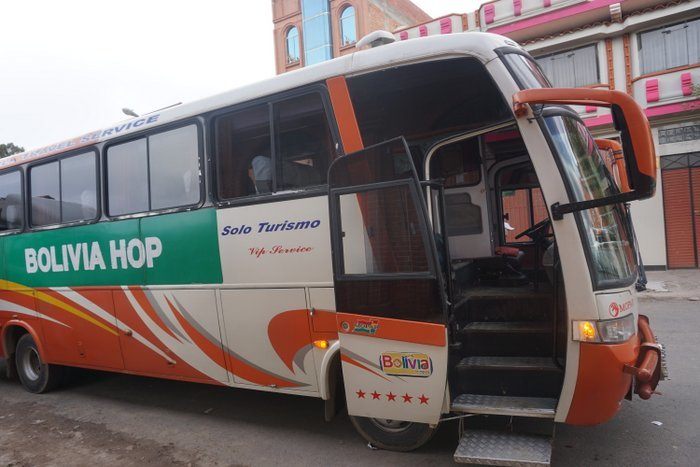
South America is not the cheapest country to fly to, but you can sometimes bag a cheap direct flight from another major airport. It’s pretty expensive to fly within it too. Unless you are coming by boat to Colombia via the San Blas Islands, you will certainly be arriving by plane.
São Paulo, Lima, Buenos Aires, Santiago, and Rio de Janeiro are all major hubs for South America. Compare the prices between these top destinations, and base your South America itinerary from there.
Entry Requirements for South America
Good news everyone! Most South American nations DO NOT require a visa to visit! This applies to those travelling from the USA, UK, EU, Australia, and most other Western nations.
This is a positive trend in the last few years. A few years ago, travellers sometimes had to apply for (expensive) visas to enter countries like Argentina and Brazil. Luckily, this is no longer the case .
Once you’ve entered the country, you can remain for a period of 90 days visa-free. Extensions are possible but these vary on a country-by-country basis. Most South American governments do not take kindly to people who overstay.
Of course, ALWAYS double-check visa policies before travelling .
City Bus. Local Bus. Long-distance bus. Overnight bus.
That’s right. Buses are the most economical way of getting around South America. Every major capital has buses going to the far reaches of the country.
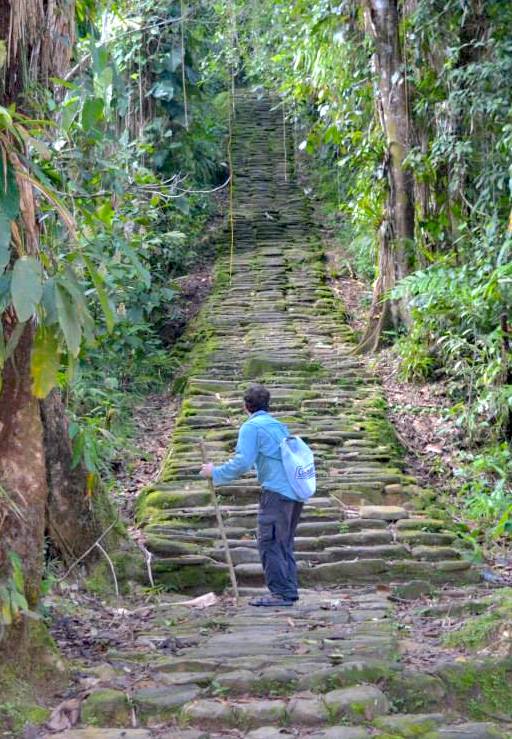
Local buses are typically super cheap. You can book online but the bus stations are organised really well too.
Taxis are an option within cities and sometimes Uber too, depending on the city. If you opt for a taxi ride, make sure they are legit, set the price beforehand, and haggle the shit out of the driver without being rude.
Flights between countries in South America can be expensive. Internal flights within the country aren’t the cheapest either, though they are cheaper if you buy them while you’re inside the country (you’ll save money on taxes).
As a general rule when backpacking, cheap travel is slow travel . Buses can be slow but as you will be taking many if you are backpacking South America long term, you want to go for the cheapest option.
If you want to go full Che Guevara style you can travel by motorbike pretty easily (and cheaply) in most places in South America. I recommend that you have some experience riding motorbikes before you even think about sauntering into a capital city or down a winding road in the Andes. If you do go the motorcycle route you can be sure that it will be the ride of your life.
Hitchhiking in South America
Travelling by hitchhiking is always an option. Your success will greatly depend on the area and the country; I wouldn’t recommend hitchhiking in a major city or at night.
Hitchhikers aren’t that common in countries like Colombia, mainly due to paranoia about the security situation in the country. Not everyone here is a drug lord that wants to kidnap you for ransom money. You can hitchhike throughout Colombia AND it’s such an awesome experience!
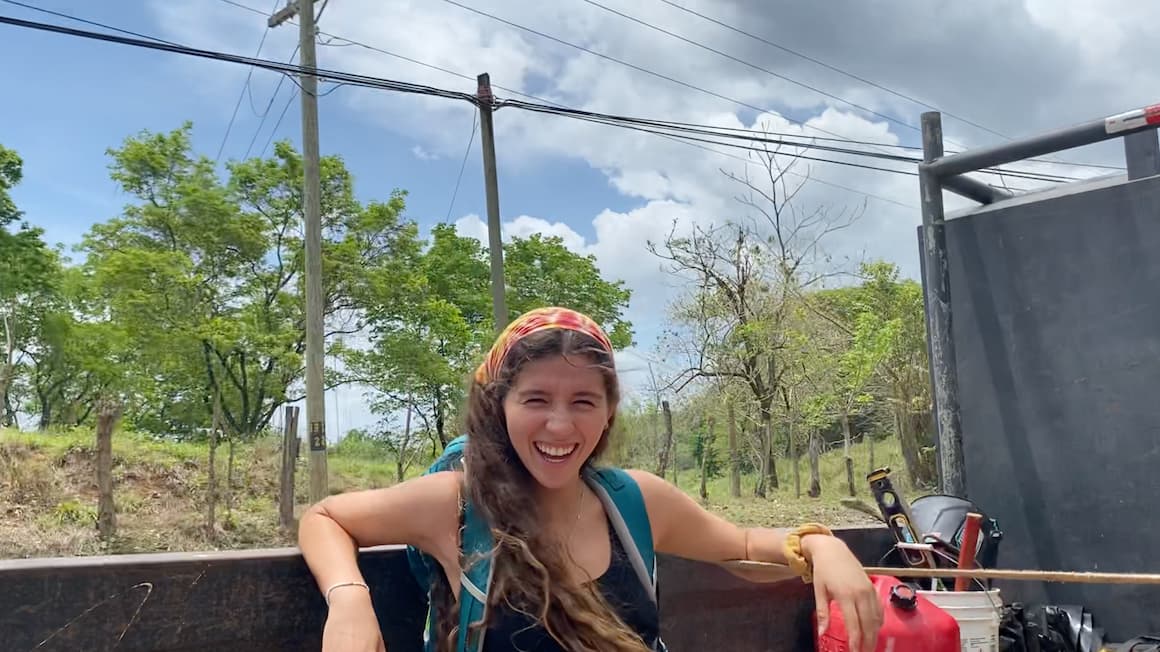
Rural areas of South America are especially impacted by high rates of poverty. Expecting free rides from folks with limited means isn’t morally fantastic. That said, even if you offer the driver a few bucks, it could very well end up being cheaper (and more rewarding) than taking the bus.
I would never assume that the ride is free initially. Always ask to avoid having an awkward scenario in which the driver who picked you up is demanding an unexpected fee. This is when learning Spanish comes in very handy.
Onwards Travel From South America
Your only options for leaving the continent are by boat or by plane. Most likely you will fly out of the country where you are finishing your trip if it makes sense and is the cheapest option. Try to book your flights in advance in order to find the best flight deals .
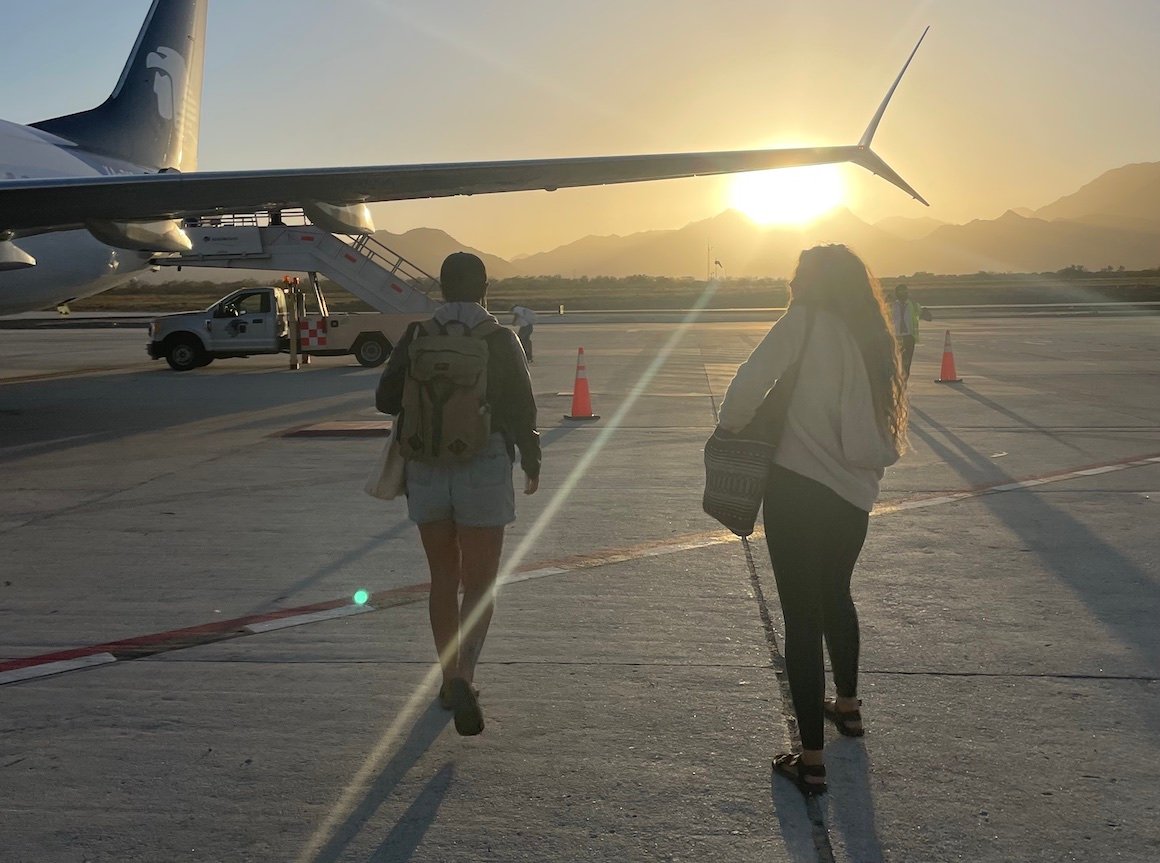
It is technically possible to cross the Darien Gap to Panama overland. Rumour has it that you can hire a guide for quite a bit of money and cross the Darien on foot.
In the past, this was impossible though due to narco-terrorist/guerrilla activity. May the Gods of Backpacking be with you if you attempt the journey on your own without a guide.
South America is becoming a digital nomad hub. After the pandemic, the boom really: a generally low cost of living, relatively reliable internet, and tons of expat communities.
Medellín is the current front-runner. This city is growing at a RAPID pace and is becoming the apple in every backpacker’s eye.
Plus, Medellín is safer than ever. Lots of people want to stay here for an extended period of time, digital nomads included.
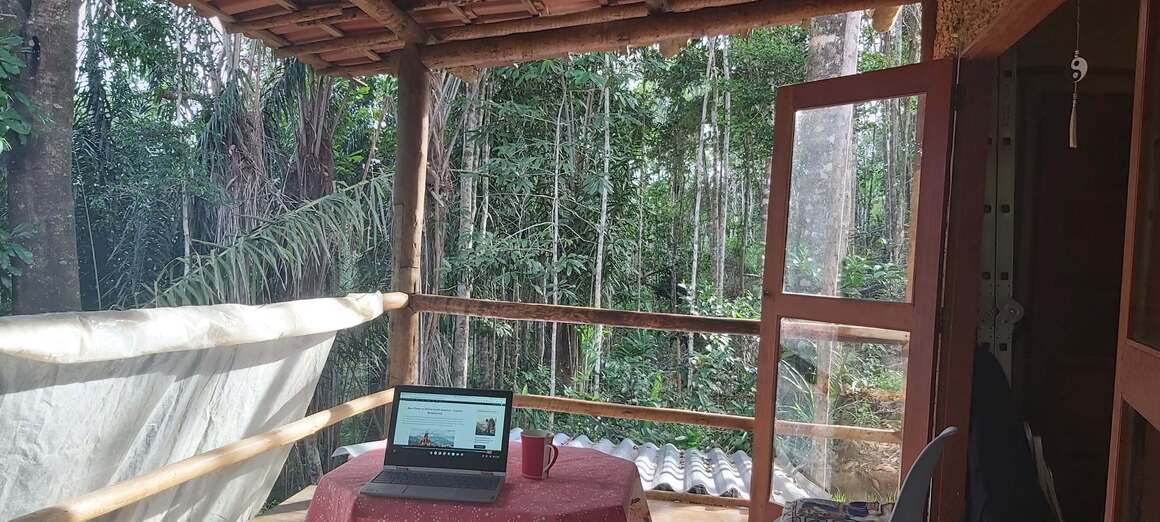
Close behind are larger South American cities like Buenos Aires, São Paulo, and Quito. Being big cities though, you’ll have to overcome higher prices and crime. Safety in Buenos Aires can be sketchy but so can every massive city, right?
Note that, at the moment, most South American countries do not offer a special digital nomad visa.

A new country, a new contract, a new piece of plastic – booooring. Instead, buy an eSIM!
An eSIM works just like an app: you buy it, you download it, and BOOM! You’re connected the minute you land. It’s that easy.
Is your phone eSIM ready? Read about how e-Sims work or click below to see one of the top eSIM providers on the market and ditch the plastic .
Teaching English in South America
Most people who end up living or staying long-term in South America do one of two things: teach English or volunteer.
Teaching English in South America is very popular. Some people make a living out of just going from one city to the next city and hitting up all the English schools in between. Some are accredited though many find success using their own merits.
If you have a TEFL certificate it will be much easier to score teaching gigs in South America. I recommend getting yours with MyTEFL – Broke Backpacker readers get a 50% discount on TEFL courses when you enter the code PACK50 at the checkout.
Volunteering in South America
Volunteering abroad is a great way to experience a culture whilst doing some good. There are loads of volunteering gigs in South America ranging from protecting the Amazon to teaching in barrios of Buenos Aires.
Arguably, you may need a permit in order to volunteer. But in reality, the continent is pretty chill and this is unlikely to ever be enforced.
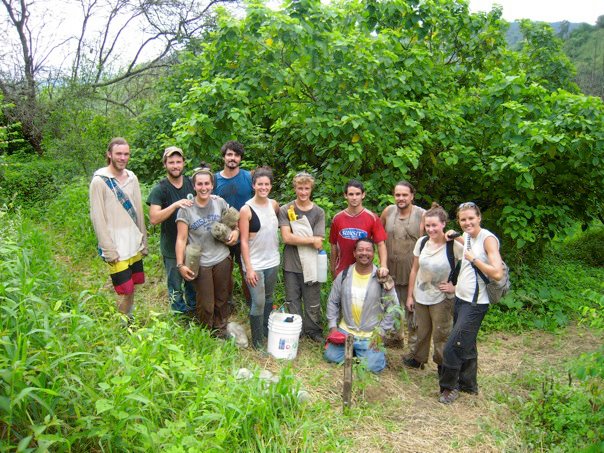
I spent a few weeks volunteering in the mountains in Northern Colombia and it was the best way to get to know the land, people, and lifestyle. Finding volunteering opportunities in South America is about learning, building community, and making an impact in a place you visit.
The best way to find volunteer jobs is word of a trustworthy mouth. But programs run through reputable work exchange programs like Worldpackers , Workaway , and WWOOF help you get your foot in the door of volunteer communities.
They’re a great opportunity for unique experiences and make amazing connections with people. But you do have to stay vigilant, especially when working with animals or children.
If you sign up for Worldpackers with a discount code, memberships are only $39 a year. For that price, it’s often worth giving it a try.
Summing up food in South America is like trying to explain what music is. It’s incredibly diverse and every country, every region, every household has a different definition.
First of all, meat is hard to avoid. They like it juicy, tender, slow-cooked, and accompanying pretty much everything. Especially in the southern part of the continent, Argentina, Uruguay, and South Brazil, the smell of cooking cow is heavy in the air.
The Argentinian way of grilling is Asado . And it’s not just a delicious barbecue – oh no – that’s just the centrepiece. The event is a huge part of the culture.
The vegetarian movement is gaining momentum, though it’s harder in some places than others. In more rural places, you may go hungry if you don’t want to eat meat now and again, but in general, it’s not impossible.
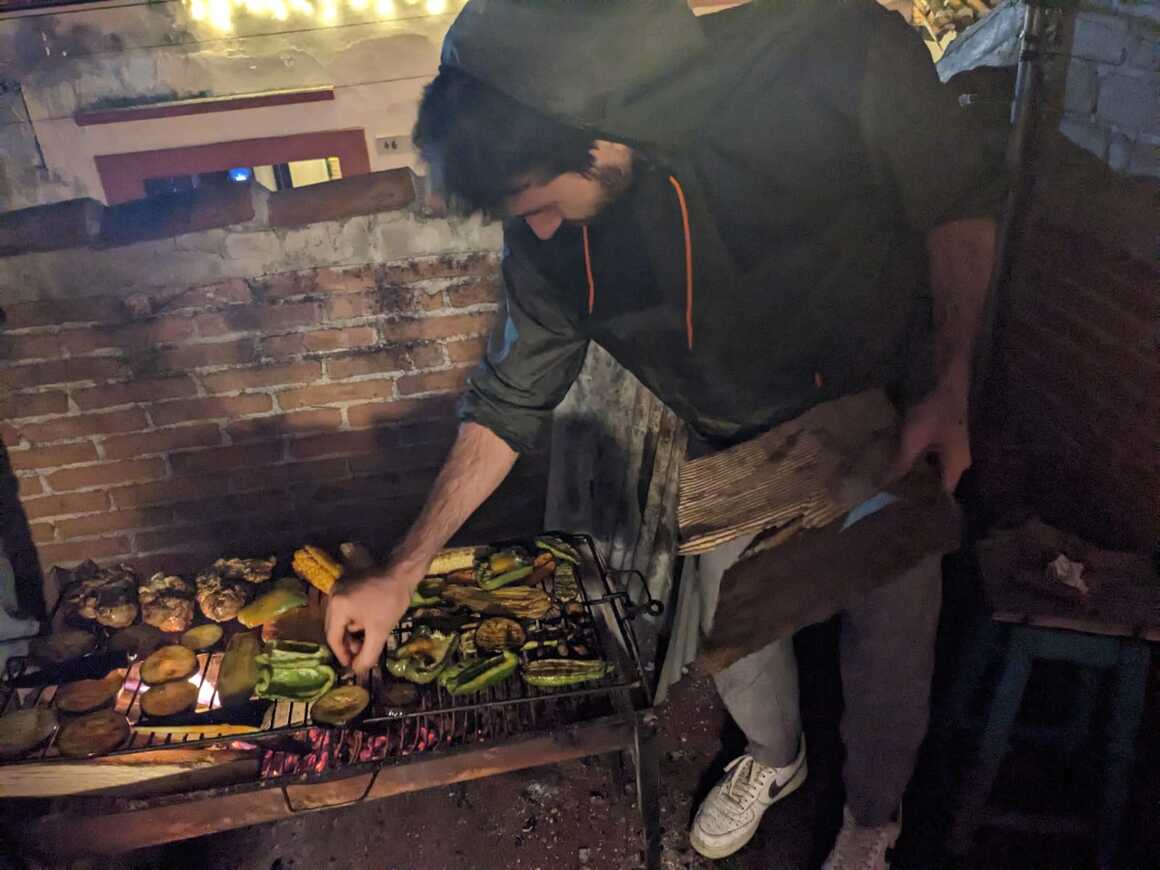
Andean countries like Peru and Bolivia have chronically underrated food scenes. In fact, Peruvian food is often regarded as some of the best in the world. You’ve never felt fresher than after chowing down that ceviche.
In the Amazon, they have a whole different gastronomic world; obviously, everything grows here. There are ingredients that come from the Amazon that just don’t exist anywhere else.
There are strange fruit and vegetables in abundance. Then, of course, the fresh fish comes leaping out of the river, almost directly to your plate. Catching your own fish is never a bad idea either.
The food in the north of South America, like Colombia and Venezuela, is the definition of comfort food. If you’re eating right, you’re going to be gaining a few kilos. Don’t pass on an opportunity to gorge yourself silly.
Street food usually involves lots of deep-fried goodness. But it’s the abuelas that make the best pastries, with oodles of love. And ooh, those arepas… they have a special place on my plate.
The Best Food in South America
Here are some of the best South American foods that you definitely shouldn’t miss out on.
- Feijão (Brazil) – Beany stew for everyday eating.
- Acai (Brazil) – Superfood berry.
- Empanadas – Your trusty stuffed pastry friend.
- Dulce de leche – Just try it… thank me later.
- Asado (Argentina) – Grilled meat with a side of meat.
- Antichucho (Bolivia) – Mmmm… cow’s heart.
- Ceviche (Peru/Chile) – raw but not raw fish, in lemon juice.
- Cuy (Peru) – A large cooked guinea pig.
- Encebollado (Ecuador) – Ecuadorian Grandma’s comfort stew.
- Arepas (Colombia) – Corn pockets to fill your hungry belly.
South America is a very complex continent. Colonization by Western Europeans technically makes it the youngest member of modern civilization. But saying this disregards all the history that came before the “ conquistadors” arrived.
South America has hosted many advanced civilizations like the Incan Empire, whose influence still lasts to this day. Though much of the native culture was lost with the mass killing by said conquistadors .
Long story short: South America is an enormously diverse region, maybe more so than anywhere else. Yes, European culture has largely shaped the entire continent. But indigenous and African cultures are just as important, if not more so.
Northern Brazil is very Afrocentric. This was the first charted part of the continent and ideal for rowing sugarcane. Consequently, it’s the place where all the slaves were brought.
Slavery is over. But it leaves behind a blend of African customs and cultures morphed into Latino culture.
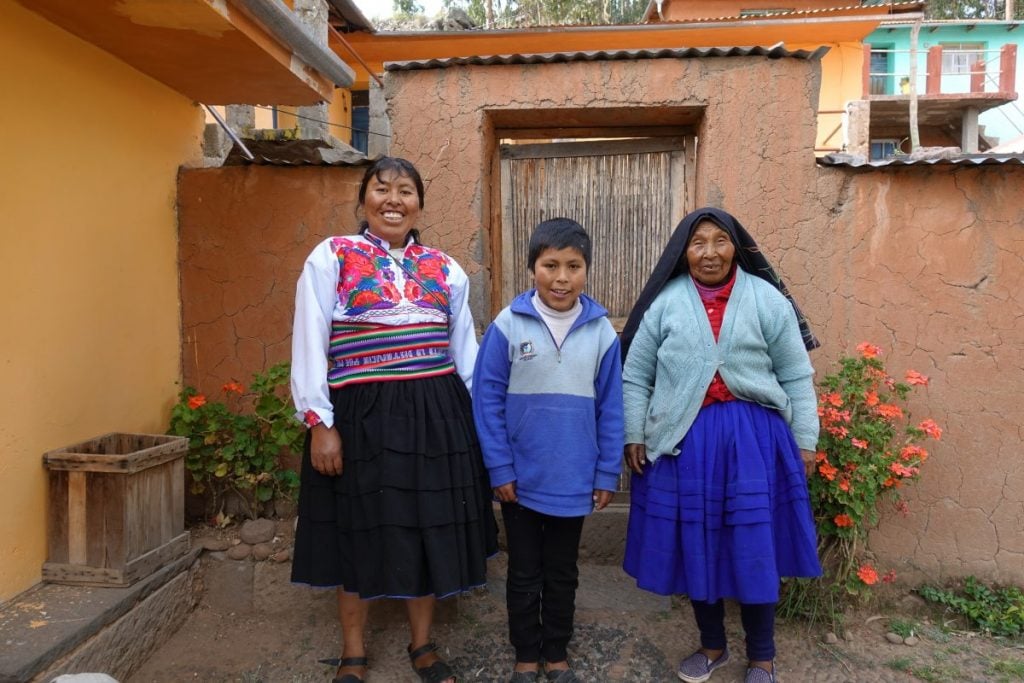
The south, which constitutes Argentina, Chile, and Southern Brazil, is much more European. Aside from the big players – the Spanish and Portuguese – Italians, Germans, and French all settled here following a huge era of migration.
In the Andean countries of Bolivia, Peru, and Ecuador you see a lot of indigenous cultures. Some people still live like their ancestors, living in the highlands and tending the land. Though Spanish is still the dominant language, several local languages, like Quecha and Aymara, are still commonly spoken.
Don’t make the mistake of thinking that all of South America is just an extension of Europe or North America. You’ll miss out on the beautiful subtleties of the region, which make backpacking in South America so wonderful.
A backpacking trip in South America is a unique experience in itself. And within that, there are instance amounts of opportunities to make your South America itinerary different to anyone else who’s travelled here before. Here are some of the best things to add to it:

Things go wrong on the road ALL THE TIME. Be prepared for what life throws at you.
Buy an AMK Travel Medical Kit before you head out on your next adventure – don’t be daft!
Hiking in South America
South America has some of the best hikes in the world . Here are a few iconic options to get your bucket list started:
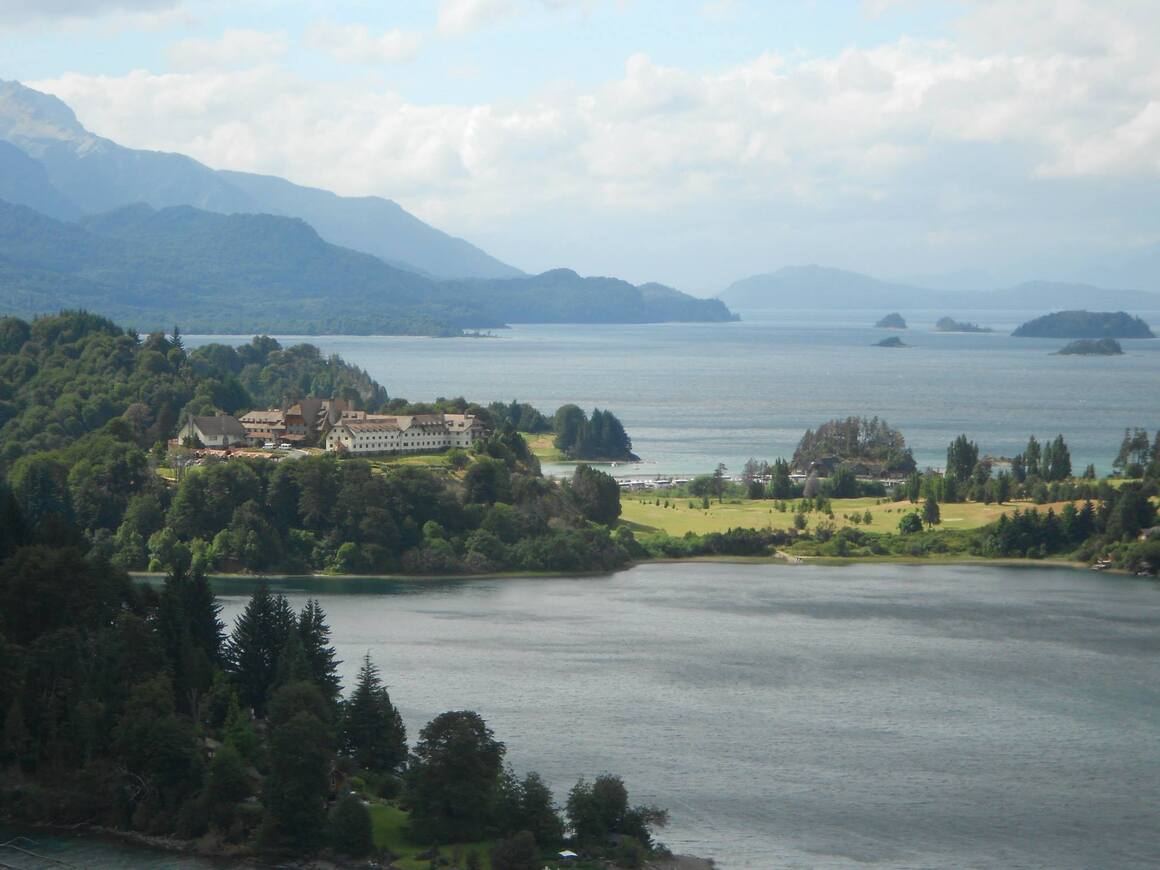
- Lost City Hike, Colombia : This hike through the Colombian jungle will certainly be a highlight of your South America travel.
- Sierra Nevada de Cocuy, Colombia : Snow in Colombia? Here you can find peaks are as high as 5,330 meters above sea level. If you have your own gear and a good sleeping bag , you can probably do the hike without a guide.
- Iliniza-Norte, Ecuador . This is a fantastic 2-day trek that does not require any special gear or equipment. If you are planning to tackle Cotopaxi this is a great warm-up. A solid challenge for the dedicated hiker!
- The Salkantay trek, Peru: Hike to Machu Picchu over 4 days and experience the true beauty of the Andes along the way. One of my favorite South American treks for sure.
- The Cordillera Huayhuash, Peru : Truly one of the most stunning areas in Peru. For serious hikers, planning a trek like this is one for the books!
- Hut-to-Hut in Bariloche, Argentina: Spectacular hike for some of the best views of Nahuel Huapi National Park and its lakes. Tents are optional since you can stay exclusively in the refugios.
- Villa O’Higgins to El Chaltén, Chile/Argentina : One of the greatest ways to experience Patagonia. Walk from Villa O’Higgins in Chile to El Chaltén in Argentina. You’ll see some superlative mountain, forest, and lake scenery along the way.
- Torres Del Paine Circuit, Chile : The hike of all hikes in South America. This epic walk takes 9 – 11 days and passes through some of the most dramatic landscapes one can fathom. A must if you’ve got the time and hiking spirit!
Scuba Diving in South America
You have scuba diving options galore in South America! In general, scuba diving is pricier than it is in other parts of the world but that’s because it’s worth it. If it is something that you really want to do, I say go for it!
Colombia is probably the cheapest and best place to dive AND get certified in South America. You have Providencia and Santa Catalina (a smaller island to the north) which is home to the third-largest coral reef barrier on Earth and includes over 40 dive sites.
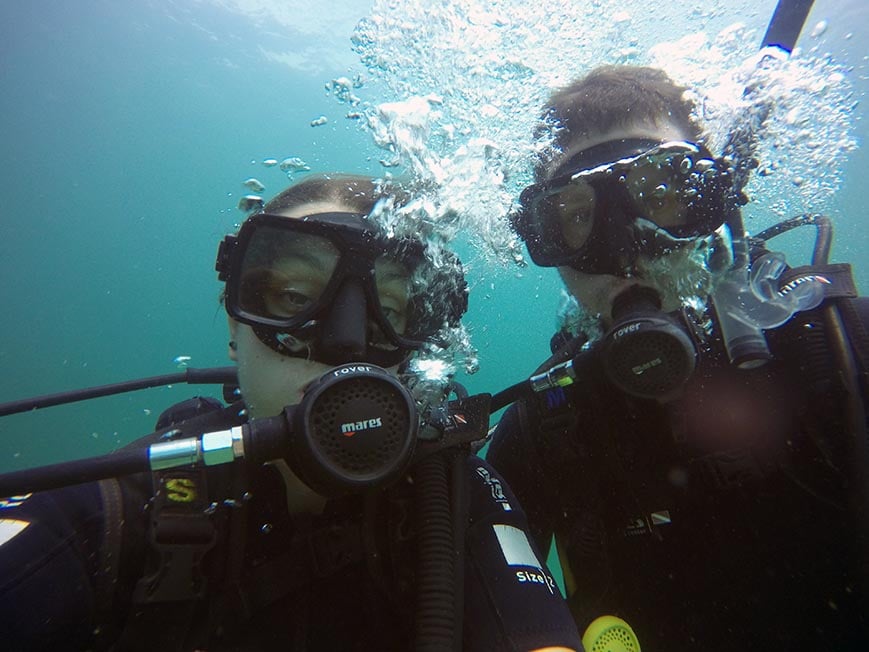
Malpelo is the harder-to-reach version: a jagged rock in the Colombian Pacific, it can only be reached by boat, and divers can only visit here as part of an organized trip. It’s worth the time and money for sure; Malpelo is one of the best places in the world to dive with sharks, including hammerheads, whale, and the rare sun ray shark.
People have reported schools of up to 500 sharks around Malpelo. That’s right. 500!
Peru and Ecuador both have some decent diving right off their coasts. The diving around the Galápagos Islands is world-class, but it will cost you a fortune go diving there.
If you truly want to have the scuba diving adventure of a lifetime, I highly recommend joining a Liveaboard trip.
- Liveaboard the Galapagos
- Liveaboard Colombia
Surfing in South America
Surfing is the number one sport on South America’s coast. From Peru to Brazil, backpackers and locals are coming together and shredding!
Peru is home to the longest left-breaking wave in the world . You can literally ride a wave for five minutes!
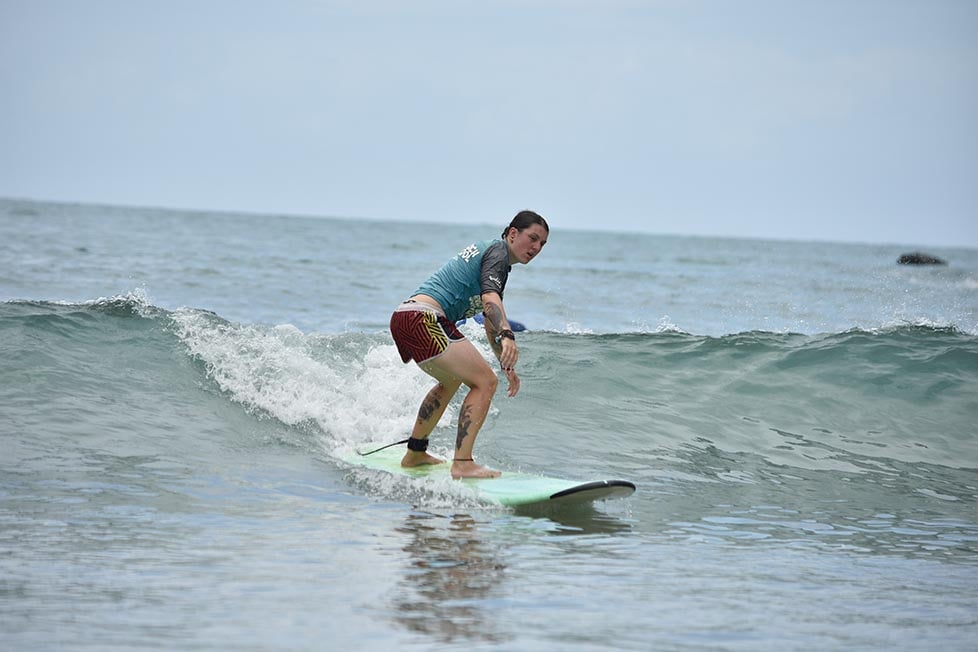
The Pacific Coast is dotted with funky surf towns, where the main activities revolve around the waves and the nightlife. There are a plethora of surf schools in every country. Often these surf schools offer Spanish classes as well if you are wanting to double down (which I highly suggest!).
It is easy to fall in love with the surfing lifestyle. But be careful, you might just fall in love with the whole scene. I wouldn’t blame you for a second.

Our GREATEST Travel Secrets…
Pop your email here & get the original Broke Backpacker Bible for FREE.
Here are the questions I get asked the most about how to backpack South America.
Is backpacking South America safe?
Yes. Backpacking South America is safe. Just bear in mind that crime rates are higher than in some other areas of the world. But by following standard safety procedures, there’s no reason why that crime should affect you. Be sensible, show people plenty of respect, and look after your friends.
How are the bus journeys in South America?
The long-distance buses are generally top quality and comfortable. Just be aware that distances on the map can be deceiving and journeys can be long so bring plenty of water, food, something to keep you warm in the baltic aircon, and probably some toilet paper too.
Is travelling South America as a woman possible?
Absolutely! Not only is it possible, it’s awesome. Do remember that, unfortunately, women do have to consider safety as a factor more so than men, especially after dark. But with that in mind, prepare for the adventure of a lifetime.
How are South Americans so damn sexy?
There are too many reasons. Just go and spark up conversation with them and find out for yourself. Beware though, you’re likely to fall completely, madly, deeply in love.
Backpacking South America can be one hell of a party at times. Take it from me, it can be easy to get carried away.
You can make a positive impact on people when we travel and South America is the perfect place to do that. Try to spend your money in places where the experience is mutually rewarding.
When buying a local craft, be fair to the person who spent countless hours crafting it. Pay people their worth and contribute to the local economies as much as possible.
If you visit small or indigenous communities, be respectful: they are normal folks just living their lives. Backpacking South America – or any region for that matter – often illuminates some of the great socio-economic inequalities of the world. Never take it for granted that you are healthy and financially able to go travelling.
Show the world around you some gratitude and help to make a positive impact on it. Most of all have the time of your life and spread the love!
Well, amigos, the time has come for me to send you on your travellin’ way. Armed with your budget travel knowledge, on you go!
Your South America backpacking trip awaits. Have a few cold ones for me, yeah?
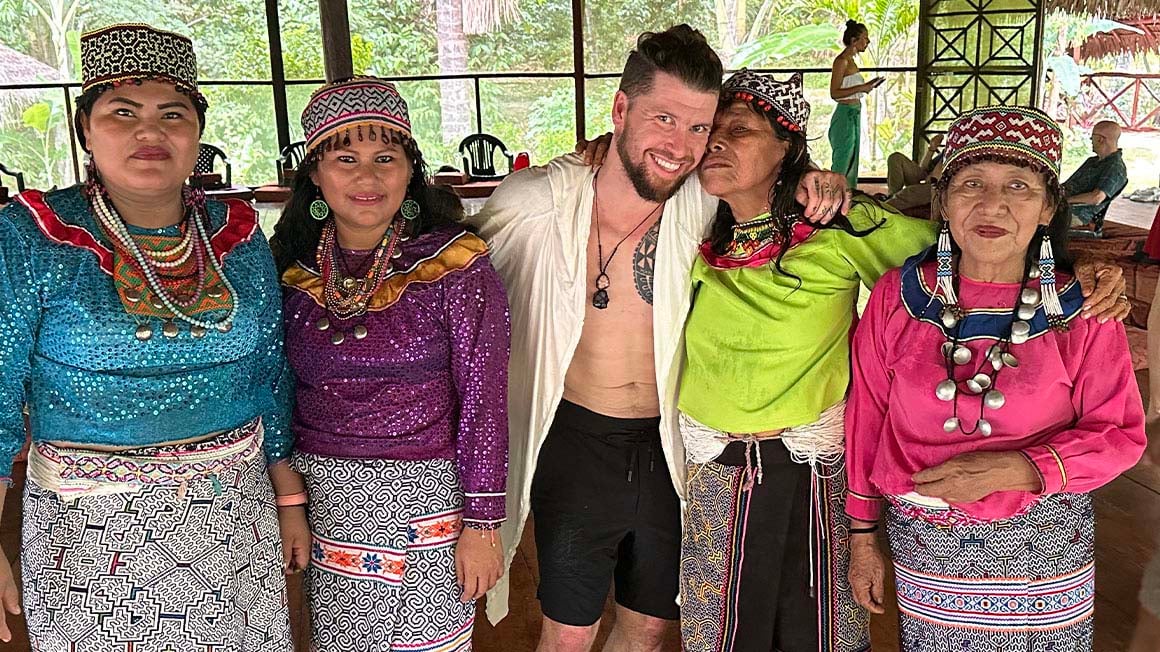
Made it this far? You get 15% OFF to book a place to stay ! Offer valid exclusively for Broke Backpackers 😉

Share or save this post

30 Comments
Great post, loved the detail and enthusiasm you have for South America. I am saving up to travel from northern Colombia all the way down the west to Patagonia and then back up the other side (yes I am aware it will take the best part of a year). I wondered if you had any tips on the best time of year to start this adventure?
Plan your time with the weather and seasons in mind! Have a great time.
Is traveling to brazil unwise right now because of the covid situation? Has it become more unsafe because of the covid situation? It’s been really difficult to find solid information, and making a decision wether to visit or not has been quite difficult. Thanks for the otherwise wonderful post! Super informative.
informative post . best of luck
Hi Kami, glad you liked the article!
Very nice blog, congratulations I found a cheaper way to flight some routes inside Latin America If someone have plans, after this health crisis is gone, just ask me, I will be glad to help
Interesting. However as a Guyanese, that us from Guyana, South America I always find it odd that many persons leave out the English Dutch and French speaking countries of South America. We too have things to offer.
Hello Malkia, We totally agree with you! As soon as we manage to visit Guyana, we will update this guide! I look forward to exploring your country. Cheers
Hey there!! So I am planning a trip to south America this summer. I have a couples questions. I’m flying into Bogota, Colombia. I plan on spending 2-3 months in SA. I’d like to travel from Bogota to Machu Picchu, then to Buenos Aires, and depending on time Brazil. I am trying to figure out the cheapest way to travel from country to country. I don’t care about long bus rides or any of that. I just don’t know where to purchase the cheapest bus tickets. Please help!!!
Simply the cheapest tickets are usually at the bus station, or wherever locals buy their tickets. Look out for agencies and the like that might add a fee for booking the very same thing you could yourself.
I have a good tip to move around if you need to do it by plane, just let me know if you plan (after the whole problem is gone) to fly some stretches.
Hey man great blog, been reading so many of your posts recently, can you email me I wanna chat to someone who knows there stuff… I’m going to South America for about 6 to 8 months on a budget and need help planning a route… hopefully you see this and we can chat thank you
Hey Jamie, What is your question specifcally regarding your route? Cheers!
Thank you so much for sharing these information – they are so useful!
I am planning a trip of a lifetime to South America. To keep cost down, I am likely to stay in hostels for the first time. I like to understand how travellers wash their clothes in hostels. Are there usually any washer or dryer machines in hostels? Do we usually have to pay to use them? What is the price like?
Look forward to hearing from you.
Hi Tina, Some hostels offer laundry services. Other times you can get your laundry done at local lavanderias . Depending on the country, prices are usually pretty reasonable. They usually charge by the weight. Getting a massive load of clothes washed should not cost you more than $10 (sometimes way less) washed, dried, and folded. Cheers!
Thanks Chris for this wonderful article. Bolivia and Brazil is a magical place! Anyone who went there said it was absolutely amazing! That nature is just wonderful here. keep sharing your travel ides about more places of South America.
Cheers, Mate!
I started my South American journey two months ago and this has been a big help. There’s literally so many options once you get down here. Overwhelming in all of the best ways.
Much love from Peru.
Wow! That’s a marvelous article! Unfortunately, not so long ago, I was in South America, and I really had a lot of predicaments while traveling. If only I had read this article before the traveling, most likely, my trip would have been better!
Great content, congratulations.
Really great and in depth guide, thank you! Planning my first trip to South America and really like the look of your 3 month route across Peru, Ecuador and Columbia, was thinking of taking another couple of weeks on top to see Bolivia as well. What month would you advise starting this travel? (would really like to be home for Christmas)
The autumn months would be a lovely time to visit South America 🙂
Awesome content! I took so much advice and suggestions. I feel like I can plan whatever kind of trip ranging in length of time spent there plus budgeting. Thanks!
It’s great that you’re such a strong advocate of reusable water bottles and avoiding one-use bottles and generally I totally agree. However, I normally refill my water bottle from the tap, which obviously isn’t safe everywhere. Geneally can you drink tap water in South America? Or if not how do you safely refill without buying bottled water?
We’ve used lots of things over the years to harvest clean water from taps and streams. The GRAYL filter bottle is one of our favorites. South America is something of a mixed bag when it comes to drinking water. It ranges from safe to unsafe with every shade of chloriney in between.
I am starting my South America trip new month and I found this website extremely useful. One question though – I am worried about the requirement to show proof of onward travel. Any idea if Argentina, Chile, Bolivia, Peru, Ecuador, and Colombia require this?
Hi Neringa,
I never had to show proof of onward travel during my 6 months in South America. There was never a time when a customs officer/border police questioned me about my onward travel plans. You should be just fine 🙂
Thanks, Chris. You have been right! But I was requested to provide proof of onward travel by Avianca when flying for Cusco to Quito. Maybe because my passport expires soon. My friend, however, did not have one and was still allowed to board the plane 🙂 There was a group of Israeli guys who I think had to show this info, too.
Thanks a lot man, I’m planning a 3 month trip to Colombia, Peru and Brazil next year and this really helped me get my head around how to do it and the kind of money I’m gonna need to save! Cheers dude
Thanks, this really helped me a lot for planning my trip next year!
Leave a Reply Cancel reply
Your email address will not be published. Required fields are marked *
Save my name, email, and website in this browser for the next time I comment.
Notify me of followup comments via e-mail.
Green Mochila
Budget Backpacking in South America
Backpacking in South America: All the Answers You Need
We all dream differently of South America. Some of us need to feel small in its immense nature during multi-day hiking adventures. Others want to feel the life pulsating in its cities, its street art, its sensual dances and wild carnivals. Some will want to find themselves in strange marks on ancient stones. Others still are looking forward to a cocktail on the beach, facing the warm sun and the turquoise mirror of the Caribbean. Whatever your dream is, this is your guide. We’re answering here all the questions you may have, in order to help you plan your perfect budget backpacking in South America .
Chances are that this post contains affiliate links. We’re not selling anything ourselves – we just help out products we find great. If you click one of them and decide to purchase, it’ll be at no extra cost to you; and we’ll get a trifle that’ll help us bring you more awesome travel guides.
Note: our South America travel advice doesn’t include the 3 Guianas ( Guyana, Suriname & French Guiana ) which are a complete mystery to us.
Jump to: Is South America safe? | Backpacking tips | Backpacking South America budget South American itineraries | Packing list | Countries overview
A few travel tips about budget backpacking in South America
South america is a whole world.
The very 1st thing we want you to know is how absurd this South America travel guide is. South America is a whole world, a continent of more than 428,819,652 people living in 13 countries; meaning there are as many differences from one country to another as between, say, The Blair Witch Project and The Little Mermaid .
And because they’re all equally fascinating, you’ll want to travel more than 2 weeks in South America.
Don’t expect to find the same situation everywhere in South America. We want you to keep this in mind while you’re going through this post. If we had to make generalisations (under the torture) here’s what we could say:
- the most expensive and developed countries are in the southern half. That’s Chile, Uruguay, Argentina (although currently under ongoing economical crisis) and Brazil . There you’ll find decent roads and infrastructure the most, and a lifestyle that is the most similar to the so-called “Western world”.
- Brazil , though, is much livelier, more colourful, probably more ‘exotic’ . Its population is also more mixed between Indigenous, Whites and Blacks. It’s similar to Colombia and Venezuela – but wealthier and more expensive.
- the Andean countries ( Bolivia, Peru, Ecuador and to a lesser extent Colombia ) have a more Indigenous and traditional society , living a lot on self-sufficient farming and informal market. Expect to pay for everything there more than anywhere else. The level of life is lower, except in Ecuador , which is surprisingly more developed.

Few people speak English
That’s right. It might be a tad easier in the most developed countries (remember? Chile, Uruguay and Argentina) and downright difficult in the rest of the continent. Of course, your hostel staff will be able to help you; but that might not even be the case in Bolivia or Paraguay, or in the less touristy areas.
The best thing is really to pick up some Spanish (and Portuguese , if you travel to Brazil) before travelling to South America; or even along the way, like many long-tern travellers manage to do. Even the basics will procure peace of mind; you’ll be sure that you get understood, understand where you’re going, and aren’t abused with prices.
There aren’t many vegetarian or vegan options
South America is definitely a meat-eating continent. For most people there, a meal without meat isn’t a meal. If you feel nauseous at the mere sight of meat, you want to avoid adventuring to markets or going anywhere near street food carts.
Don’t worry though, you’ll find veggie and vegan restaurants in all the big cities throughout the continent. In many places, Asian all-you-can-eats do the trick perfectly, especially in Argentina; and for a cheap price.
The least veggie-friendly countries are Bolivia , Venezuela and Paraguay .
The countries that are the most veggie-friendly are Argentina and Uruguay (which have a similar cuisine by the way). Peru’s Sacred Valley , in particular Cusco, are also surprisingly vegan-friendly due to the crowds of hippies passing through; don’t miss the falafel in “San Blas” market!
Of course, nothing stops you from cooking yourself. The fresh fruits and vegetables grown in most of those countries are so appetising!
The Andean cuisine is heavy on the meat, to say the least. Yet, it’s easy to eat vegetarian at markets’ comedores : you just need to ask. Let me tell you though, it won’t be light; the meat is usually replaced with fried egg or plantains .
Markets are the Mecca
If you’ve been around Green Mochila long enough, you know that we are real market fanatics. It’s cheap, it’s colourful, it’s authentic, the produce are usually local and the meals follow regional recipes. Bring your own bag and it’s also plastic-free. What’s there not to like about it?
We cook a lot on our travels, and we usually get our veggies from the market. We look around and ask for prices to compare. When we’re set on a seller, we get as much as possible from them, so they give us a good price; maybe they even give us something extra, what they call the “ yapa ” in several countries.
We also eat lunch at markets, there’s always a “ comedor “, some place where the ladies cook. There are also freshly squeezed fruit juices and snacks all day.
Markets are also a great place to have a little chat – provided you know a bit of Spanish/Portuguese. How many things did we learn just sitting down on a market bench!
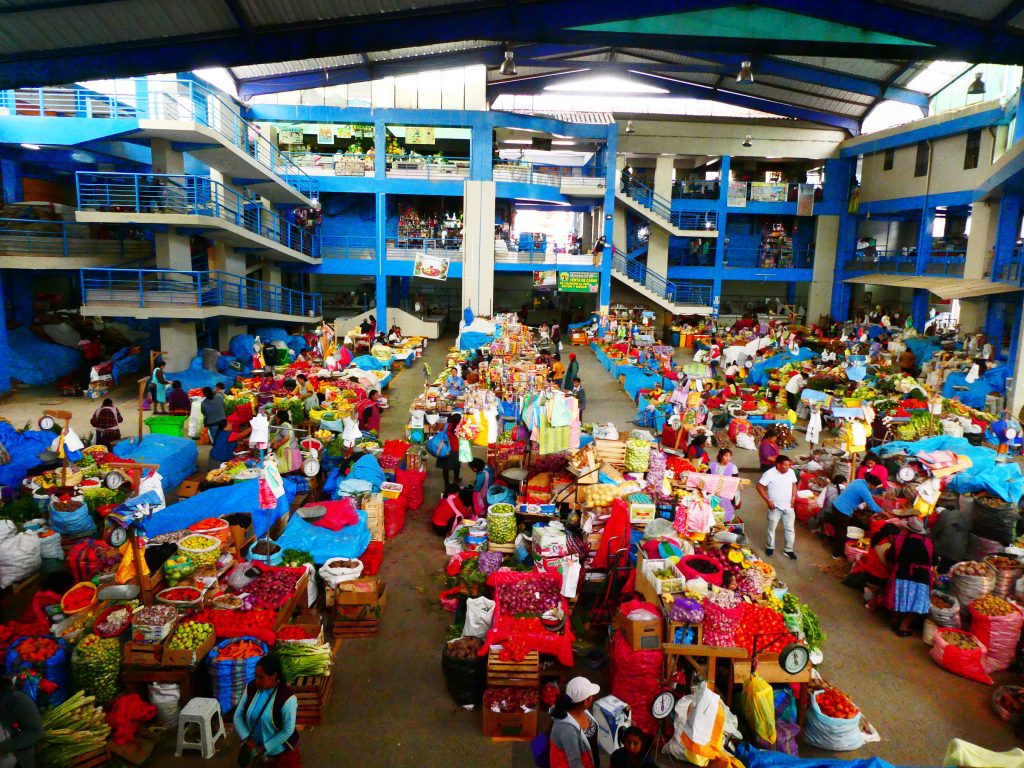
Is backpacking in South America safe?
People often ask us if it’s safe to travel in South America; or they do like our mums and just take for granted that we’ll be kidnapped and they’ll soon receive our ears for ransom.
There have been, and there are still, stories of violence across Latin America. But in most parts, you’re just as safe as in your hometown. It’s also just as safe backpacking South America solo as in a couple or a group. Like everywhere really, you should be aware of where you go , of the situation around you at all times.
Keep an eye on your belongings, especially in crowded places. Don’t walk around with your valuables showing. What we always do when we arrive in a new town, is ask at our accommodation if there are neighbourhoods we should avoid. Even the way they answer gives us an idea of the local safety.
There are a few places on the continent where you should pay extra attention. Not places you should avoid, just where bad stuff is a bit more likely to happen. There again, ask locals and they’ll give you tips.
Places in South America where you should be extra careful:
- All Colombia , even in smaller towns
- Large Brazilian cities : Rio de Janeiro and Salvador in particular
- Some capitals : Lima in Peru, Quito in Ecuador
- Venezuela is a no-go right now, with its current situation and everyday violence
It’s more likely that that you end up paying double price for things , especially if you don’t speak the language. In Bolivia and Peru in particular, sellers think gringos are rich and don’t mind spending extra. We advise that you spend your 1st day in each country checking how much things cost, to get an idea.
Before budget backpacking in South America: travel tips and facts
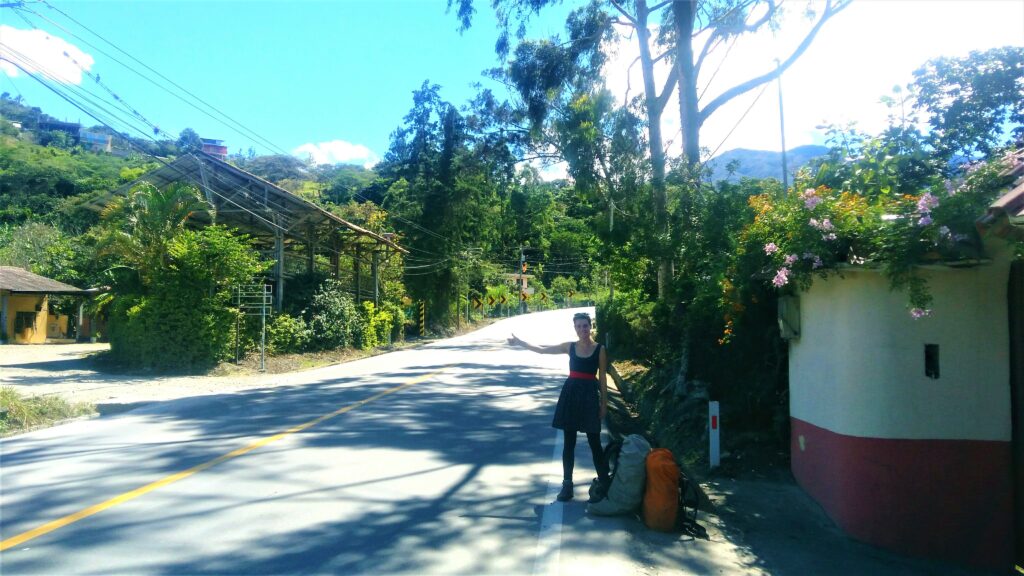
Transportation
Distances are big on the continent, and you will often have to endure 8 to 10-hour bus rides to reach your next destination.
It’s actually ideal; we always chose a night bus to save one night in an accommodation, arrived early morning in a new place, freshly rested and full of wanderlust. Well, theoretically. That depends much on the state of the road and the eagerness of the driver.
Unless you’re travelling to remote locations like the Galápagos, Easter Islands or Iquitos, nothing justifies taking a plane . If your next destination lies more than 15 hours away, there’s something wrong with your route. Think it over. Maybe you need to add a stop in-between? Maybe you’ll discover an unknown place you’ll fall in love with?
Read our guide to bus transportation in South America
Independent travel vs South America tours
Some agencies offer South America backpacking tours , that include a visit to some of the most famous locations on the continent. For a flat rate, they rush you from one site to the next, crossing towns and borders like nothing happened. We heard of tours that range from 1 to 4 weeks.
As you may guess, we wouldn’t recommend that much. Of course it’s comfortable. But you’ll just see sights without understanding what they mean in a local context. An independent travel allows you more time and attention to places, people, meanings.
Tour companies want you to think that some places are impossible to visit without them. Most of the time, that’s not true. There’s almost always a bus to get there, people on-site to help you out, a single ticket to buy. And all this much cheaper on the spot.
Our best tip: Even if you’re not an independent traveller at heart, don’t get ripped off online. By booking in your home country, you get prices that can be 3 times the average price on-site. Trust the local companies.
Couchsurfing
It is in general fairly easy to use Couchsurfing anywhere on the South American continent. From our experience, the only exception is Bolivia, where the community is very small.
As a rule of thumb, send your requests about 7-10 days before your arrival – a bit more for touristy places. People from South and Central America are spontaneous folks, so a request that’s earlier than that will probably get a ‘no’, as they don’t want to compromise so long in advance.
Latin Americans are very friendly and always ready to help you. They will treat you as a close friend right from the start, often in a very expressive manner (except in the Andes, where people are colder). They will also welcome you in a space that we would consider too small; or in a situation where we would generally abstain. With this, we mean that you should be ready to sleep eg. on a simple mattress in the living room.

Cost of backpacking in South America
The best way to help you budget your backpacking in South America is to give you a breakdown of our own costs, in 2019.
Bear in mind that we’re hardcore budget travellers. We use Couchsurfing most of the time, otherwise we look for the cheapest accommodation; travel by bus and hitchhike from time to time; speak both Spanish and Portuguese and can barter the prices; walk around cities and look for free events. Having said that, we don’t skip any major attraction.
Backpacking South America budget (per person per month):
- Brazil: 630 € / 700 USD
- Argentina: 215 € / 240 USD
- Bolivia: 400 € / 450 USD
- Chile: 315 € / 350 USD
- Colombia: 240 € / 270 USD
- Peru: 220 € / 250 USD
- Uruguay: 270 € / 300 USD
Our best tips on how to travel in South America on a budget:
- buy ingredients from the markets, cook food and bring it in your lunch box to eat during the day
- try to haggle and negotiate , from food to bus tickets to hostel nights; for this, you’ll need to speak some of the language
- instead of restaurants, eat local food at market canteens and street food
- use Couchsurfing , or camp with your tent
- exchange your hostel nights against a volunteer job or a workshop in your speciality
- hitchhike whenever possible, including to tourist attractions that are only reachable by car; there will be other tourists going there and willing to help you out
- many museum have free entrance once a week; check their website beforehand
- look for free events on the internet; there are more than you think!
- walk instead of taking the public transportation; it’s also the best way to discover a city
And even some tips on how to make money on your South American trip, if you’re not a digital nomad:
- if you know how to dance, juggle or make music , do that on the street; there’s a heavy Argentinian competition though
- sell homemade food on the squares (cake, fruit salad, vegetarian sandwich)
- learn how to make bracelets and sell them; you can even exchange them for food at the market (true story, our Spanish friend Isa did that regularly while backpacking through South America)

Got more tips for fellow backpackers in South America on how to save or make money? Share them in the comments!
South America backpacking routes
How long do i need to backpack south america.
South America is big – have we said that before? We mean that there’s no need to rush and have one large South America itinerary, to see all the main spots in a short period of time. With the cheap flight deals we find nowadays, you’ll have occasions to come back several times. Honestly, a ‘ South America itinerary 2 weeks ‘ is an aberration.
For a 1-2 month South America backpacking trip , consider sticking to one country or region. Eg. Patagonia in Argentina/Chile; the Southeast of Brazil; the Andean countries Bolivia and Peru. Staying in a region will offer continuity in the local culture, allowing you a better understanding thereof. You’ll also remain in the same climate, which can make the packing dilemma considerably easier. And that’s not a detail.
For these reasons, and to reduce your impact on the environment, consider a slow way of travel , one that doesn’t involve flights. Think that you’re on a faraway continent, a new world to you. Who can tell what’s unrolling under the wings of your plane? Who says it’s not worthy of your attention?
We think that 3 months in South America is already a good time. We’ve brainstormed and came up with a few options for backpacking routes in South America, depending on the time you have and on your interests. We’ve chosen them on geographical and cultural criteria.

3-4 month South America backpacking itinerary
Argentina & chile:.
This route will bring to you all the wonders of the most diverse countries on the continent. Stretching from frozen glaciers down sky-high mountains to sandy deserts with geysers and quirky rock formations . From the flat pampas to moody islands and further to perfect surf spots. Also to buzzing metropolises , cosy towns and fascinating villages .
Start your backpacking trip either in Buenos Aires, Argentina, or Santiago, Chile. After spending a few days there, make a loop according to the season; the south reaches freezing temperatures in winter, and the north can be unbearably hot in summer. So calculate well the best time to travel to South America. See the Countries Overview underneath for the places to see on the way.
Andean countries: Bolivia, Peru and Ecuador
This backpacking route will bring you through the most traditional region in South America. Colonial towns and Indigenous villages, but also unique landscapes and a myriad ancient ruins and sacred places . It’s a perfect trip if you’re into history or want to spend time in remote nature; jungle forest , tall waterfalls or wind-swept beaches.
It’s a land of high plateaus, so it’ll be cold all year round, especially in Winter (June to early September); the rainy season can be heavy and block roads in January-March. Mind the altitude: it’s important that you take the 1st couple of days to acclimatise.
You can either start your travels in Quito, Ecuador and go down, or in La Paz, Bolivia and move north. Note that Bolivia is the least developed country among them and Ecuador the most developed, with all comfort and services. See the Countries Overview underneath for the places to see on the way.
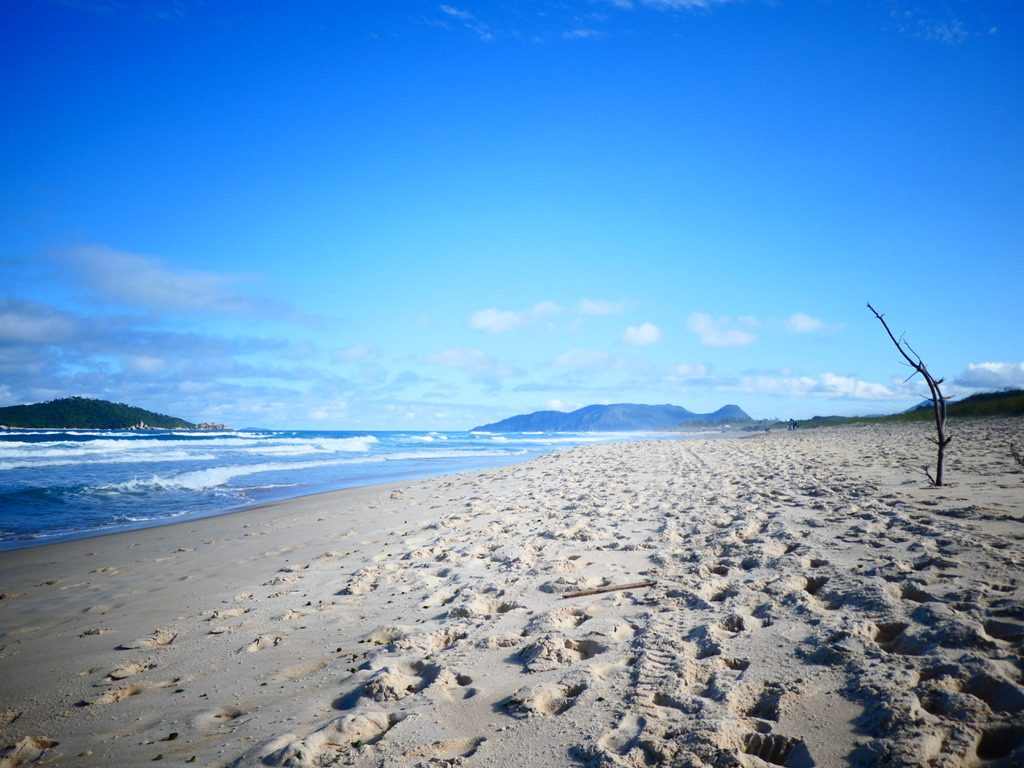
the Brazilian coast
With 7,491 km (4,654 miles) of coastline, you’d have a lot to see on a trip down (or up) Brazil. You’d be riding through large modern cities , smaller towns and fishermen’s villages; the jungle in the north and the flat grasslands of the south. Always keeping an eye on the immensity of the Atlantic ocean.
Start in Belém in the north or in Porto Alegre in the South; or the other way round, from the region with the most European roots to the one with major Black ancestry.
Caribbean countries: Venezuela, Colombia and their islands
To feel the warm sun on your skin and meet people who talk easily on the street, head over to the Caribbean. That’s among the most joyful, loud and colourful parts of the continent. This route goes through Colombia, Venezuela and their islands; with extra time and money, maybe you can visit some of the island nations above: Aruba, Curacao, Trinidad & Tobago.
Because the southeastern part belongs to the Amazon rainforest, the best is probably to start in Bogotá or Medellín, Colombia. From there, you should 1st go south to see Cali, Popayán, the Coffee Axis and the Tatacoa desert. Then make your way to the coast and follow along at your own rhythm.
On your way, colonial towns, peaceful beaches , fishermen’s villages, stunning national parks and the tallest waterfall in the world.
Warning: as of December 2019, travelling to Venezuela is strongly inadvisable.
6-month backpacking South America routes

Andean countries extended: Bolivia, Peru, Ecuador and Colombia
To what’s been said in the 3-4 South America travel route already, we’re adding Colombia. The south of the country is high up in the Andes, and is culturally attached to the “Andean countries”.
You’ll need to pack heavy for this route, as it’ll bring you through cold high plateaus –that should be avoided during the rainy season in January-March– and under the hot temperatures of the Caribbean.
Mind the altitude in the Andes: it’s important that you take the 1st couple of days to acclimatise. For this reason, it might be better to start your trip in Colombia and head southward to the highest altitudes. See the Countries Overview underneath for the places to see on the way.
Brazil, editor’s cut
Besides its immense coastline that we’ve discussed in the 3-4 month itineraries, Brazil has a world to offer. Indigenous communities deep inside the rain forest, living side by side with an amazing wildlife. Colonial towns built around the mining industry. Modern cities that are gems for foodies and street art lovers.
We don’t think you can visit Brazil entirely, even in 6 months. The distances are so big, the forest is so thick; the people are so friendly that you will want to stay longer everywhere.
the Southern half: Chile, Argentina, Uruguay and Paraguay
Probably my favourite South America travel itinerary. Let’s add to the 3-4 month Chile/Argentina itinerary two more countries, shall we? Please meet Uruguay and Paraguay. If the former is a very modern and progressive small country, the latter is rather rural and stuffed with forest.
Uruguay is therefore a comfortable, albeit slightly expensive travel destination. Paraguay on the other hand is rather poor; but it offers some precious natural areas, colonial towns and the famous Jesuit ruins lost in the forest. See the Countries Overview underneath for the exact places to see in both.
You could start this backpacking trip through that half of South America in Buenos Aires or Santiago de Chile again. You’ll just do a wider loop, there again minding the seasons and the climates.
For more inspiration, check the map of our own 10-month South America backpacking route
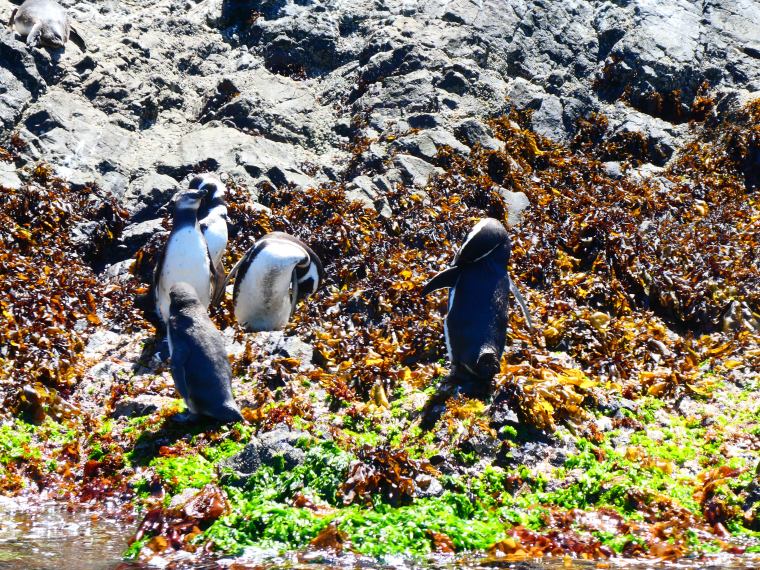
Where to start budget backpacking South America?
This probably depends mainly on where you’ll find a cheap flight to. If you follow our advice and concentrate on one region, you can easily make a loop and leave from where you started.
Long-time travellers should get any best-amazing-discounted-promo flight to Anywhereville, then work up their route from there; if you don’t know where you’ll be at the end of your trip, you can always buy a return ticket one month in advance.
We started our trip in Salvador de Bahía, Brazil, simply because it was the cheapest we found. Actually, the 5 or so cheapest destinations from Europe were in Brazil – go figure. From there, we built our backpacking itinerary in South America with a few weeks in advance. We kept hearing about new places along the way, so our route kept changing. It’s important to be flexible.
Here are the questions you should ask yourself:
- which countries do I definitely want to visit ?
If you want nothing else but Argentina and Colombia, that’s going to be tricky, geographically. But if you’re open-minded, we promise that you can be fascinated by every place.
- are there festivals/celebrations I want to see?
Celebrations in South America are often beautiful, so full of life, music and colours. Plan well in advance if you’re interested in any of them. If you aren’t, then stay away. Towns are full and it becomes really hard to find accommodation; things also get suddenly expensive.
- which weather am I ready to cope with?
Remember that all the South of the continent gets freezing cold in winter (June-August); the North can be intolerably hot at the same time, when it’s summer there; and the rainy season in the Andes can be downright miserable, between January and March.
How do you travel between countries in South America?
As we said before, if you restrict yourself to one region, or if you have unlimited time, there’s no need to take a plane . Taking the bus to go from one place to another will become a routine; one that is usually cheap and doesn’t need booking much in advance.
Crossing a border by bus is not more complicated than that, but it takes time. Add 30 min to 2 hours of red tape to the normal journey. Better even: ask the person you get your bus ticket from, they will know.

What to pack for a backpacking trip in South America
What you need to pack boils down again to what regions you’ll be visiting. We hope this guide has already given you a precise idea of the climate you can expect there. We’re giving you a list of what is either indispensable or goddamn handy to have on your travels in South America.
Now don’t be scared by the quantity, we’re just trying to be comprehensive!
Our tried and tested backpacking South America packing list:
- hiking clothes (technical t-shirt, trousers, boots, fleece)
- thick jacket for Patagonia or the Andes
- rain jacket
- flip flops/sandals, for the beach or indoors
- swimming suit
- a hat or something to protect your head ; sunglasses
- big scarf that can be used also to sit down on
Don’t bring a lot of stuff if you go to Bolivia, Ecuador or Peru because there are beautiful clothes there to buy for cheap. So leave space in your bag.
- your usual responsible traveller kit (foldaway bag, reuse cup, water bottle, water filter, lunch box, cutlery)
- useful phrases and words in Spanish and Portuguese
- a tent if you want to camp
- a sleeping bag even if you don’t camp but want to Couchsurf
- maps.me: very detailed maps that can be downloaded, perfect for nature hikes
- wikiloc: precise hiking trails with descriptions, maps and tips, works offline with a small fee
- VidaLingua: a great language app to get you starting on the lingo
Entertainment, especially good for long-term travels:
- 1 book: you can swap it indefinitely in every hostel or cafe that offers book-swapping
- a pen drive to either load photos or swap films
- playing cards, it’s always a great way to make friends (and extra money?)
A brief overview of South American countries
If your idea of South America comes from 100 Years of Solitude and Jurassic Park , you’re in for a surprise! As a vast continent subject to many influences and to different levels of development, there’s not one but several realities.
Here’s a brief description of each country; a note on what kind of travellers they can attract; and some of the best places to visit in South America.

What to expect:
A colourful country where the north is hot Caribbean beaches, the east is dense rain forest and the south is the cold climate of the high plateaus. Distances are big and roads are in badly need of repair. People are very welcoming but deserted streets and paths can be dangerous.
Perfect for:
1 or 2 months.
Hiking and horse riding in the jungle or in low mountains ; hot days at the beach ; church -hopping in pretty colonial towns and interesting museums ; scuba diving; greasy street food .
On the beaten path:
- Tayrona National Park
- Medellín , the friendly city
- Guatapé, a very colourful village
Off the beaten path:
- the Lost City trek through the jungle
- Tatacoa desert, hot rock formations
- Caño Cristales, the “Rainbow River”
Don’t forget:
“ Don’t give papaya “, meaning don’t flash your belongings at will. Colombia can be risky, so keep your wits about you at all times.
Read our complete guide to backpacking Colombia

A developed country with good roads and infrastructure. A landscape divided in 3 stripes: warm coast, cold Andes, humid rain forest. The Indigenous traditions are mixed with a modern-ish lifestyle. Mind the high altitudes and medium temperatures all year round.
3 to 4 weeks.
Hiking in very different landscapes; unique flora and fauna ; nights out in party places; comfortable stays close to nature and traditions; outdoor activities .
- Quilotoa Loop around a volcano lake
- Galapagos Islands and those crazy blue footed boobies
- Baños , an adrenaline-filled mountain town
- Cuenca, lively colonial town
- Vilcabamba, the hippies’ haven
- Cajas National Park
Your US dollars. That’s Ecuador’s official currency since 2000. But beware: all US coins can be used in Ecuador, but the money coined in Ecuador is of no worth in the USA.
Read our complete guide to backpacking Ecuador

A stark contrast between mass-tourism spots and the underdeveloped rest of the country. Therefore bad off-the-beaten-path infrastructure but not lacking. Strong Indigenous traditions and an active market life. Mind the long travel distances, and the high altitudes with cold temperatures in the Andes and humidity in the Amazon.
1 month or more.
Old ruins and pre-Hispanic civilisations; hiking to very remote nature places; impressive natural landmarks; greasy street food .
- Inca Trail to the Machu Picchu
- Cusco and other sites in the Sacred Valley
- Huaraz , its mountains and lakes
- Kuélap , stunning pre-Inca site
- Colca Canyon
- Choquequirao several-day hike
To always double-check prices. Tourism is big in Peru and sellers, bus drivers and tour operators often want to take advantage of tourists.
Read our complete guide to backpacking Peru
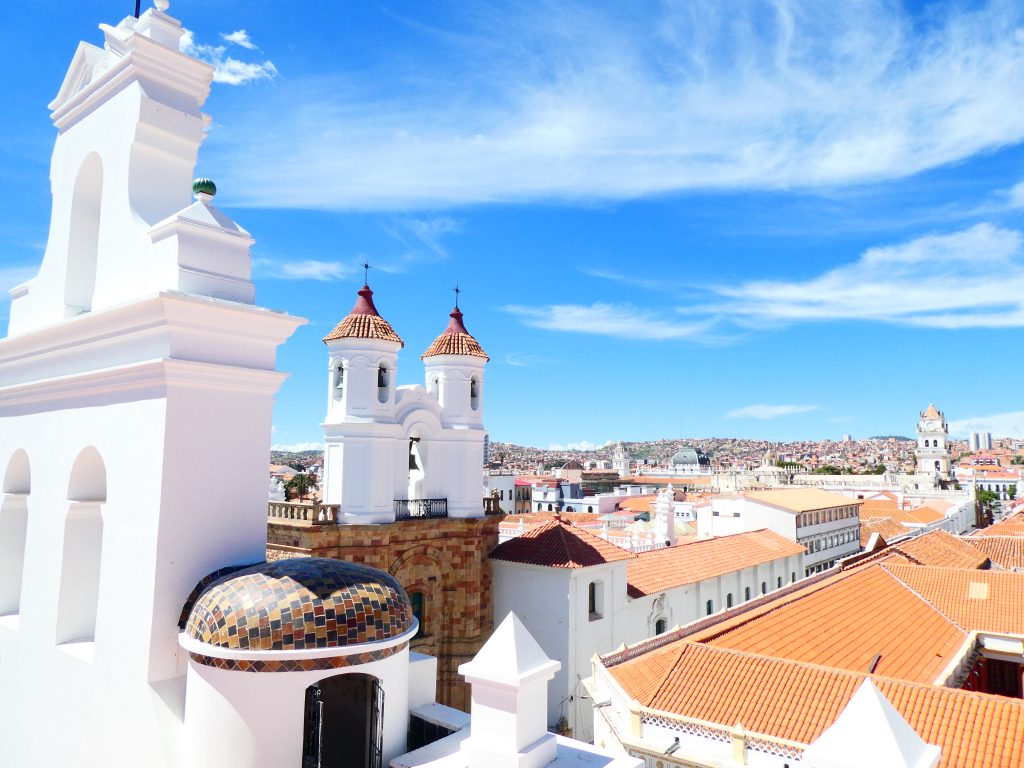
A very poor and cheap country where infrastructure is lacking. There’s a very tangible traditional Indigenous lifestyle and an active market life. The roads are really bad and can make many places secluded or cut-off in the rainy season. Keep in mind the high altitudes with very cold temperatures.
2 to 4 weeks.
Adventure backpack trip in authentic destinations; budget travel ; unique landscapes ; street food .
- Uyuni Salt Flats
- Titicaca Lake and its sacred islands
- Sucre , white colonial town
- the wilderness of Noel Kempff National Park
- Sajama National Park
Your toilet paper. Services are lacking in the country, and paper in public loos is part of it. Also, always have some coins with you, as sellers won’t have the change.
Read our complete guide to backpacking Bolivia

A very developed and expensive country where prices are similar to Europe and North America. Most towns are multicultural, with many expats and high-end locales. A constant informal street market, everywhere. An overly stretched country with very long distances.
Unique landscapes ; comfortable towns with all services; nightlife and culture with interesting museums ; road trips and slow travel and outdoor activities ; street food .
- Atacama Desert
- Torres del Paine National Park in Patagonia
- Valparaíso , colourful university town
- Chiloé , a rainy archipelago
- cosy Puerto Varas and Volcano Osorno
- Humberstone, an abandoned mining village
Read our complete guide to backpacking Chile

A very European population with high living standards and a vibrant city life. It’s a developed country with very good infrastructure. The people are very friendly and incredibly helpful. Mind the ongoing economical crises that make cheap and changeable prices. A large country with very different climates and long travel distances. It gets very cold when you travel south. If we had to choose the best country in South America, that would be Argentina.
Comfortable holidays or “staycations”; nightlife and culture with interesting museums ; outdoor activities ; budget travel and hitchhiking; road trips ; very diverse and equally stunning landscapes ; foodies and vegetarian travellers.
- Buenos Aires
- Patagonia, from the ‘ Lake District ‘ to Perito Moreno glacier
- Iguazú Falls
- Mount Aconcagua Provincial Park
- wines and fun in Mendoza
- Córdoba’s mountains
Argentinian Spanish is rather special; even if you’ve learnt Spanish, you might feel somewhat stranded at first.
Read our complete guide to backpacking Argentina

A poor and very rural country where the Gaucho traditions are still very strong. Expect cowboys working in ranches and drinking cold mate (“ tereré “) all day, that sort of things. Asunción is among the oldest capitals on the continent and still retains, at least in part, some colonial charm.
2 or 3 weeks.
Off the beaten path travels; rural stays; remote nature and wildlife encounters; budget travel ; slow travel ; cheap shopping.
- Jesuit ruins
- Ybycuí National Park
- Asunción, the capital
- Gran Chaco, dense forest and plains
- Encarnación, a pretty town
- Outdoor fun at Eco Reserva Mbatoví
Our complete guide to backpacking Paraguay is coming soon!

A very European population with high living standards and vibrant city life in Montevideo, the capital. A developed country with very good infrastructure. The people are very friendly and helpful. You’ll enjoy the progressive politics and mentalities.
Comfortable holidays or “staycations”; slow travel ; rural stays; urban culture; vegetarian travellers; LGBT travellers.
- Montevideo , the capital
- Punta del Diablo and Santa Teresa National Park
- Colonia del Sacramento , small colonial town
- Cabo Polonio, secluded hippy spot
- Tacuarembó, the gaucho land
- San Gregorio de Polanco
Uruguayan traditions are very similar to those of Argentina; but you don’t want to mess around telling them that tango was born in Buenos Aires!
Our complete guide to backpacking Uruguay is coming soon!

A huuuge, diverse and colourful country with the rain forest, innumerable beaches but no real mountain range. Always lots of life on the street and friendly, welcoming people. The population is very mixed, but with a latent racism and sexism. It’s a rich, economically developed country, with good infrastructure and prices are medium. Mind the very long travel distances.
2 months, or focus your trip on one region.
Very remote nature experiences ; road trips ; church-hopping in colonial towns ; hot days at the beach ; nightlife and culture with interesting museums ; comfortable towns with all services; outdoor activities.
- Rio de Janeiro and the Pão de Açúcar
- outdoor activities on the island of Florianópolis
- the Amazon rain forest
- Salvador de Bahía
The language of Brazil is Portuguese, not Spanish; it’s a Portuguese that’s very different from the one spoken in Portugal.
Read our complete guide to backpacking Brazil
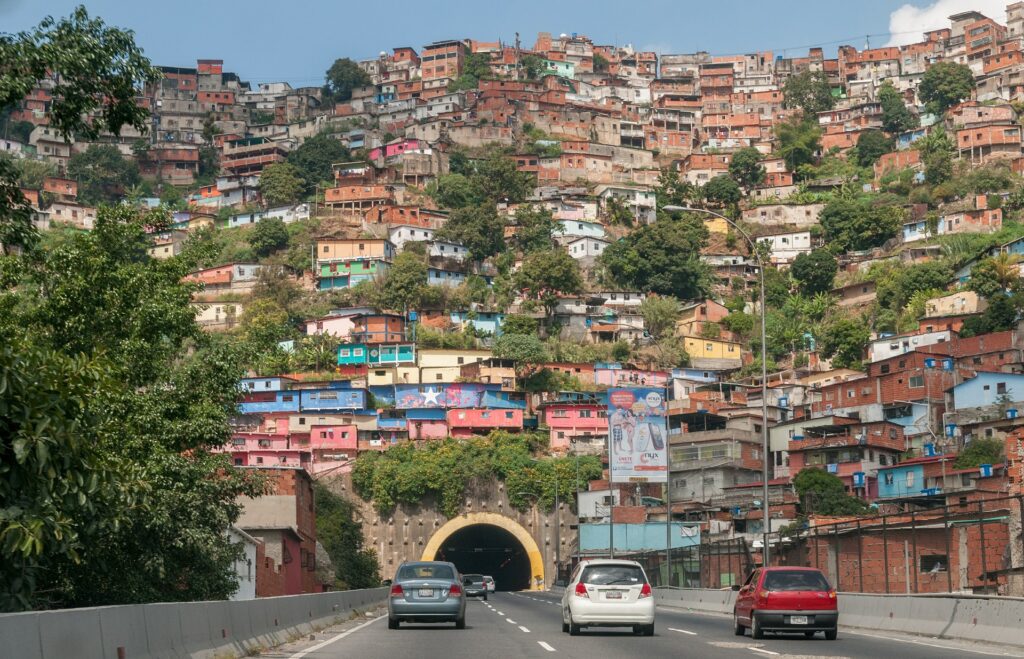
A poor country with a few major towns and many natural treasures, among the tallest waterfall in the world. Among the best hikes in South America. A lively culture with lots of street food and talkative people. Caribbean beaches and islands. A large but risky rain forest area that’s home to the guerrillas.
Off the beaten track travels; budget travels ; hiking and horse riding in wonderful nature ; hot days at the beach ; boat touring , water sports and outdoor activities ; street food .
- Salto del Angel waterfalls
- Los Roques Archipelago
- Medanos de Coro desert
- Mochima National Park
- Mount Roraima
- Caracas, the capital metropolis
It’s really not safe to travel to Venezuela right now; you should avoid it when you backpack in South America.
Our complete guide to backpacking Venezuela is coming… as soon as the situation settles down!

Eco backpacking travels in South America
Please remember that such a beautiful trip is a one-time opportunity to be a responsible traveller – and make your contribution to responsible tourism on the continent.
It’s important to be respectful of the people you meet, even if their culture is different from yours; even when they stare at you because you look different. Many people will be happy to have their photo taken, but please ask them first.
Bartering prices can be fun, but don’t haggle forcefully . Each object has its fair price; and that takes into account both what you can afford and what the seller needs to make a living.
When you travel South America, take the time to understand the reality of a place. It doesn’t mean you should live 6 months in a region; a few hours may be enough. Just don’t rush it. Ask questions. Listen. You’re here to learn and grow.
Please, pretty please, avoid attractions that are ethically wrong . Because an attraction is advertised, even if it’s a popular thrill, it doesn’t mean it’s right.
The plague that is plastic
Now, we really want to focus on this. It’s not much more difficult to avoid plastic on your travels than it is at home. What you need is preparation and consistency. You just need to be ready with your own foldaway bags , your own reusable cup for takeaway drinks, your own cutlery for the food.
And If you don’t have a travel bottle yet, you should really get one. One that isn’t in plastic because, once again, plastic is not good for you .
Please check again our eco travels tips for responsible tourism
Are you planning a budget backpacking trip through South America? Do you have any questions we’re not answering here? Feel free to tell us in the comments!
Like it? Pin it!

Don’t miss any of our budget travel guides!
First Name:
Email address:
Not sure whether you want us in your mailbox? Read here what it means to subscribe.
By joining, you agree to share your email address with us (and Mailchimp) to receive emails from Green Mochila. You can unsubscribe at any time from any of our emails.
Share this post on:
Anthony fell in love with the world, and more particularly with South America. He wants to offer inspirational guides to the curious backpacker, travel stories to the online generation, and incentives for a more responsible and greener way-of-travel for everyone.
You could also like this:

All About the Ferry from Puerto Natales to Caleta Tortel

7 Badass Destinations for Your South America Honeymoon

The Shape of Travel to Come

Bus Transportation in South America: Everything You Need to Know
20 comments.
What a wonderful and informative post. I would love to visit South America, but I probably won’t have months of time to travel around. You gave me a brief idea of what to expect where and now I will have even more problems deciding where should I go first. Haha. Thanks for sharing all that.
This guide is here to open up a world of possibilities. Hopefully it inspired you to go traveling in South America. Thank you for your visit!
Woah, this is fantastically comprehensive!
Wow! Such a detailed guide
Thanks for sharing. Will save this for future when we plan for South America
So far I just have been to Colombia in South America but ready to explre more. Even I am not exactly backpacker while traveling with backpack mostly, I find your information useful and inspiring. If talking about Colombia, the roads I traveled were in good condition except of being quite narrow in mountains. Also I felt safe in all places I visited. Thanks for sharing.
We’re glad you felt safe, Anita. We feel it’s important to remind those who travel to South America about the safety in Colombia. Thanks for your visit!
I would love to visit more of South America. I’ve only been to Ecuador briefly and hope to see not only more of that beautiful country, but also others as well. Even though I probably won’t be backpacking, you are giving me some great tips with this post. And I couldn’t agree more with the advice to learn some Spanish. While some people did speak English in both Quito and Galapagos islands, majority I encountered didn’t. My Spanish, even though basic, did come in handy.
That’s a great feedback, Aga: even basic Spanish will help on South America travels. Thanks for your visit!
Great guide! I went to Colombia for three months this year and had the best time. I am traveling to Argentina in a couple weeks time and your post made me super excited for my upcoming trip.
You will love Argentina, Marika! At least, we did, haha. If you haven’t seen it yet, we have a guide specifically for Argentina , check it out!
This is not only detailed, but also a super-organized post! As I continue to learn more about South America, I am struck by how much you must have grown during your time there. Thank you for sharing so much information, and for your great writing.
Thank you for your kind words, Kevin. Travels tend to have that effect indeed, and our South America trip will always remain a very dear memory to us.
Wow what a post. This is epic, you put so much effort into it. I admit I learned so much from it. And want to go to Peru, Ecuador and Bolivia more than ever. Great guide Anthony.
Thanks a lot, John. Now thinking of renaming the post “Epic Backpacking across South America”. Those Andean countries are a great choice – you would love Lake Titicaca.
Excellent post – one of the best I have read. It is clear, well structured and insightful. I love the concise overview with the links to more detail and all the practical advice you give. If I am honest my days of hitching and couch surfing are done, but the information here is easily transferable to other kinds of travelling. Thank you.
True Jane, not everything here is about backpacking South America solo. We want to help whoever is travelling in South America. Thank you so much for your kind words!
Yes, I find all the answers in your blog about backpacking about south america. This article helps me a lot. If I said honestly this article made my day. Thanks for everything.
That’s very nice to hear, thank you for your words Katherine! Hope you enjoy your trip to South America.
I am planning to go for an extended tour of South America with my family. That’s why I am trying to get some information so I can make a proper plan. I read your blog and note all the important points because it’s helping me when I go to South America. Thanks for sharing with us all the answers as a tourist looking for before travel.
Glad you could find all the info for your South America travel plan, Joe. Enjoy your trip with your family!
Leave A Comment Cancel reply
Your email address will not be published. Required fields are marked *
This site uses Akismet to reduce spam. Learn how your comment data is processed .
Privacy Overview
- Personal Blogs
- Privacy Policy
- Africa Overland Tours
- South Africa
- Isles of Scilly
- Northern Ireland
- Czech Republic
- Netherlands
- Easter Island
- Galapagos Islands
- Accomodation
- Budget Friendly
- City Breaks
- Inspiration
- National Parks
- Off The Beaten Track
- Solo Travel
- Bloglovin’

Packing List for 3 Months in South America

Table of Contents

How do I begin packing for 3 months in South America?
If there’s anything that the above two photos prove, it’s that South America is a diverse continent with various landscapes, climates, altitudes and terrains to conquer! Given the variety, packing for 3 months in South America can be very daunting, but do not fear, it’s super easy!
Considering this was my first time packing for a trip longer than 3 months, I think I did pretty damn well! Of course, everyone makes a few errors in their packing (did I actually wear that super pretty dress for Instagram photos? Absolutely not!) so hopefully you can learn from my mistakes!
- Take your route into consideration carefully – Before using my packing list as your bible, check out my 3 month South America itinerary to see what I got up to! If you’re heading to places like Patagonia or doing hikes that require you to bring your own camping equipment, you will of course need to factor this into your packing plans.
- The hard and fast rule when it comes to packing for a trip of any length is that you don’t need half as much as you think you do. Make a list of everything that you think you will need, get everything ready to be packed and then re-assess and put half of it away!
- Laundry is not an issue in South America. As long as you’re not in the middle of an arduous trek, you will be able to find a launderette on every street corner! What’s better is that all of your laundry will be done for you, dried and neatly folded for just a few dollars.
- Make sure that there is some spare space in your bag. While it may be tempting to pack that extra pair of shoes, I can guarantee that you’d rather bring home some souvenirs (no backpacker manages to leave South America without a fake Alpaca wool jumper).
- Remember that you can buy items along the way! Unless you have very specific requirements, all toiletries can be purchased as and when you need them. In respect of cheaper items that you only need for a brief period of time, buy them en route and then gift them on to a fellow backpacker – I purchased a woolly hat for my time in the Uyuni Salt Flats but barely wore it, so ended up gifting it to a fellow traveller who was heading to colder climates than me.
Without further ado, here’s everything how I tackled packing for 3 months in South America!
- A comfy backpack and daypack – I highly recommend the Osprey Fairview 70 which is a 57L backpack with a detachable 13L daypack. For men, the equivalent is the Osprey Farpoint 70 (both of which are very popular on the backpacking scene – and for good reason)! The best thing about this backpack is that it opens up fully like a suitcase, so you don’t need to stick your arm the entire way into the bag to find the thing you were looking for at the bottom. You’ll be the envy of everyone in the hostel!
- Small Cross-Body Bag – When travelling in cities, I preferred to use a small cross-body bag like this one . When travelling between destinations, it slotted nicely into my day-pack and didn’t take up any extra room!
- Packing Cubes – Packing cubes will become your BEST friend. This was the first time I had used them and now I won’t travel without them!
- Bum-Bag – Okay, a bum-bag (or “fanny-pack” for all the Americans reading this) isn’t the most stylish item you can bring, but it is very handy! I brought mine with safety in mind (i.e. keeping some cash close to me in case of being mugged – which thankfully didn’t happen) but I ended up using it as a place to handily store my camera while hiking!
Clothes – Outerwear
Your choice of outerwear will be fundamental given the range in climates. Packing the wrong outerwear could leave you extremely cold or the complete opposite where you end up carrying around a huge coat that never gets worn.
If you really don’t have enough room in your bag to bring outerwear from home, you can find lots of outdoor clothing stores in places like Cusco (your base for starting the Machu Picchu trek) but be aware of inflated prices.
- A good quality rain jacket – It can rain a lot in the Andes, so a good quality rain jacket will be your saviour (no matter how ugly it may be). Pick something lightweight that will break the wind to keep you warm but be easy to pack away when not needed.
- A warm fleece/hoodie – The comfier and warmer, the better. I tried to pick a fleece that was a bit more stylish so it didn’t feel like I was just wearing ugly hiking gear all the time!
- Gloves – Gloves will definitely come in handy on high-altitude hikes where temperatures drop (or if you’re clumsy like me, it will save your hands from scratches and cuts if you fall over…).
- Multi-use scarf – I purchased a travel infinity scarf which turned out to be a great investment! Not only is it an additional layer to brace the cold with, the secret pocket means you can keep your valuables (phone and credit card etc.) close to you and I used it as a pillow on bus journeys!
- Headband – A cute headband is super handy to cover up greasy hair on multi-day hikes where showers are a distant dream!
- Sunglasses – While they are the polar opposite of the last few items, make sure you have some quality sunglasses for your trip. And make sure you don’t sit on them and break them within your first week of travelling (speaking from experience here).
Clothes – Bottoms
When it comes to bottoms, variety is key. Bottoms can be hard to layer so you need to be prepared for a multitude of different climates, I survived just fine with the following:
- 2 x shorts – I packed two pairs of lightweight denim shorts (blue and black) for the warmer climates. If I could do it all again, I would probably swap one pair for a sportier style – cycling around the vineyards of Mendoza in denim shorts wasn’t particularly pleasant!
- 2 x jeans – I stupidly bought two pairs of jeans with me. In cooler destinations, I lived in my trusty black jeans (the ASOS Rivington are my jeans of choice) and the grey pair lived at the bottom of my bag for the entirety of the trip. Unless you’re a jeans lover, only pack one pair!
- 2 x sports leggings – South America is filled with incredible hikes, so make sure you’ve got at least one comfy pair of leggings . If you’re going to do the 4-day Inca Trail , don’t worry about only having 1-2 pairs, everyone is in the same stinky boat!
- 1 x thermal leggings – If you’re planning on spending time at high altitudes, it’s advisable to have some thermal leggings to sleep in! These were extremely useful during my Uyuni Salt Flates experience (some of the accommodations were COLD at night)!
- 1 x lightweight flowy trousers – I am very glad that lightweight flowy trousers seem to be all the rage right now – these are dreamy if you are in a warm destination but want to be a bit more covered up – plus they take up no room in your backpack!
Clothes – Tops
Packing clothes for your top half is much easier. Essentially, you need to pick items that are easy to layer. Don’t bother bringing your favourite jumper as a warmer layer, you’re bound to pick up a “backpacker jumper” whilst on the road!
- 3 x normal t-shirts – In hindsight, 2 t-shirts would have been fine but female t-shirts tend to be so lightweight an extra one doesn’t hurt! I ordered this ASOS multi-pack for 3 cheap and cheerful t-shirts that I wouldn’t mind damaging/losing.
- 2 x sports t-shirts – Of course, you need some sports t-shirts to go with those sports leggings while you’re hiking!
- 2 x vest tops – The art of layering requires some basic under layers – I recommend this ASOS multi-pack .
- 1 x long sleeve top – This will come in handy for layering on cooler occasions. While on the Uyuni Salt Flats , I think I wore 5 layers of tops throughout the day so I could adjust as necessary!
- 4 x lightweight “nicer” tops – So far my packing list has been very very bland. To save my sanity, I chose to pack 4 lightweight nicer tops which I could wear with a whole range of bottoms to feel a bit fancier for dinners/nights out/exploring cities!
Clothes – Other
Now for all the added “extra” bits and bobs I included in my bag while packing for 3 months in South America:
- 1 x lightweight Summer dress – This is a real necessity in warmer destinations! Pick a lightweight dress that you can both wear in the cities or use as a cover-up on the beach.
- 1 x playsuit – Here’s where I admit my stupidity. I had visions of being “that girl” who had a change of outfit and wore beautiful clothes for Instagram. I packed a lovely red playsuit that sat at the bottom of my bag for the entire trip because let’s face it, I’m not “that girl”.
- 14 x underwear – I decided to take 2 weeks’ worth of underwear but I know a lot of girls who travel with a lot less! As already mentioned, laundry facilities in South America are plentiful, so don’t pack too many, it’s just a waste of space.
- 4 x hiking socks – Hiking socks are a necessity if you plan on doing any walking. No matter how comfy your shoes are, the socks can make a huge difference!
- 4 x bras (2 normal + 2 sports) – I packed one nude bra, one black bra and 2 sports bras to cover all bases.
- 1 x bikini – I spent more time in the mountains than by the beaches, so 1 bikini was more than enough for me!
- Sleepwear – Take some dedicated pyjamas if you want to… or just use your leggings and normal t-shirts to save space in your bag!
I took a very limited shoe selection. While it was absolutely fine, I would consider packing a pair of lightweight comfy trainers so that walking shoes weren’t my only sensible option!
- Walking boots/shoes – I opted for walking shoes rather than boots as I wanted to be able to wear them in cities too. I opted for a super comfy North Face pair which I highly recommend! To save room in your bag, always wear these when moving destinations or tie them to the outside of your backpack.
- Flip-flops – I picked up a £0.90 pair of flip-flops from Primark which I intended to mainly use in the hostel showers but I ended up living in them for most of my trip! Finding a pair of comfy flip-flops is fundamental!
- Sandals – I packed one pair of nice sandals which I intended to use as my everyday shoes in the warmer destinations. Unfortunately, they gave me HUGE blisters on day 2 and I never wore them again!
Travel “Necessities”
This is the one section where I probably did over-pack. Luckily all of the items are very small and I didn’t know what to expect from my trip, so wanted to be prepared for all outcomes!
- Currency, Debit & Credit Cards – I took some Chilean Pesos for the first leg of my trip alongside a credit card with no foreign transaction fees (I opted for the Santander Zero card ) and my normal debit card for backup.
- Passport and ID – While your passport is a given requirement, I also took my driver’s license to use as ID without the risk of losing my passport while out and about!
- Copy of Documents – Keep a copy of your passport and your travel insurance documents
- Torch – This is a necessity on some hikes which require very early starts. Most people opted for a more convenient headlamp, but I found a torch to be just fine!
- Water bottle – I bought this incredible Brita water bottle which filters dirty water before my trip and LOVED it. Unfortunately, a rather violent horse ride saw it fly from my bag and into the wilderness never to be found again.
- Travel microfibre towels – Okay, they aren’t the nicest things to dry yourself with but a microfibre towel is a MUST while travelling. My towel was accidentally taken by another traveller while I was in Chile and I learnt they are a lot harder to find and much more expensive overseas! Take two just in case!
- Padlocks – Invest in some good padlocks to keep your bag safe on long bus journeys and also to keep your locker safe in hostels.
- First Aid kit – Hopefully you won’t have to use it, but it’s best to have a small kit like this one just in case! Thankfully I didn’t need to use mine, even though not everything went quite to plan !
- Medication – Be sure to bring enough of your normal medication to see you through your journey. as well as some precautionary tablets such as painkillers and Imodium. Check with your doctors to see if you need any other medication for your trip – I brought malaria tablets for my trip to the Amazon Jungle. If you are affected by altitude sickness, it may be worth getting some Diamox before your trip too (I didn’t).
- Insect Repellent – Mosquitoes LOVE to bite me, so insect repellent is a must for me!
Gadgets/Electronics
Electronics are a very personal matter, so take as many or as few that you think you need. As a solo traveller, I tried to keep my “flashy gadgets” to a minimum and opted to take my point-and-shoot camera as opposed to my DSLR. I thought about bringing my kindle but instead downloaded the Kindle app on my phone which worked really well!
- Phone + charger + sturdy case
- Go-pro camera + charger + spare batteries
- Normal camera + charger + spare batteries (the Canon G7X is my weapon of choice)
- Various memory cards
- Portable charger
- Universal plug sockets
Toiletries / Cosmetics
The thing to remember with toiletries is that you can usually find whatever you’re looking for whilst travelling. So unless you have very niche needs or requirements, bring the bare minimum to get you going and then re-stock when necessary.
Lots of tour guides for hikes will tell you that you need to bring toilet paper with you. Don’t bother bringing it all the way from home, stock up when you’re in South America (I tended to just take as much as I think I would need for day hikes from my hotel)!
- Nail clippers
- Small scissors
- Conditioner
- Make-up remover
- Moisturiser
Like this post? Be sure to pin it!

You Might Also Like
The perfect three month south america itinerary, how to use the santiago metro, how hard is the colca canyon trek, my 2016 travel round-up, 6 responses to “packing list for 3 months in south america”.
Hi Danielle,
I am going on a 3 month South America trip and am so glad I found your website, your posts are super helpful!
I have quite a specific question, I wonder you could help with:
In terms of the backpack you have suggested, did you have any problems with airlines? (I.e. did you have to include it as checked luggage rather than hand luggage?) Also was this the same for domestic flights?
The standard hand luggage seems to be 55x45x25 and this seems to be a little over, so wanted to get your thoughts on this?
We are planning to fly into Colombia and work our way down (opposite way to your itinerary!) and we are looking to do a few internal flights also.
Hi Marie, firstly, I'm so excited for you!!
I checked my bag for every flight, but I didn't mind doing that as I found Latin American airlines to be very efficient overall. I think that I only had to pay a fee for a checked bag once (on a very budget carrier in Chile).
For the most part, I used the bus systems rather than flying, so I would have had to have put my main backpack in the storage anyway as it would take up too much room on my lap on a bus seat!
There are smaller versions of the bag that I had if you want to use it as hand luggage – a guy I met while travelling with had a smaller version but definitely struggled to pack all of his belongings for 4 months of travelling, whereas it was a breeze for me!
I suppose you have to weigh up where you want to "waste" time – potentially struggling to pack your things every time you move to the next destination or taking time to check your bag on flights. I don't think there's a right or wrong answer but I hope that helped somewhat!
Your trip sounded amazinggg!!
Both my partner and I are heading to South America for 3 months, we are going to be doing a lot of hiking through patagonia etc.
Do you believe the backpack you used would be suitable for this? I am very short to so trying to find a bag to suit this…
Thanks very much!
Thanks for the comment!
I met lots of people who had the same backpack as me who visited Patagonia.
I did research Patagonia briefly before swapping it with a trip to Easter Island… I think there are refugios that can store your main bag/any belongings you don't need while you hike. Then you can collect them when you're done – obviously, the lighter your bag is while hiking, the better. This bag is very light and compact (especially the sizes smaller than mine).
It's probably not the most well equipped bag for camping gear (I don't know, I didn't have camping in mind when I was bag shopping) but everyone I met made it work! There are straps the bottom where you can attach a sleeping bag etc.
You need to think about how you can utilise the entire bag, not just the space inside. For example, we would tie our hiking boots to the outside of the bag when not using them to save space in the bag (unless taking a flight where we would have to wear them).
People who had been hiking/camping through Patagonia also had pots/pans/cooking utensils tied to the outside of their bags.
I'm short – yes, if it's the bag that feels most comfortable for you and you want the suitcase style entry – go for it!
Hey Danielle,
Just wanted to start off by saying your website has been SO helpful for me as I’m planning to go to South America next year for 3 months too – so thank you!
Question for you: I think I’m more of a flashpacker, and I was planning on taking a small rolling suitcase (ones you can generally store in overhead lockers on planes) and a backpack (c.25l). I know people generally use larger rucksacks instead but I’ll be doing a west coast cali/ vegas trip beforehand too and feel more comfortable with having a small suitcase. Do you foresee any issues in me doing so?
Not really intending to hike either so let me know what you think!
Thanks, Maddy
Hi Maddy! Glad my posts have been useful – there’s plenty more to come!
I don’t see that a rolling suitcase will present any HUGE issues… The main things I would be concerned about are: 1. Hostels rarely have lifts so you’ll be lugging that bag up and down stairs very regularly! I always find a backpack easier for stairs! 2. Bus stations aren’t always in the centre of town, so you can end up walking for a little while. I find a backpack comfier than pulling a3. suitcase but everyone has personal preferences! 3. Hostel lockers come in all sorts of weird and wonderful shapes and sizes, a hard shell suitcase would be more difficult to squash into a locker than a squishy backpack.
I wouldn’t rule out a suitcase completely – if you’re more comfortable with that option, go for it!
Have the BEST time and feel free to drop me any questions that you have! 🙂
Leave a Reply Cancel reply
Your email address will not be published. Required fields are marked *
Notify me of follow-up comments by email.
Notify me of new posts by email.
Going Away?
Subscribe to my blog.
Email Address
Privacy Overview

- December 4, 2021
- No Comments
4 Expertly Curated Three-Week South America Travel Itineraries & Routes
What’s the best travel route for three weeks in south america.
We think visiting two countries in South America is a great idea over three weeks . That gives you around 10 days in each country, which is more than enough to see the best sights.
Here are all the different options we think fit well with three weeks in South America:
- Ecuador & Peru – travelling south through Mainland Ecuador and finishing in Cusco/Machu Picchu
- Peru & Bolivia – starting with the best bits of Peru and ending with the Salt Flats in Bolivia
- Bolivia & Chile – Epic adventure with the Amazon and Salt Flats in Bolivia, and lots of trekking and nature in Chile
- Chile & Argentina – following the wine route through Chile and into the north of Argentina

#1 Three Week South America Itinerary: Ecuador & Peru
- Pros: Cheaper, short easy journeys in Ecuador as it’s mostly buses overland
- Cons: one flight which will add to the cost, No visit to the Galapagos Islands included
Here’s the complete three-week South America itinerary that includes Ecuador, Peru, and Machu Picchu:
- Day 1-2 – Quito
- Day 3-4 – Cotopaxi
- Day 5- 6 – Quilotoa
- Day 7-8 – Banos
- Day 9 – Guayaquil
- Day 10 – Lima
Day 11-12 – Paracas
Day 13-14 – huacachina.
- Day 15 – 16 – Arequipa
- Day 17-21 – Cusco & Machu Picchu
Day 1 – Quito
We are starting this three-week South America itinerary in Ecuador’s capital – Quito.
Whilst there you can explore the UNESCO historical centre, visit the equator line at Mitad Del Mundo , and have a night out on the town. If you are feeling brave you can also attempt your first hike at altitude and climb Volcano Pichincha which looms over the city.
For more information on what to do in the capital, check out our guides below:
- The 19 Best Things To Do In Quito As A Backpacker
- The 10 Best Backpacker Hostels In Quito
Day 3-4 – Cotopaxi National Park
Now it’s time to spend 2 days at Ecuador’s best hostel – Secret Garden Cotopaxi. The hostel is set in the middle of the national park and has one of the best views in the world, directly opposite Cotopaxi Volcano.
From the hostel, you can plan hikes into the park, go horse-riding across the Andean planes, and even summit Cotopaxi if you are brave enough.
Read our review for all the reasons you need to stay at this hostel:
- Secret Garden Cotopaxi Hostel Review & What To Expect

Day 5-6 – Quilotoa
After a lovely stay at Cotopaxi is time for more trekking. A short journey will take you to the town of Latacunga. From here you can get a bus to the town of Quilotoa .
The town of Quilotoa is tiny but the main attraction is the huge water-filled crater created by a volcanic eruption around 800 years ago. You can walk to the crater in 5 minutes for incredible views but seeing as you have a full day, aim for the full trek around the crater which can take 4-5 hours.
Day 7-8 - Baños
Baños is the adventure capital of Ecuador.
There’s so much to do here including white-water rafting, hiking, and riding bicycles along a 16km stretch of road known as the ‘Route of Waterfalls’ to the insanely powerful waterfall ‘Pailon del Diablo’,
Banos is also the perfect place to relax! Massage and treatments are cheap here and there are several bath houses with thermal baths fuelled by the volcanoes surrounding the town.
Check out our Baños guide for more information:
- The Essential 4-Day Baños Itinerary
Day 9 – Guayaquil
After this, you will need a full day to travel to Guayaquil (7-8 hour by bus). Rest up for the night before flying to your next country on this incredible three-week South America itinerary – Peru!
Just 4 hours away from Guayaquil is Ecuador’s west coast. We haven’t included it on this itinerary as it doesn’t quite fit, the surf and party down of Montanita is definitely worth checking out if you are spending longer in Ecuador.
Check out our list of more of the best party beaches in South America if you are interested:
- The Best Party Beaches In South America

Day 10 - Lima
One day in the capital of Peru is more than enough to explore the bohemian district of Barranco and try some amazing regional dishes like ceviche. But there isn’t much here for backpackers so best to move on after a day and use your limited days in the more exciting places.
For more on Lima:
- The Backpackers Guide To Lima
- Lima Vs Cusco: Which Is Better If You Are Short On Time?
Paracas National Park is an untouched natural desert perfect for exploration and adventure. You can navigate the park by tour, bicycle , ATV, or dune buggy. Checking out the park at sunset is a must!
Check out our guides for more info:
- Paracas City Guide & 3 Day Itinerary
- 4 Ways to Visit Paracas National Reserve
Then after Paracas, it’s time to swap one desert for another with a visit to the famous oasis at Huacachina.
You’ll get another chance to fly across the giant dunes in sand buggies as well as sandboard down to the tallest of them, watch the epic sunset, and party the night away in the crazy Wild Rover backpacker hostel.
For more information on this unique place:
- Huacachina Backpacker Guide & 2-Day Itinerary
Wild Rover in Huacachina is also one of our favourite hostels in South America . For the full list of backpacker hostels, follow the link below:
- The Best Party Hostels In South America

Day 14-16 - Arequipa
Arequipa is an amazing city for backpackers, but the real wonder here is a visit to Colca Canyon – the second deepest canyon in the world.
Unfortunately, you won’t have enough time to trek down into it on this itinerary but you can visit for the day:
- 5 Ways To Visit Colca Canyon From Arequipa
Arequipa is also full of great backpacker hostels, restaurants, and bars to enjoy. Our favourite thing to do there is to find a rooftop bar and watch as the sun sets on all volcanoes surrounding the city.
Check out our itinerary below if you want to stay a bit longer:
- 3-Day vs 4-Day Arequipa Itinerary

Do you need a custom itinerary for your trip to…
South America?
Save yourself hours and escape the stress of trip planning I’ll design you the perfect South America itinerary in one call.
Day 17-21 – Cusco & Machu Picchu
The ancient capital of the Inca Empire , known for a wealth of archaeological remains and beautiful Spanish colonial-era architecture, is now one of the most popular backpacker hubs in all of South America.
Spend your first day here before preparing to travel to Machu Picchu.
There’s so much to do in Cusco though, so you may wish to extend this part of the itinerary and cut off days from somewhere else. I would recommend visiting Rainbow Mountain in Cusco if you can.
For more information on backpacker hostels and things to do in Cusco, head to the guides below:
- The 10 Best Backpacker Hostels In Cusco
- The Best Things To Do In Cusco as a Backpacker
Machu Picchu is the ultimate highlight of many people’s trips to South America. Visiting the marvellous citadel of the Incas, hidden amongst misty valleys, and set high above the clouds, truly feels like you are walking back through time.
The best way to do this is to take the train to Aguas Calientes on the morning of Day 18. Aguas Calientes is the town closest to Machu Picchu and the hub for travellers before they start their trek up to the mountain.
The train is a bit more expensive than the bus, but the journey is packed full of beautiful sights along the way as the train goes through the Sacred Valley.
For more information on how to book the train and prices:
- How To Take The Train To Machu Picchu
If you want to save money and take the bus, then we’ve outlined that here as well, but it does take a lot longer (8 hours compared to three):
- The 3 Best Ways To Get To Machu Picchu (Bus, Train or Trek)
On your final day, you will return to Cusco from Aguas Calientes and your three weeks in South America are over. If you would prefer longer in Cusco (as it’s one of the best cities in all of South America) we recommend cutting out Arequipa and maybe just visiting Huacachina for a night. This will give you three extra days.
If you have three weeks in South America and prefer to visit just a single country , then check out these alternative itineraries which may work better for you:
- Ecuador Three-Week Backpacking Itinerary
- Peru Three-Week Backpacking Itinerary
Or if you prefer the Galapagos Islands over the mainland then check out this 10-day planned itinerary that will get you to both:
- Galapagos Islands & Machu Picchu 10-Day Itinerary

#2 Three Week South America Itinerary: Peru & Bolivia
- Pros: All over land so no expensive flights
- Cons: Some long bus journeys
Here is the complete three-week south America itinerary that includes Peru, Machu Picchu, and Bolivia:
- Day 1 – Lima
- Day 2-3 – Paracas
- Day 4-5 – Huacachina
- Day 6-8 – Arequipa
- Day 9-12 – Cusco & Machu Picchu
- Day 13-14 – Copacabana
- Day 15-17 – La Paz
- Day 18-21 – Uyuni & the Salt Flats
Day 1-12 - Lima to Cusco/Machu Picchu
Follow the same itinerary as laid out above with a couple of changes.
You can take an extra day in Arequipa which will allow you to visit Colca Canyon . All trips to Colca Canyon start from Arequipa and take 2 days in total.
Trekking down into the second deepest canyon in the world is an experience like no other. You’ll spend most of your time picking your jaw up off the floor as you walk around in awe of the canyon’s vastness.
For more information on the guided trek:
- Colca Canyon: Guided Trek Vs Without a Guide
Also, if you prefer, you can spend longer in Cusco as it’s one of the best cities in South America. We recommend, either skipping over Paracas/Huacachina or just visiting each for a day if you wish to do this.
For more Cusco guides:
- The Best Restaurants In Cusco
- The Backpackers Guide To Nightlife in Cusco
After Cusco, you can then get the bus to Bolivia and straight to Copacabana which takes around 8 hours.

Day 13-14 – Copacabana
Lake Titicaca is the highest navigable lake in the world at 3,810 metres above sea level.
Half of it sits in Peru, the other half in Bolivia. The town of Copacabana on the Bolivian side is a small but pretty place filled with local markets and artisan restaurants, but it’s the lake itself that is the must-see.
Fun activities include walking up to the summit of Cerro Calvario to get beautiful views of the lake and taking a boat tour to Isla del Sol , the largest island on the lake.
Day 15-17 – La Paz
Once you reach La Paz you have an endless list of things to choose from such as biking down Death Road, trekking in the Valley of the Moon, or climbing Huayna Potosi.
3 days is a good amount of time to cover it all. We recommend riding down Death Road one day and then using the others to explore in and outside of the city.
Follow our La Paz guides to help you plan:
- Is Death Road Worth It?
- The 13 Best Things To Do In La Paz As A Backpacker

Day 18-21 – Uyuni & La Paz
You can either fly or overnight bus down to Uyuni. Once you arrive in Uyuni, it’s time to end this epic three-week South America trip with probably one of the best tours on the whole continent.
The 3-day Salar De Uyuni tour will take you from one unique landscape to the next, starting with the white expanse of the salt flat on day 1, to the high-altitude desert of the Andes on the next.
Your mind will be blown by all the incredible scenery and you will leave on a high. The perfect way to end an incredible 3 weeks in South America!
Our Uyuni guides have all the information you need:
- The Ultimate Uyuni Salt Flats Guide
- When To Visit Uyuni For The Mirror Effect
Or if you prefer to stick to one country like Bolivia and visit the Amazon instead of more places in Peru, then check out our Bolivia itinerary to see how it can work:
- Bolivia Three-Week Backpacking Itinerary

#3 Three Week South America Itinerary: Bolivia & Chile
- Pros: Lots of nature, fewer places visited so you get longer in each town
- Cons: Costs more compared to the other itineraries as Chile is more expensive and there are more flights included
Here’s the complete three-week South America itinerary that includes Bolivia & Chile:
- Day 1-2 – La Paz
- Day 3-6 – Amazon
- Day 7 – La Paz
- Day 8-11 – Uyuni & Salt Flat Tour
- Day 12-14 – Atacama
- Day 15-16 – Santiago
Day 17-20 – Pucon
- Day 21 – Santiago
Day 1-2 - La Paz
La Paz is the thriving capital of Bolivia and your first stop on this three-week South America itinerary.
For your day in the city, book onto a Red Cap walking tour to explore the sprawl that is La Paz, ride the cable cars around to some incredible viewpoints and then spend the evening enjoying the lively bar and club scene.
You also have one full day of adrenaline-fuelled fun on the Death Road tour . Your heart will be in your mouth as you bike down one of the most dangerous roads in the world.
Our 3 day La Paz itinerary can be found in full here for more information:
- La Paz 3-Day Itinerary
- The 10 Best Backpacker Hostels In La Paz, Bolivia
Day 3-6 - The Amazon
Visiting the Amazon in Bolivia is much cheaper and easier compared to other countries in South America. Most Amazon tours are 3 days and two nights.
The Pampas tour is the most popular among backpackers. On the tour, your days will be spent on a longboat winding through the tributaries of the Amazon searching for caimans, anacondas, and exotic birds. You can even go swimming with pink river dolphins!
This is one of the best tours in South America and a fraction of the price it would cost in countries like Brazil or Colombia.
Our complete guide to getting to Rurrenabaque and finding and booking an amazon tour can be found here:
- How To Visit The Amazon In Bolivia

Day 7 - La Paz
If you prefer to break your journeys up, then take an extra day in La Paz here.
The flight back from the Amazon is only 20 minutes so if you prefer to save the day then you can either hop on another flight down to Uyuni or take the overnight bus which takes 8-9 hours.
As this is a three-week itinerary, we recommend either enjoying the extra day in La Paz or flying; long bus journeys are cutting into the limited time you have.
Day 8-11 – Uyuni and the Salt Flats Tour
Your next stop is the town of Uyuni, most famous for the
The three-day/two-night tour will take you exploring one of the most surreal landscapes in the world. This is one of the best tours in the whole of South America and shouldn’t be missed.
Day 1 is spent on the actual salt flat taking the all-important perspective and reflection photos before spending a night in the famous salt hotel. Day 2 takes you out across the high-altitude desert to see even wilder landscapes such as volcanoes, geysers, and beautiful high-altitude lakes full of flamingos.
The salt flats tour then drops you off at the Chilean border where you can take a bus to the town of San Pedro De Atacama. Nice and easy!
For more on the Uyuni Salt Flat Tour including the best companies to book with, head to the post below:
- Is The Salt Flats Tour Worth It? 6 Reasons Why You Can’t Miss It
- Uyuni Salt Flats Packing List

Day 12-14 - Atacama Desert
Your mind may have just been blown with volcanoes, high-altitude lagoons, and surreal landscapes on the salt flats tour, but it doesn’t stop there.
Just across the border, the Atacama Desert still has some incredible landscapes worth checking out.
Why not rent a car and explore it yourself this time? You can head to the ‘Valle de la Luna’ to see strange rock formations eroded over millions of years or float in the tranquil salt lagoons of the desert surrounded by mountains and volcanoes.
Check out our Atacama Desert itinerary for more information on the best places to visit:
- An Adventure-Filled Atacama Desert 4-Day Itinerary
Day 14-16 - Santiago
Santiago is a long drive from Atacama so best to take a short 1-hour flight. Once in the capital, you can start with the walking tour to get your bearings and then visit one of the several museums Santiago has to offer.
For any extra days you wish to stay, you can take day trips outside of the city to Valparaiso , go trekking in the mountains or head to one of the many vineyards to try the best of Chilean wine.
Pucón is the adventure capital of Chile, and there are so many great activities on offer in this city including horse riding, kayaking, volcano trekking and much more.
You won’t be disappointed ending an epic three-weeks in South America here.
One of the best hostels in the country is here – Chili Kiwi Hostel which won HostelWorld’s Best Hostel in Latin America in both 2017 and 2018.
This hostel is in an unbeatable location on the shore of Villarrica lake, directly opposite the majestic Villarrica Volcano and only a short walk from downtown Pucón. The hostel has a nice garden with swings, hammocks, and treehouses where you can catch sunsets over the lake and volcano.
For more on our favourite hostels in South America, check out the post below:
- The 14 Best Backpacker Hostels In South America
Day 21 - Santiago
Fly back to Santiago to take your flight home. If this itinerary contains too many flights and long journeys for you then we have some other options.
From Santiago, you can take a bus across the border to Argentina into wine country. Keep reading as it’s the next three-week South America itinerary on this list.
Want to see three countries instead of two? Extend your trip to a month and you will have more than enough time. See the post below for how to do it:
- The Ideal 1-Month Backpacking Itinerary For Peru, Bolivia & Chile

#4 Three Week South America Itinerary: Chile & Argentina
- Pros: All over land so no expensive flights, off the beaten track
- Cons: Second part of the route is better with a car which can be expensive
Here is the complete three-week South America itinerary that includes Chile & Argentina:
- Day 1 – Santiago
- Day 2-3 – Valparaiso
- Day 4 – Santiago
- Day 5-8 – Mendoza
- Day 9-11 – Cafayate
- Day 12 – Cachi
- Day 13 –15 – Salta
- Day 16 – Humahuaca
- Day 17 – Tilcara / Purmamarca
- Day 18-21 – Salta / Buenos Aires
Day 1-3 – Santiago / Valparaiso
Santiago is a beautiful place and there will be some great restaurants in the city for tasting wines, or you could head outside of the city to the Maipo valley to start your wine tasting journey.
With snow-covered Andean peaks forming the visual backdrop, the Maipo Valley ranks as one of Chile’s most picturesque spots. It’s also home to some of the country’s top wines.
Another great city to check out is Valparaiso on the coast known as the “Pacific Jewel”. 45km away is the Casablanca valley, another great place full of bodegas and vineyards.
Do you want to do more than three weeks? To see how you can fit Chile into a longer South America itinerary, check out the post below that summarises six of the best itineraries I’ve put together:
- How Many Days Do You Need In South America – 6 Great Itineraries That Work For Every Traveller
Day 5-8 - Mendoza
It’s a short hop across the border from Santiago to reach Mendoza , Argentina’s best wine-producing region. Whilst here, one of the best things to do is head out to the vineyards, rent a bike, and hit up all the different bodegas on a self-guided tour.
You can pay a small amount for a tasting at each bodega, and you will end the day rather tipsy. Lots of backpackers do this and everyone else biking around ends up back at Maipu Bikes for a final round of drinks.
Other activities include trekking around Cerro Aconcagua the highest peak in the Western Hemisphere or escaping to Lake Potrerillos – a 7-mile- (12-kilometer-) long lake, fed by the Mendoza River. You can take a relaxing stroll around the lake’s edge for breath-taking views of the rugged landscape or for adventure travellers, go rafting or river boarding down the rapids of the Mendoza River.
Check out our North Argentina backpacking itinerary for more great ideas on some extra stops you can add into this part of the itinerary:
- North Argentina Backpacking Itinerary & Route

Day 9-11 - Cafayate
Cafayate is a must for wine lovers and follows on perfectly from a stay in Mendoza.
The town is the wine-producing region of the northwest of Argentina and is one of the world’s highest suitable locations for growing grapes. It’s second only to Mendoza as one of the best wine-producing regions in the country.
Check out our full guide to the town including the best bodegas and vineyards to visit here:
- Cafayate Best Things To Do & Town Guide
Day 12 - Cachi
Cachi is a small wine town in between Cafayate and Salta. It’s the perfect one night stop to break up the journey, enjoy more beautiful views of the valley and try some more wine.
Day 13-15 - Salta
Salta is the biggest city in the northwest of Argentina. It’s full of interesting sights such as the Museum of High-Altitude Archaeology (MAAM) which contains a perfectly preserved mummified corpse of an Andean child, thought to be sacrificed by her tribe hundreds of ago.
Make sure you rent a car here as the next part of the journey is heading right into the north of the country to check out three small towns that are off the beaten tourist track.
For everything you need to know about Salta:
- The 13 Best Things To Do In Salta As A Backpacker

Day 16-18 – Humahuaca, Tilcara and Purmamarca
Humahuaca is the first of three small towns along Route 9 which runs through the beautiful northern countryside all the way down to the city of Salta.
Here you can find Argentina’s very own Rainbow Mountain (and depending on who you ask, better than the more famous one in Peru). Everything else you need to know about Humahuaca from our favourite hostels to the best restaurants is here in our guide to the town:
- The Best Things To Do In Humahuaca
- How To Visit El Hornocal, Argentina’s Rainbow Mountain
Tilcara is the second town you come to along Route 9. It has the same laidback vibe of Humahuaca and is filled with artisan cafes, shops, and restaurants.
In the summer, it gets livelier with Argentinian tourists escaping the big cities and filling up the peñas (communal gatherings with traditional music from the region) and bars.
For more information on Tilcara:
- Tilcara Town Guide & 10 Best Things To Do
Spend one night here before driving back to Salta to drop off the car. On the way back if you want to stop off at a few places you can.
Another short journey south is the third town on Route 9 which includes Argentina’s second Rainbow Mountain – the Hill of 7 Colours.
Whilst it doesn’t sound as impressive as the 14 Coloured Mountain, the hill is just as colourful and impressive, and you don’t need to take a tour to see this one. You can see it from anywhere in town, but the best way is to walk along the Paseo de los Colorados, a 1.5 mile (3 km) easy trail for great views of this multi-coloured hill.
Purmamarca is also a good base for a trip to Salinas Grandes – Argentina’s spectacular salt flat.
27-30 - Buenos Aires
End an incredible three weeks in South America in one of its greatest capitals – Buenos Aires.
Known as the “Paris of South America” , Buenos Aires boasts renowned architecture, world-class cuisine, and fantastic nightlife. You’ll be ending the trip on a high!
For some alternative, one-month long itineraries in this region, check out the post below:
- 1 Month Chile, Bolivia, and Argentina Itinerary

Popular South America Itineraries
If you have more than two-weeks to spare then why not check out our other South America itineraries ranging from three weeks to three months:
- 5 Expertly Curated Three-Week South America Itineraries
- The Comprehensive Six-Week South America Backpacking Itinerary
- 4 Epic 1-Month South America Backpacking Itineraries
- The Perfect 2-Month South America Itinerary For Budget Backpackers
- The Ideal 3-Month South America Backpacking Itinerary
- The Perfect 1-Month Peru and Bolivia Itinerary
- The 8 Best Digital Nomad Cities In South America
- 4 Perfectly Planned 10-Day Itineraries For South America
- 4 Fast-Paced One Week Backpacking Itineraries For South America
- A Flashpacker Five-Week South America Itinerary
- From North to South: The Complete 10-Week South America Itinerary
- Colombia, Ecuador & Peru Itinerary: From Two Weeks To Two Months
- Suitcase Or Backpack? Which Is Best For South America?
- Author Profile
- Posts by the Author
- 4 Epic 1-Month South America Itineraries
- North Argentina Itinerary: Two Weeks On An Epic Road Trip
- Is Salta Worth Visiting? 12 Great Reasons To Go In 2024
- Which Is Better – Bariloche or Mendoza?
- A Guide To Argentina’s Rainbow Mountains: Which Is Better?
- 11 Best Things To Do In Cafayate (Argentina’s Wine Region)

Joe Bayfield
Hi I'm Joe Bayfield, Bayf for short. I love South America and want people to visit this incredible continent. I’ve travelled through Colombia, Ecuador, Peru, Bolivia, Chile and Argentina and also lived in Lima, Medellin and Buenos Aires. I write detailed South America itineraries to help you plan your next adventure!
Leave a Comment Cancel Reply
Save my name, email, and website in this browser for the next time I comment.

Travel South America With Ease
Sign up to my weekly newsletter for the latest itineraries, guides and deals for South America.

The Complete South America Packing List: For Vacationing, Backpacking & Hiking
By Author Steph Dyson
Posted on Last updated: 29th November 2023
So you’re going on an adventure to South America? Working out exactly what to pack for a short vacation or a longer-term backpacking trip can feel like a daunting prospect: after all, what happens if you forget something essential or find yourself completely underprepared for the weather, altitude or climate of South America?
Before my first ever backpacking trip to South America back in 2014, I remember feeling exactly the same way.
Since then, I’ve spent over five years living and traveling in the region and have backpacked, vacationed, and lived across the continent, writing guidebooks (and this blog!) along the way to help others get to grips with a trip to South America. I’ve traveled on a budget and traveled in style, so I know exactly what to pack for South America depending on the type of trip you’re taking.
I’ve overpacked (mostly), underpacked (rarely), and discovered exactly what items you can and can’t find across the continent if you forget or mislay them during your trip.
I’ve also learned which hiking, camping, and general backpacking gear can withstand months (if not, in many cases, years) of traveling, so I can talk with educated knowledge about what you should – and shouldn’t – invest your money in.
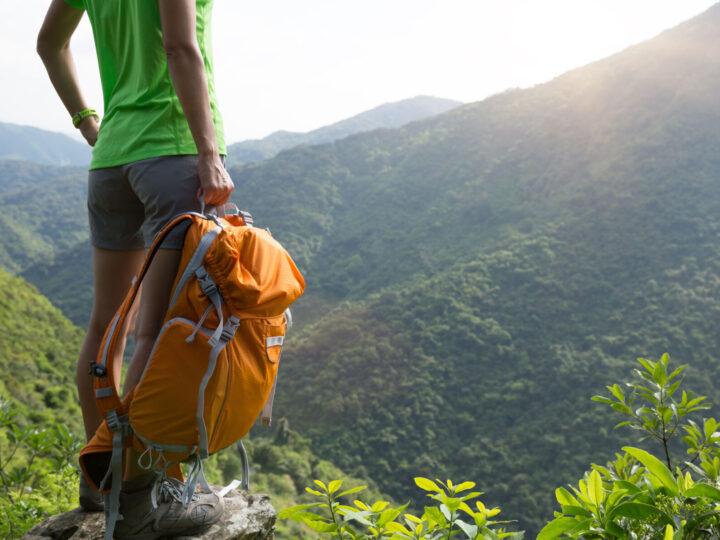
Click to navigate this article:
Key things to consider before packing for South America:
- What type of traveling will you do? Whether you’re planning a hiking adventure in Patagonia or hitting the beaches in Colombia , your luggage is going to look fairly different. This guide has been designed to cover most bases and has different sections that you can dip in and out of. You can also read my complete packing guide to Patagonia if you’re planning on spending most of your time hiking.
- Don’t overpack: laundry facilities are inexpensive across South America and located practically everywhere you’ll go. As a result, you can pack fewer items of clothing because you should be able to do laundry every couple of weeks. Turnaround at laundrettes can be as short as 12 hours and it should only cost a few dollars for a full load – making it extremely affordable. The only issue I’ve found is that they do have a tendency to damage your clothes, as well as occasionally losing socks and underwear. Always count the items of clothing you drop off and double-check everything’s there before you leave the shop when you pick it back up again.
- You can buy most things in shops in South America. Big cities tend to have all the shops you’ll need for picking up items of clothing, toiletries, and electricals, with large, modern department stores often your best bet. However, prices on imported goods can be higher than you’ll find at home; I’ve found this, particularly the case for electrical items and camping equipment (the latter of which is generally poor quality and very expensive).
- Safety can be an issue in South America. The fewer obviously expensive items you can pack (yup, I’m looking at you, the latest iPhone or MacBook), the less likely you are to get robbed, and the more you’ll enjoy your trip! You also want to always keep an eye and a hand on your belongings: this is very important in bus, train and metro stations where you want to have an arm through your rucksack strap or on your suitcase as thieves are very good at stealing them without you realizing they’ve gone. Make sure you also never put valuables into any luggage that goes into the hold on a bus or even into the luggage racks above your seat. Instead, keep valuable items at your feet and preferably securely attached to your person. Read our guide for more information about the safest countries to visit in South America .
So what do you need to pack for South America? Here’s my packing list honed over seven years of exploring the continent.
Backpacks for South American travel
The type of luggage you bring is a personal choice, and you do see travelers with wheelie suitcases in South America. However, if you’re planning on doing any multi-day hikes in South America (of which there are plenty), a backpack is the most versatile choice. Pulling a wheeled suitcase over cobbles or poorly-maintained streets in cities and towns across the continent is going to be hard work.
Finding a backpack that’s comfortable for wandering the streets from the bus stop to your accommodation, as well as when you’re on day eight of the O Circuit in Patagonia’s Torres del Paine National Park is no mean feat.
I’ve had the same backpack for the past seven years and don’t look forward to the day I have to part from it. Not only is it a women’s fit (a very important choice if, like me, you’re not the tallest), but it has an adjustable back system, which has meant I can adapt it to fit me more comfortably.
However, to be sure it would fit before I bought it, I took myself to a local outdoor shop to try on a number of backpacks. This is a great way to make sure you don’t sink loads of money into a bag that will cause you frustration – or worse, a bad back.
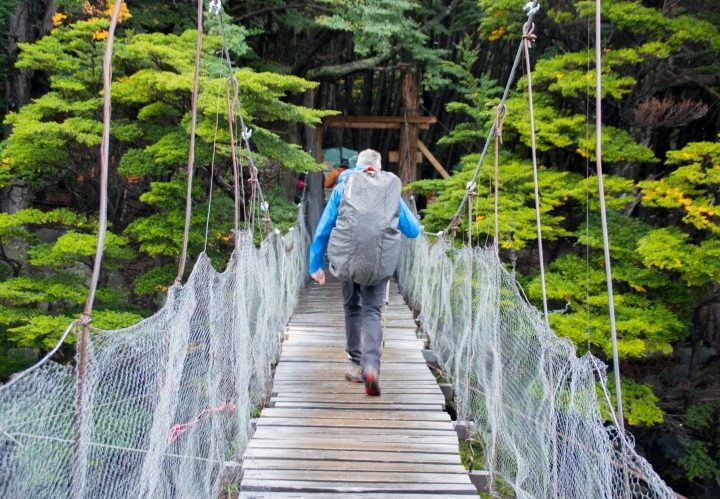
You also want a backpack that is as functional as possible. If you’re planning on hiking in South America or even traveling to countries near the Equator where it tends to rain heavily for periods of the day, a rain cover – either included or added to your pack – is a smart idea, while various pockets, including side pockets for stuffing with shoes or water bottles, give your backpack space to grow and store more things if needed.
Unfortunately, my backpack, the Berghaus Torridon 60 liter, is no longer available to buy. Instead, Osprey is a great brand that’s a little more expensive but known for being exceptionally reliable and long-lasting, making their bags ideal for both short and long-term travel.
- For her: With plenty of ways to adjust the fit, plus ventilation for keeping your back cool on sweaty treks through the city or great outdoors, the Osprey Aura AG 65 liter (if you plan on doing longer, multi-day treks: buy it from REI | Osprey | Amazon ) or the Osprey Aura AG 50 liter (for general backpacking: buy it from REI | Osprey | Amazon ) are sturdy, long-lasting and comfortable backpacks.
- For him: The men’s Osprey Atmos AG 65 liter (buy it from REI | Osprey | Amazon ) has similar functionality:
- Add a rain cover from REI | Osprey | Amazon to make sure your pack is 100% waterproof.
Wheeled suitcases for traveling in South America
Don’t fancy lugging your belongings on your back like an oversized turtle? A wheeled suitcase isn’t the most practical luggage for South America, but it’ll work, particularly if any hiking plans you’ve got will involve a daypack instead (more on that below).
When it comes to a wheeled bag, one of the main considerations is whether you go for a hard or soft case. Soft cases have the benefit of not cracking if placed under stain (and on buses in South America they do tend to like throwing the luggage around), but if you’re concerned about security, a hard case has the edge.
My favorite is the wheeled LEVEL8 suitcase. Not only is it roomie – it comes in 41L , 68L , and a whopping 108L – but it has three different zipped compartments, making it very easy to pack your belongings (and know where they are!).
The frame itself doesn’t weigh too much, either, which ensures it’s easy to wheel around and also doesn’t use up too much of your weight allowance! Mine has been brilliant and it’s easy enough to pack a small rucksack inside this suitcase for day trips.
- For him and her: Available in three different sizes and made from a durable hard shell, the LEVEL8 range of cases is my top pick and can be bought in three different sizes: 41L , 68L , and 108L .
Daypacks for South America
A day pack can serve multiple purposes on a trip to South America. For days spent exploring the city, a 20- to 40-liter backpack will be a perfect size, with enough room to carry water, a camera, and extra layers. It’ll also be the right size for day hikes, whether trekking in Torres del Paine National Park or for a day exploring Machu Picchu. They’re also useful as hand luggage on a plane or when traveling overnight on buses.
Again, I recommend comfort and functionality when it comes to a daypack. An adjustable waist strap is invaluable when you’re hiking, while a waterproof rain cover and smaller pockets for keys or lip balm are also handy.
I spent many happy years with my Lowe Alpine daypack, however, it’s a brand that’s practically impossible to find in the US and 25l is a little small if you’re planning on doing a multi-day hike. Instead, Osprey is again a great alternative.
- For her: You can find my Lowe Alpine 25 on Amazon or check out the Osprey Sirrus 36 , which is packed with pockets, has a waistband and rain cover, and is easy to adjust: REI | Amazon
- For him: The Osprey Stratos 34 has similar functionality as the women’s version: REI | Amazon .
Clothes for South America | Hiking and essentials
Choosing which clothes to pack for a South America trip is all about versatility – and recognizing that this continent is one hell of a huge place with an incredibly wide-ranging array of climates and altitudes.
No, it’s not always hot and sunny in South America and yes, there are places where it feels like it rains all the time (or it actually does if you’re visiting in rainy season). Before you begin, check out my guide to when to visit South America , which runs you through the types of weather you can expect in different parts of the continent. However, it’s worth bearing in mind that you’ll want to be packing for pretty much every possible climate if you’re planning a backpacking adventure that spans more than just one country.
It’s also worth noting that altitude can have a real impact on temperatures. If you’re heading to Cusco , Machu Picchu , Arequipa , Huaraz, Quito, La Paz , or other similarly high-altitude destinations, you’ll quickly notice that temperatures drop significantly at night. A warm fleece or down jacket will quickly become your favorite item of clothing.
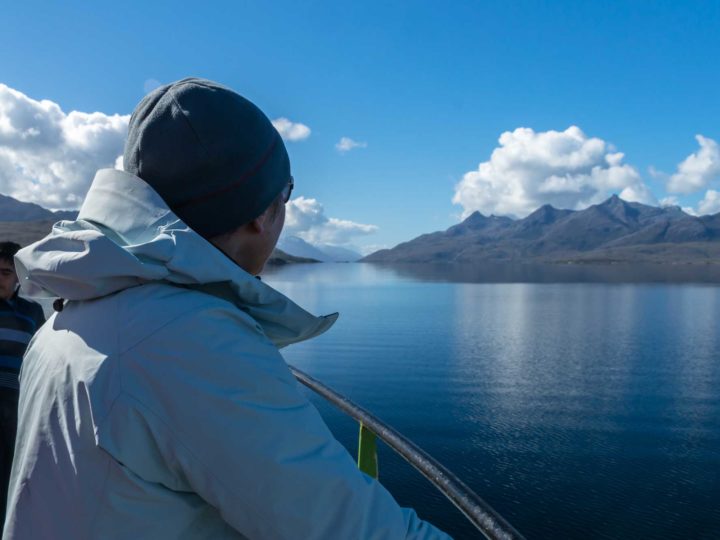
Finally, a note on fabrics. Quick-dry and moisture-wicking materials, such as polyester, nylon, and linen, are a good choice, particularly if you end up needing to do a wash in a sink in your hotel (you invariably will). Cotton will keep you cool, but takes absolutely forever to dry, while silk will end up getting crumpled in your bag.
If you don’t have much already in your wardrobe that seems good for traveling, REI have a whole range dedicated to travel clothing for men and women that’s worth checking out and that can be filtered according to material and qualities (such as moisture-wicking).
A waterproof jacket: I grew up in a family who takes hiking very seriously and I can’t fault my dad for persuading me that a good quality Gore-Tex waterproof jacket is an essential item of clothing for your bag. It’ll keep you dry and, if you spend more, the material is going to be breathable and stop you getting too hot or sweaty, even if you’re hiking. My latest jacket, the Patagonia Storm10 , is a three-layer waterproof (read: extremely dry) made from 100% recycled nylon. It’s very thin, which makes it light but also easy to layer up using a down jacket or cozy fleece beneath.
For cheaper budgets, North Face is always a good choice, too. Their Alta Vista jacket is a breathable, lightweight option at an affordable price point.
- For her: I love the Patagonia Storm10 Jacket as it’s an ultralight, easy-to-pack but fully waterproof jacket ( Patagonia ); the North Face Alta Vista Jacket ( Amazon | REI ) is significantly cheaper but offers good weather protection.
- For him: the Patagonia Storm10 Jacket is a good option ( Patagonia ) or the equally lightweight but waterproof Patagonia Torrentshell 3L ( REI | Patagonia | Backcountry ); if you want something more affordable, the North Face Alta Vista ( Amazon| REI ) is a good shout; if you’re looking for something that’ll last you a decade, check out pricey but industry-leading Arc’teryx ( REI | Amazon )
A warm fleece: Fleece is a material designed to keep you warm by trapping body heat; at the same time, it’s extremely lightweight. It’s not only great for cool evenings when the temperatures drop, but it’ll be a great addition to your hiking backpack if you head out into the mountains.
- For her: Go for this inexpensive one from Columbia or pick up an even cheaper one from REI
- For him: Mountain Hardwear have great options: REI | Backcountry | Amazon
A down jacket: I don’t think I wear any coat more than my down jacket. It’s because it not only provides me with a welcome extra layer, but it also packs down very small and light and can easily be worn under a waterproof jacket if I’m feeling really cold. Be aware that, while a down jacket is a great piece of kit, because down (the feathers used inside the coat for insulation) isn’t designed to get wet, you want one that’s either water resistant (pricey) or synthetic down (cheaper but heavier). I’ve been wearing a Jack Wolfskin down jacket (Amazon), which is packed with responsibly sourced down with 700-fill (a number that basically puts it at the top of the range when it comes to warmth). It’s also extremely light, so excellent for shoving in your pack for when you need it.
- For her: I love my new Jack Wolfskin down jacket ( Amazon ). The North Face has some good synthetic down jackets ( REI | Backcountry | Amazon ), while Mountain Hardw ear has some water-resistant down jackets ( REI | Backcountry | Amazon ).
- For him: REI has some good synthetic down jackets and some of the most affordable water-resistant down jackets
Two or three x hiking trousers and shorts: Whether you’re looking to hit the trails across South America or might do a bit of day hiking here and there, a couple of comfortable pairs of hiking trousers are must-haves; trust me, you’ll regret any hikes you do in jeans. Hiking trousers will also be extremely comfortable on days spent wandering around the city.
Investing in those that are quick-dry is a must (nothing’s worse than getting rained on and your trousers staying wet). prAna are known for the durability of their women’s hiking trousers, while Columbia have some great options for men .
- For her: Get prAna hiking pants at REI | Backcountry | Amazon .
- For him: Columbia’s trail pants ( REI | Backcountry | Amazon ) are a great option.
Two or three hiking tops: Lightweight, easy drying, and quick-to-wash hiking tops are also essential, particularly as they’ll keep you nice and cool in the South American humidity. Any sort of sports tops should suffice, but make sure they’re made from moisture-wicking materials.
- For her: REI have some great own-brand t-shirts
- For him: REI have some own-brand t-shirts for men, too
Hiking poles: They might seem like something you only need once you’ve gotten past a certain age, but hiking poles are now something I always take with me on a hike. Not only are they great for taking the pressure off your knees when you’re going downhill, but they’re extremely handy if you roll your ankle or injure yourself on the trail. Check out REI’s guide to selecting trekking poles or try Black Diamond from REI | Backcountry | Amazon .
Clothes for her
Three or four casual tops: These can be a blend of tank tops, short-sleeved (for protecting your shoulders from the sun), and long-sleeved t-shirts (the latter are good for the jungle when you’ll want all skin out of sight), as well as casual shirts (great for throwing over you in hot weather when you start burning). Sustainable companies such as Organic Basics and Tentree have some great t-shirts and tanks from recycled synthetic materials, organic cotton, and linen; just avoid light colors which will end up getting stained
A smart top or shirt: There’s likely going to be at least one occasion where you’ll want to dress up and a smart top or shirt can make you look respectable.
Two comfy linen trousers or similar: I never travel with jeans for the main reasons that they’re a) very bulky and b) horrifically unpleasant in hot, humid climes. Instead, I prefer linen trousers or ones made from a lightweight, quick-drying material, such as recycled polyester. Tentree has some great linen and recycled polyester trousers.
Two pairs of leggings: Leggings are an absolute essential when it comes to your South America packing list. I tend to have three in my backpack: two pairs for hiking and another pair that can be worn either out and about or for sleeping in cold climates. Any pair of leggings will do, but REI has some affordable options, while prAna does some really comfortable pairs ( REI | Amazon ) which have handy side pockets for your phone or other essentials on the trail.
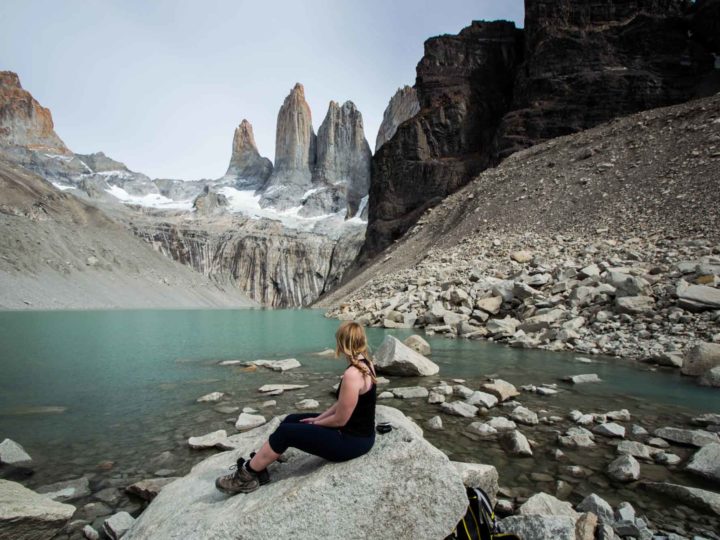
Two pairs of shorts: Depending on when you visit South America, it can get very warm, so a few pairs of lightweight and quick-drying shorts are a must (or just throw in a few more trousers if you don’t like getting your legs out). TenTree have some lovely linen shorts .
One dress or skirt: Sticking with the theme of wanting to look nice and respectable at some point during your trip, a dress or two can make you feel a bit smarter.
A lightweight jumper or cardigan: Even in the hottest, most humid parts of South America, temperatures can drop, so a lightweight jumper or a cardigan will keep you cozy and warm against the chill.
One or two swimsuits or bikinis: There are plenty of opportunities for swimming in most parts of the continent and the water can be extremely inviting on a hot day.
One pair of pajamas : I tend to wear short pajamas at night and put on a pair of leggings if I get cold.
Seven underwear: This should be enough to go without doing laundry all the time if you’re traveling for a long time.
Four bra: As above.
Seven pairs of socks: This depends on the type of shoe you plan on wearing. If you’re going to be in trainers, bring plenty of trainer socks , plus at least two pairs of hiking socks . I wear a liner pair and an outer pair when I’m hiking, but you might just wear the one pair with your hiking boots. Bridgedale ( liner and outer socks) or Darn Tough are good for both liner socks ( REI | Darn Tough | Amazon ) and outer socks ( REI | Darn Tough |Amazon )
One scarf: A lightweight scarf has been invaluable for me during my time traveling in South America. Not only can it keep you warm, but it can be an excellent light layer against the sun when it gets too hot or be used as a blanket on an overnight bus journey.
Clothes for him
Three or four casual tops: Go for a range of different styles; just make sure they’re lightweight and quick-drying, plus some long-sleeve casual shirts that can be worn over a t-shirt for extra warmth. Organic Basics have some great tencel t-shirts (made from wood pulp that’s lightweight and more moisture-wicking than cotton). Again, avoid light colors that will get stained from sweat or just general wear.
A smart top or shirt: Great for helping you scrub up nicely when required.
Two casual trousers: As suggested above, I would strongly recommend against packing heavy and hot jeans. Instead, go for cargo trousers or any other type of lightweight trousers – again made from a quick-drying material such as recycled polyester or nylon.
Two pairs of shorts: Bring more or less depending on whether you prefer wearing trousers or shorts.
A lightweight jumper: You’ll want something that’s thin but can provide an extra layer of warmth when needed.
One or two swimming trunks: This allows you to have a pair drying and a pair being worn
One pair of pajama bottoms: Even if you generally sleep naked, think about those around in your hostel or hotel – you’ll want a pair of pj bottoms if you do share a bathroom and need to exit your room in the middle of the night!
Seven underwear: This should be enough to go without doing laundry all the time if you’re traveling for a while!
Seven pairs socks: This depends on the type of shoe you plan on wearing. If you’re going to be in trainers, bring plenty of trainer socks , plus at least two pairs of hiking socks . I wear a liner pair and an outer pair, but you might just wear the one pair with your hiking boots. Bridgedale ( liner and outer socks) or Darn Tough for both liner socks ( REI | Darn Tough | Amazon ) and outer socks ( REI | Darn Tough | Amazon )
Footwear for your South America trip
A pair of hiking boots: I’ll always be an advocate for hiking boots and I’ve bought Salomons for my last three pairs. Mostly, it’s because they don’t give me blisters (an issue I’ve faced in the past), and because they’re made of Gore-Tex so keep my feet completely dry on hikes. They’re also a lot lighter and have better breathability than those made from leather.
However, if you’re not planning on doing much hiking – and only expecting to wander around towns or embark on day hikes – it might be better to just take a pair of decent hiking shoes instead.
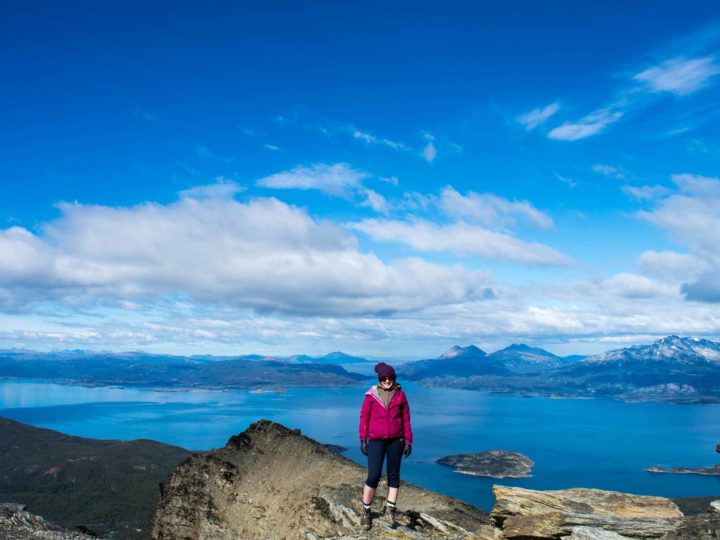
It’s worth going into a shop to try on boots before you buy them online to make sure you know your size; trust me, nothing’s worse than a pair of ill-fitting hiking boots. Try them on with the socks you’ll be wearing with them and you should get a good sense of whether they fit or not. It’s also important to break new boots in (i.e. wear them for a few short walks beforehand) before taking them with you to South America.
Salomon has been my go-to hiking boot for a long time:
- For her: REI | Backcountry | Amazon
- For him: REI | Backcountry | Amazon
They also do hiking shoes:
- For her: REI | Amazon
- For him: REI | Amazon
A pair of sandals or flip-flops : When you’re spending a day sightseeing or at the beach, you want something comfortable that’ll keep your feet cool and allow them to breathe. I travel with a sturdy pair of Teva sandals, as well as some flip-flops (made from sustainable materials) for lounging.
My Teva sandals are sooo versatile and I know they’re going to last forever.
A pair of trainers: If it’s colder or you just want something comfy on your feet that isn’t as heavy-going as a pair of hiking boots, trainers are ideal. Make sure they fit well and don’t rub.
Travel essentials for South America
Travel water filter: A water filter is an environmentally-sound investment for your trip and one that should save you money in the long run by cutting out spending on bottled water. I’ve used so many different types of water filters cross the years but my favorite has long been the Steripen Adventurer ( Amazon | REI ), which is the quickest and easiest method of filtering water that I’ve found: you simply insert the Steripen into a 0.5- or one-liter container of water and stir it for the required time. Hey presto: clean water. The batteries in the Steripen Adventurer should last up to 50 liters, although they are an unusual type of battery , so purchase a spare set before you leave. Alternatively, the Steripen UV Ultra is rechargeable, and won’t require batteries. Another alternative is the Grayl Geopress , which performed very well when I tested out half a dozen water filters for travel .
A water bottle: To use the Steripen Adventurer, you need a water bottle with an opening of at least 38mm (I have a Nalgene bottle ). The Steripen UV Ultra, however, is compatible with narrow-mouth bottles such as this one .
A dry bag: One thing I quickly learned while traveling in South America is that when it rains, it pours. And when it rains – and you don’t have confidence that your backpack is waterproof enough – or perhaps you’re on a river boat in the Andes and want somewhere to store your camera and passport in case you take an unexpected dip, you’ll want a dry bag. Seriously, these have saved me so much money in damaged valuables that they’re completely worth the investment. I love Sea to Summit dry bags because of their quality and durability: REI | Backcountry | Amazon
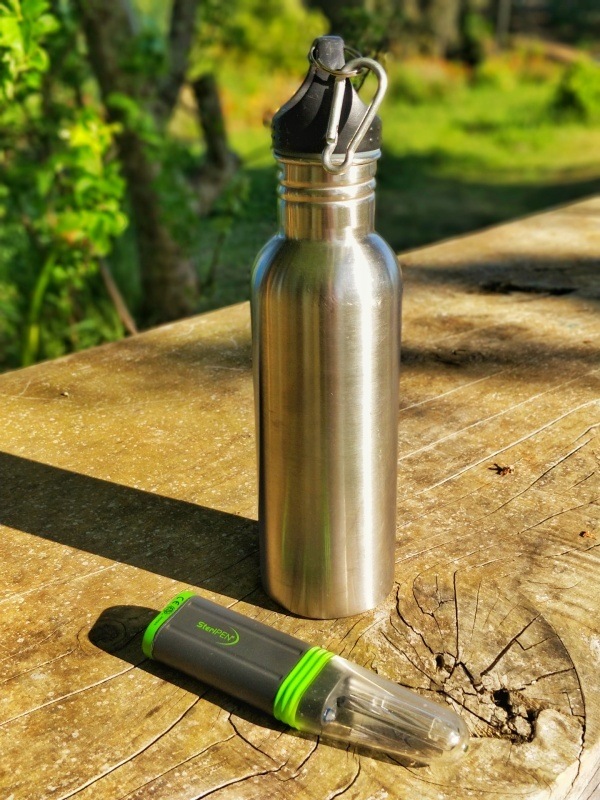
A compression bag: A bit like packing cubes, compression bags help you stuff and compress clothing so you can fit more into your bag. Just remember to roll rather than fold otherwise you’ll end up with some really creased clothing. Get one from REI | Backcountry | Amazon
Emergency cash: It’s always worth having some spare cash on you in case your wallet gets stolen. I tend to keep around $100 USD in different pockets across my backpacks in case of emergencies.
Travel documents: Keep a photocopy of your passport, travel insurance, and travel vaccinations (including yellow fever card) on your person, in case of emergency, as well as a digital copy somewhere safe (and preferably shared with someone back at home).
Travel insurance: I never travel without travel insurance and it’s the number one way you can prepare for your trip to South America.
Bank cards: Withdrawing money from ATMs is fairly straightforward in South America, although you can face a lot of bank charges if you don’t have an account that gives you free cash withdrawals abroad. I would highly recommend finding a company that allows you to do this. As I’m from the UK, I use a mixture of the Halifax Clarity credit card, which allows unlimited free cash withdrawals per month, as well as my trusty Monzo card (free withdrawals up to a maximum of £200 every 30 days).
Sewing kit: Being able to stitch up a tear in your favorite pair of trousers or even your backpack (something I’ve had to do on more than one occasion) is vital if you’re traveling for an extended period of time. Try this one .
Silk sleeping liner: Unless you’re planning on doing lots of hiking and camping, I would recommend leaving your sleeping bag at home and instead using a sleeping bag liner. You can hire sleeping bags from tour companies across South America, and when you do, you can protect yourself from whatever might be on them with this liner. I’ve also used mine religiously as an extra layer on overnight buses. I use this one .
Sleeping mask: If you need it to be dark when you sleep, a sleeping mask is a travel necessity, particularly as hotels and hostels can have curtains of varying quality. I love this one .
Microfibre travel towel: You want something lightweight that dries quickly, without feeling like it’s just moving the water around. I love my microfibre travel towel (you can also find them cheaper on REI ).
Ear plugs: I personally can’t stand them, but if you need silence to sleep then investing in a reusable pair of earplugs will ensure you get those Zs. Try these ones .
Travel pillow: Long overnight bus journeys can get tiresome and leave you with a crick in the neck if you don’t have anything to rest your head on. This pillow ( REI | Amazon ) from Sea to Summit is made from a silky, brushed polyester outer that’s soft to the touch and packs down extremely small.
Swiss Army penknife: Invaluable for making sandwiches on the road and handy if your accommodation doesn’t have a wine bottle opener! Check them out on REI | Amazon
Padlock: Many hostels and other accommodations have lockers and you’ll need your own sturdy padlock for using them. Check them out on Amazon
Safety: I’ve never used a money belt, mostly because they’ve always looked uncomfortable and hot to wear. Instead, I tend to have a small zippered bag with various internal pockets where I store my valuables and ensure I always keep my eye on them when I’m out and about. That said, I have heard of people having the straps of their bags chopped without them noticing, so this isn’t exactly a foolproof plan. If a money belt would make you feel better, try this one.
Door stopper: It might seem like the strangest thing to be included on this packing list for South America, but I always travel with a doorstop. I’ve stayed in some hotels and hostels where I struggled to lock my room door; as a solo female traveler, this is far from ideal. A plastic door stopper can be used on the internal side of the door to prevent it from being opened from outside, giving you peace of mind at night time. Try this one .
Scrubba: Doing laundry can be expensive and not necessarily work within your timeframes, if you’ve only got a day or two in a place. I’ve been using the Scrubba for years now and it’s the perfect way to wash your underwear, t-shirts, and even larger items such as trousers quickly and effectively. It doesn’t leave your clothes all soapy, like when you wash them in the sink, either.
Bite pen: If you’re traveling to a location where mosquitos are known to be, consider packing the bite away bite pen . It works by heating up to a set temperature within seconds – which, when applied to any mosquito bites, can remove any itchiness.
Toiletries for South America
Hanging toiletry bag: Easy to hang on the back of a bathroom door or suspend from a hook in your bedroom, a hanging toiletry bag is extremely functional and has been part of my backpack ever since I first started traveling to South America. This one from Sea to Summit has lasted me over seven years and counting.
Sunglasses: The sun’s strong in South America. Invest in polarising sunglasses with a UV filter to protect your eyes.
Sunscreen: It’s not only the beach where you can burn; altitude can see you burn even faster. Opt for a mineral-based sunscreen that’s safe to use in the ocean such as All Good Mineral .
Solid shampoo and conditioner: For weight-saving purposes, buy solid shampoo and conditioner bars, which should get you through a number of months without needing to buy any more. Ethique is a brand with lots of options for solid shampoo and conditioner , while Etsy has lots of brands selling them too.
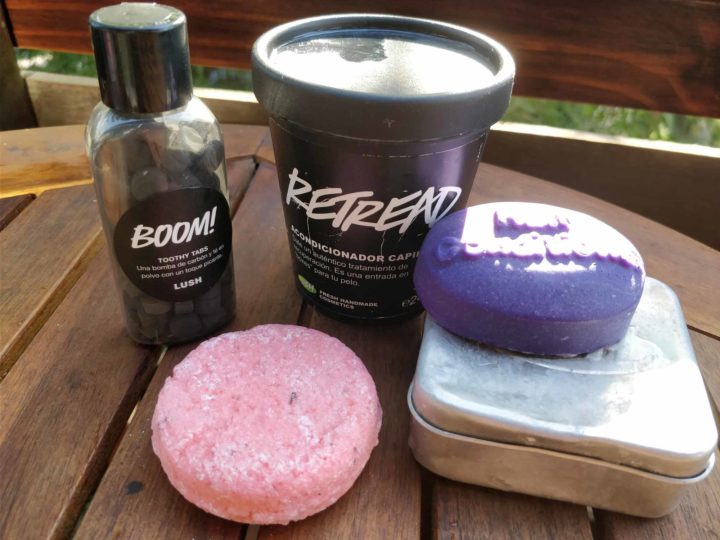
A lightweight, travel medical kit: For any cuts or more serious injuries, you’ll want a first aid kit on hand. Check them out on REI | Amazon or just put one together yourself.
Compeed plasters : Blisters are not something to take lightly as they can make hiking extremely uncomfortable. Pack some Compeed plasters before you go and use them preventatively if you know your shoes give you blisters or after a blister has formed to help it heal.
Face masks: These are no longer obligatory in shops, public transport, and other enclosed public spaces in countries across South America, so it’s up to you if you still want to use them.
Hand sanitizer: Keep a bottle on hand to use when there aren’t hand washing facilities available.
Malaria tablets: Check with your doctor as to whether antimalarials are required for your trip. If you’re heading into the Amazon, it’s likely you’ll need them.
Motion sickness tablets: Bus journeys into the Andes mountains can leave even the most robust travelers feeling a bit sick to the stomach. Motion sickness tablets can make you feel better.
Anti-diarrhea pills: It’s very likely you’ll end up facing a bad stomach at some point during your trip because of poor food preparation hygiene and water that isn’t safe to drink. While avoiding salad (because it may have been washed in contaminated water) and ice in restaurants is a good ploy, you’ll want some anti-diarrhea pills for when the inevitable happens.
Vaccinations: Jabs such as yellow fever, hepatitis A and B, typhoid, and rabies (the latter if you plan on heading to remote areas) are necessary for travel to South America. Consult your doctor a few months in advance of your trip, as some of these vaccinations require more than one dose.
Insect repellent: The mosquitos in South America enjoy sampling new blood, so make sure you’ve got a strong insect repellent that you can use in hot, tropical destinations. I avoid DEET-based repellent, which can damage your clothing and even melt the plastic. This one from Sawyer ( REI | Amazon ) doesn’t have DEET but still works.
Menstrual cup: I’ve used mine for the past four years and it’s incredible the amount of money – and plastic waste – that it has saved. Tampons can also be difficult to find in South America (or at least the big brands that you’re probably accustomed to at home). Bring a couple of emergency tampons for treks or situations where you don’t have access to running water for cleaning your menstrual cup. Try out this menstrual cup .
Hairbrush: These can be surprisingly heavy, so buy a small one that isn’t.
Baby wipes: Great for multi-day treks where showers aren’t a possibility. Do the environment a favor and buy some biodegradable ones. You can buy these in South America, too.
Face wash: Nivea products are easy to find across South America; other brands not so much, so bring what you need.
Moisturizer: As above.
Makeup: Foundation and concealer can be difficult to find for pale skin; otherwise you can buy all the major brands in cities across the continent.
Technology for South America
A eSIM: Rather than buy a new SIM in each country, I’m now using eSIMs which have changed my travel life! You can download them in a second, add credit in another second, and I’ve found them useful in multiple countries across the globe in the past few months. I recommend Airalo .
Camera: I travel with my Sony A7iii , a mid-level DSLR, with a great, all-around travel lens, the 24mm to 105mm Sony lens . However, unless you’re very keen on photography, sticking to a classic point-and-shoot camera is likely a better option, particularly as they draw less interest when you’re out and about and weigh considerably less. My dad swears by his Canon Powershot . Not not only is the image quality incredible but it’s compact and very easy to use. They are often very good deals on buying this camera, particularly when Canon have just brought out a newer version.
SD cards: Make sure you’ve got plenty of space for capturing photographs by bringing a couple of spare SD cards.
Kindle: It can be difficult to find English-language books across South America. While there are always random books for exchange at hostels across the continent, if you want a bit more control over what you read (or want to buy a guidebook, such as my Moon Chile , before you go), investing in a Kindle Paperwhite is a great idea. Remember to charge your Kindle regularly!
Power bank: Ensure your phone always has charge, even after a long bus journey or a few days away from civilization in the jungle. Anker is a great brand for reliable and inexpensive power banks ( Amazon ), while REI has a power bank that can be hooked up with solar panels if you’re planning on going far off-grid.
Rapid charging USB cable for your phone: Nothing beats having a slow-charging USB cable. I recently bought this one without realizing quite how long it was. It wound up as a fortunate mistake as it’s perfect for a hotel or hostel where the plug socket is in an awkward place!
Universal adaptor plug: Plug sockets vary a huge amount across South America. To avoid bringing the wrong adapter, it’s best to just use a universal adaptor so that you’ll never be left without access to electricity. Check them out on Amazon
Headphones: A pair of Bluetooth headphones can help you listen to music on bus journeys without needing to have your phone within reach of anyone else. I use these ones , but you might prefer less obvious in-ear headphones instead (these aren’t great when you’re trying to snooze on the plane!).
Laptop: Realistically, I would advise that you don’t bring a laptop unless you’re working on the road. I’ve found that the more valuables I take, the more stressful traveling becomes because of the fear of potentially getting robbed. It also adds to the weight of your pack.
Headlamp: Great for reading in bed or for any camping trips you do. Bring a torch or check out Black Diamond headlamps ( REI | Backcountry | Black Diamond )
Camping equipment for South America
I often get emails from readers asking whether they should bring their own camping equipment or buy (or rent) gear when they get to South America. The answer I always give is: it depends .
If you’re planning a camping-heavy trip to Patagonia and expect to spend a decent part of your trip staying in a tent – whether on multi-day hikes or to save money on accommodation – then it’s definitely worthwhile bringing your own equipment.
Not only can it be expensive to rent for extended periods of time, but you’re hiring gear that has probably seen more than its fair share of wear and tear and might not be in the best condition (or the most waterproof).
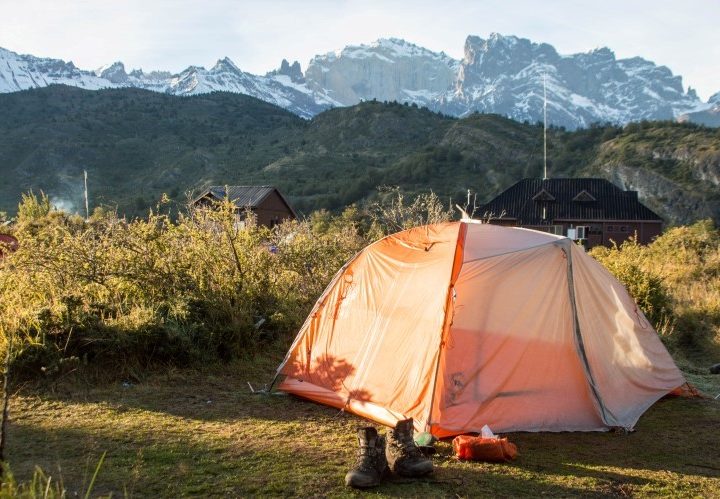
Buying camping equipment in South America is also something I don’t recommend. Gear is often significantly more expensive than what you’d find back at home, and, while there are affordable local brands, the quality, however, is generally pretty terrible.
If you’re planning a trip of two halves, with a stint camping and hiking and another leg without, you can always post your camping gear home, sell it to other travelers (something possible using Facebook groups or asking around at your hotel or hostel), or donate it.
Tent: Tents range from affordable to extremely expensive and everything in between. If you’re planning on doing multi-day hikes, I would strongly recommend investing in a lightweight tent; your back will very much thank you if you do.
When I hiked the Circuit in Torres del Paine National Park , I took the Big Agnes Copper Spur HV UL2 (and you can read my full review of the Big Agnes Copper Spur HV UL for more information). It is an expensive tent, but I was thoroughly impressed with how light and sturdy it was. More affordable options from North Face are also recommended.
- Try the Big Agnes HV UL2 ( REI | Amazon ) or the cheaper North Face Stormbreak 2 ( REI | Amazon ) or the roomier North Face Stormbreak 3 ( REI )
Sleeping bag: Warm and lightweight sleeping bags do come at a premium, however, it’s another area where I think it’s worth investing. Nights can get cold on the Inca Trail , in Patagonia or any other Andes region.
I recommend a good three-season sleeping bag if you’ll be camping at altitude or in Patagonia and the Nemo Disco 15 sleeping bag is a great choice. It’s filled with down and appropriate for three-season camping, meaning it’s comfortable down to 25 degrees Fahrenheit (-4°C) and a good choice for traveling in Patagonia during spring, summer, and even the shoulder seasons (September through November, and March through May) when the night time temperatures start to fall.
It also only weighs 2.6lbs (1.21g) and packs down small enough to fit in the bottom section of my Berghaus rucksack. It’s available for men and women and is a great investment for both camping in Patagonia and other parts of the world.
- For her: the Nemo Disco 15 ( REI | Amazon )
- For him: the Nemo Disco 15 ( REI | Amazon )
Sleeping pad: Small, comfortable, and durable sleeping pads are really hard to find, but will ensure you can get some sleep when you’re camping. You can get a basic, thin foam one for very cheaply. Alternatively, a bigger investment is in an inflatable pad – that gets you off the ground a little, keeping you warmer and more comfortable during the night.
- Get a cheap foam pad ( REI | Backcountry | Amazon ) or a more comfortable Therm-a-rest Prolite (buy it on REI | Backcountry | Amazon ).
Cooking utensils: When it comes to pots and pans, ultimately what you want is something lightweight, versatile and that can be cleaned easily. You’ll also want a bowl, a durable, plastic or metal mug, and a titanium spork (much sturdier than plastic).
- A set of lightweight pots and pans: Check out the MSR cooking pots Backcountry | Amazon
- Collapsible bowl: Check out Sea to Summit bowls REI | Backcountry | Amazon
- Camping mug: Check them out on REI | Amazon
- Spork: Check them out on REI | Backcountry | Amazon
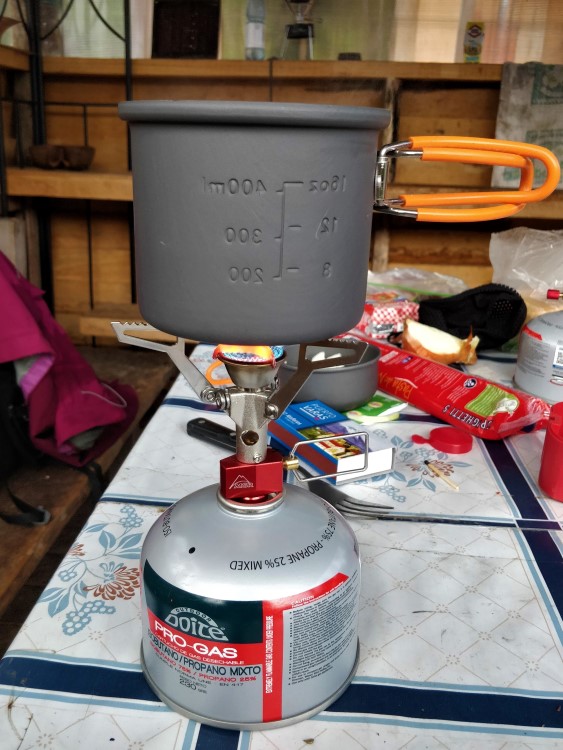
Cooking stove: A lightweight and affordable option is the MSR PocketRocket 2 , which is smaller than a lot of alternatives (which is great news when backpacking!) but does need you to buy gas canisters (which you should be able to find in towns and cities near hiking destinations).
- Check out the MSR PocketRocket 2 here ( REI | Backcountry | Amazon )
Monday 8th of January 2024
Thank you so much for this list! Leaving for 2 and a half months next week and this was an enormous help for me!
Steph Dyson
Sunday 14th of January 2024
Enjoy your trip Yanick!
Friday 1st of September 2023
Thank you for ths great article! I'll be traveling to Columbia this November, to work and to travel all around and do some multiday hiking, too. I just can't decide what type of backpack to take. I can't take both a travel backpack AND a hiking backpack - can I? How do other people resolve this issue? I hope this will be the most serious problem I will face during this trip :))))
Wednesday 20th of September 2023
Hi Bashak, I take a small backpack for hiking and a large backpack for my other stuff. You do look a bit odd but it does help! Steph
Sunday 14th of May 2023
Thank you so much for this list, very informative! I am still deciding if I should take a wheeled suitcase or a backpack for my trip to Argentina, Uruguay and Brazil. I will be traveling by bus a lot and my main concern is leaving my suitcase in the hold of the bus. Do you think I would be able to (or allowed to) take a 50L backpack with me on the bus? Then it will be with me at all times. Thank you!
Monday 5th of June 2023
Hi Esther, unless it can fit in the overhead compartments (which it likely won't) or you want it under your feet all the time, then you will need to put it in the hold. I've never had any issue with leaving my bag in the hold and I've done dozens of buses. Steph
Saturday 22nd of April 2023
Thank you so much for this very detailed list. I am about to travel to South America for 3/4 months this coming September and I found your article very informative. Thank you :)
Wednesday 26th of April 2023
Thanks Charlotte!
Friday 14th of April 2023
I dont think i have got half of what you recommend in my 65l bag & its jam packed & i feel i have got to much ? Dont know what im doing wrong 🙈
Hi Mike, if you're travelling with a tent and camping equipment then you will definitely struggle - I had to attach my tent to the outside of my rucksack. Otherwise, compression sacks are key! Steph
- Baby Travel
- Inspirational Stories
- Teaching Abroad
- Travel Guide
- Randy Pulayya
- Shauna Vo Pulayya

Apr 26 Traveling with a Baby to South America — for 3 Months!? [Itinerary]
When we were pregnant last year, a lot of people said, “Your lives are going to change. You won’t be able to do much and you won’t be able to travel like you usually do.”
Yes, of course our lives are going to change. We were ready for that change. But having a baby didn’t stop us from traveling. We always say, Samindra came into our lives, not the other way around. She has to conform to our lifestyle. Of course, we always cater toward her needs. But we want to teach her that travel never ends. It’s the best learning tool. Travel opens your eyes to the world and gives you a different perspective on life.
Pre Baby Travel
When I was nine weeks pregnant, we went to South Africa, which was an amazing trip. We spent time in Cape Town, the wine region, Johannesburg and Kruger National Park. Our friends Mark and Debby took us to Kruger, also known as “the bush” and we saw so many wild animals. We’ll go into more details about this trip in another post.
But the point is, that lives do change when you have a baby. But your lifestyle doesn’t have to change. We are inspired by the world and want to create the life we want around travel.
Putting Roots Down = Saving Money
We lived in Arlington, Virginia, right outside of Washington, DC at the time. We lived in a very convenient area where the metro was just a block away and it only took 10 minutes to drive to the Smithsonian National Mall. (We also paid a pretty penny for that convenience.) But it allowed us to continue exploring where we lived.
Even though the Washington, DC metro area is one of the most expensive places to live in the United States, we were able to continue saving money. Building up our savings is one of the best things we could do together. It gives you so much flexibility.
When we got pregnant, we started thinking about where we want to be after the baby is born. How much longer do we want to stay in the DC area? We didn’t have any family in DC or the surrounding region. The closest family was in New York. Since we lived in New York and Arkansas after moving back to the States, we thought we should give Orlando, Florida a try, which is where Randy’s mother lives.

Traveling with a baby and hiking in El Chalten, Argentina in Patagonia.
Saving Money = Flexibility and Travel
We thought, since we’re moving and most likely quitting our jobs, we should take some time off and take a trip somewhere. We don’t have any real financial obligations here, just rent, utility bills, cell phone bill and car insurance. But since we were moving, most of those bills would be nonexistent.
We considered Europe because most of those countries are pretty family-oriented. But I had never been to South America and Randy has only been to a couple of countries there. So we decided to go to South America and started researching “traveling with a baby in South America.” We found very little resources. Lots of people say, “Don’t do it.” But some have traveled with a baby. We came across a website/blog, which had some tips for traveling in Argentina with a baby. Interestingly, Missie from Grey Eye Studio was also from Fort Smith, Arkansas. We reached out to learn more about traveling with a baby in Argentina and she was very helpful. Throughout our travels, we will give you tons of tips on how to travel with a baby. Think of our blog as a Guide on How to Travel with a Baby. Subscribe to our newsletter to get more tips and see how it IS possible to travel with a baby as new parents.
I wanted to make sure Samindra was six months old before we left so that she had all of her necessary immunizations. We decided on three months because Samindra would be nine months by the time we got back, just in time for her nine-month appointment. Plus we wanted to come back and get settled to start looking for work (as is the “plan”).
So, the trip planning began and we booked a one-way flight to Buenos Aires and another one-way flight back to Orlando with miles through American Airlines.
Even without a baby, planning a trip is quite an undertaking. The first major trip I planned was with my friends I sold books with. We backpacked Europe for a month and visited 10 countries! Normally, we would take buses everywhere and sometimes those would be very long bus rides. Now, with a baby, we have to think about — is this the best for her?
Where to Go and How to Start Planning Your Itinerary
Since we decided on three months, we really wanted to visit as many countries as possible. Now, traveling for three months with a baby will definitely be different than traveling solo. We weren’t going to take buses everywhere and we weren’t planning on staying on hostels. But some of that changed during our planning.
We thought about which countries we wanted to visit. And we wanted to start with “easy” countries. Argentina is a very baby-friendly country and it’s also stable. So we started there. It was a great experience. We wanted to visit Patagonia, but wanted to make sure it wasn’t too cold. South America’s seasons are opposite of ours. We were traveling from April to June, so it would be their Autumn and getting into winter. Patagonia was our first stop. And we made our way up Argentina. And now we’re making our way up the continent of South America.
We used the Lonely Planet book, “South America on a Shoestring” to help us plan out how much time to spend in each place and where are the main places to visit. It was a great resource to help plan the itinerary.
We’ve been traveling for about three and a half weeks now and have just finished booking flights and solidifying the rest of our itinerary. Below is our complete itinerary. Follow us on our journey by subscribing to our newsletter , follow our hashtag #travelneverendsco on Instagram and Facebook . We’re thrilled to be sharing our stories and baby travel tips with you. We hope you enjoy!
Our Three Month South America Itinerary
Argentina March 27 - Buenos Aires April 1 - Ushuaia (3.5 hour flight) April 5 - Punta Arenas (Chile) (12 hour bus ride) April 8 - Puerto Natales (Chile) (3 hour bus ride) April 10 - El Calafate (6 hour bus ride) April 12 - El Chalten (rented a car, 2-3.5 hours by car) April 14 - Mendoza (3 hours to BA, 1.5 hour flight to Mendoza) April 19 - Buenos Aires (1.5 hour flight)

Bus ride from Colonia to Montevideo, Uruguay
Uruguay April 20 Colonia del Sacramento (1 hour ferry) April 23 Montevideo (3 hour bus ride)
Paraguay April 26 - Asuncion, Paraguay by plane April 30 - Iguazu Falls by bus
Chile May 4 - Santiago, Chile by plane May 9-12 La Serena, Chile by plane
Bolivia May 13 - Santa Cruz, Bolivia by plane May 17 - Sucre, Bolivia by plane May 23 - La Paz by plane May 24 - Uyuni by plane May 25 - La Paz by plane May 29 Copacabana (Lake Titicaca) by bus
Peru June 1 Puno by bus June 5 Arequipa by bus June 9 Cusco by plane June 13 Lima by plane
Ecuador June 17 Guayaquil by plane June 17 Guayaquil to Cuenca by bus June 21 Cuenca to Guayaquil by bus June 22 Galapagos Islands by plane June 27 Guayaquil to Orlando
![3 month trip south america Top 8 Things to Do in Patagonia with a Baby [2 Week Itinerary]](https://images.squarespace-cdn.com/content/v1/5a31f0542aeba5e20e2830a1/1525313433482-UQ0HQ7L7GBNC4JPNI3L4/Mount+Fitz+Roy.jpg)
May 2 Top 8 Things to Do in Patagonia with a Baby [2 Week Itinerary]

Apr 17 Traveling Around the World, One Country at a Time
Related posts.

Jul 1 Exploring Mendoza, Argentina Wine Country with a Baby

Oct 15 5 Things to Think About When Traveling Abroad with a Baby

50 Must-Experience Adventures In South America

You Won’t Want to Miss August’s Rare Super Blue Moon. Here’s How and When You Can See It
O n the heels of the exciting Perseid meteor shower, the public will be graced with another thrilling night sky moment.
On Monday evening, you’ll have more of a reason than usual to gaze up at the sky, as August’s rare super blue moon will take center stage for the pleasure of photographers, astronomers, and casual viewers.
Here's what to know about the celestial event:
What is a super blue moon?
A super blue moon is simultaneously a full moon, blue moon, and a super moon.
The first of these three is pretty well known to us: a phase in the lunar cycle in which the Earth, sun, and moon are aligned with the Earth in the middle, so the moon is fully illuminated on Earth.
A blue moon is not about the color of the moon, but instead the frequency of the full moon. There are two definitions of a blue moon—the first describes when there are two full moons in a single month. Since the moon’s cycle is 29.5 days, and our average calendar month is 30-31 days, it is incredibly rare to have two full moons in one single month, but it is possible, happening every two to three years, according to NASA. Around 3% of full moons are blue moons.
There are also seasonal blue moons, in which a calendar season contains four full moons instead of the usual three, and the blue moon is the third of the four full moons. August’s full moon is of this variety. The next seasonal blue moon is expected in May 2027.
The super moon part refers to the moon's orbit, which brings it slightly closer to Earth this month, making it appear bigger and brighter. This occurs since the moon’s orbit around the Earth is elliptical instead of just a circle, and thus there are times when the moon is further and closer to our planet.
During the moon’s closest approach to Earth, it can appear approximately 14% larger and shine 30% brighter than when at its farthest point in the orbit. This will be the first of four consecutive super moons this year, and it is less rare than the blue moon, occurring three or four times a year.
August’s full moon is often called the Sturgeon moon , dubbed by the Algonquin Native American tribe living in the Great Lakes area and throughout what is now known as the northeastern United States. They named the full moon after sturgeons—a type of large fish—which were most plentiful in the lakes during the month of August.
How and when can you see August’s super blue moon?
The full moon's peak will occur on Monday afternoon, according to NASA , at 2:26 p.m. EDT and 11:26 a.m. PT. It will appear for three days, from Sunday morning until early Wednesday morning.
Though the moon will be visible to the naked eye, Lowell Observatory in Flagstaff, Ariz., says that telescope and binocular viewers will be able to see even more detail on the lunar surface than usual.
How rare is a super blue moon?
According to NASA, the combination of the super moon and the blue moon is rare, and the time between their occurrences is quite “irregular” and could be as much as 20 years, with 10 years between the average.
Though we had a super blue moon somewhat recently, in August 2023, NASA predicts the next super blue moons will occur in January and March 2037. All the more reason to make sure you don’t miss 2024’s offering.
More Must-Reads from TIME
- Breaking Down the 2024 Election Calendar
- Heman Bekele Is TIME’s 2024 Kid of the Year
- The Reintroduction of Kamala Harris
- A Battle Over Fertility Law in China
- For the Love of Savoring Sandwiches : Column
- The 1 Heart-Health Habit You Should Start When You’re Young
- Cuddling Might Help You Get Better Sleep
- The 50 Best Romance Novels to Read Right Now
Contact us at [email protected]
2.9 billion records, including Social Security numbers, stolen in data hack: What to know

An enormous amount of sensitive information including Social Security numbers for millions of people could be in the hands of a hacking group after a data breach and may have been released on an online marketplace, The Los Angeles Times reported this week.
The hacking group USDoD claimed it had allegedly stolen personal records of 2.9 billion people from National Public Data, according to a class-action lawsuit filed in U.S. District Court in Fort Lauderdale, Florida, reported by Bloomberg Law. The breach was believed to have happened in or around April, according to the lawsuit.
Here's what to know about the alleged data breach.
Social security hack: National Public Data confirms massive data breach included Social Security numbers
What information is included in the data breach?
The class-action law firm Schubert, Jonckheer & Kolbe said in a news release that the stolen file includes 277.1 gigabytes of data , and includes names, address histories, relatives and Social Security numbers dating back at least three decades.
According to a post from a cybersecurity expert on X, formerly Twitter, USDoD claims to be selling the 2.9 billion records for citizens of the U.S., U.K. and Canada on the dark web for $3.5 million.
Since the information was posted for sale in April, others have released different copies of the data, according to the cybersecurity and technology news site Bleeping Computer.
A hacker known as " Fenice " leaked the most complete version of the data for free on a forum in August, Bleeping Computer reported.
The news you need to start your day smart. Sign up for USA TODAY's Daily Briefing newsletter.
2025 COLA: Estimate dips with inflation, but high daily expenses still burn seniors
What is National Public Data?
National Public Data is a Florida-based background check company operated by Jerico Pictures, Inc. USA TODAY has reached out to National Public Data for comment.
The company has not publicly confirmed a data breach, but The Los Angeles Times reported that it has been telling people who contacted via email that "we are aware of certain third-party claims about consumer data and are investigating these issues."
What to do if you suspect your information has been stolen
If you believe your information has been stolen or has appeared on the dark web, there are a few steps you can take to prevent fraud or identity theft.
Money.com recommends taking the following steps:
- Make sure your antivirus is up to date and perform security scans on all your devices. If you find malware, most antivirus programs should be able to remove it, but in some cases you may need professional help.
- Update your passwords for bank accounts, email accounts and other services you use, and make sure they are strong and different for every account. Include uppercase and lowercase letters, numbers and punctuation marks, and never use personal information that a hacker could guess.
- Use multifactor authentication for any accounts or services that offer it to ensure you are the person logging in.
- Check your credit report, and report any unauthorized use of of your credit cards. If you notice any suspicious activity, you can ask credit bureaus to freeze your credit.
- Be careful with your email and social media accounts, and beware of phishing, an attempt to get your personal information by misrepresenting who a message or email is from.
The mpox strain spreading now is different from the one in 2022: Here's what to know
The World Health Organization’s decision to declare mpox a global public health emergency for the second time in two years may seem like déjà vu — but there are key differences between the strain that’s causing international concern now and the one that spread in 2022.
Mpox, formerly known as monkeypox, is a viral infection characterized by painful lesions. It’s spread by direct contact with an infected person, animal or contaminated items like clothing or bedding.
The virus is classified into two distinct groups: clade I and clade II.
Clade II was responsible for the 2022 outbreak, which has led to around 100,000 cases worldwide .
But now, a version of clade I has spread internationally. The outbreak started in January 2023 in the Democratic Republic of Congo, and has since reached 12 other countries in the region.
On Thursday, Sweden confirmed the first known infection of clade I outside Africa , though Swedish health officials said the person was infected while spending time in Africa. Health authorities in Pakistan also confirmed a case of mpox on Friday but have not identified the strain yet.
Clade I is more transmissible than clade II and capable of being more severe, so infectious disease experts are concerned about further international spread.
“We should have learned a lesson from 2022 that an infection anywhere is potentially an infection everywhere,” said Anne Rimoin, an epidemiology professor at the University of California, Los Angeles Fielding School of Public Health.
How does this version of mpox spread?
Mpox has historically spread in a few ways. The first is through close, personal contact with an infected person, such as skin-to-skin contact with rashes or with saliva or mucus. The second is via contact with contaminated materials. And the third is contact with infected animals: hunting, trapping or cooking them, touching sick rodents or getting bitten or scratched.
In 2022, the version of clade II that spread globally, dubbed clade IIb, was passed primarily through sexual contact, particularly among men who have sex with men.
In the Democratic Republic of Congo recently, clade Ib has also been spreading through sexual contact among female sex workers and men who have sex with men. Research that hasn’t yet been published or peer reviewed linked an outbreak in an eastern mining town in Congo to professional sex work in bars.
But that’s not the only way the virus is being transmitted. Dr. Stuart Isaacs, an associate professor of medicine at the University of Pennsylvania, said much of the spread of clade I could be due to exposure to animals and transmission within households, but limited surveillance in the regions where the virus is make it difficult to know for sure.
Isaacs said there’s early evidence that clade Ib has certain “properties that are allowing it to spread more readily person to person.”
How severe are the recent cases?
In the past, outbreaks of clade I have been deadlier than clade 2, killing up to 10% of people who got sick . But more recent outbreaks have had lower death rates. Out of an estimated 22,000 cases in this outbreak in Congo , more than 1,200 people have died — which puts the fatality rate at just above 5%.
By comparison, clade II outbreaks in Africa have generally had a mortality rate of around 1%, and just 0.2% of cases linked to the 2022 global outbreak were fatal.
Rimoin said the disease’s severity “can have less to do with the actual clade and more to do with route of transmission, the immune system of the individual, the source of the infection.”
The threat in the U.S. could be milder than in Africa, according to Marc Siegel, an associate professor of medicine at the George Washington School of Medicine and Health Sciences.
“The underlying health conditions of the population in the DRC are probably contributing to the current case fatality rate,” he said, using the acronym for the Democratic Republic of Congo. “With less malnutrition and better access to health care resources, I would imagine that the case fatality rate will not be as high as we’re seeing in the DRC.”
Vaccines for mpox are also widely available in the U.S., following a major rollout effort in 2022. Two doses of the mpox vaccine or a previous clade II infection should protect against severe illness from clade I, the Department of Health and Human Service said Wednesday.
Do mpox symptoms differ between the clades?
Symptoms of the two mpox clades can be difficult to distinguish from each other.
The illness generally starts with a rash that progresses to small bumps on the skin, followed by blisters that fill with whitish fluid — a hallmark of the disease — and eventually scab over. People may also experience a fever, headache, muscle aches, back pain, low energy and swollen lymph nodes.
These symptoms often disappear on their own within a few weeks. But in severe cases, people may develop larger, more widespread lesions, secondary bacterial infections, pneumonia, heart inflammation or swelling of the brain. Immunocompromised people may develop atypical symptoms and have a greater risk of hospitalization and death.
Historically, mpox lesions have tended to appear on the face, chest, palms of the hands and the soles of the feet. But during the 2022 outbreak, people frequently developed lesions around the genital and anal region or inside the mouth and throat, presumably because of how the virus was spreading at the time . The lesions were also fewer in number and less pronounced overall.
Some cases of this nature have also been detected in the current outbreak in Congo.
“There is talk that there are more people that have lesions around the genitals this time around than previous clade I outbreaks,” said Amira Albert Roess, a professor of global health and epidemiology at George Mason University. “It’s going to take us some time to really understand what may be going on here.”
Aria Bendix is the breaking health reporter for NBC News Digital.

IMAGES
COMMENTS
3 months is a great amount of time to travel around South America and it also gives you lots of flexibility. You can go with a month in 3 countries or spread your time over 5-6 countries to see as much as possible. Luckily for you, we've outlined both options and alternatives below so you can choose the best 3-month South America Itinerary for you!
Our South America travel budget: £3500/£4000. Our budget for this South America travel itinerary was roughly £3500 for 3 months travel in South America including flights to and from the UK and a couple of internal flights (Brazil to Peru, Peru to Galapagos Islands). It doesn't include the cost of travel insurance, gear or vaccinations.
Welcome to our 3 month South America backpacking route. It is no secret that South America boasts one of the world's vastest continents, and in our opinion, is one of the best for any type of adventure travel.
Even with this South America travel itinerary covering 1-3 months, you will still only be scratching the surface.
This best 3 month South America itinerary includes highlights in Peru, Bolivia, Chile & Colombia. Top tips for cities, villages and adventure.
So, I haven't written ANY blog posts during 2018 yet, but there's a good reason for it! I've spent the last 3 months exploring South America - yay! Now I'm home and ready to upload SO much content on this glorious continent - first things first, where did I go?! The Timing Let me start by saying that no amount of time in South America is enough. The likes of Brazil and Argentina for example ...
South America is one of the most amazing continents in the world, but if you're thinking about going, you'll need to do some planning. Budget, paperwork, when to go, what to pack, vaccinations, which countries to visit, and how to get around… we've got all this covered This is Kiwi.com 's guide to South America, and it's in two parts. Firstly, we'll look at some of the most ...
Here's how I spent three months in South America without bumping up against yellow fever infection risks. Below is the list of cities/regions I visited, time spent there, and some of my favorite highlights.
Whether you are travelling for one week or three months, we have the most epic South America itineraries for you!
9 Epic South America Backpacking Routes: The Best Itineraries and Ultimate Travel Guide Backpacking South America is an incredible experience that will leave you with lasting memories and a yearning for more. Planning the adventure of wandering such a vast continent can seem intimidating, but this article will demystify how the adventure can be simple yet more fulfilling than any travel ...
Planning your South America Itinerary South America has long been on my bucket list and therefore 9 months ago I found myself putting together my ultimate South America itinerary - determined to cram as many life-changing experiences into a 10 week trip as possible.
Here, we present to you three popular itineraries through South America that take at least 3-6 months to complete. This could easily be extended to a year or more if you fit more places in between. If you're travelling for a shorter amount of time, you can still use these itineraries to get inspiration and maybe break it up into shorter backpacking trips. Without further ado…
The first time I travelled to South America I spend six months travelling around and even then I felt like there was a lot left to see. That said, if time and money isn't so much of an issue then with three months you can get a really good taste of most of the best destinations in South America without feeling too rushed.
This guide to backpacking in South America covers everything you need to know about traveling in South America. Written from my nine-month South America travel.
Money Spent: £130. My friend Danielle from the travel blog Escaping Essex visited South America for 3 months more recently than me on a 'flashpackers' budget. For more up to date costs and a great 3 month in South America itinerary, make sure you check out her posts: A Flashpacker's budget for 3 months in South America.
Backpacking South America Travel Guide (TRAVEL TIPS • 2024) So, you want to know how to travel South America, eh? Well, you're in the right place! Backpacking through South America is like learning to ride a bike without the training wheels.
For a 1-2 month South America backpacking trip, consider sticking to one country or region. Eg. Patagonia in Argentina/Chile; the Southeast of Brazil; the Andean countries Bolivia and Peru. Staying in a region will offer continuity in the local culture, allowing you a better understanding thereof.
Given the variety, packing for 3 months in South America can be very daunting, but do not fear, it's super easy! Considering this was my first time packing for a trip longer than 3 months, I think I did pretty damn well!
Here are 4 expertly curated three-week backpacking itineraries for South America - with routes to suit every traveller. Number 3 is my favorite!
Vaccinations: Jabs such as yellow fever, hepatitis A and B, typhoid, and rabies (the latter if you plan on heading to remote areas) are necessary for travel to South America. Consult your doctor a few months in advance of your trip, as some of these vaccinations require more than one dose.
Traveling with a Baby to South America — for 3 Months!? [Itinerary] — Travel Never Ends.
I have 3 months from start of December to late February. I'm set on Peru and Brazil, with my trip definitely concluding in Rio after Carnival. However, besides this I have no idea where to visit. A preliminary itinerary I made is this: Colombia (3 weeks): - Medellin, Cartagena, Bogota, Valle de Cocona Peru (1 month)
Help deciding locations in South America for a 3 week/1 month trip. Hello, First off i am a 26 year old Male from Scotland - British Citzenship. My interests are: Hiking, climbing (though very hard to do or plan on a solo trip), City Sightseeing, Improving my very beginner Spanish, trying the different foods across SA and Anything else thats ...
50 unmissable sights, activities and experiences from across the South American continent.
Fall is shaping up to be markedly warmer than usual in much of the United States, according to an outlook released Thursday by The Weather Company and Atmospheric G2.
They named the full moon after sturgeons—a type of large fish—which were most plentiful in the lakes during the month of August. How and when can you see August's super blue moon?
Prince Harry's chief of staff has left his role after just three months after mutually agreeing he was not the right fit. Josh Kettler took up the senior post working with Prince Harry in May ...
The World Health Organization on Wednesday declared the ongoing mpox outbreak in Africa a global health emergency.
The hacking group USDoD claimed it had stolen personal records, including Social Security info, of 2.9 billion people from National Public Data.
The strain of mpox causing international concern is different than the one that spread in 2022. Here's what to know about the virus' symptoms and how it spreads.